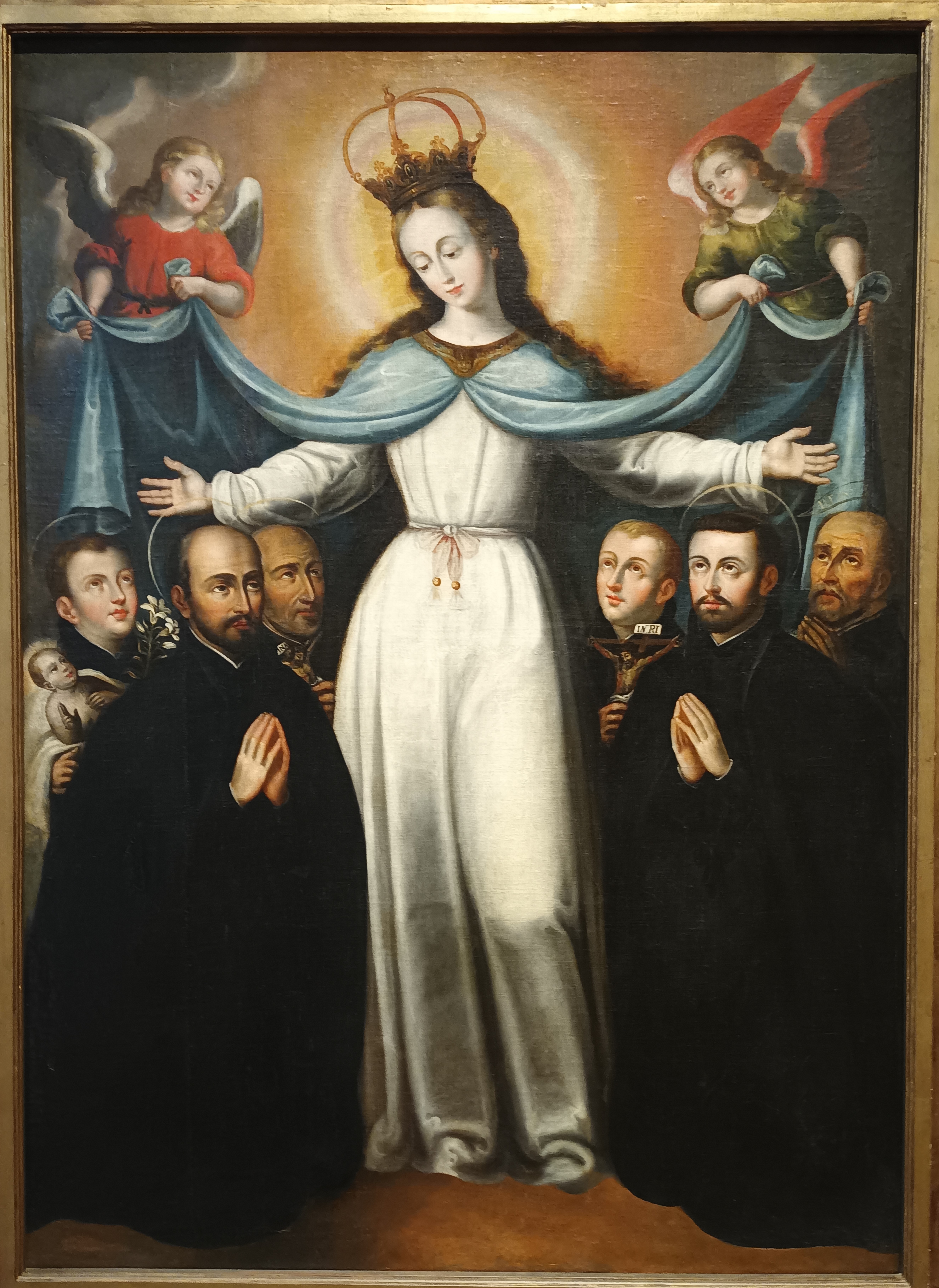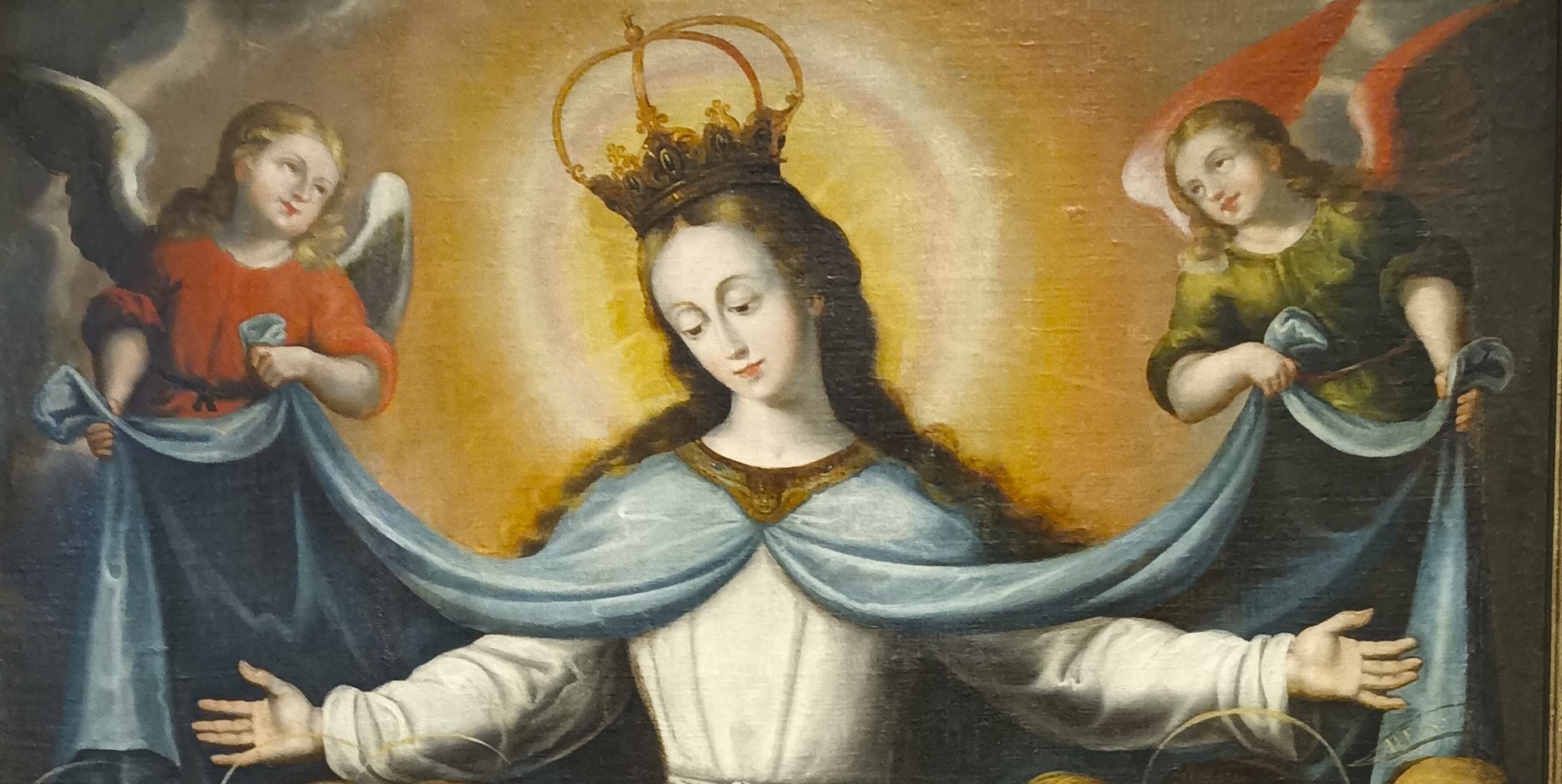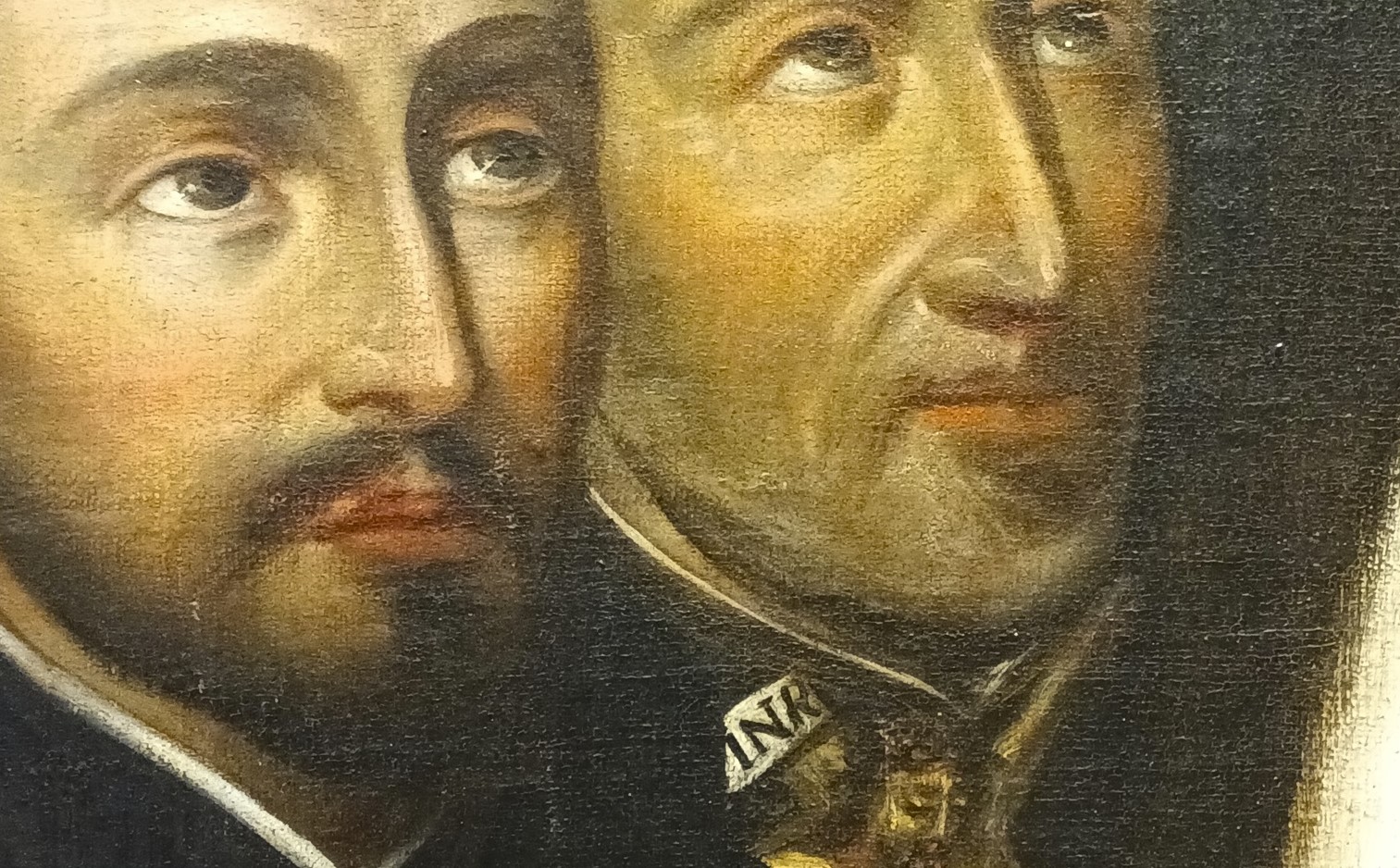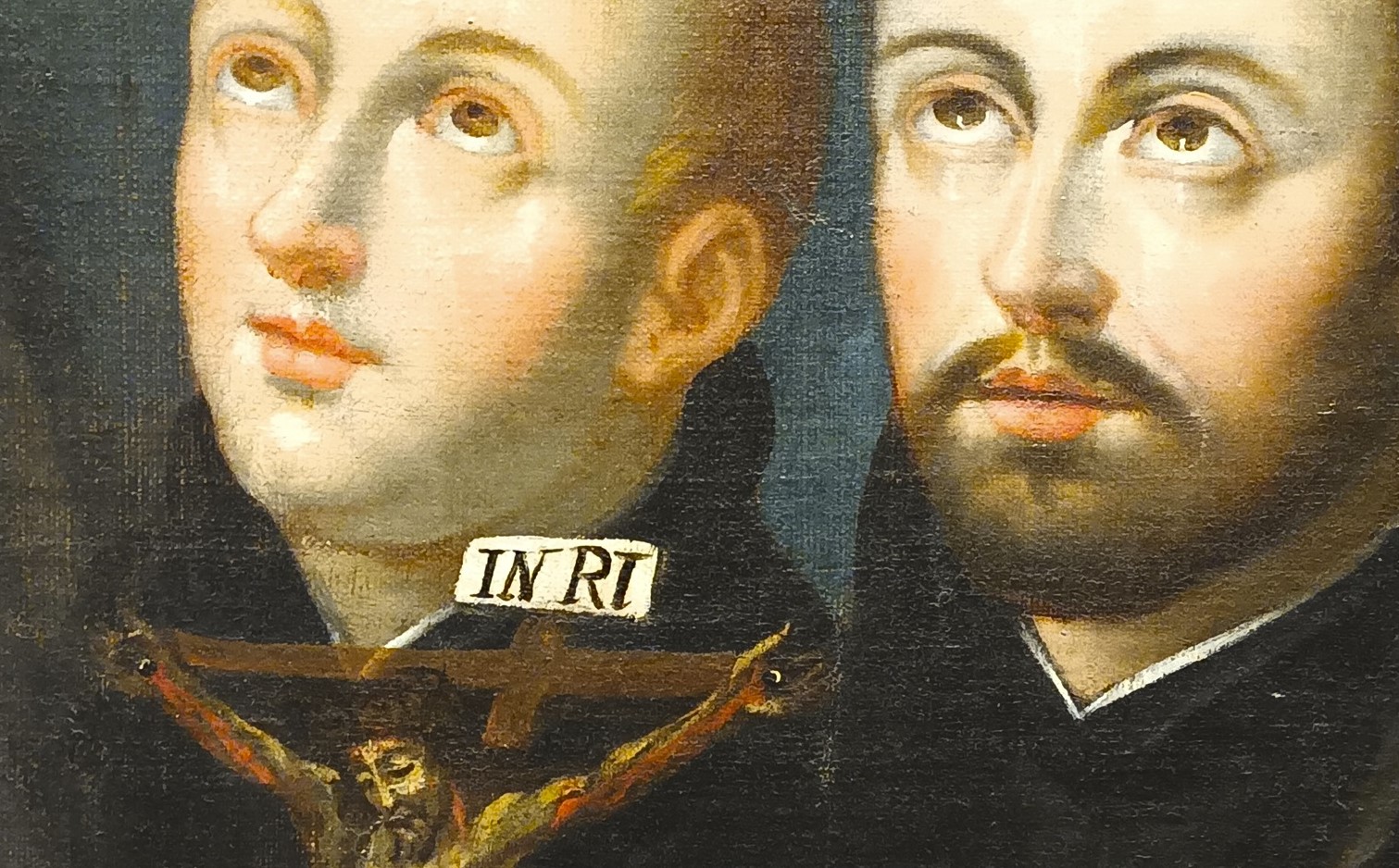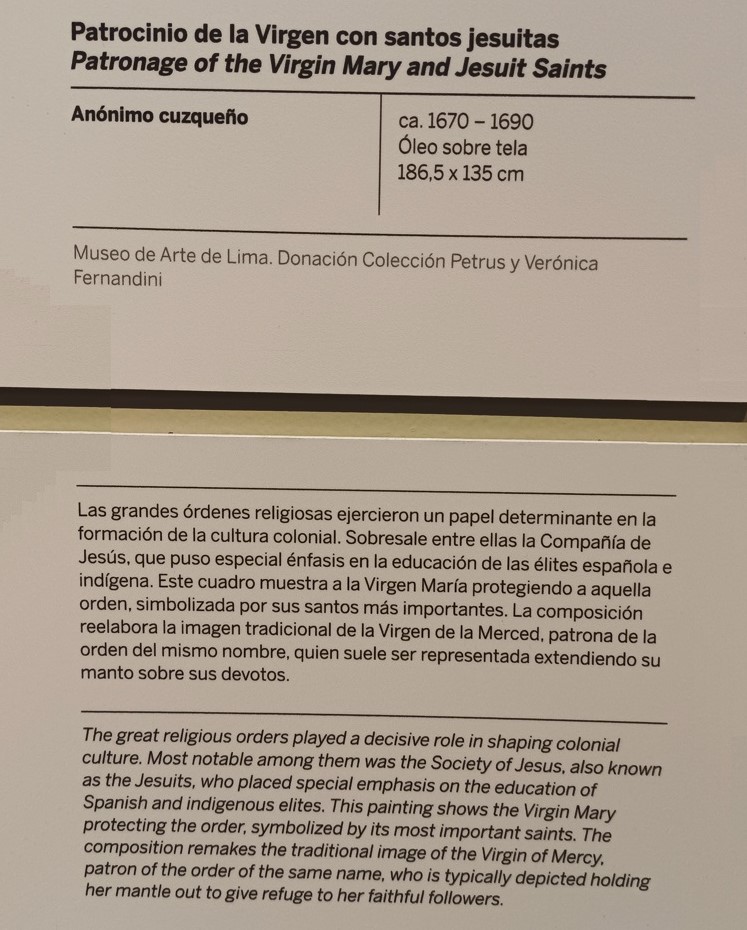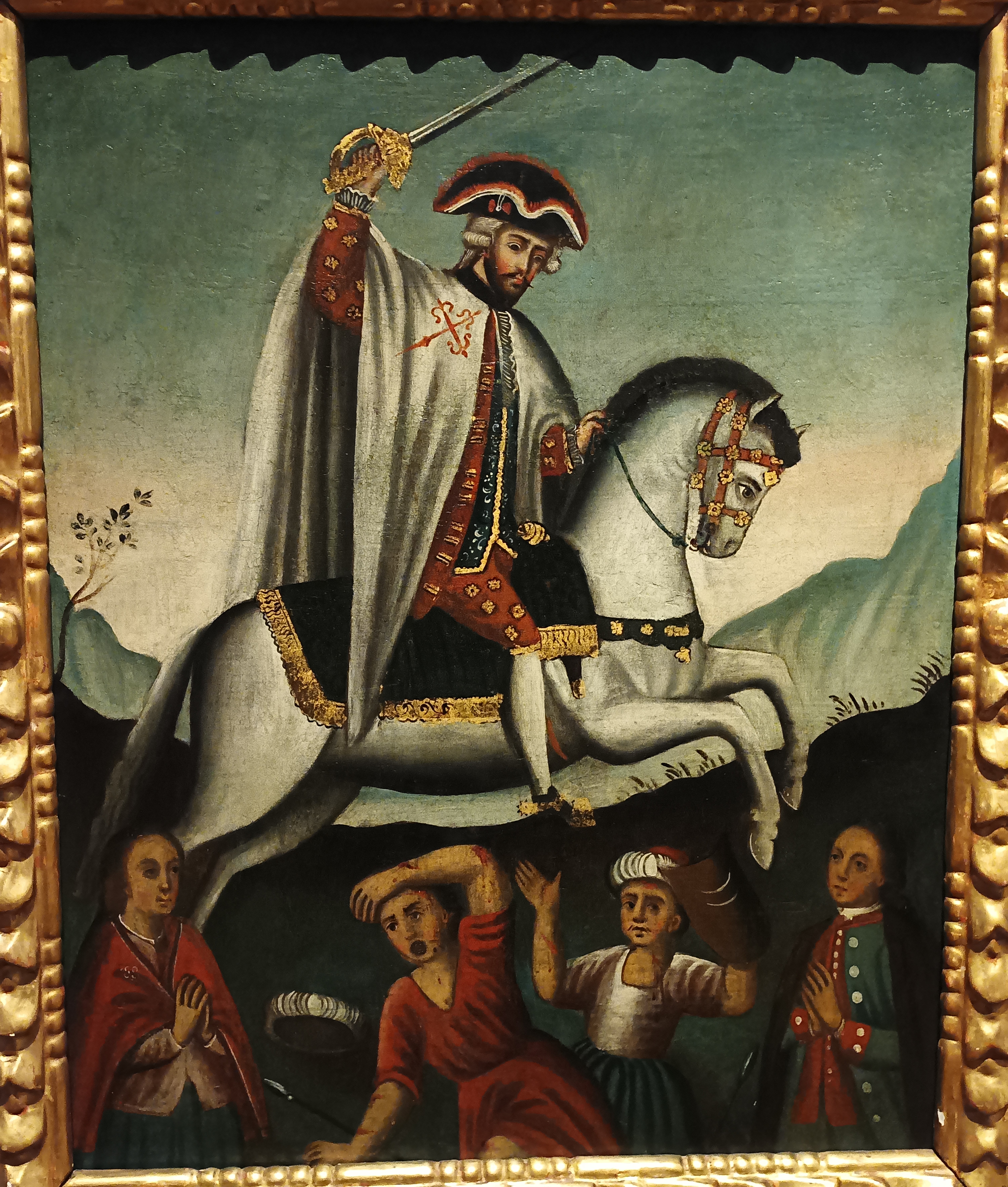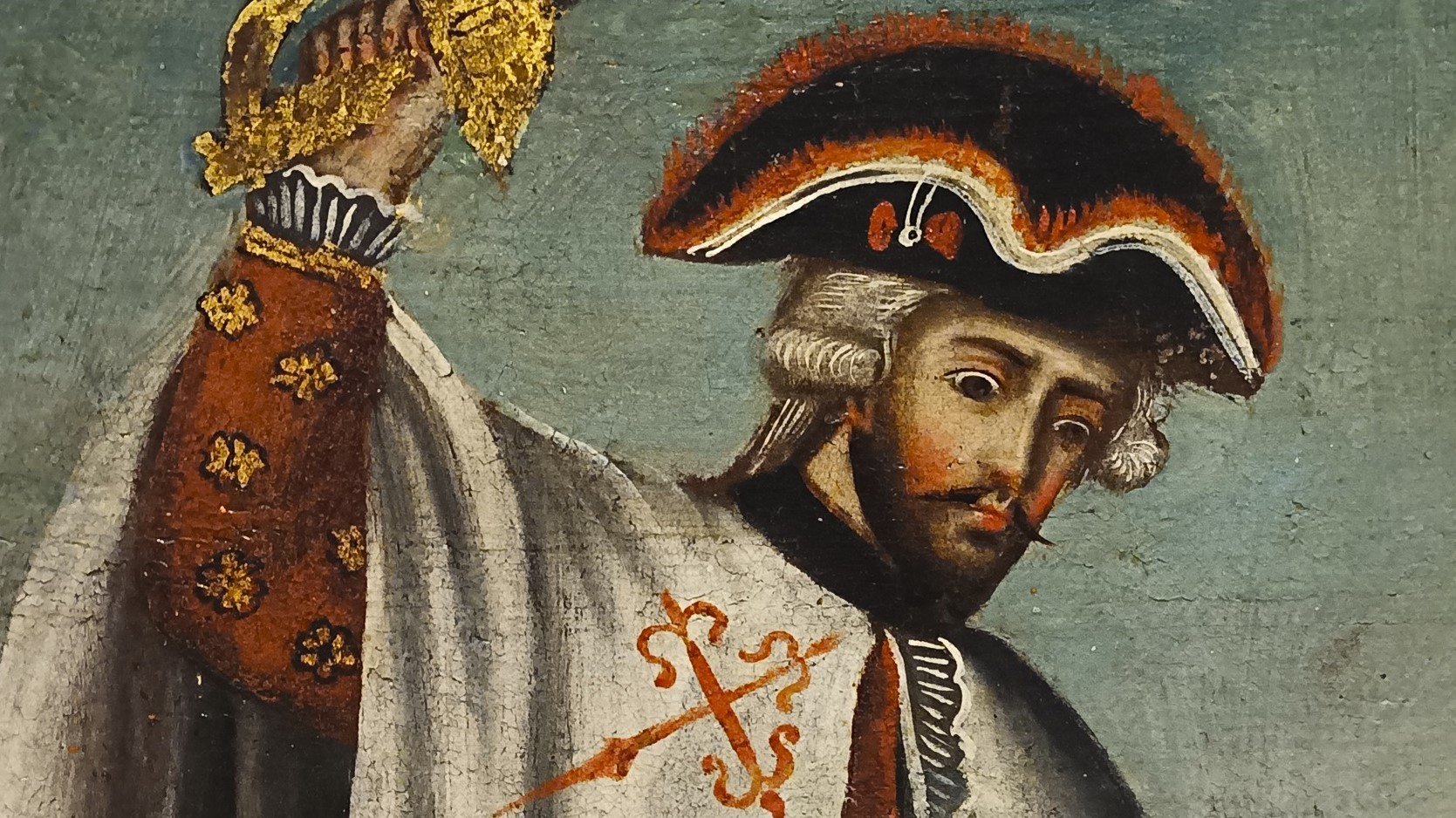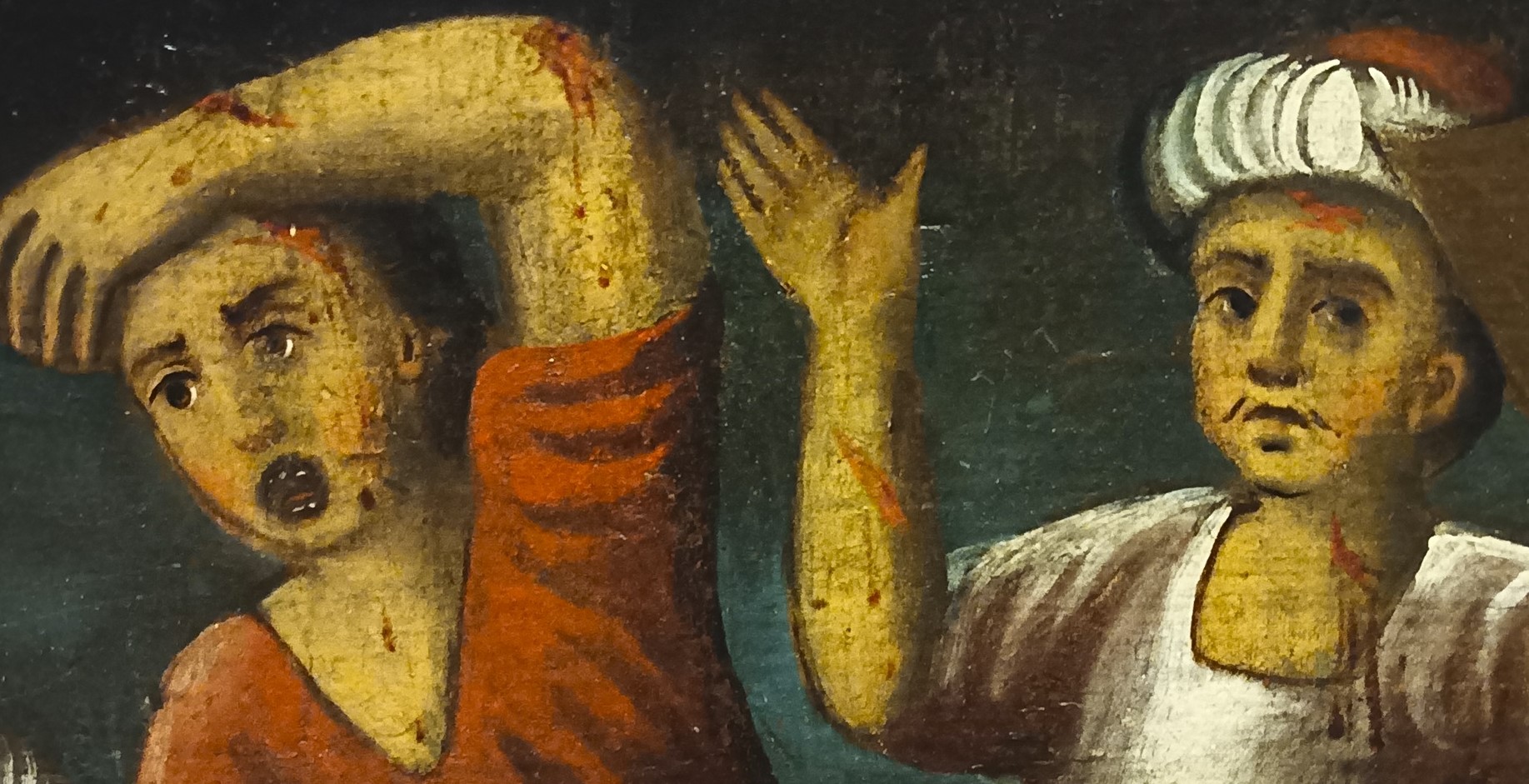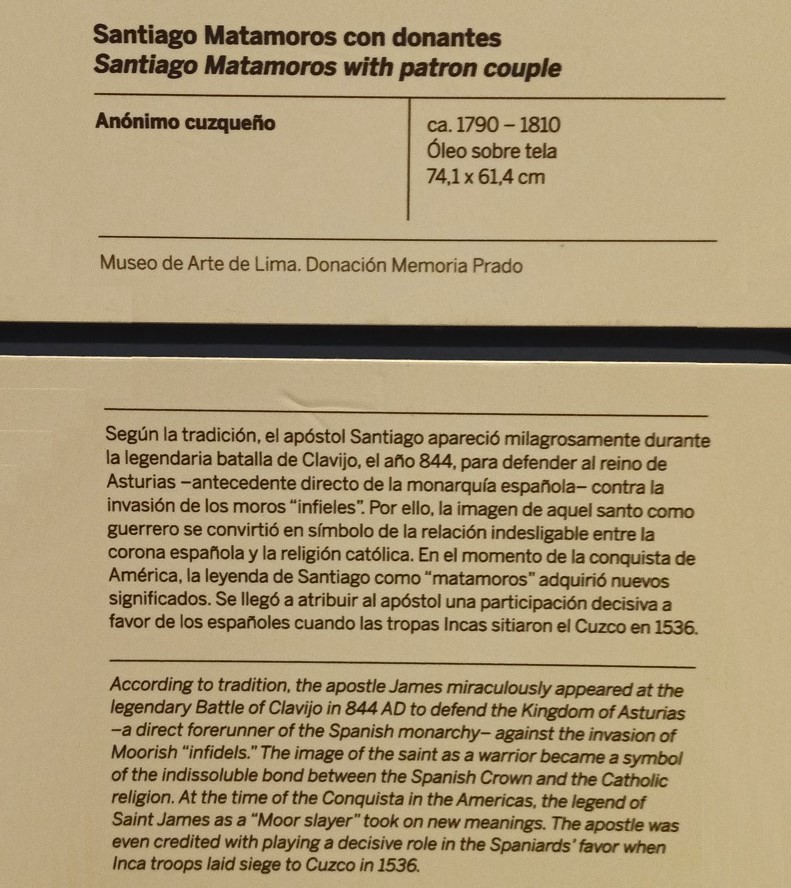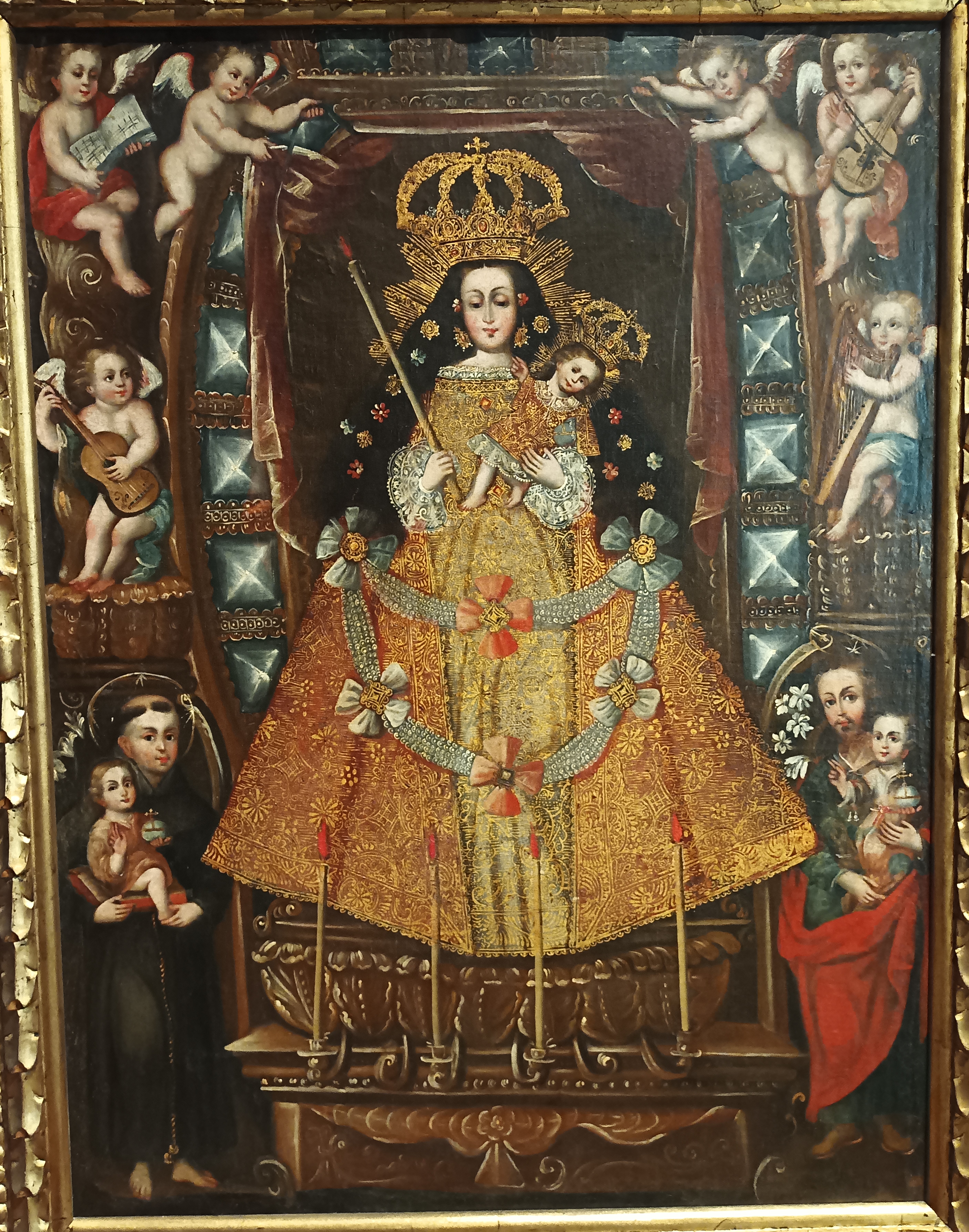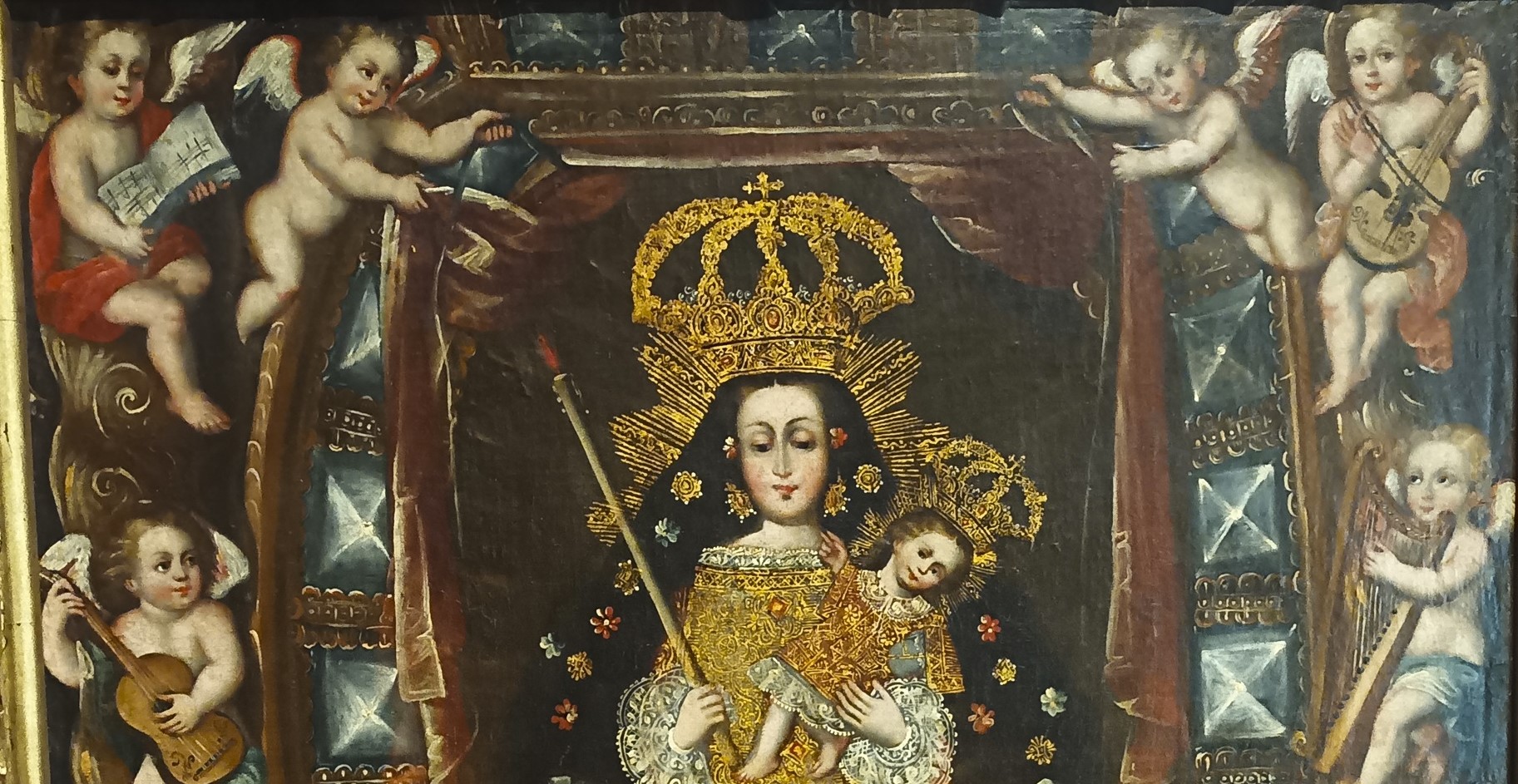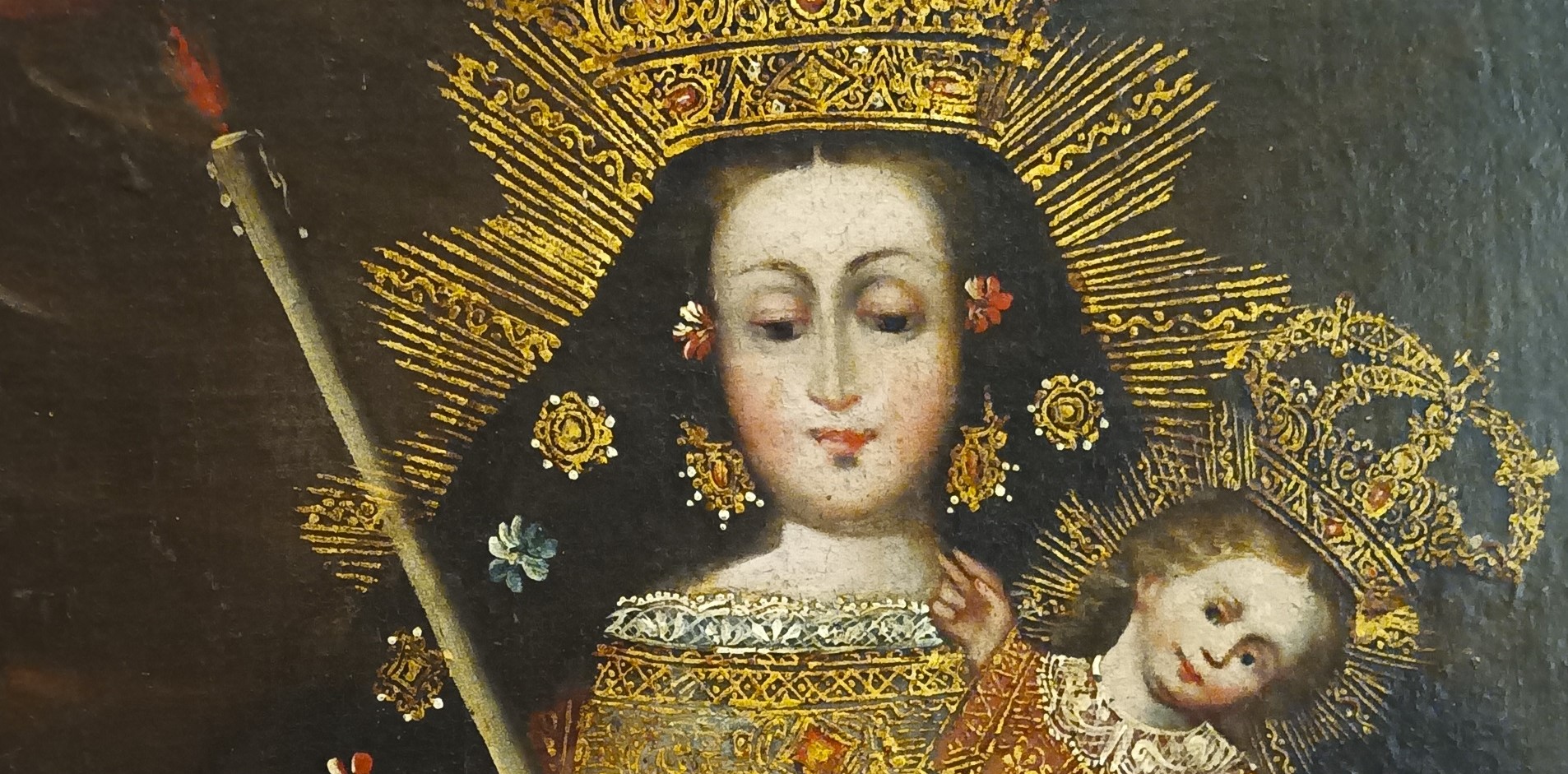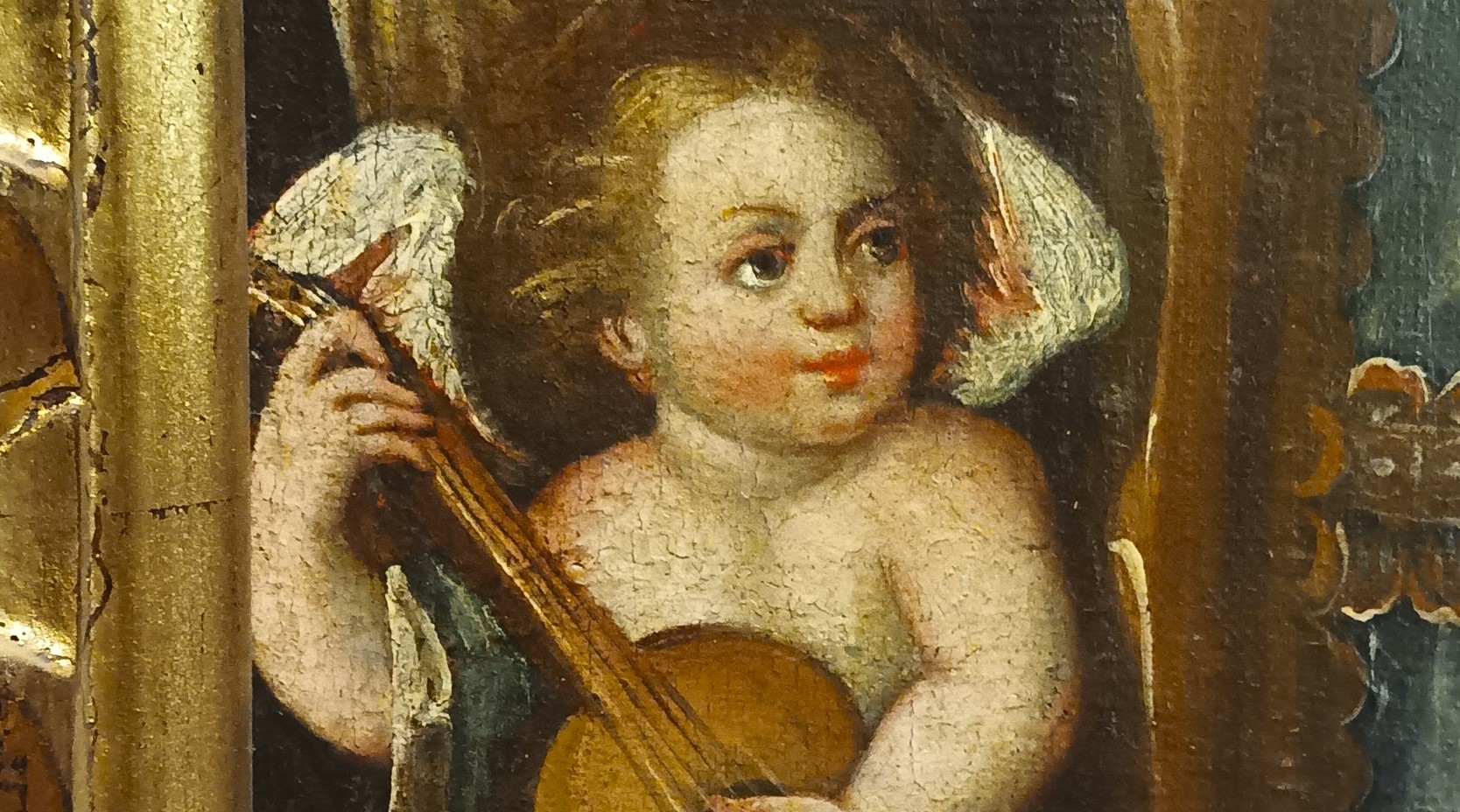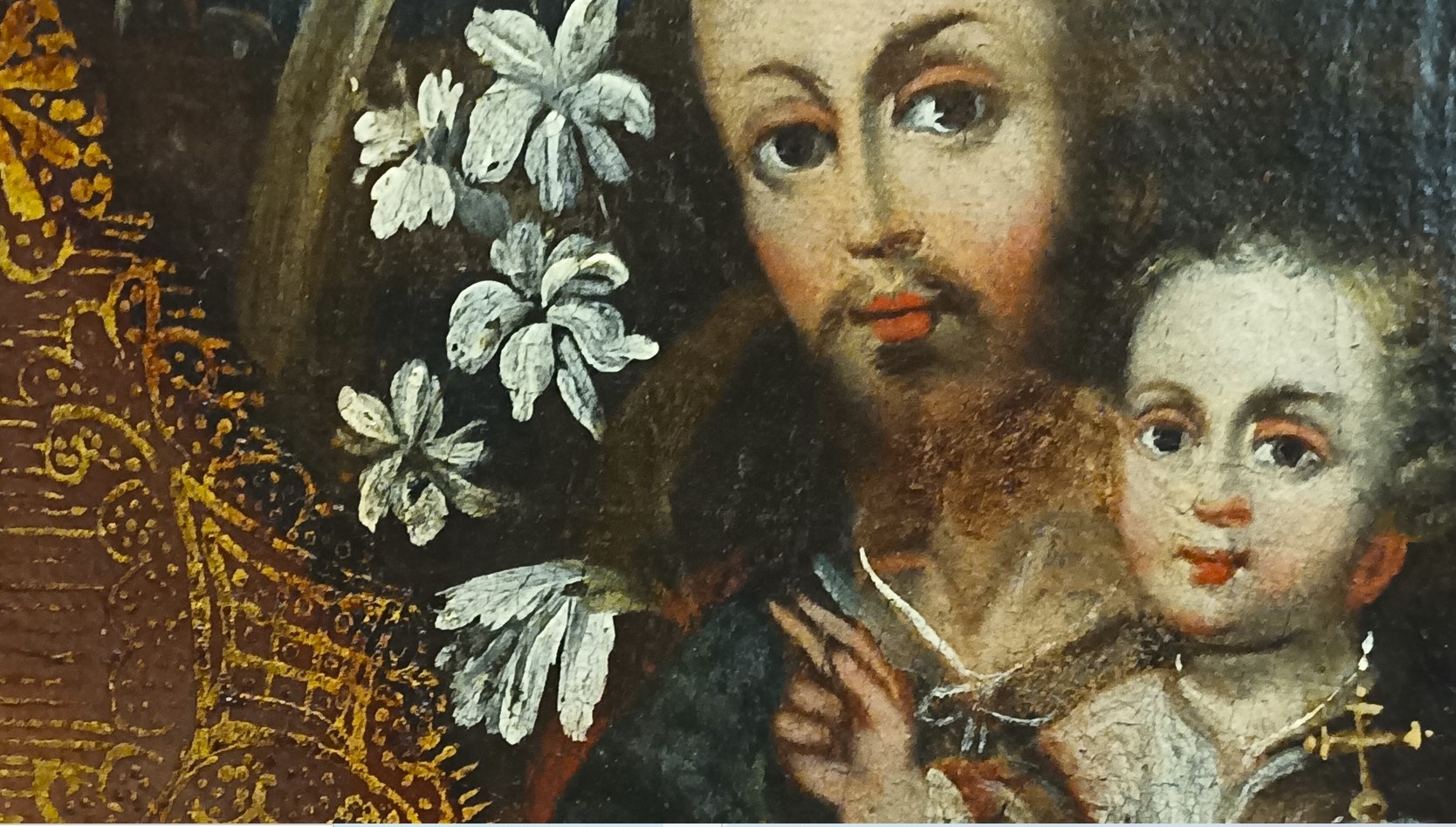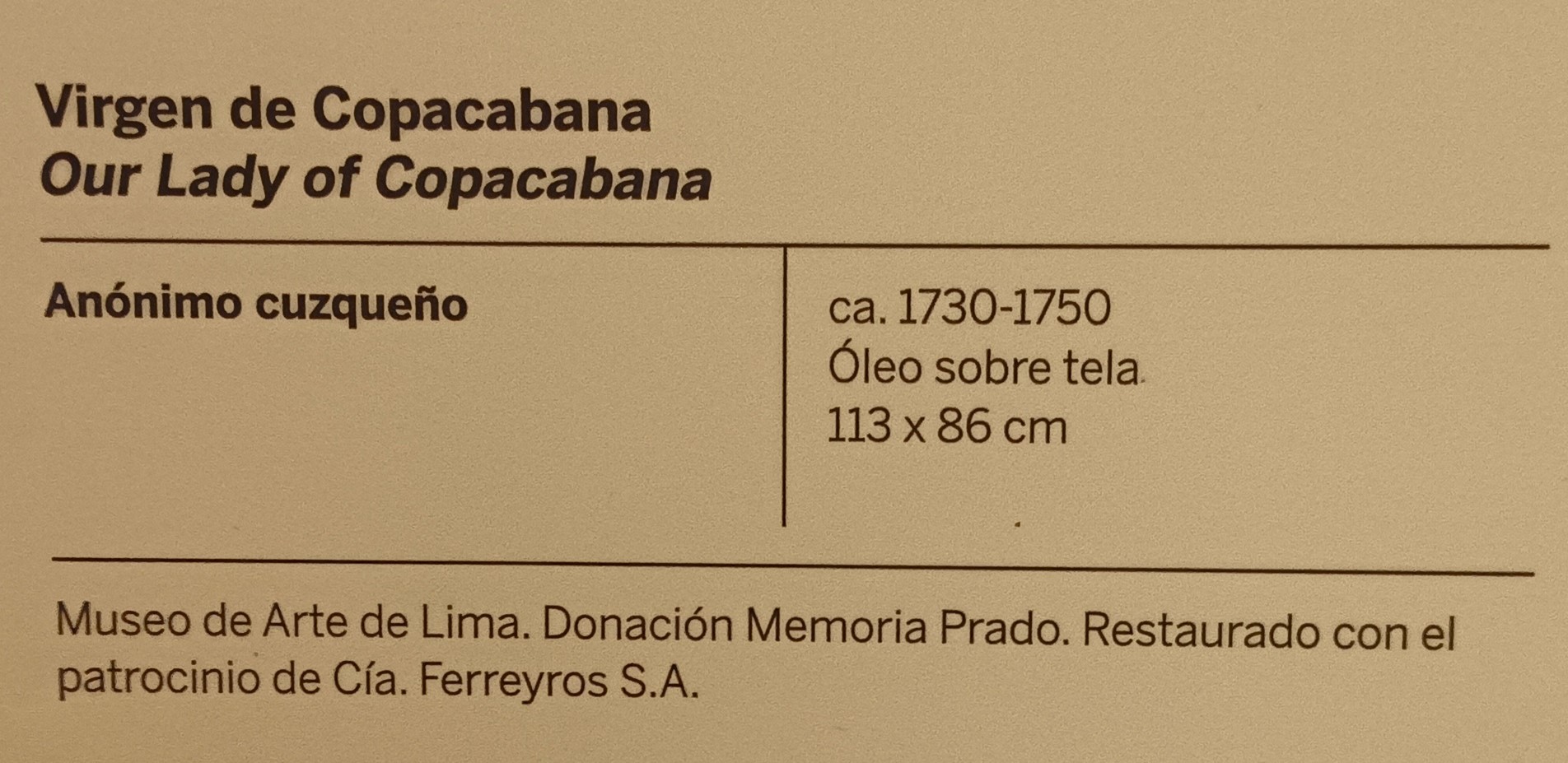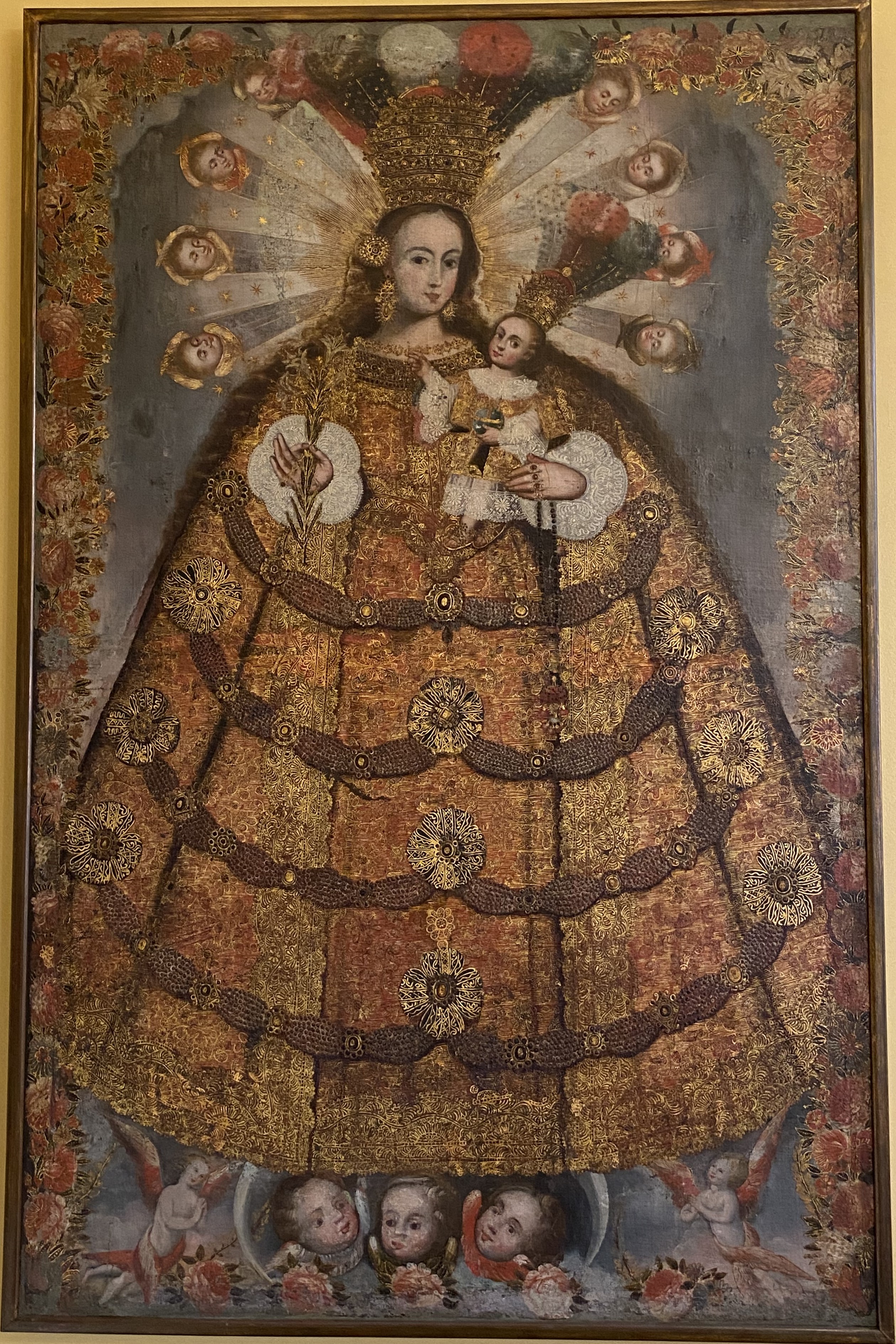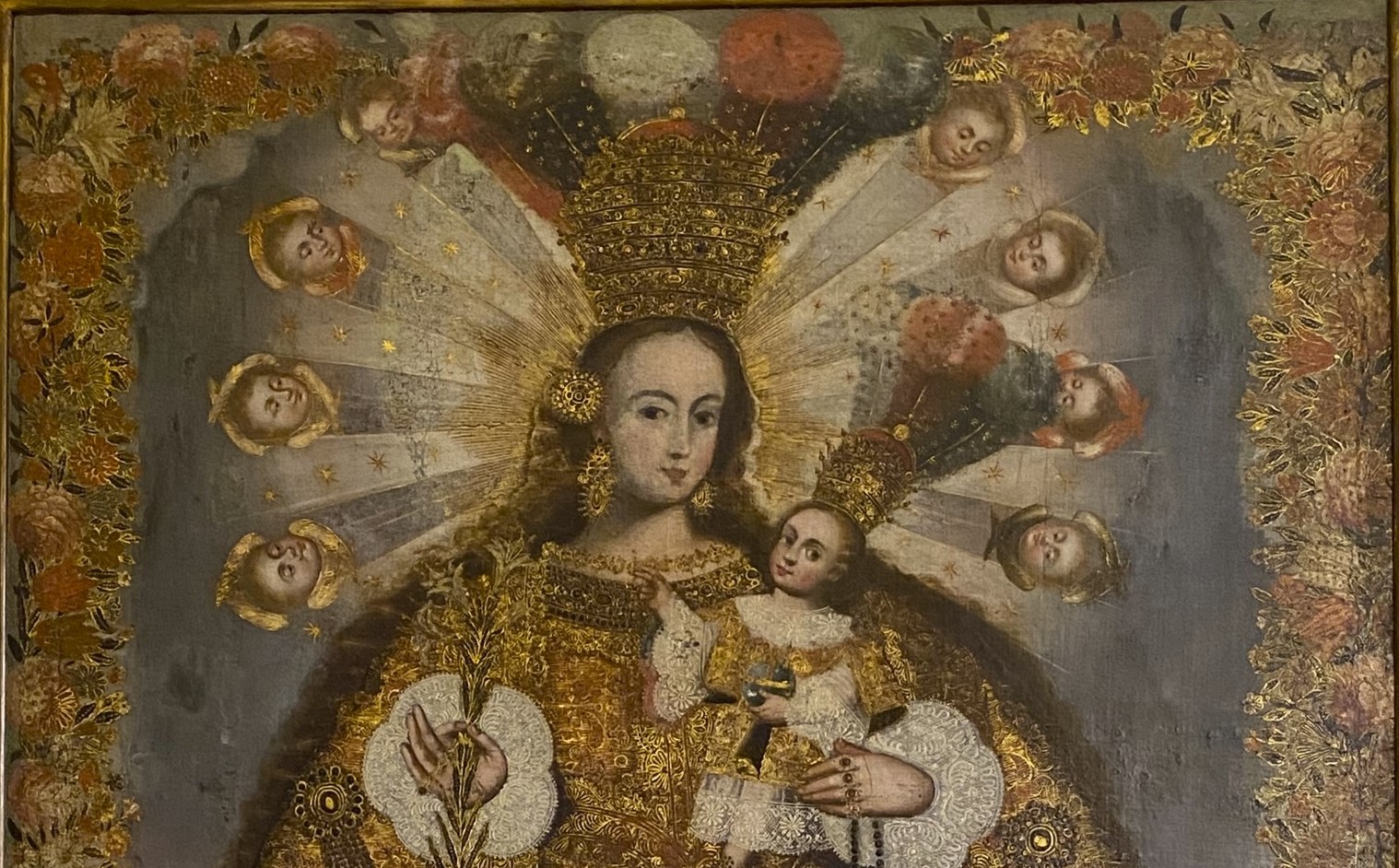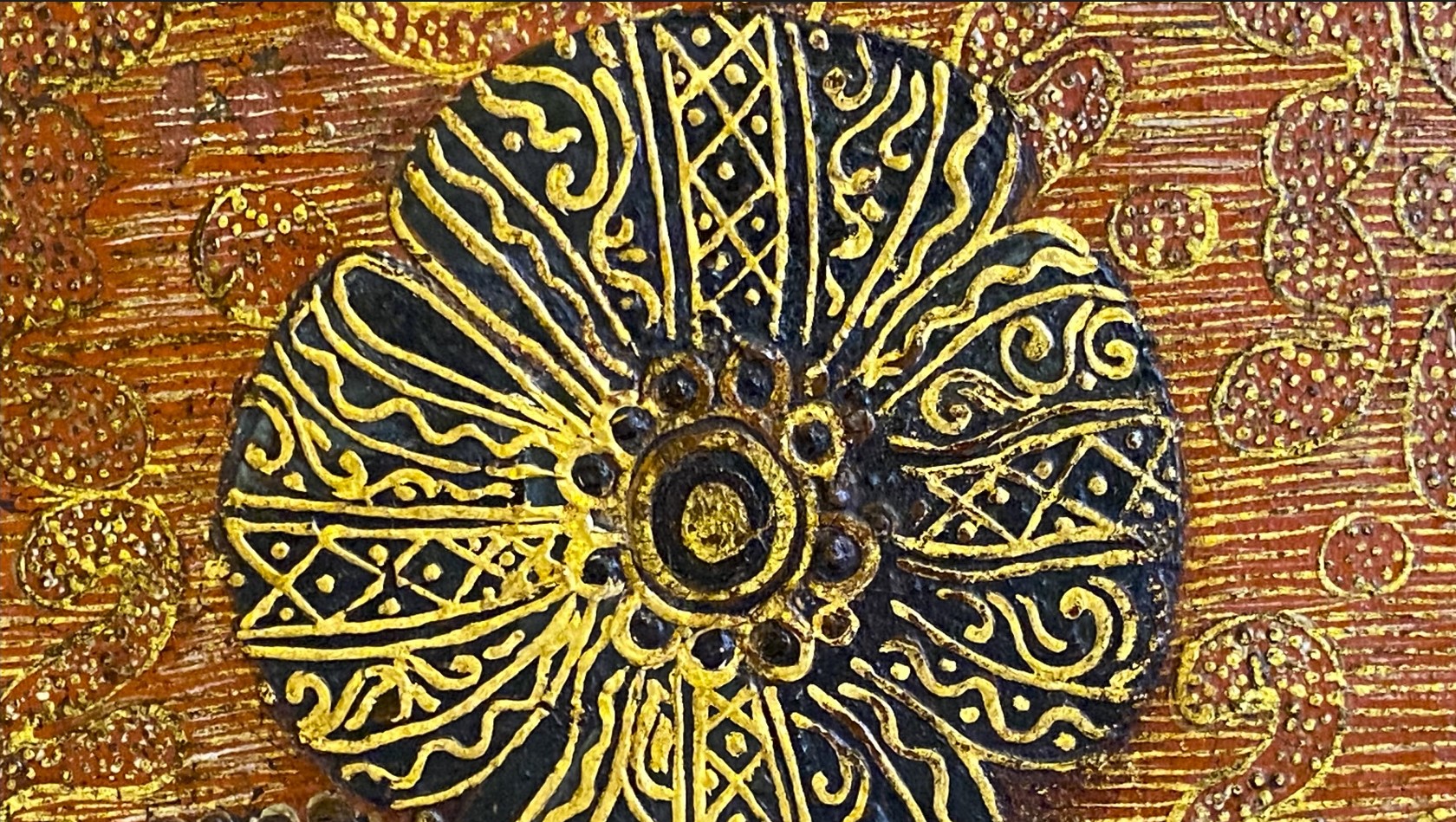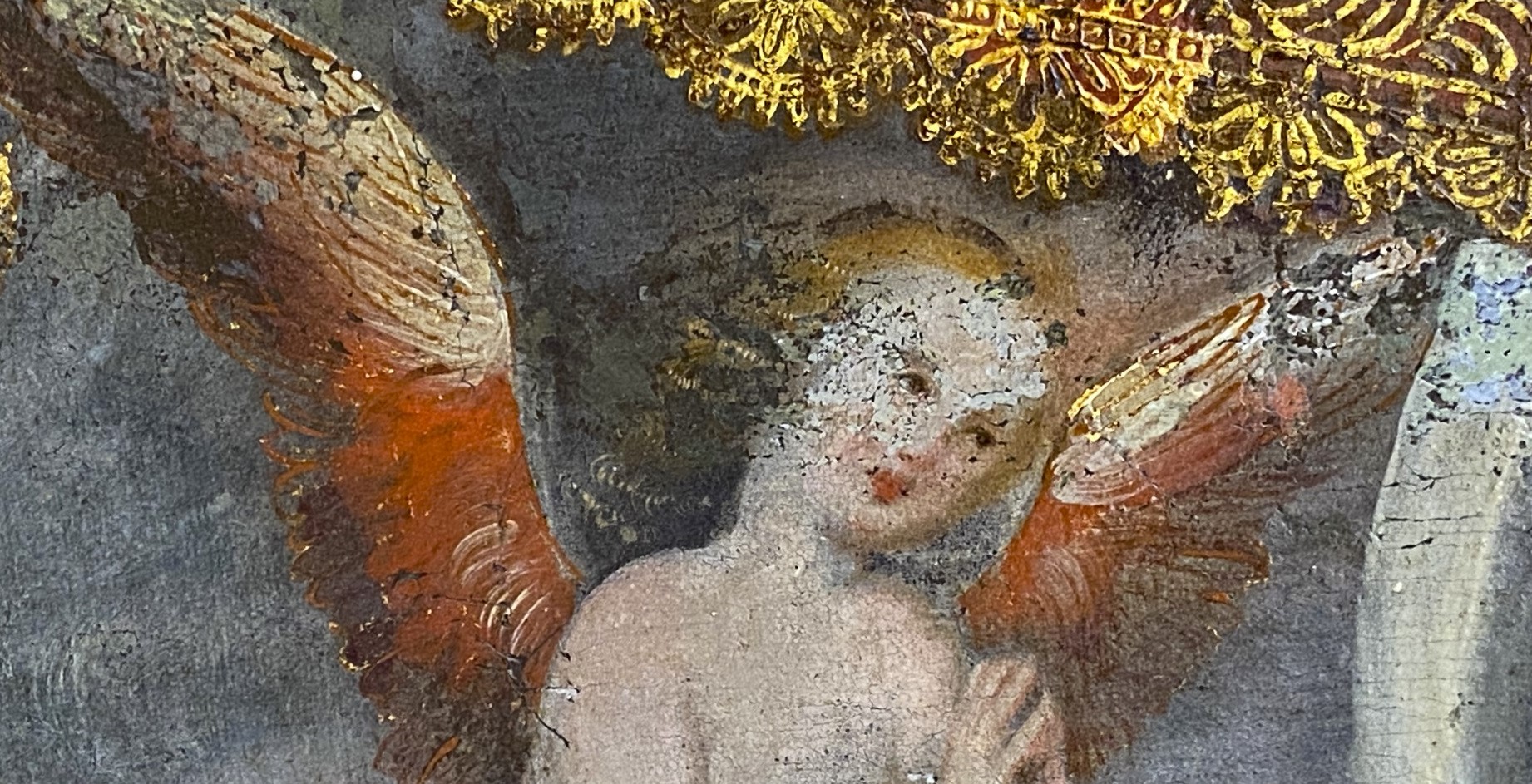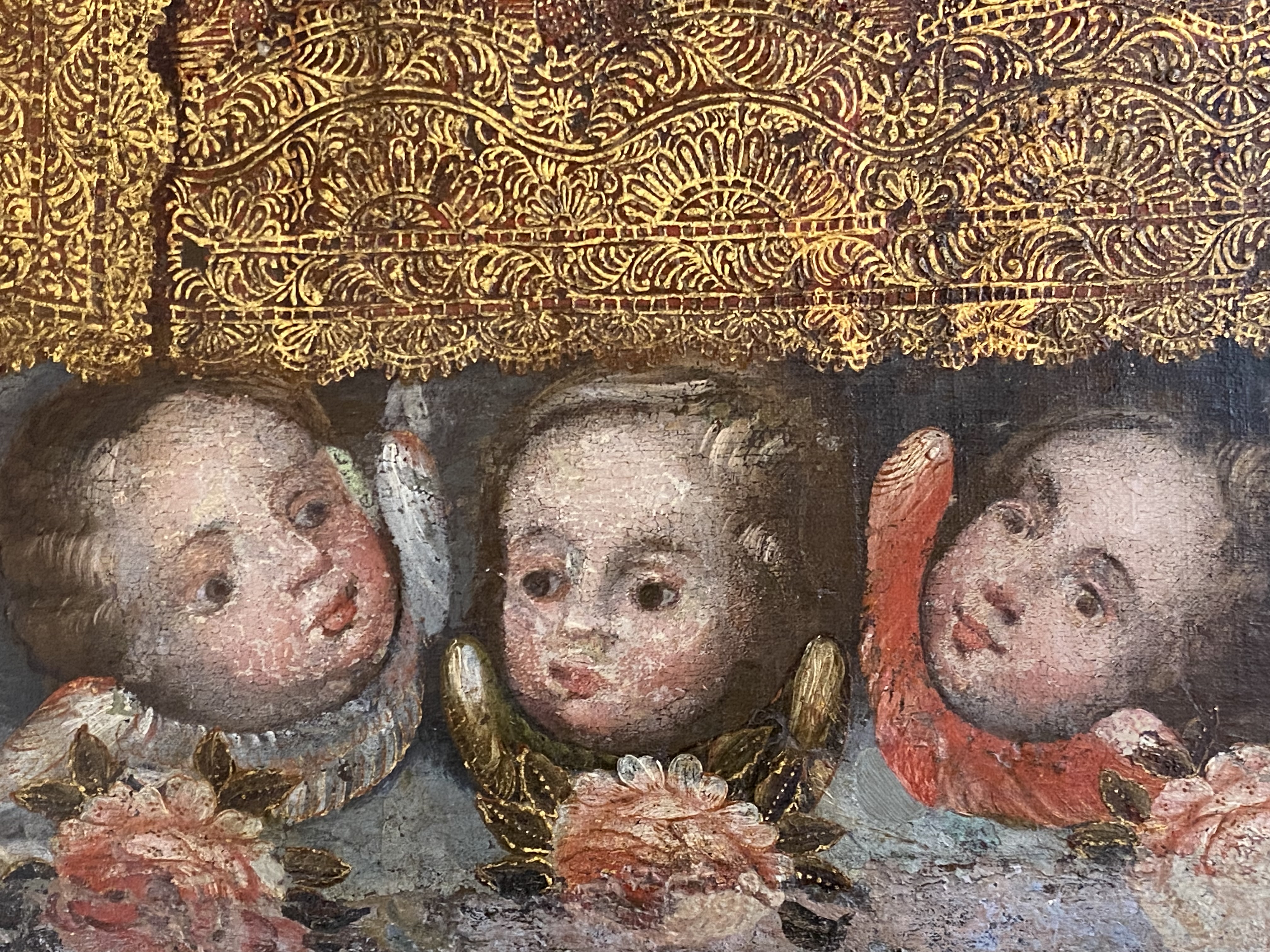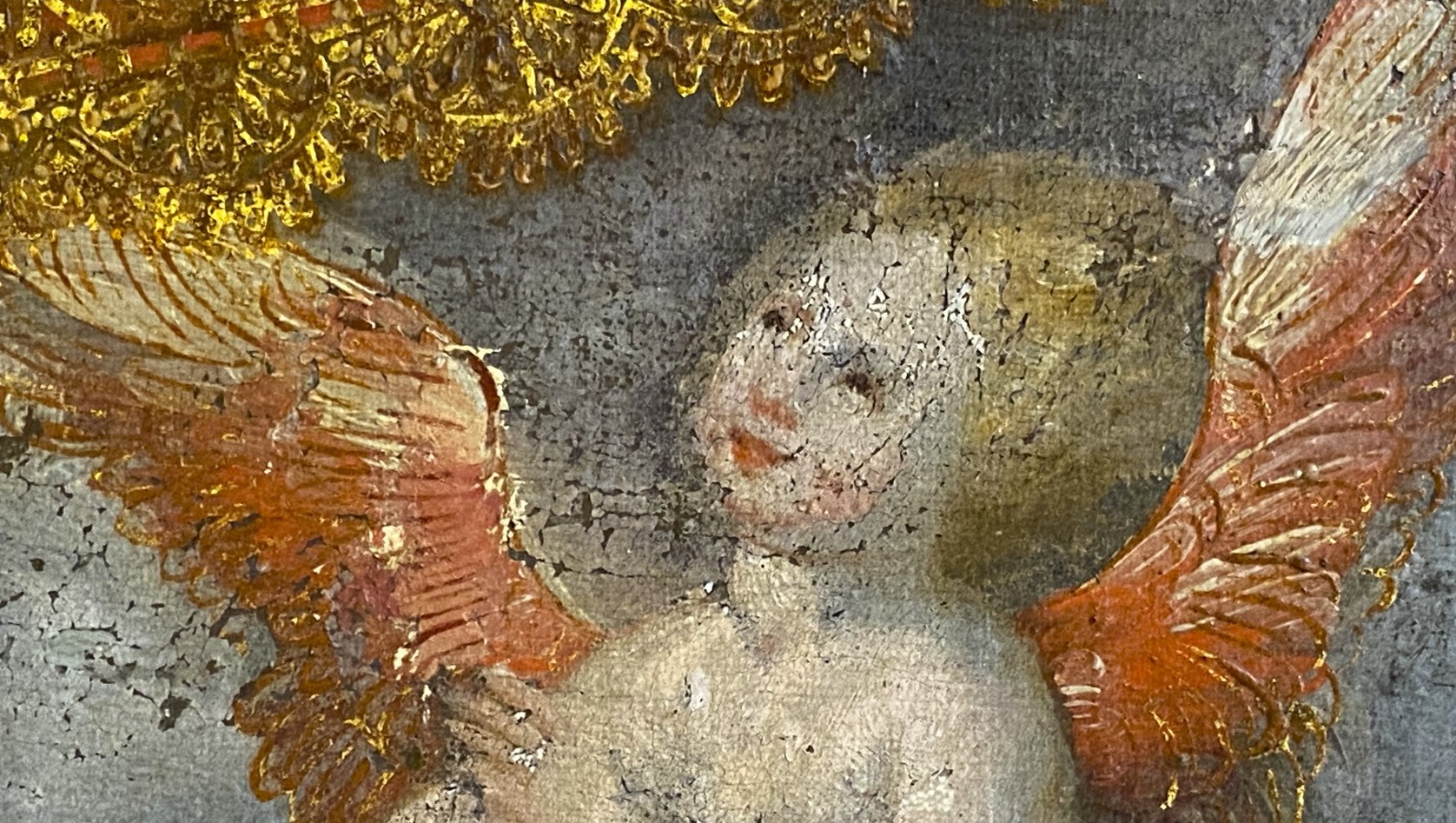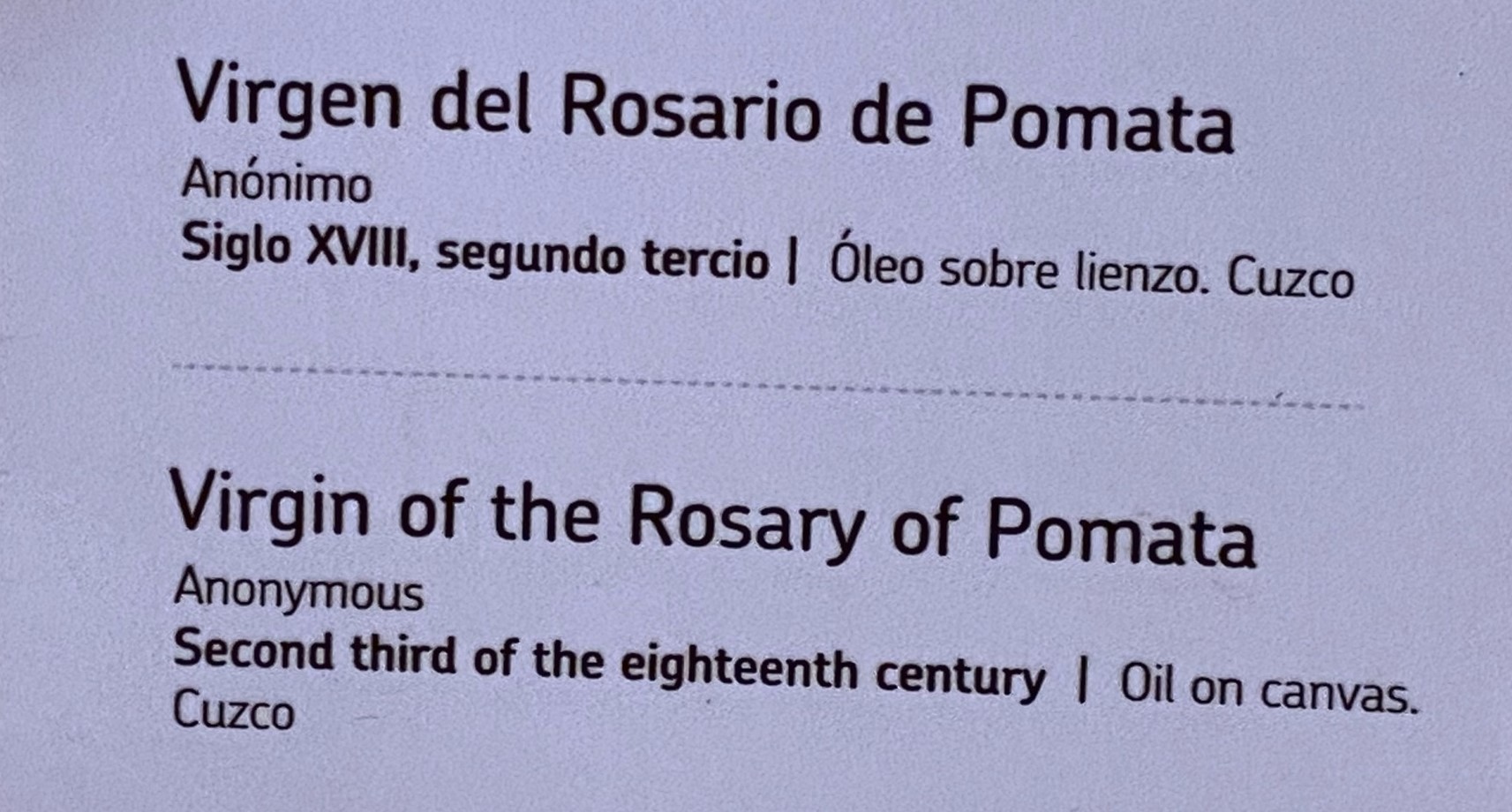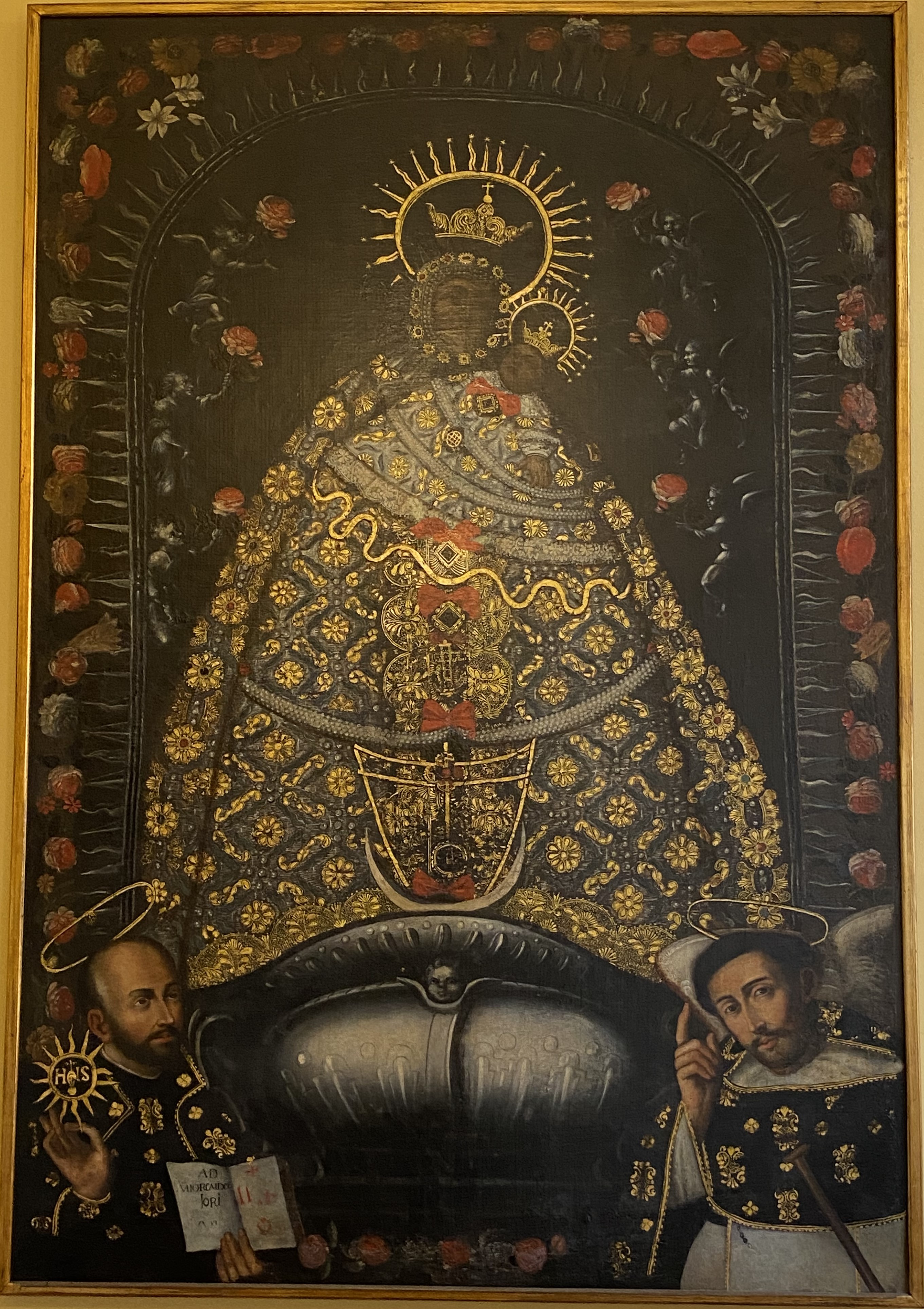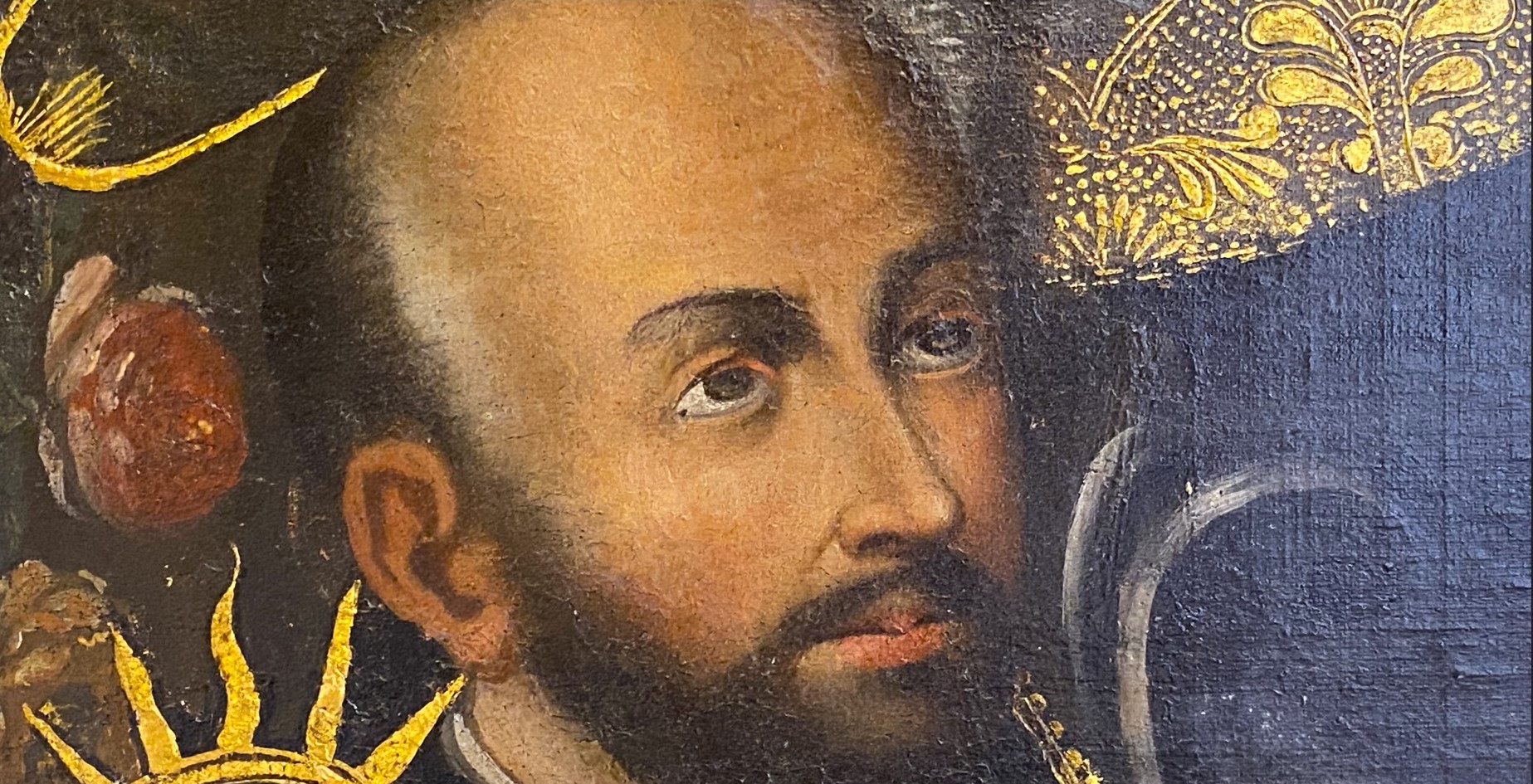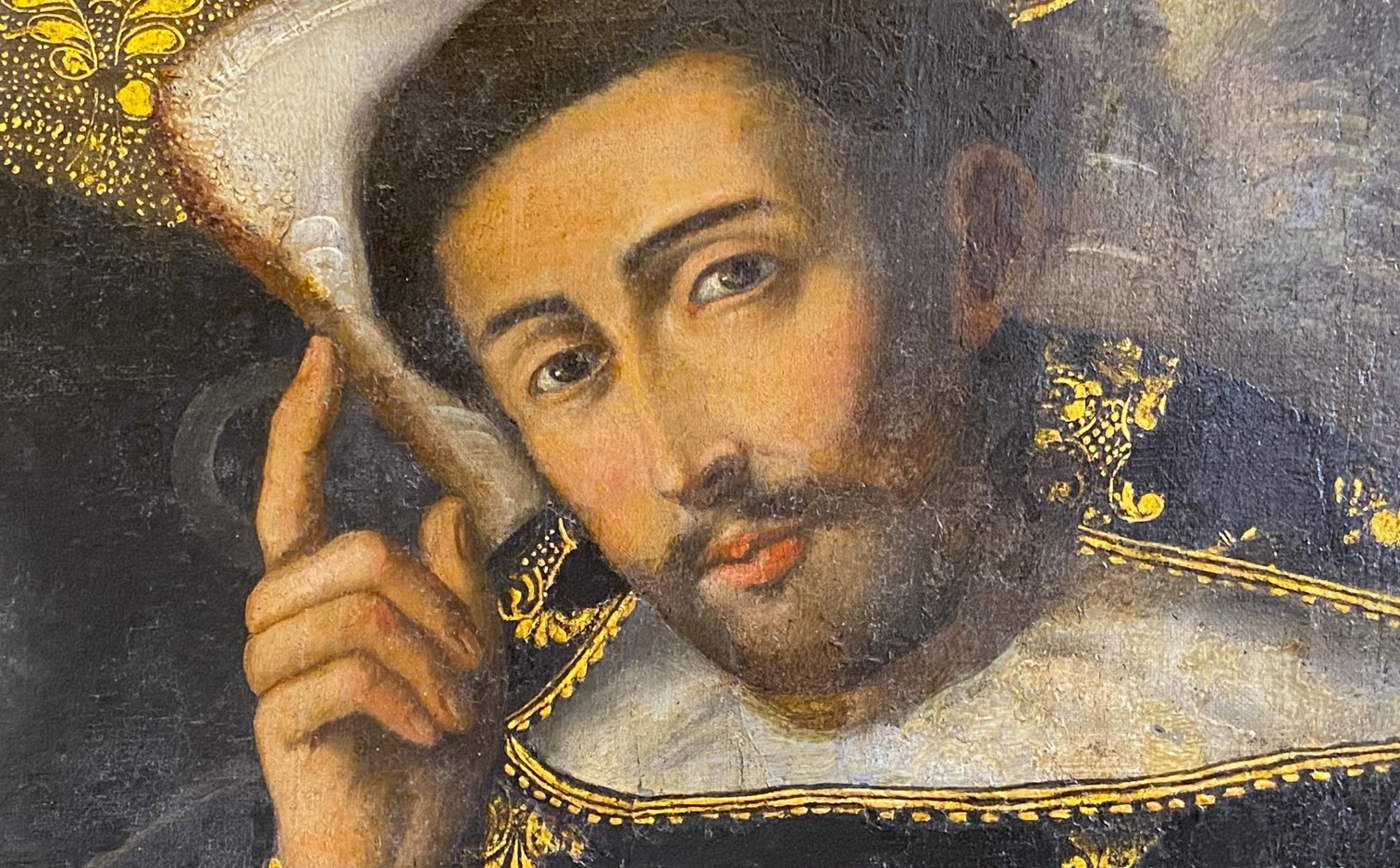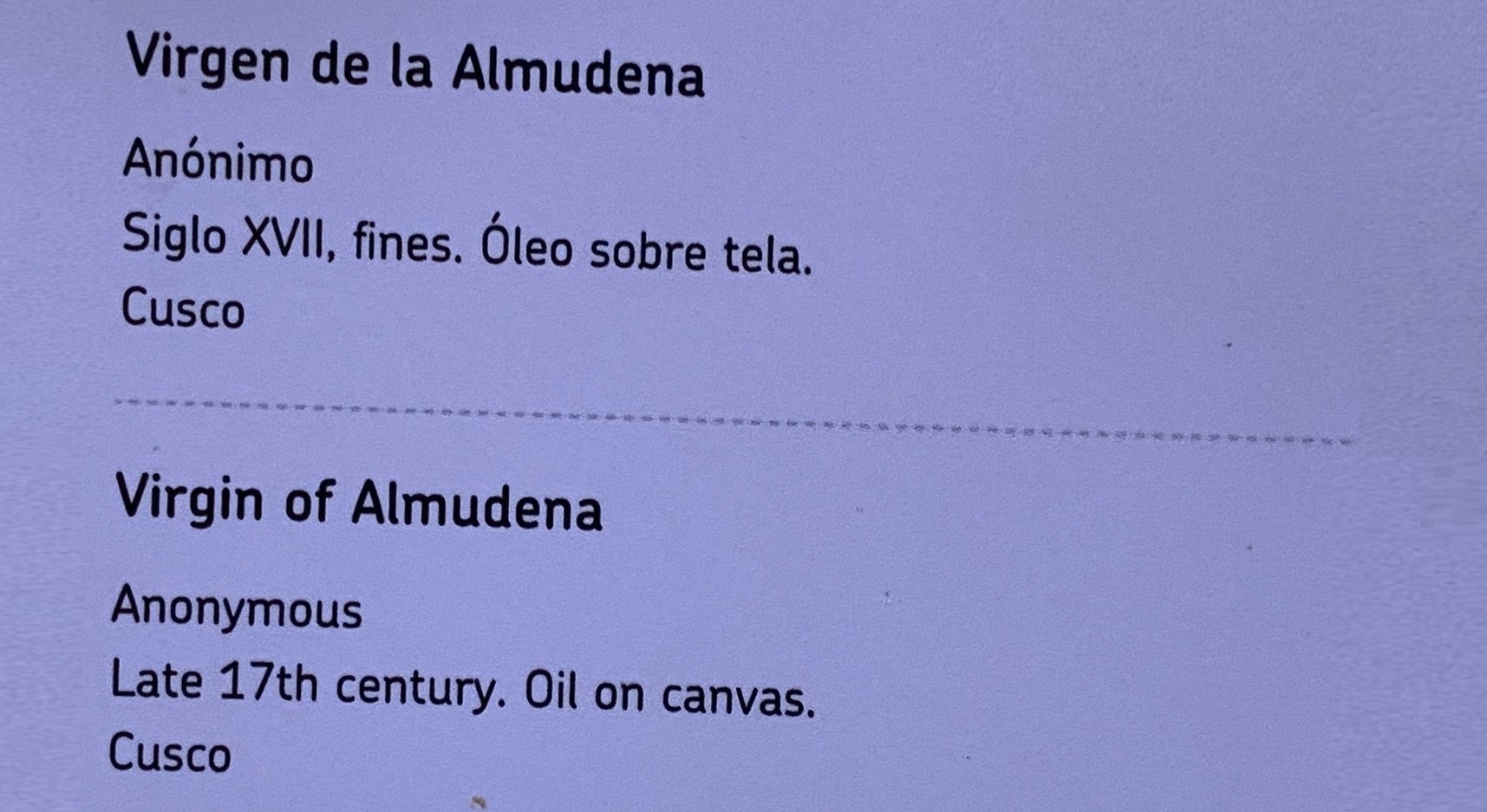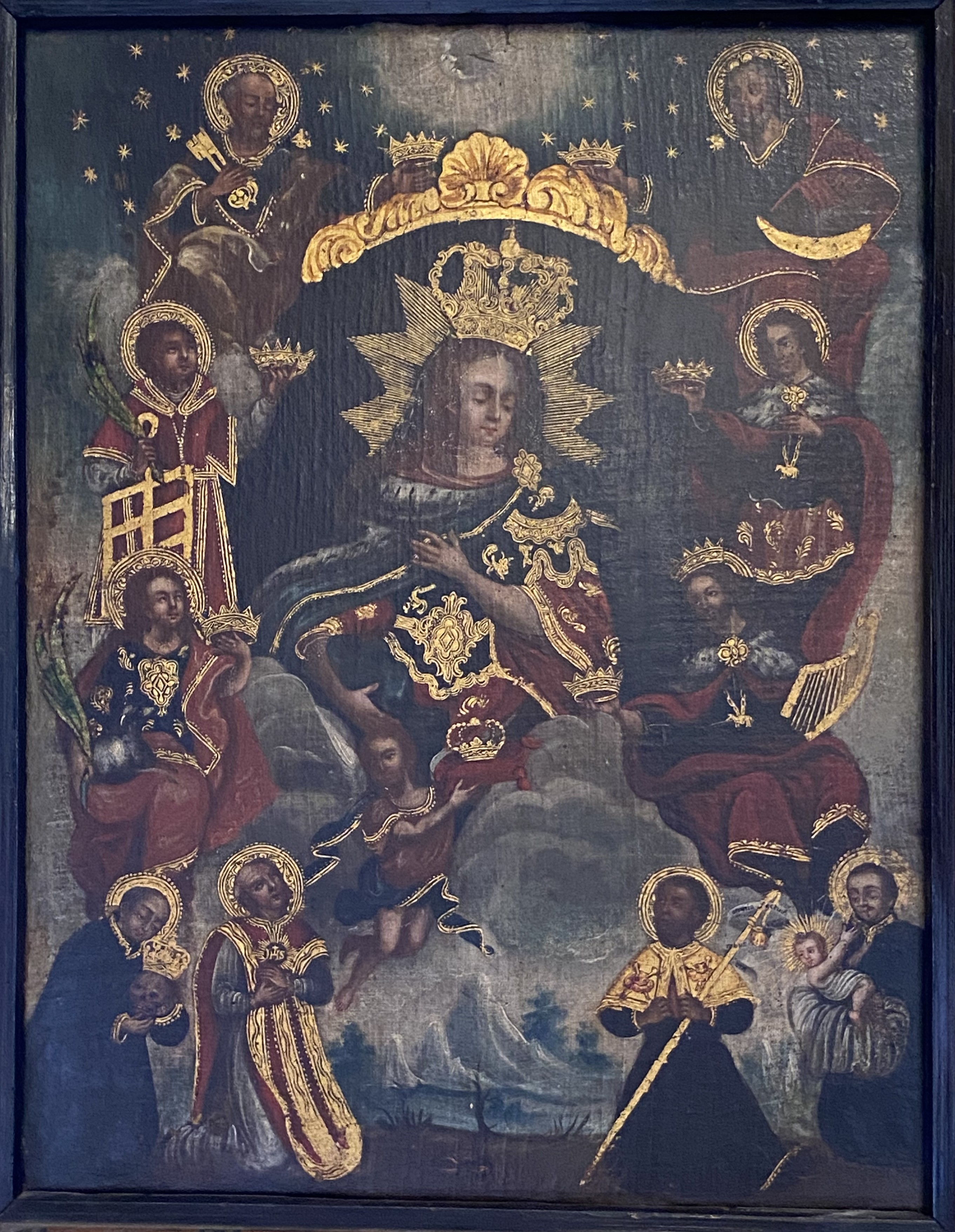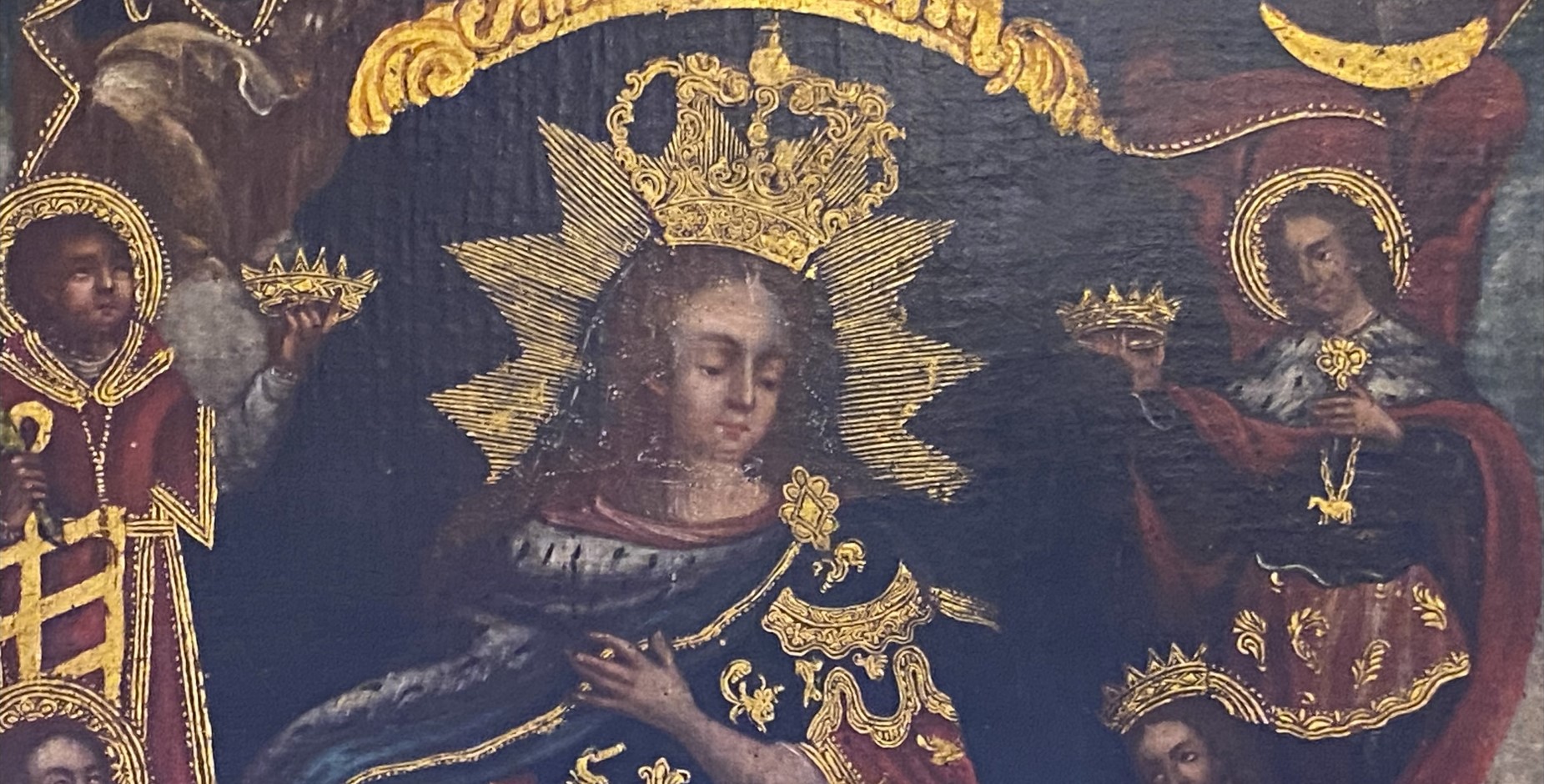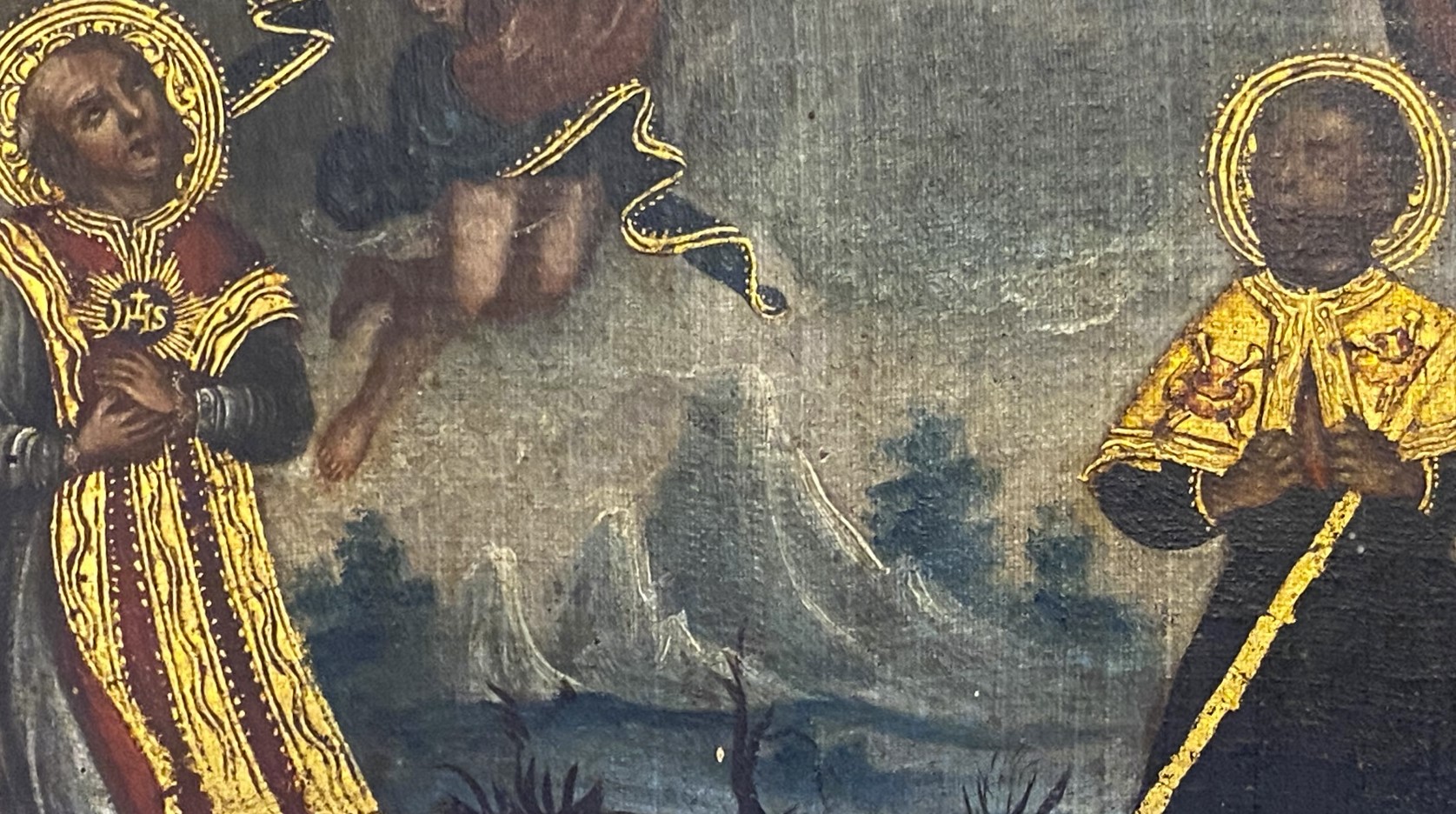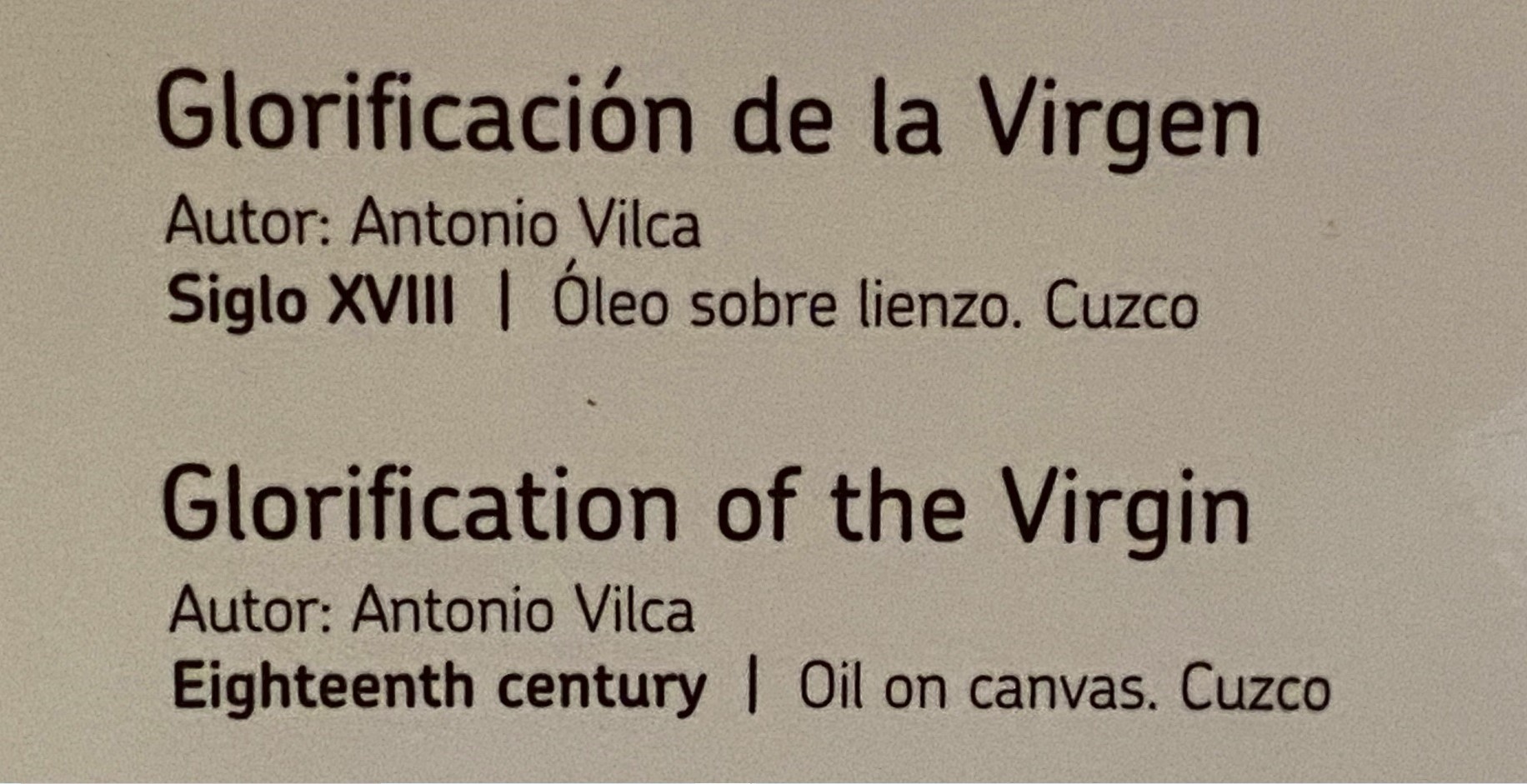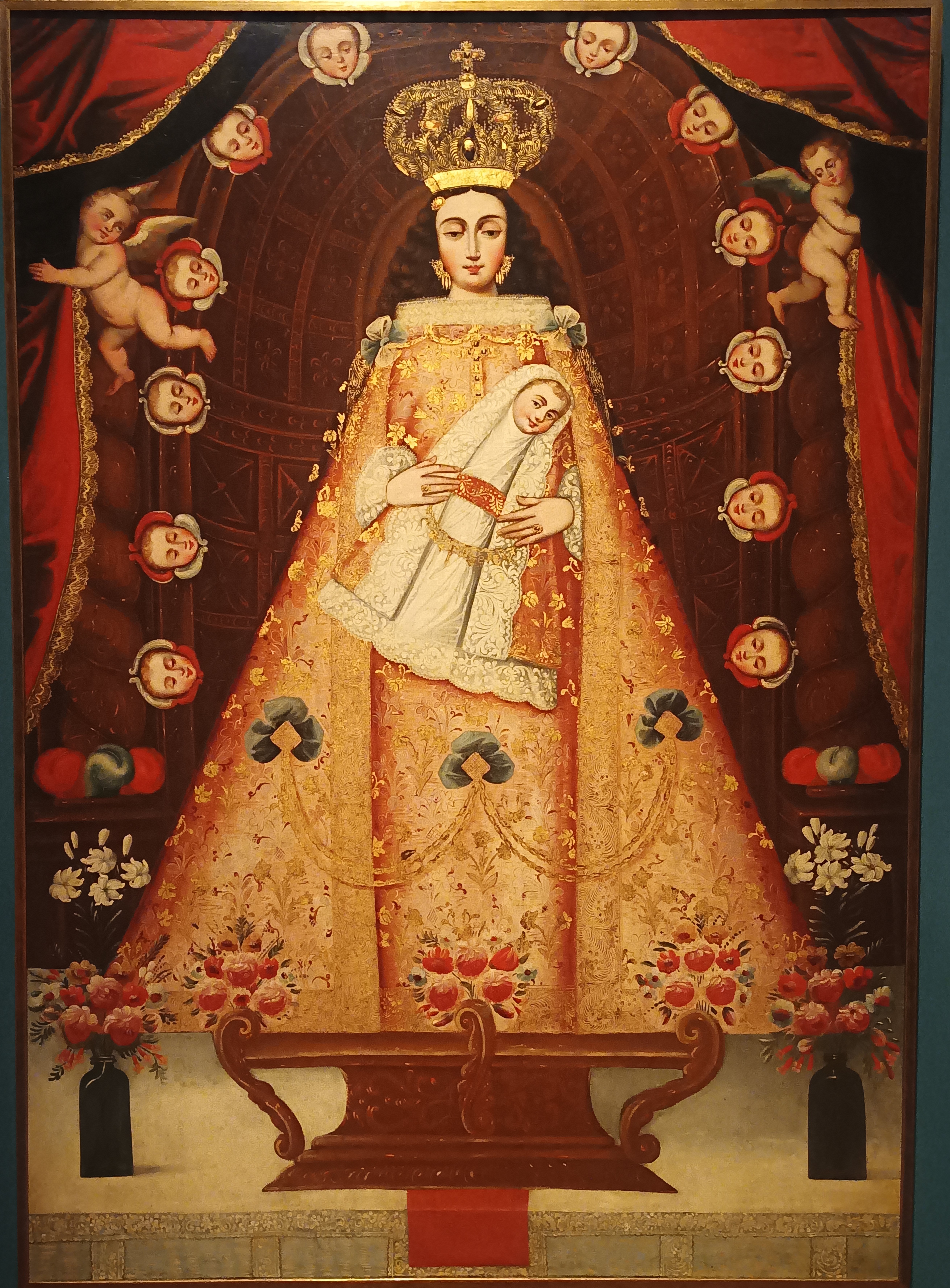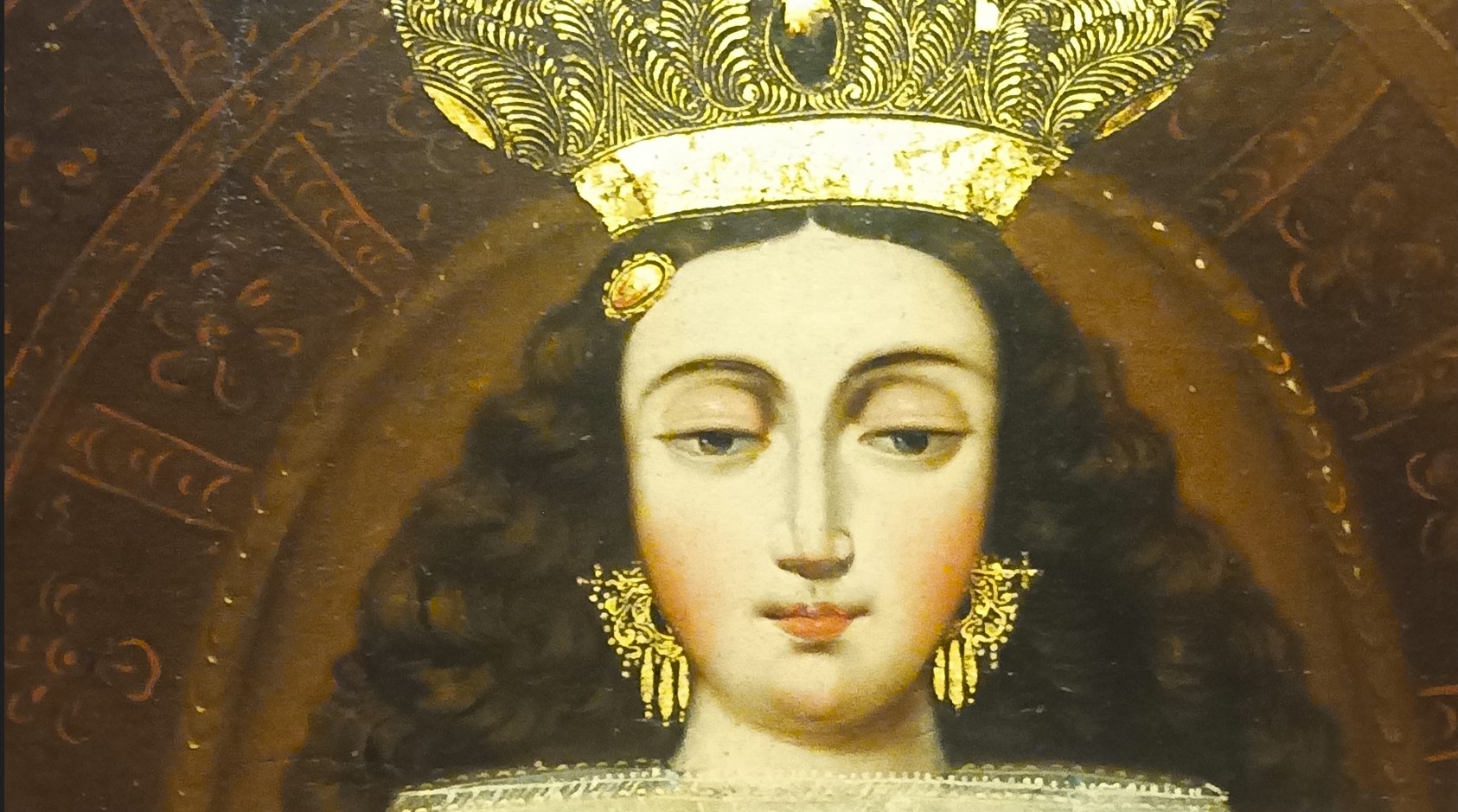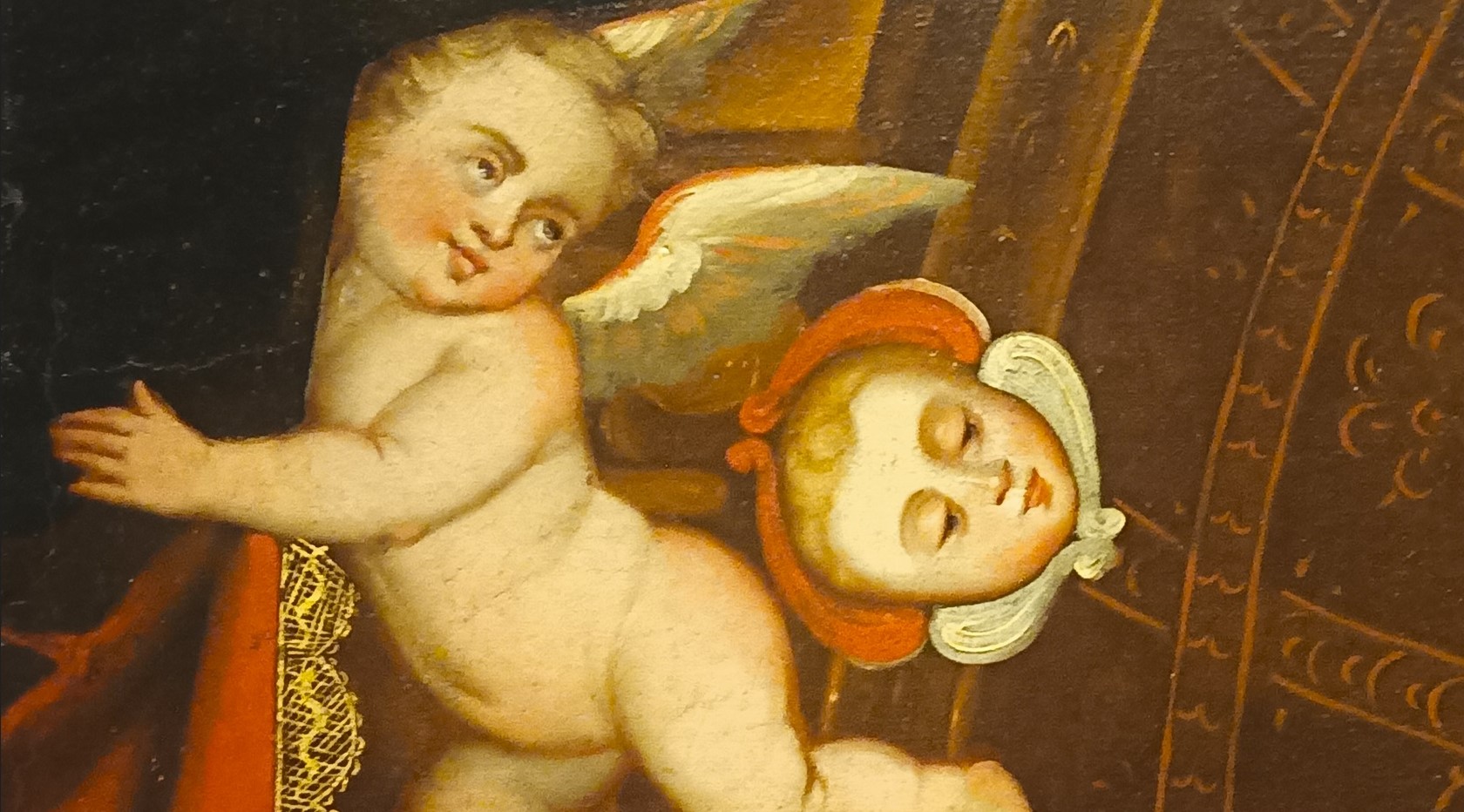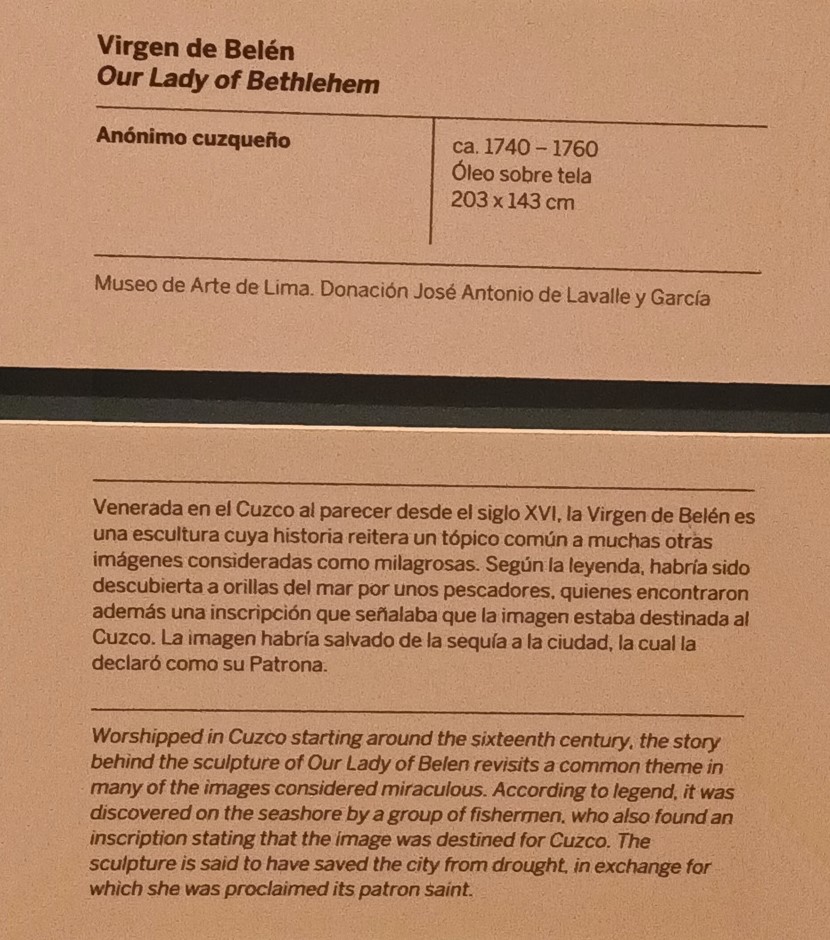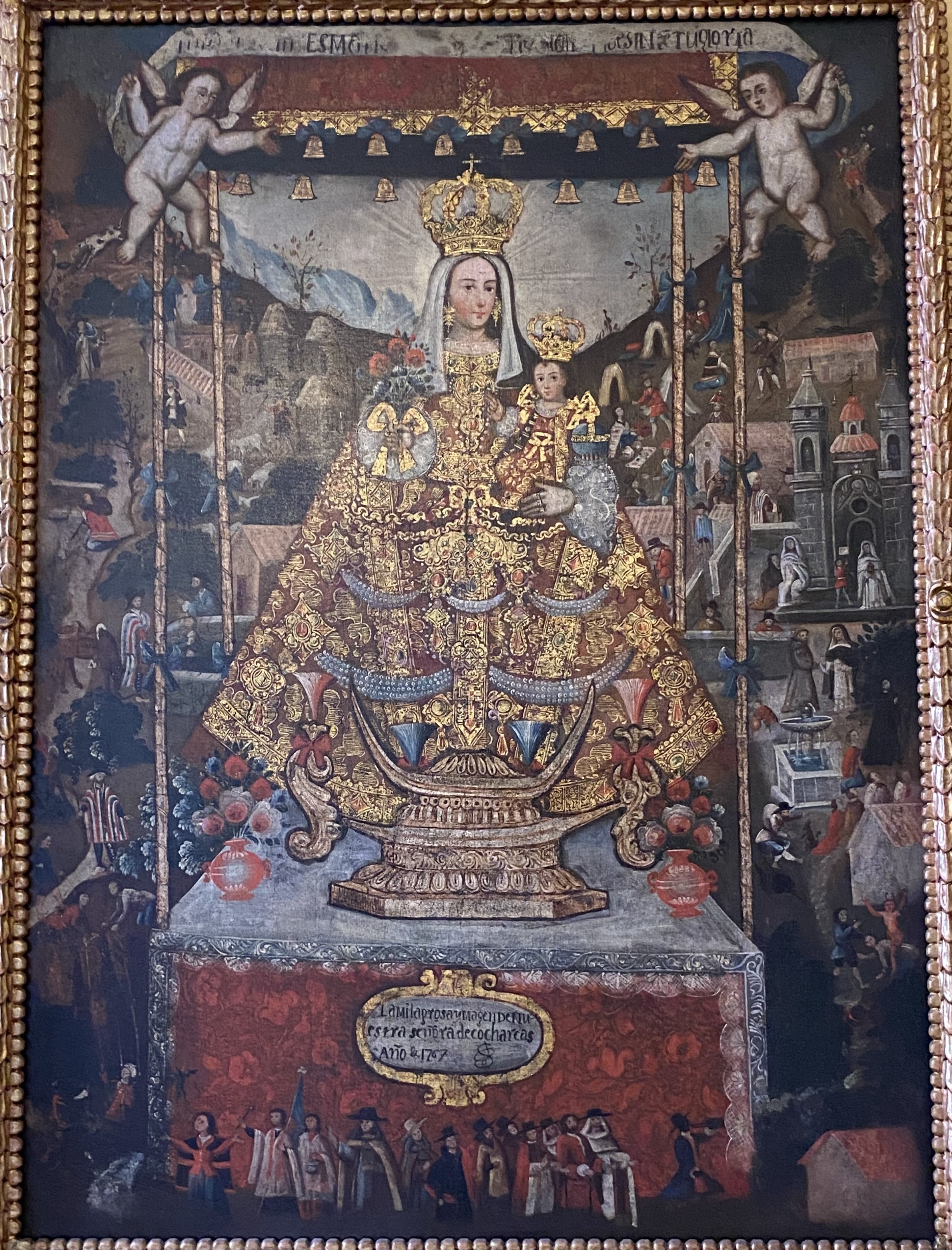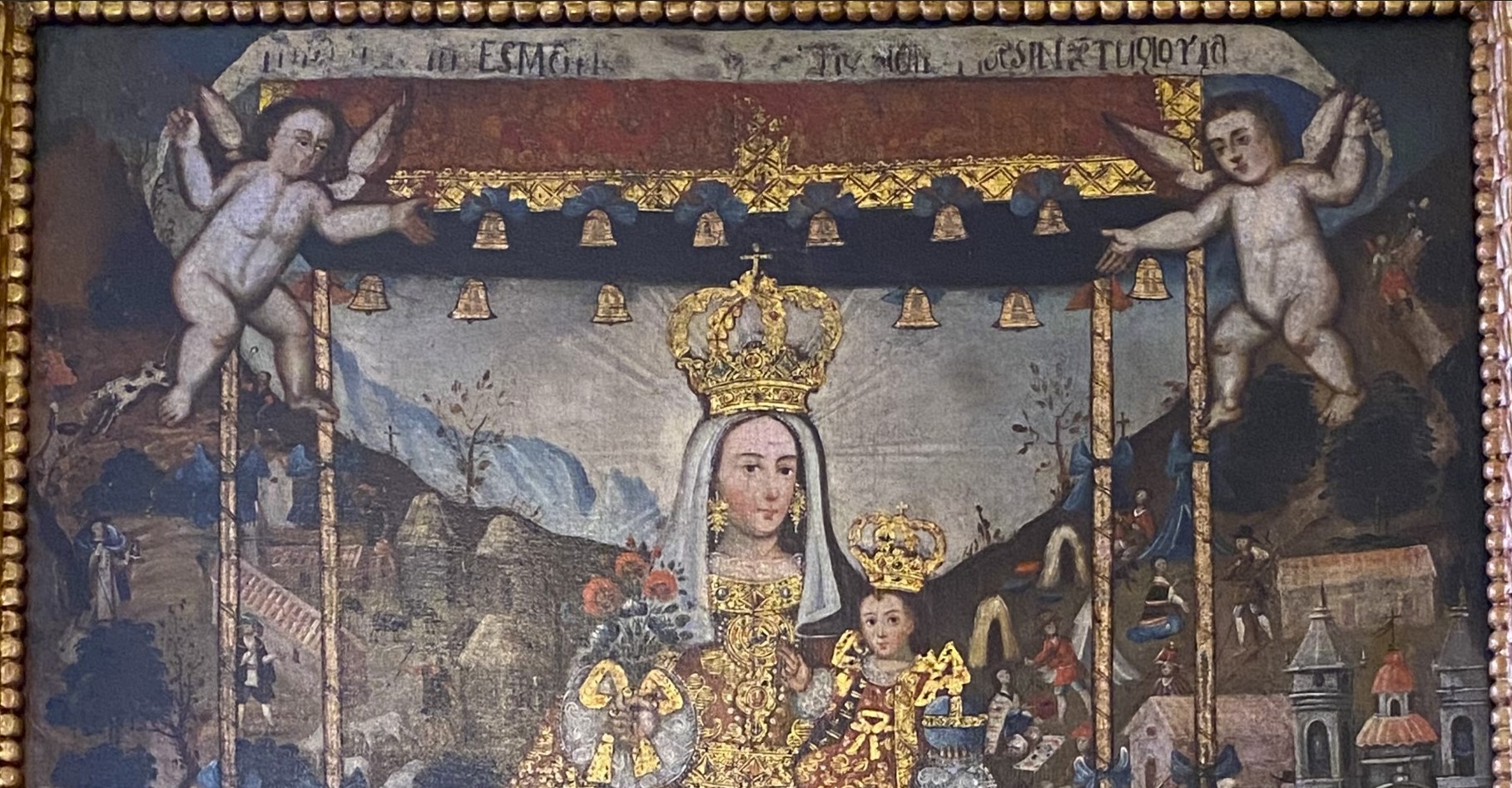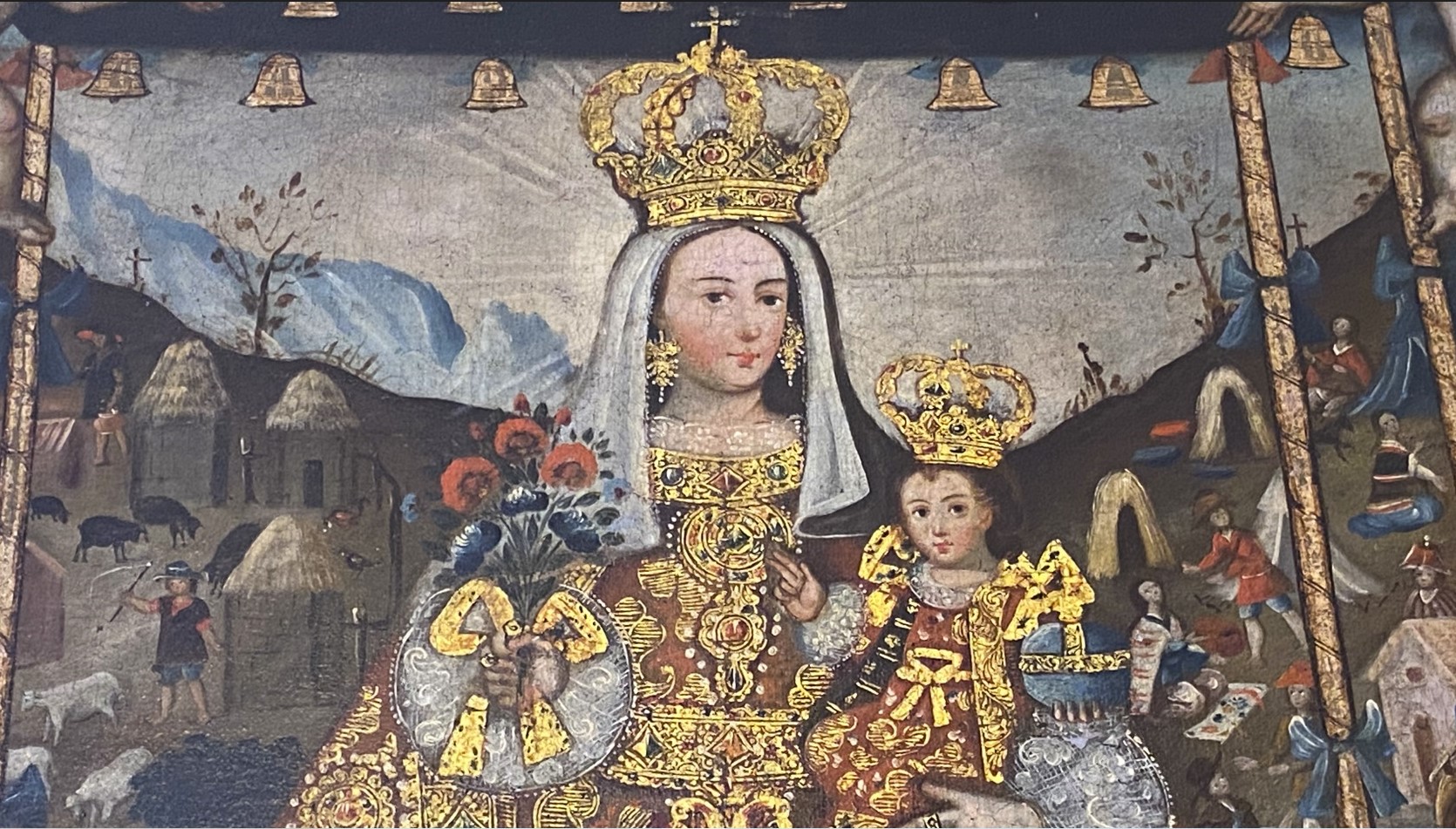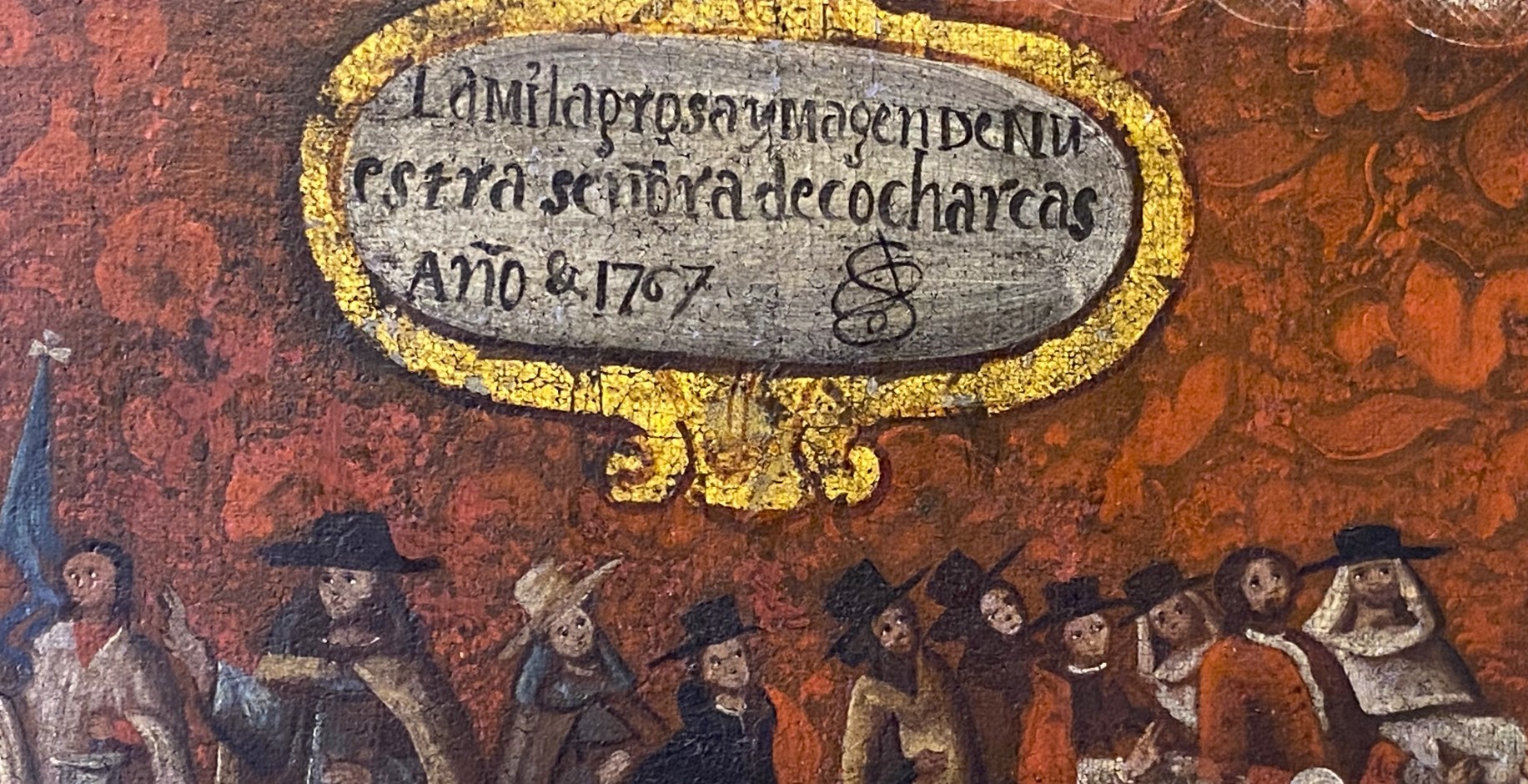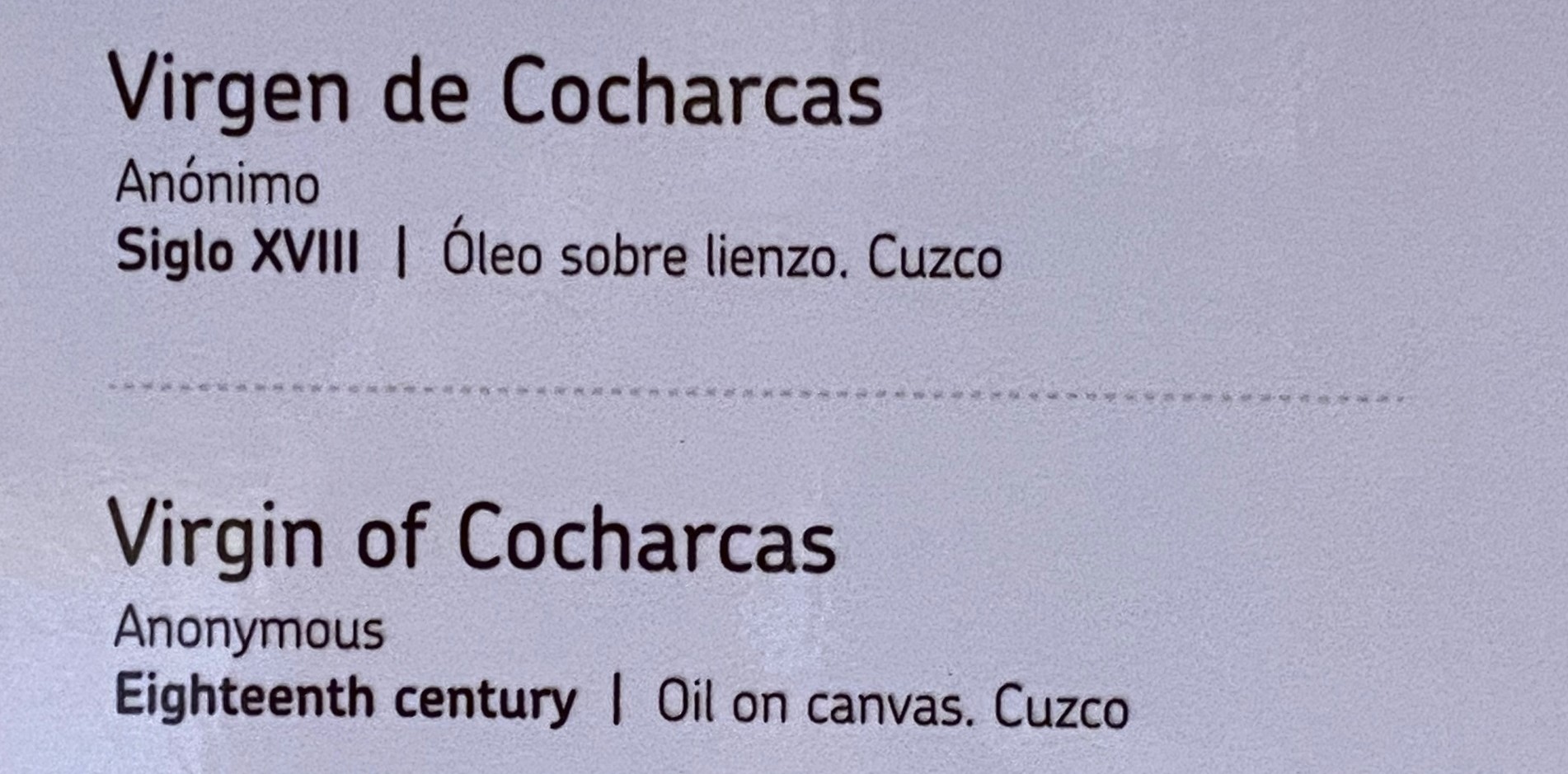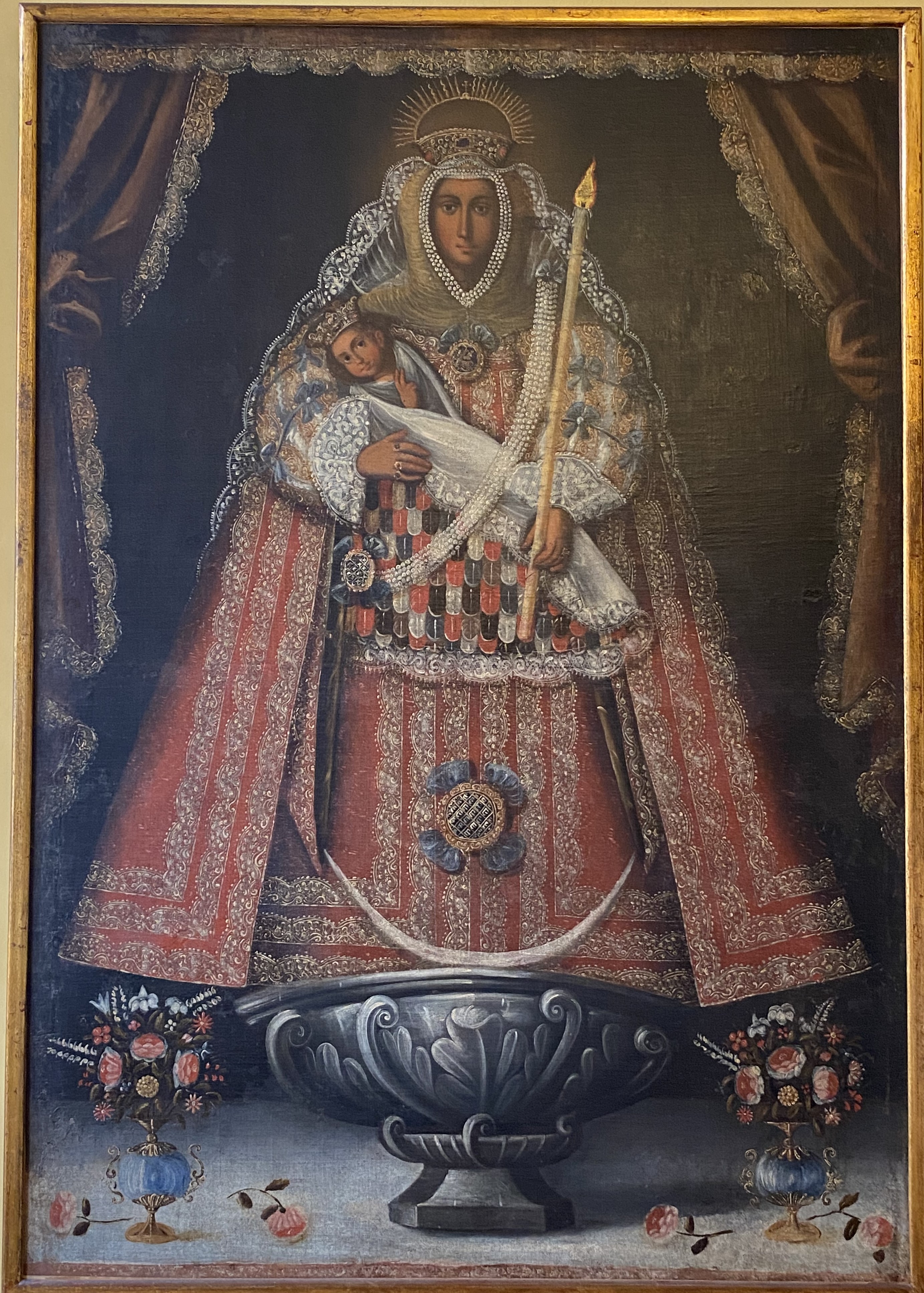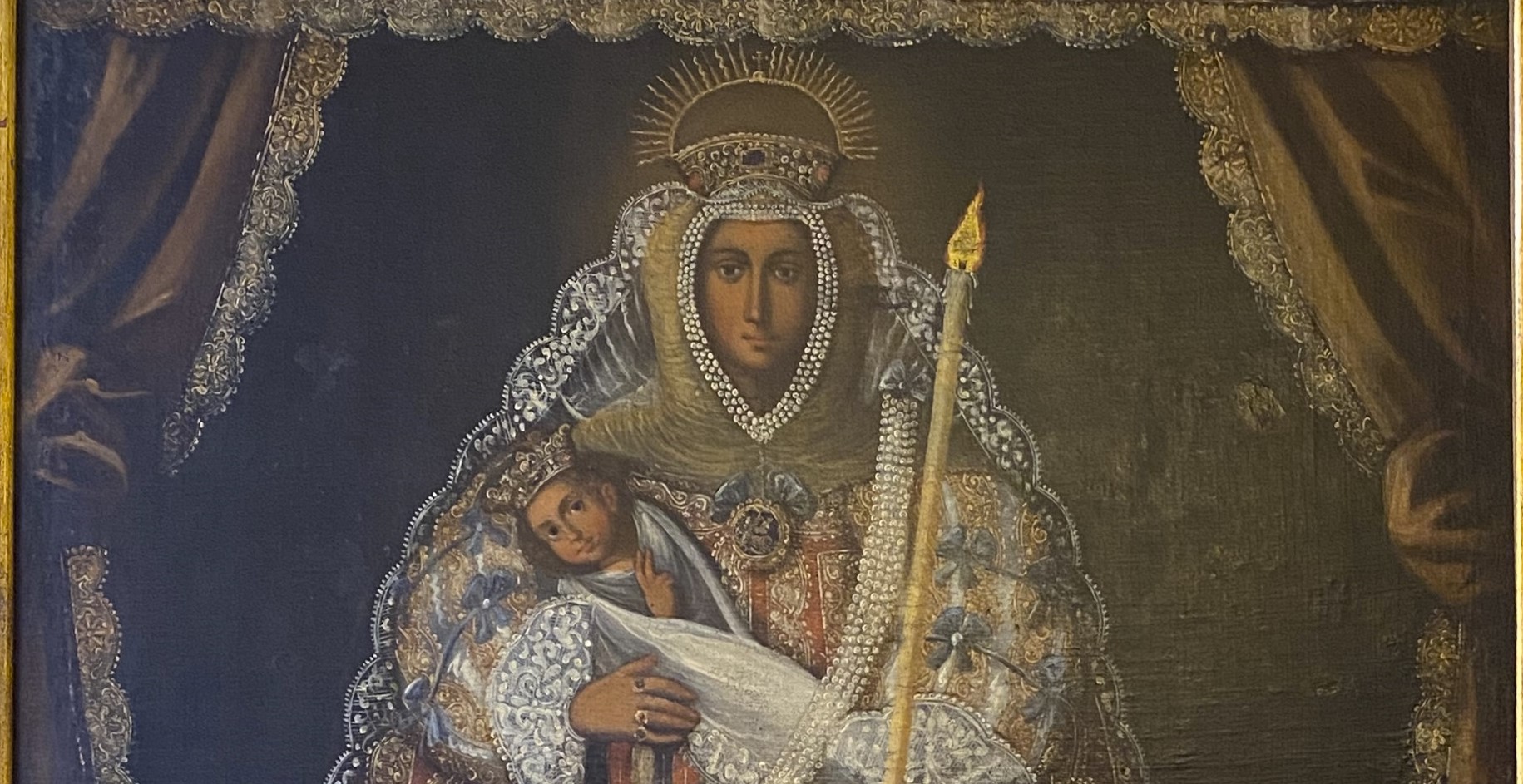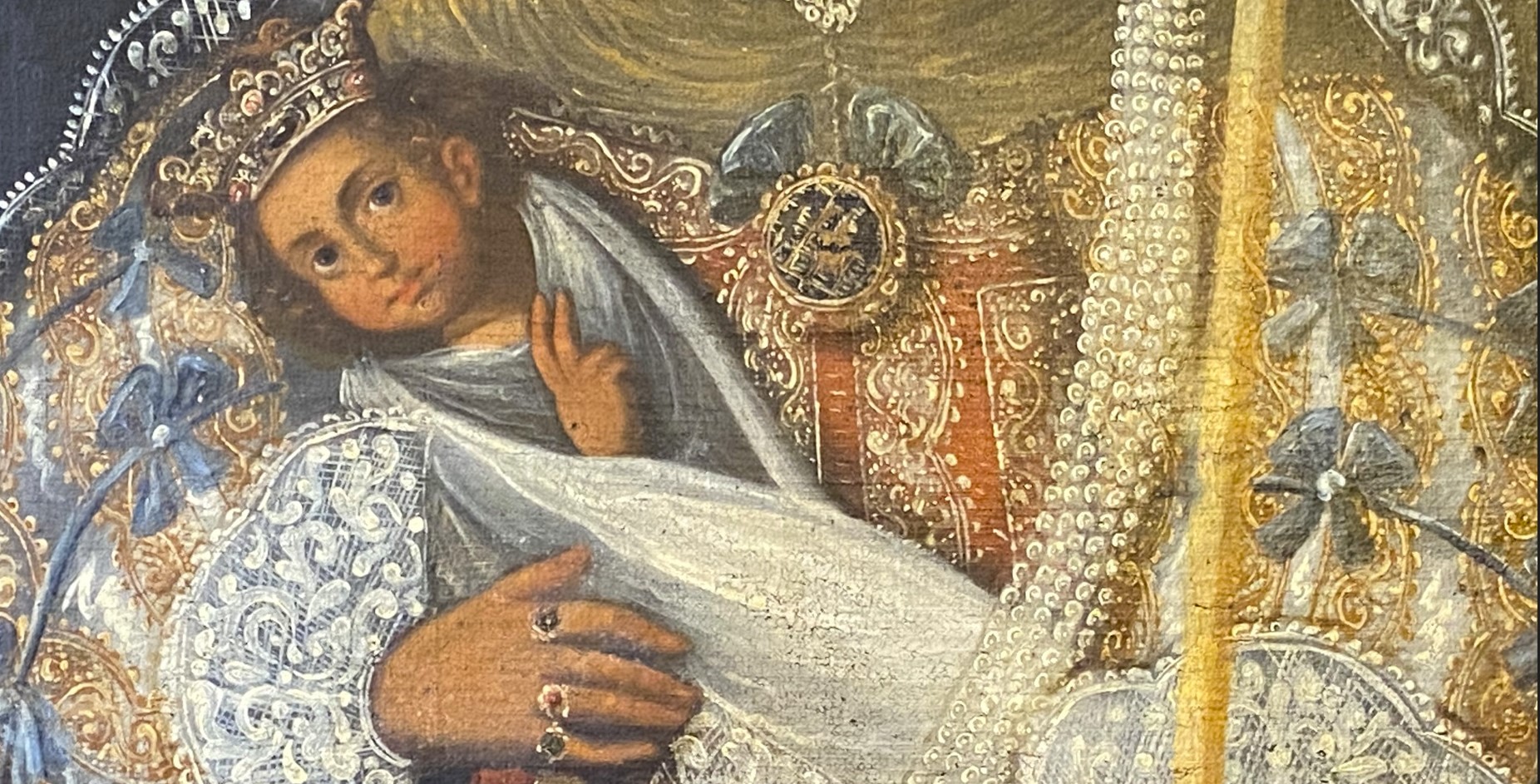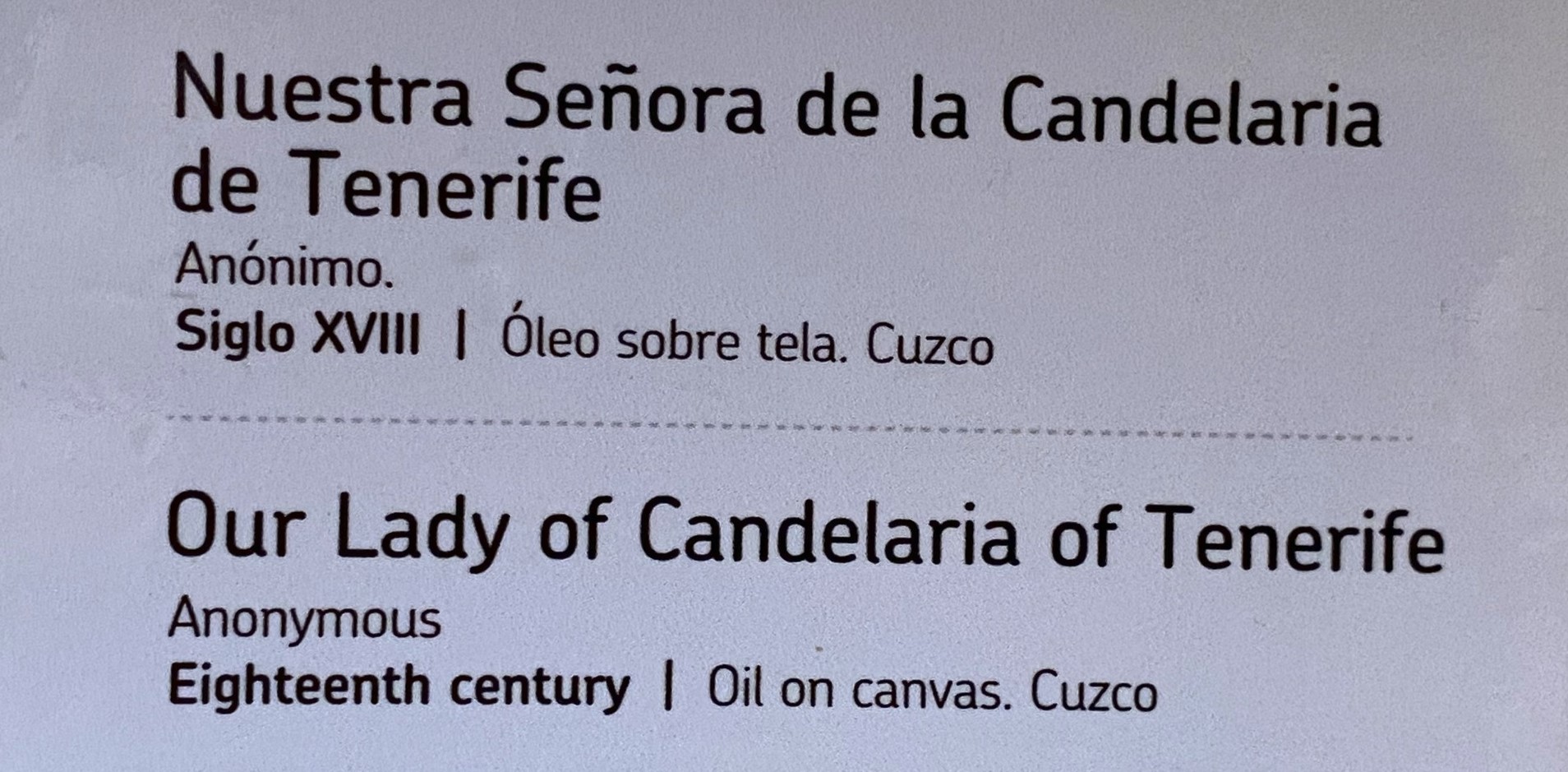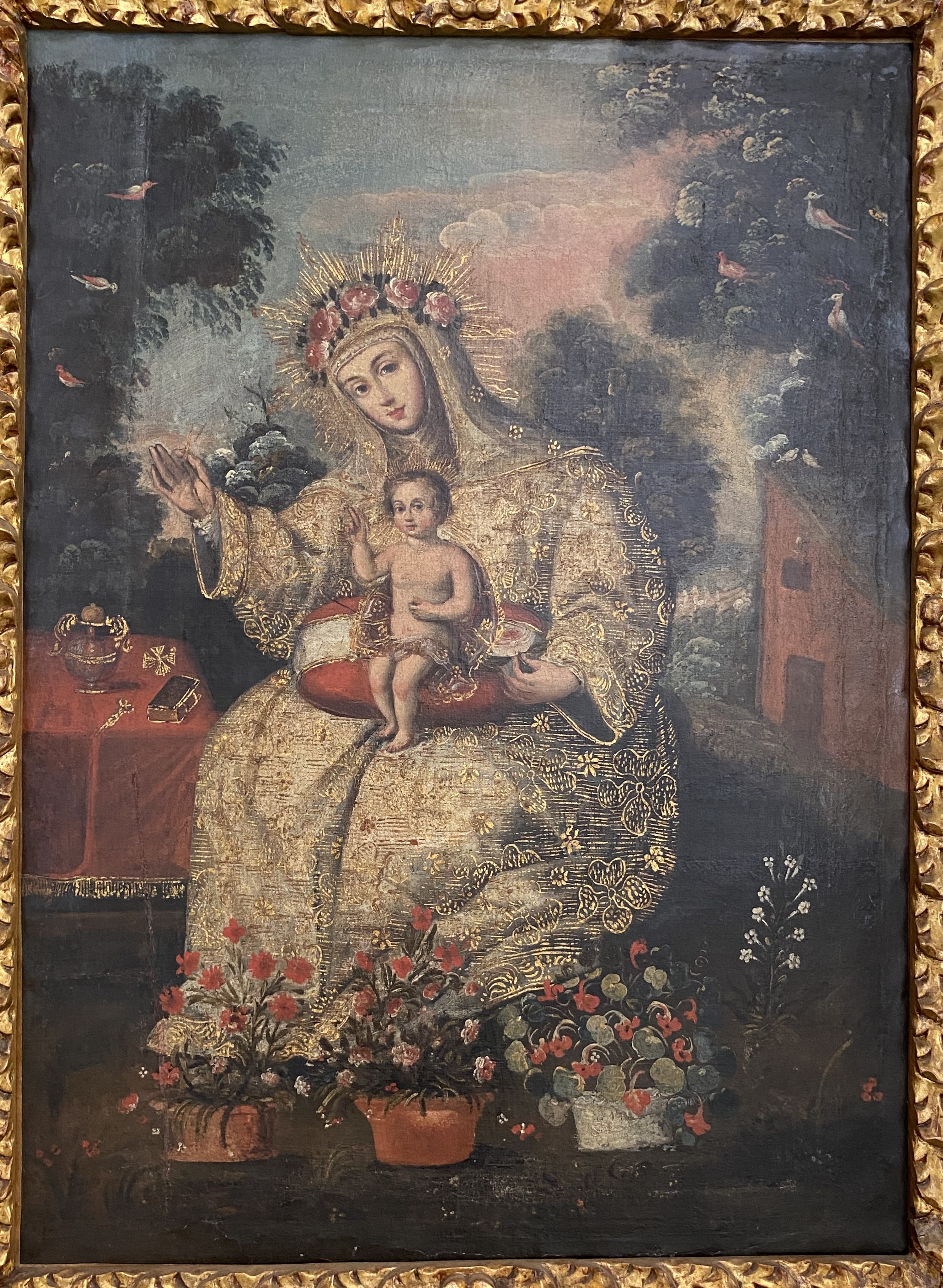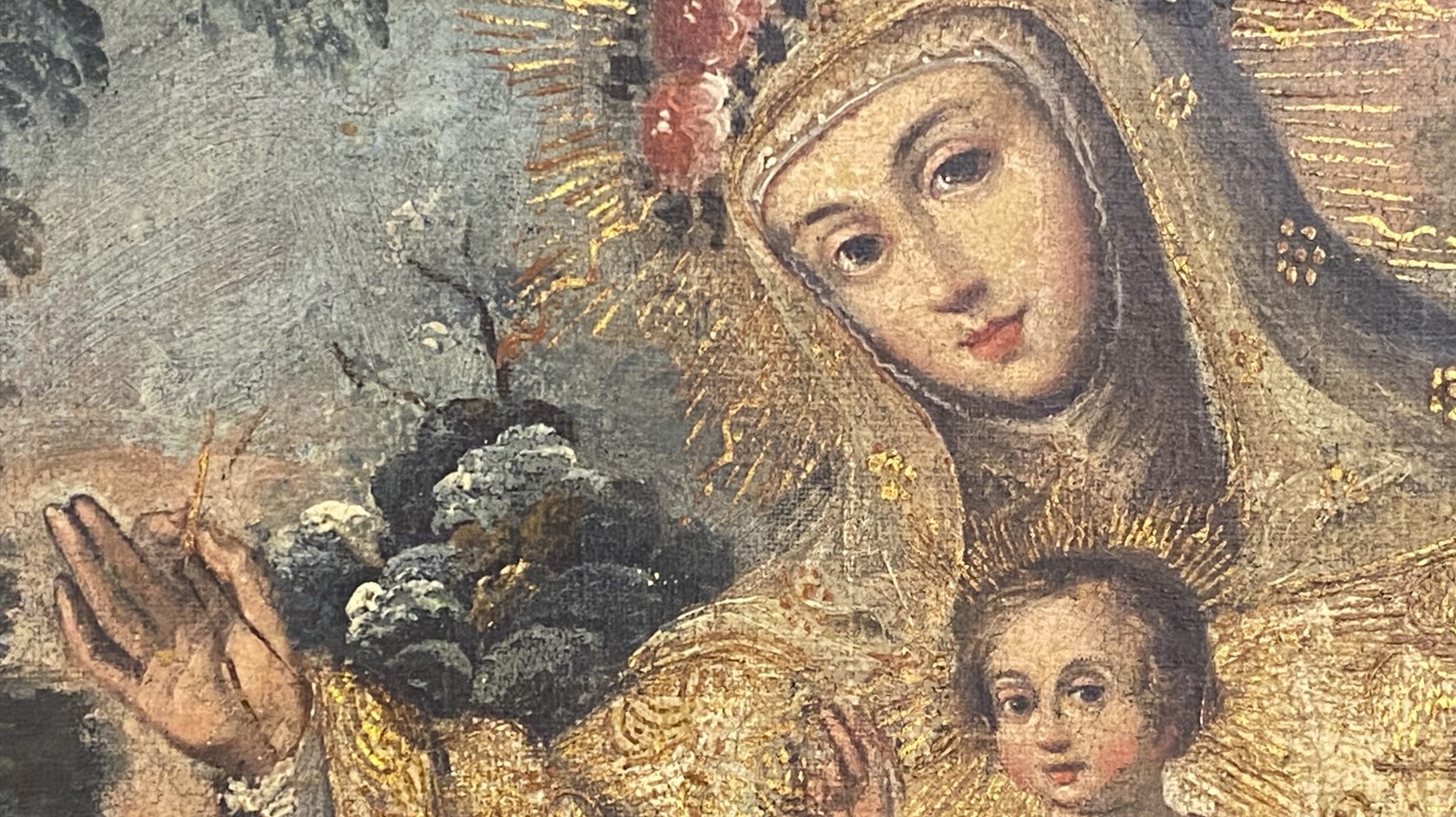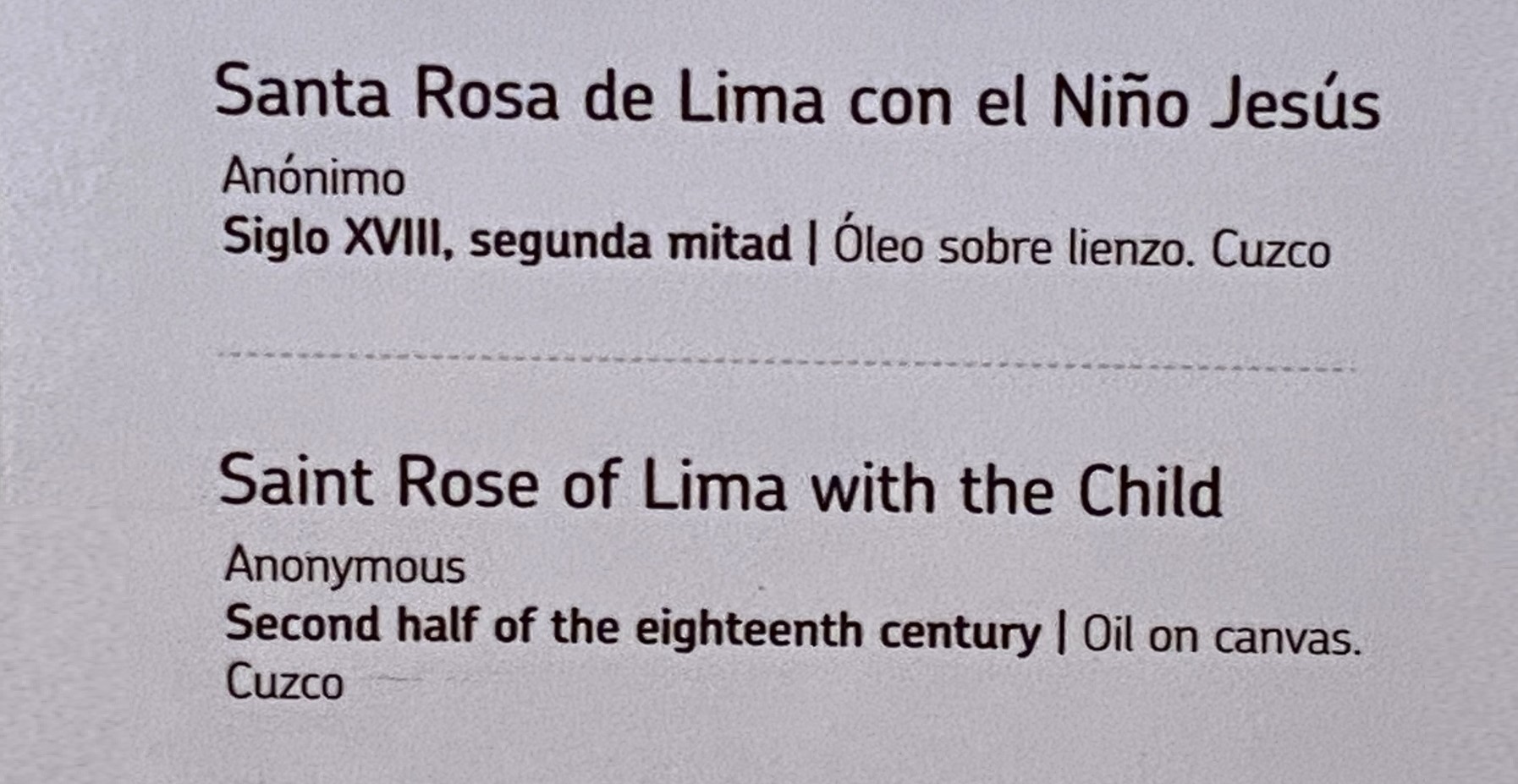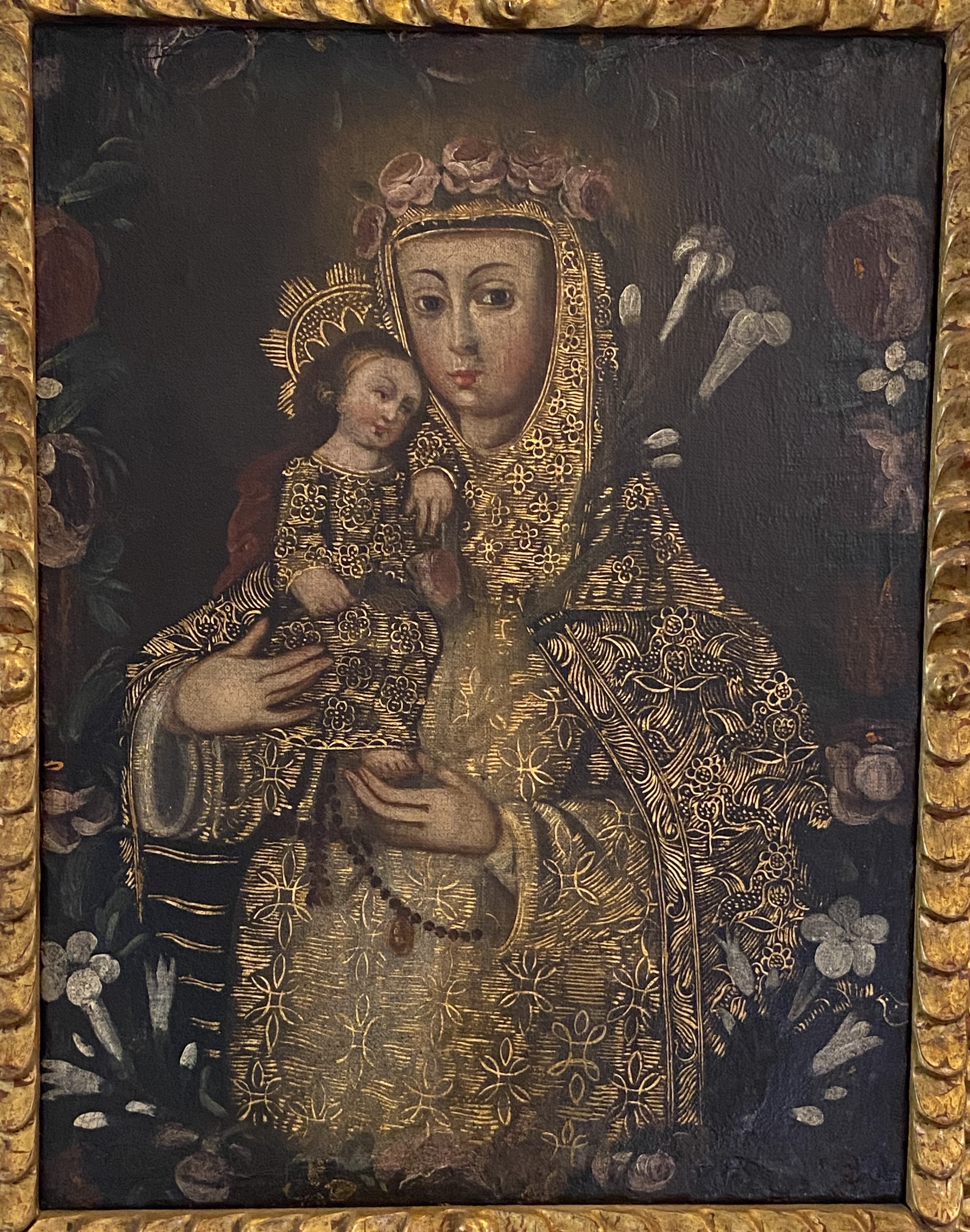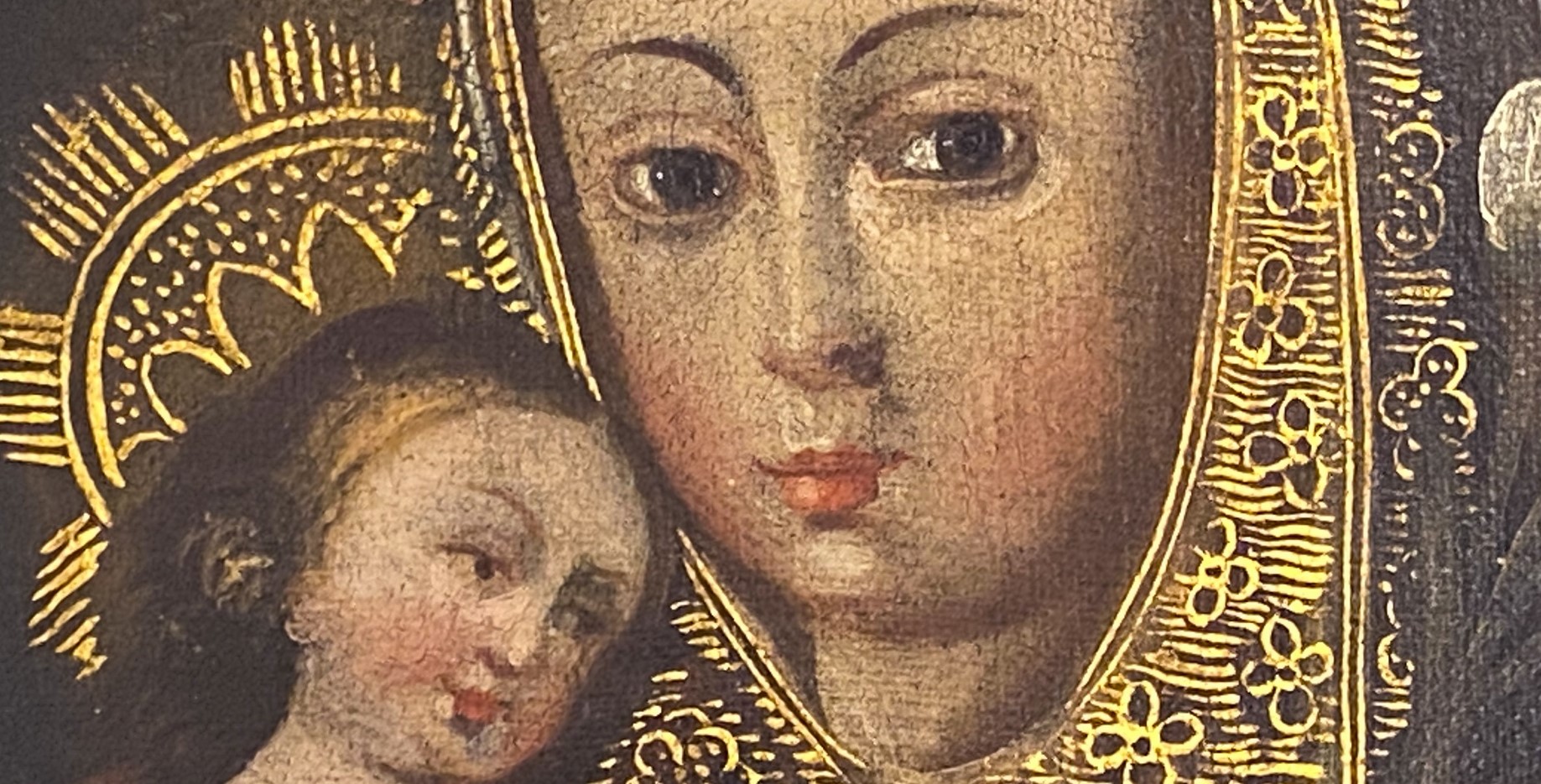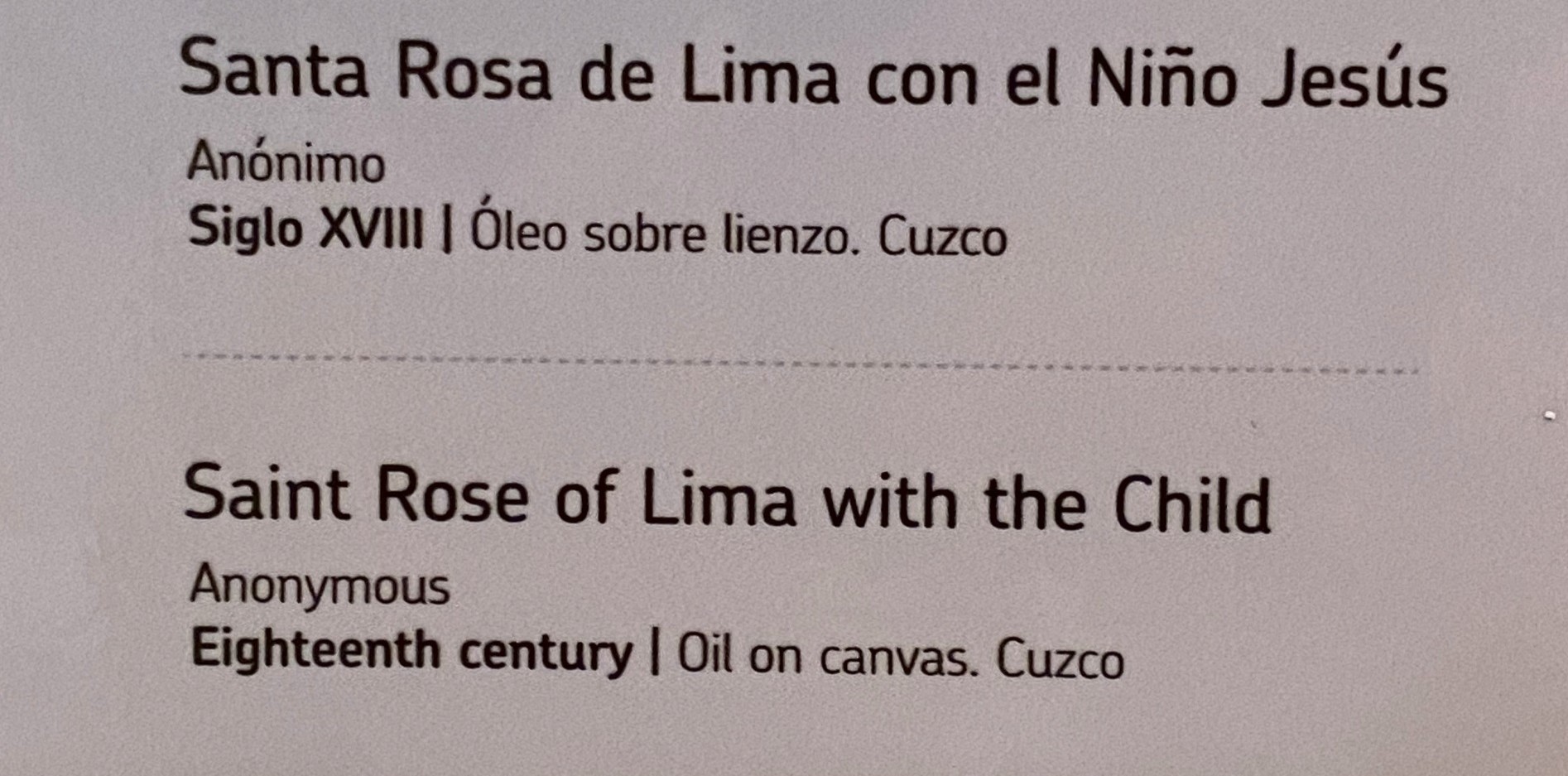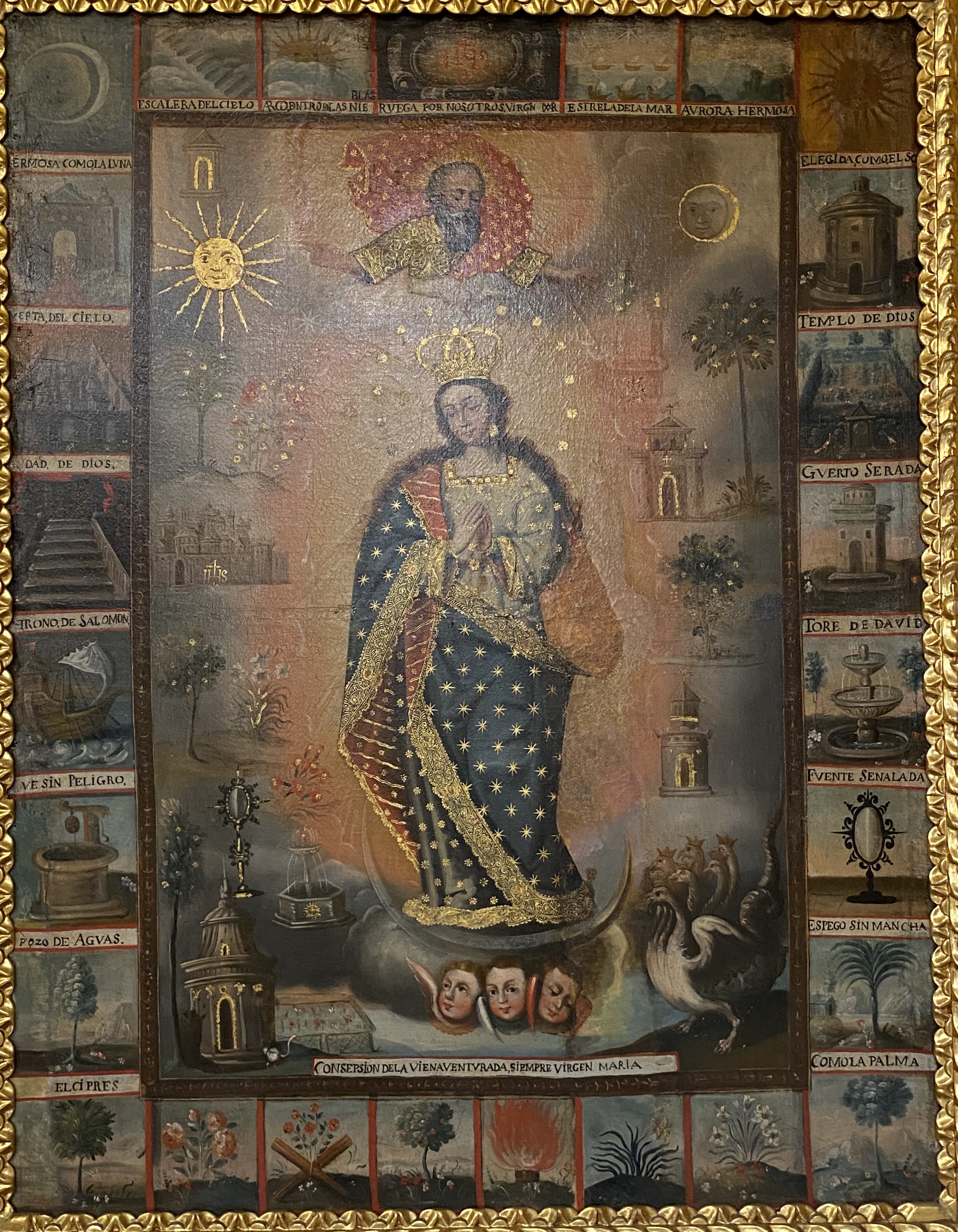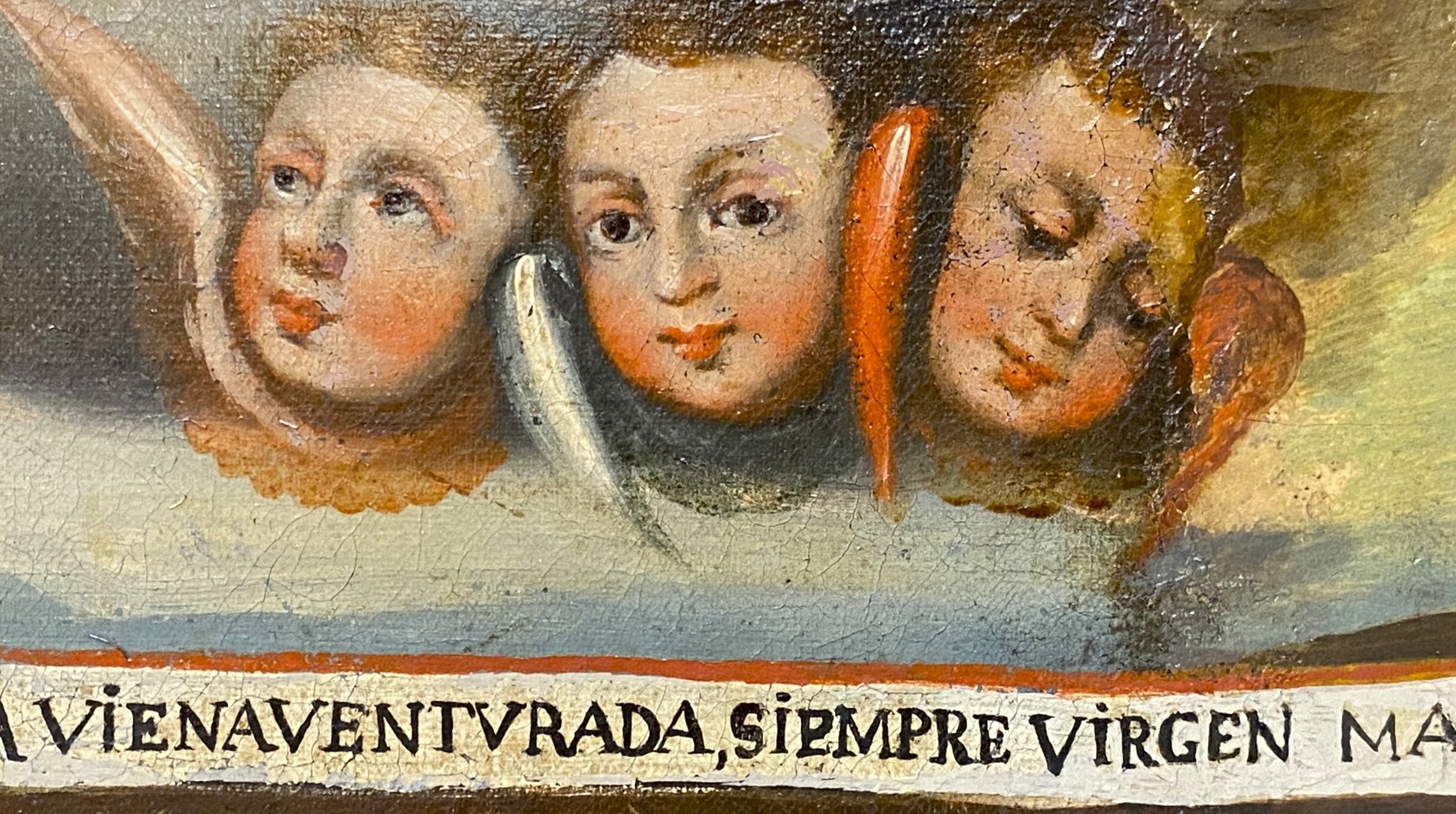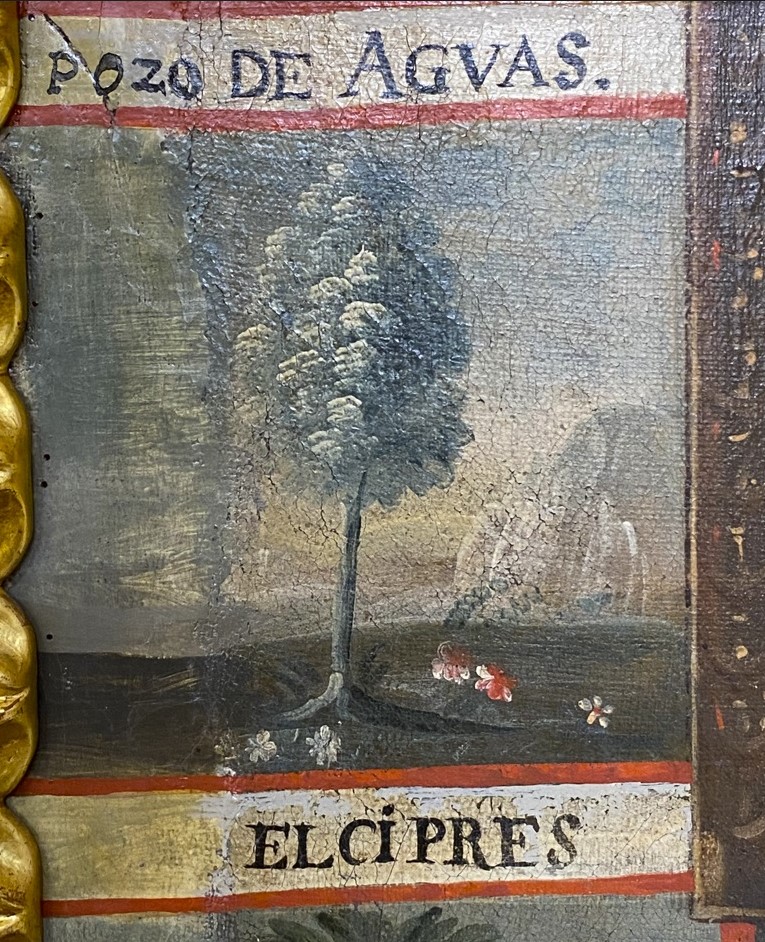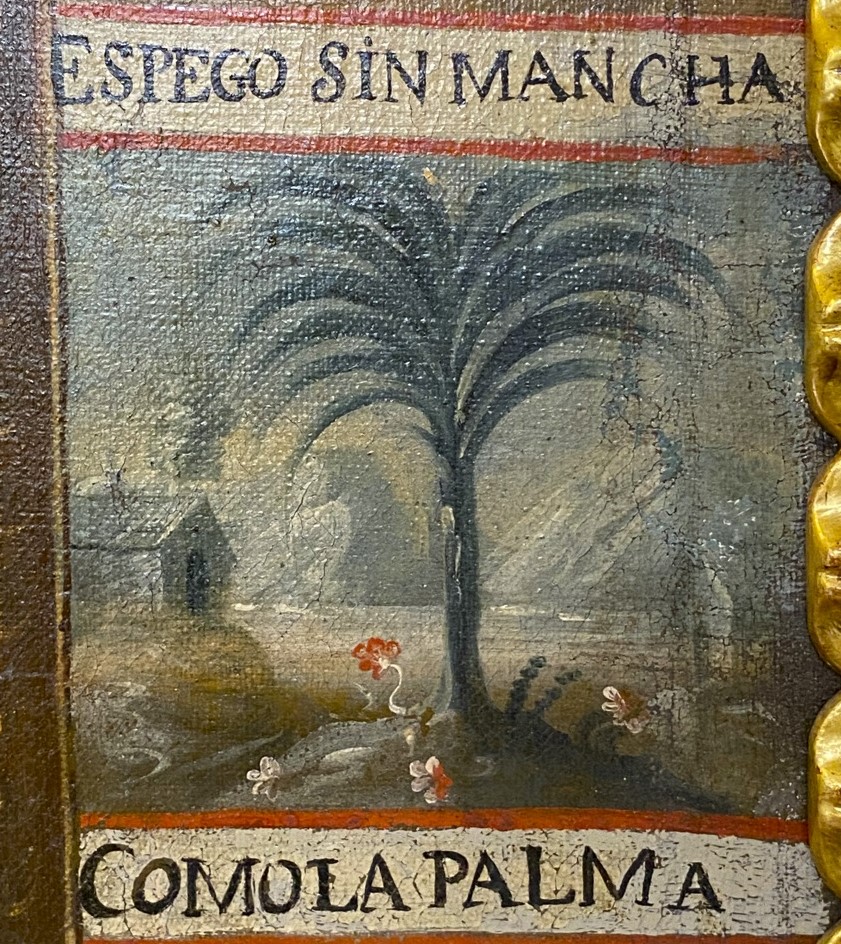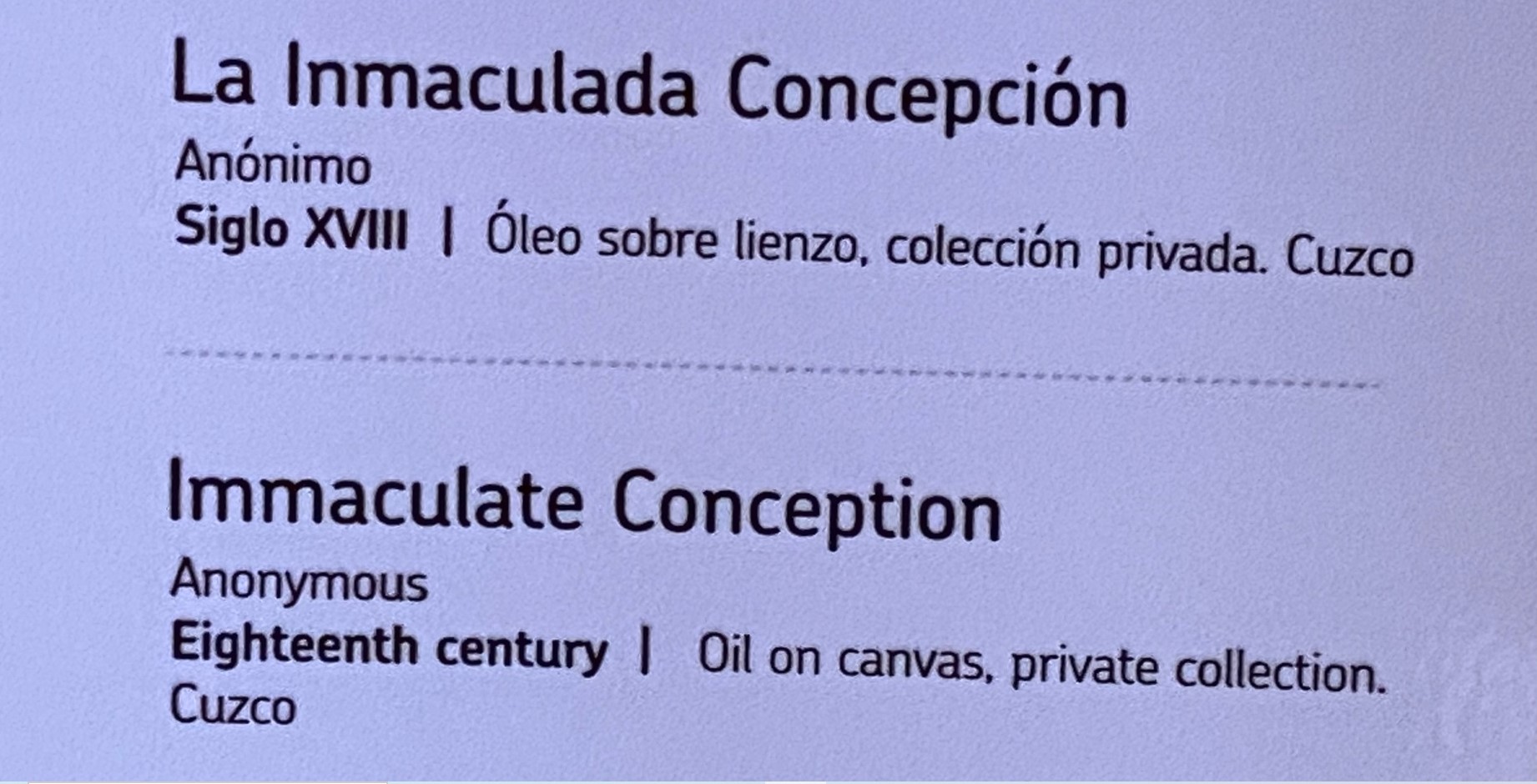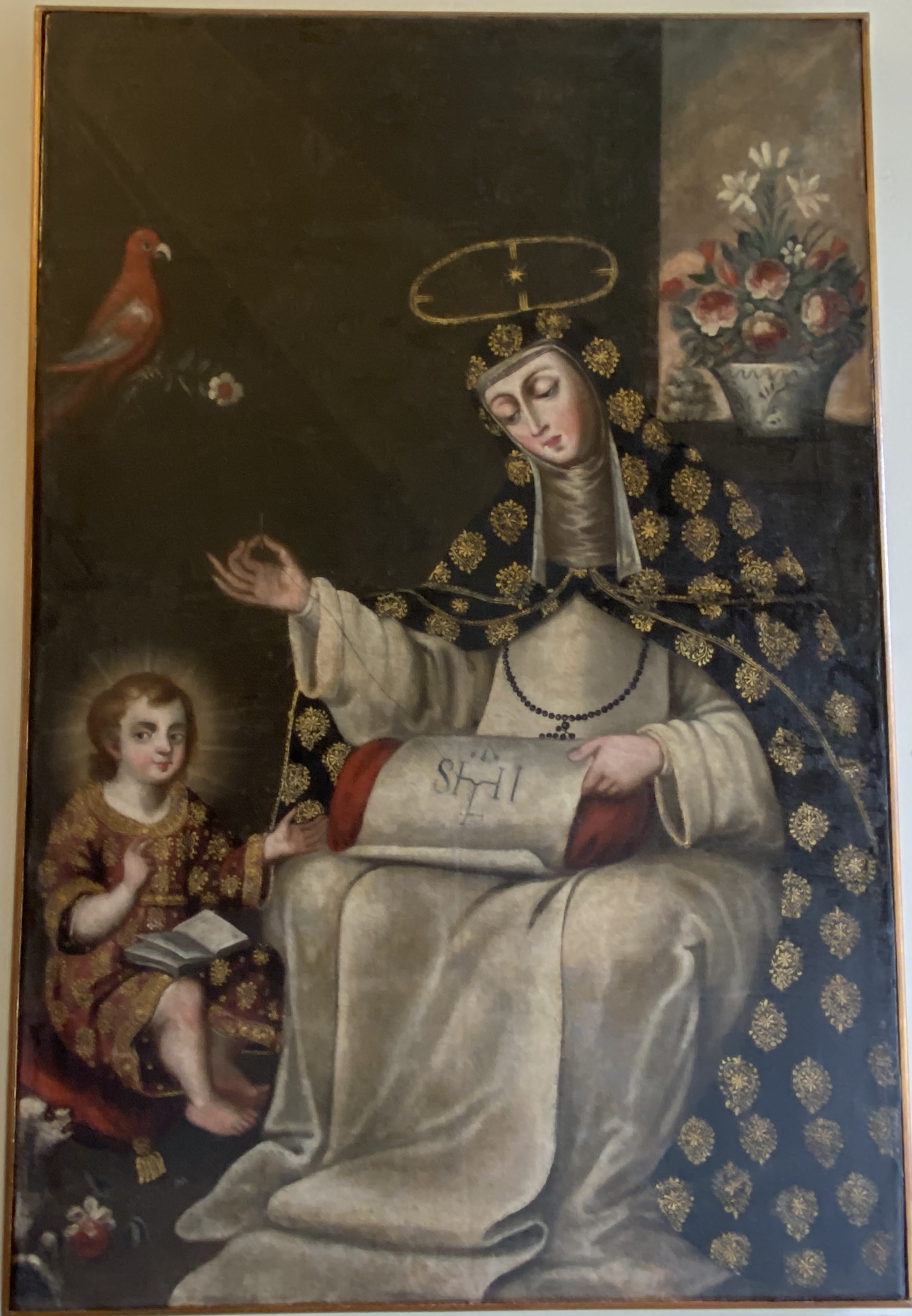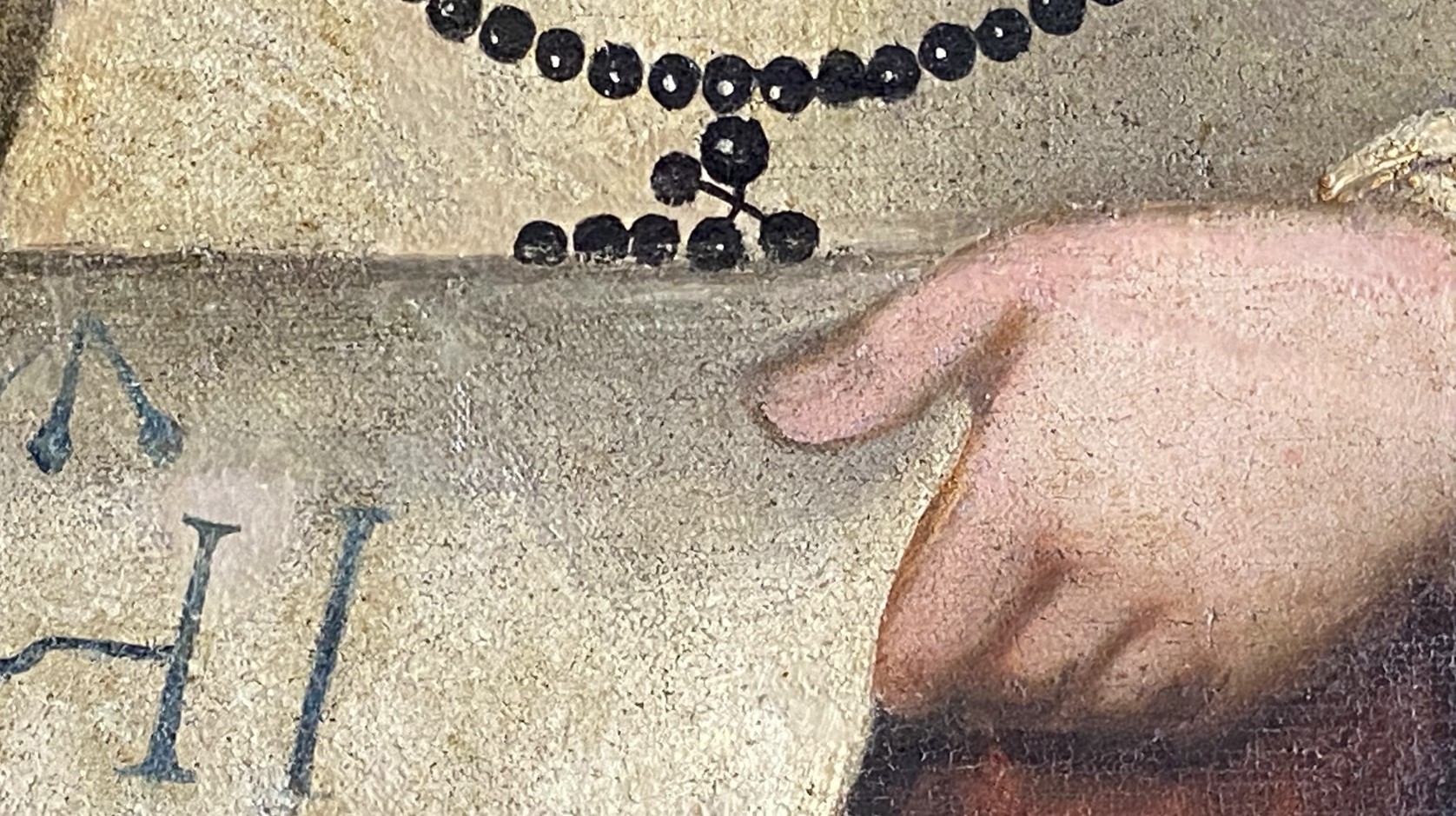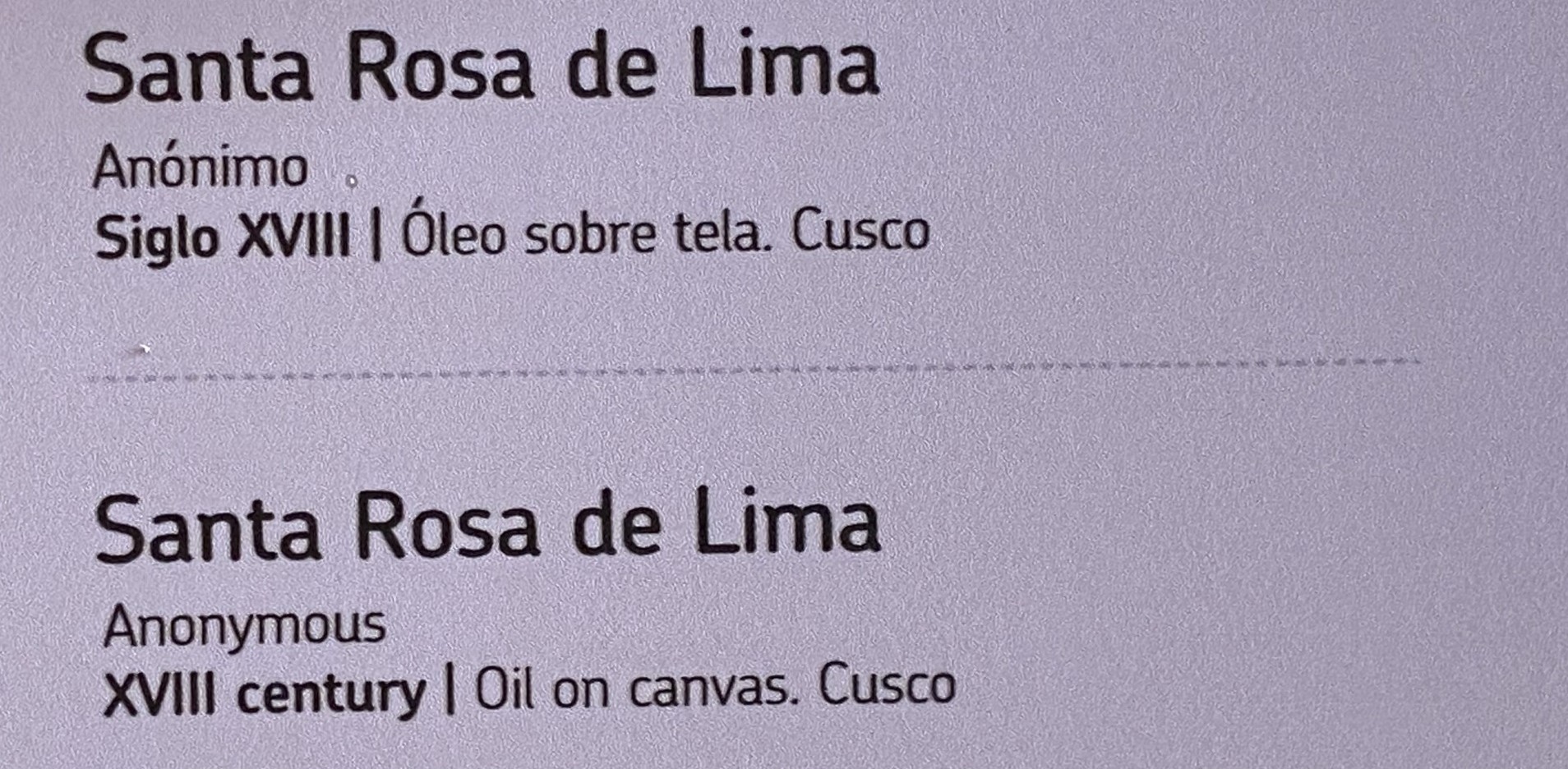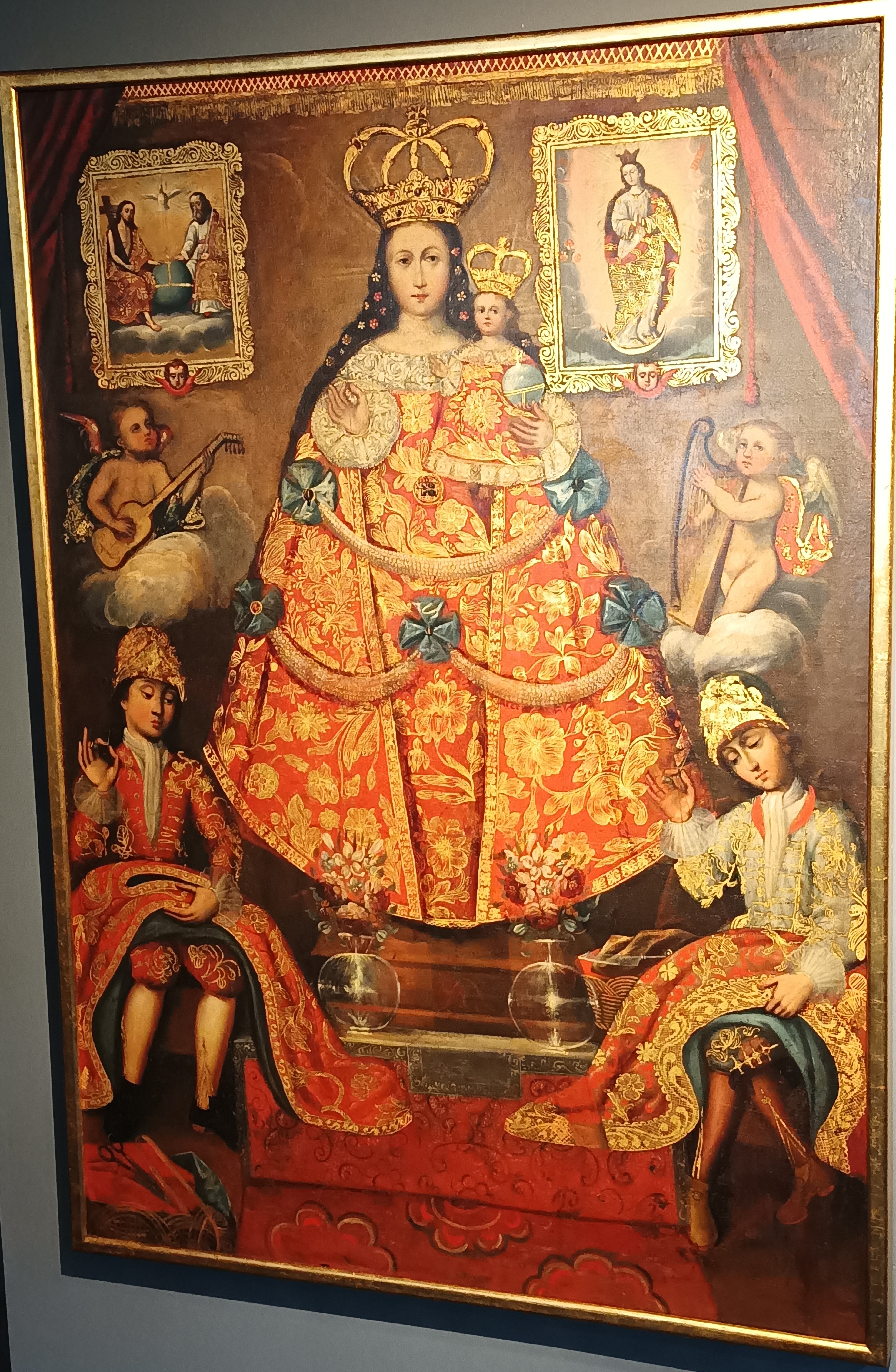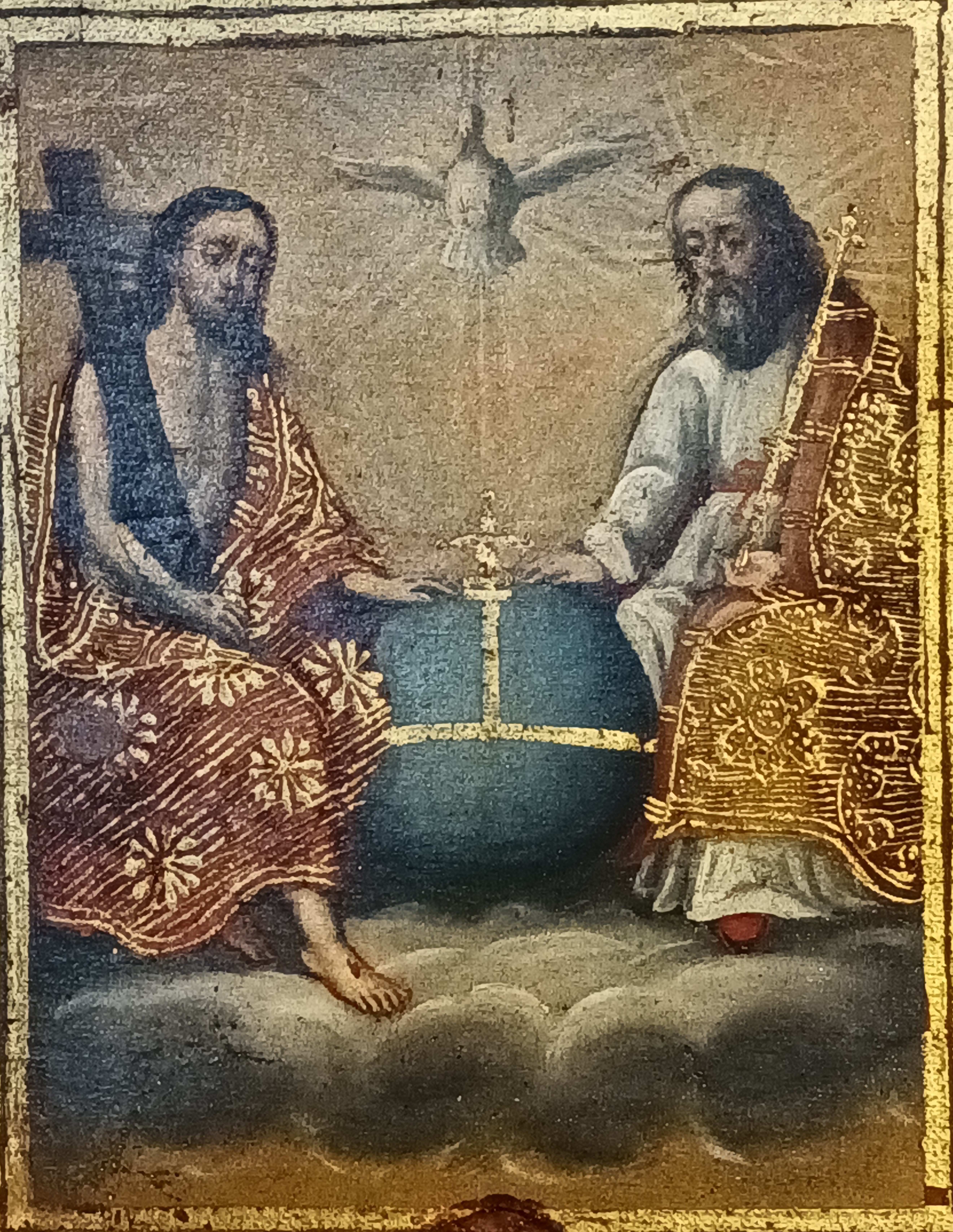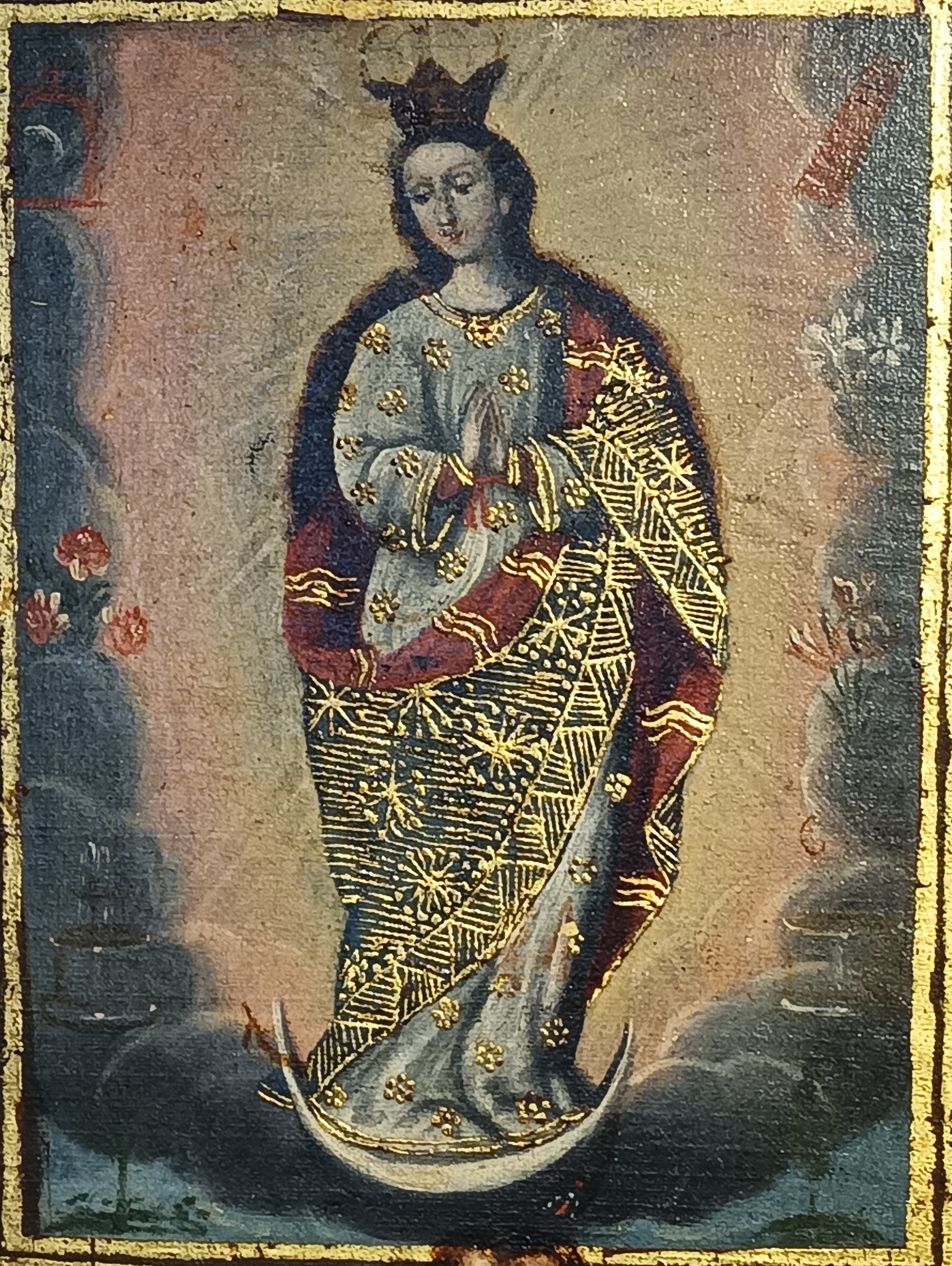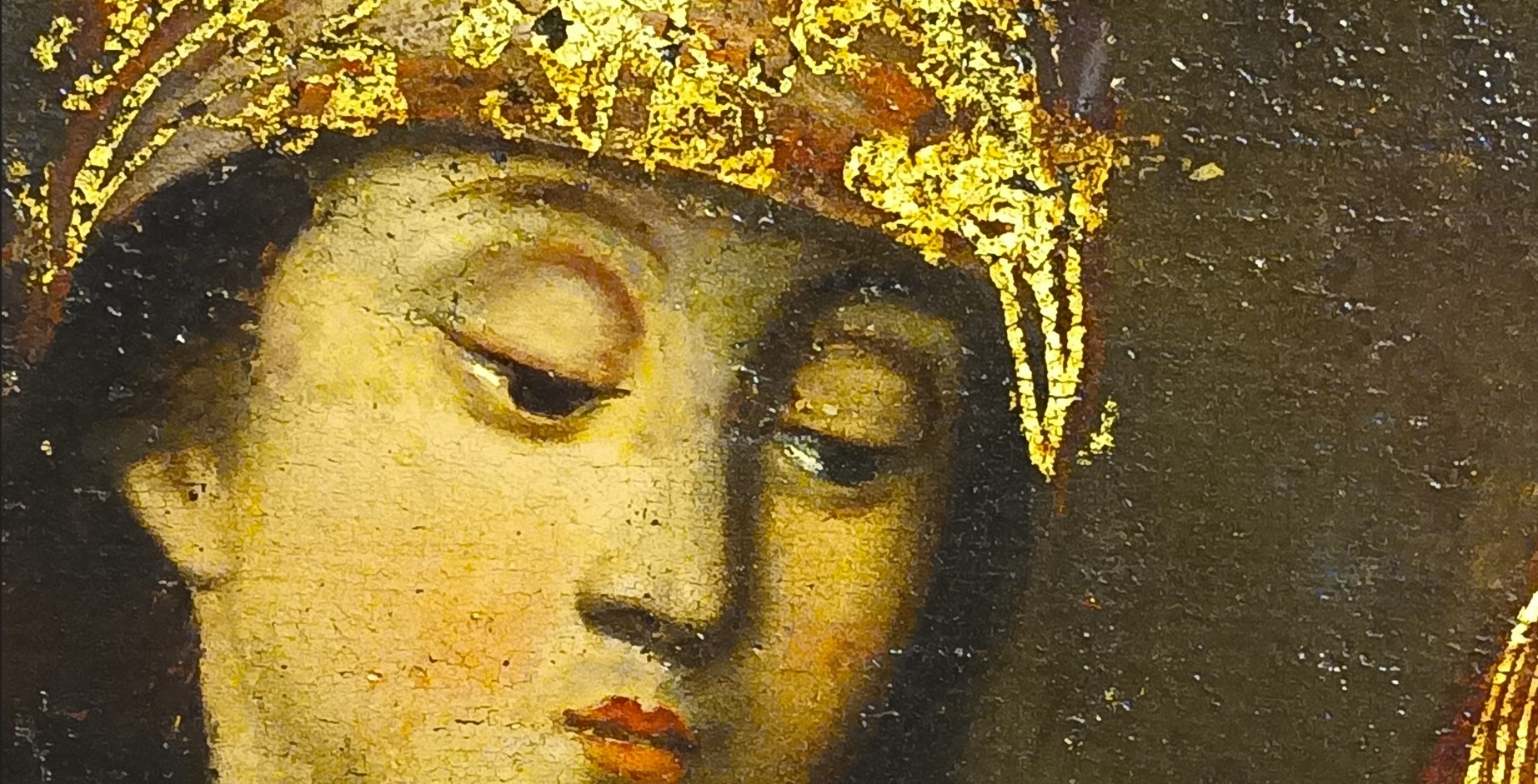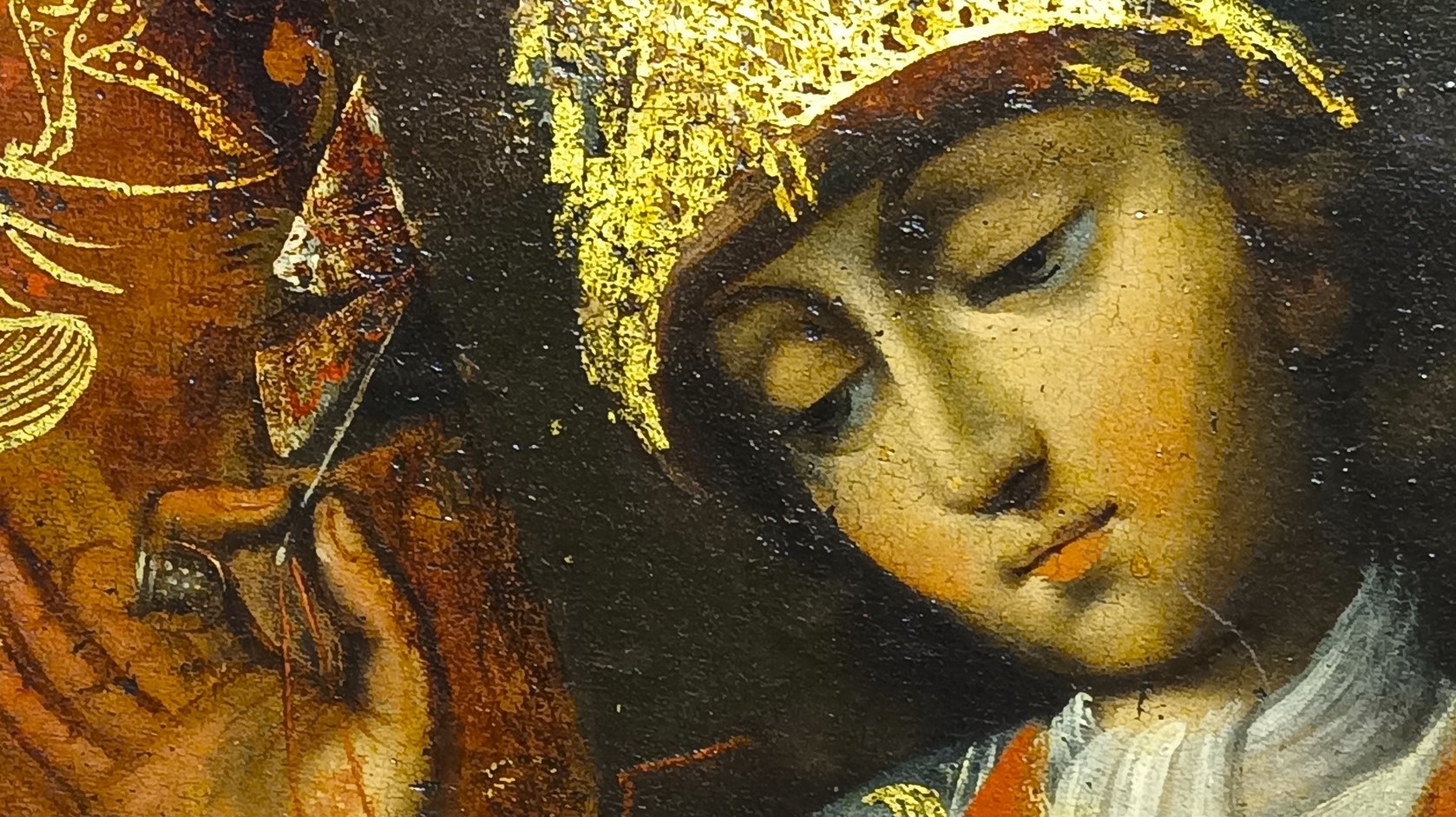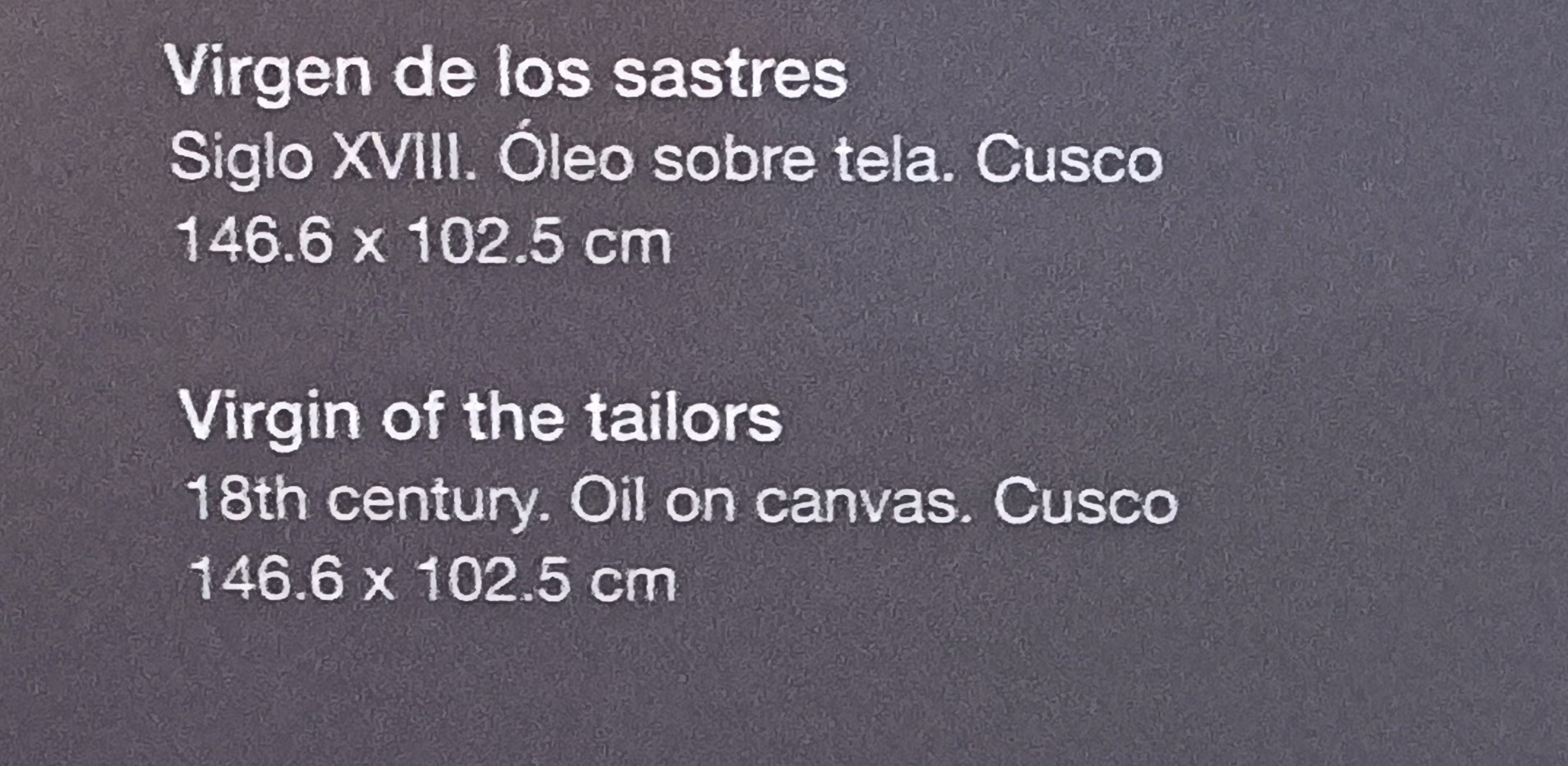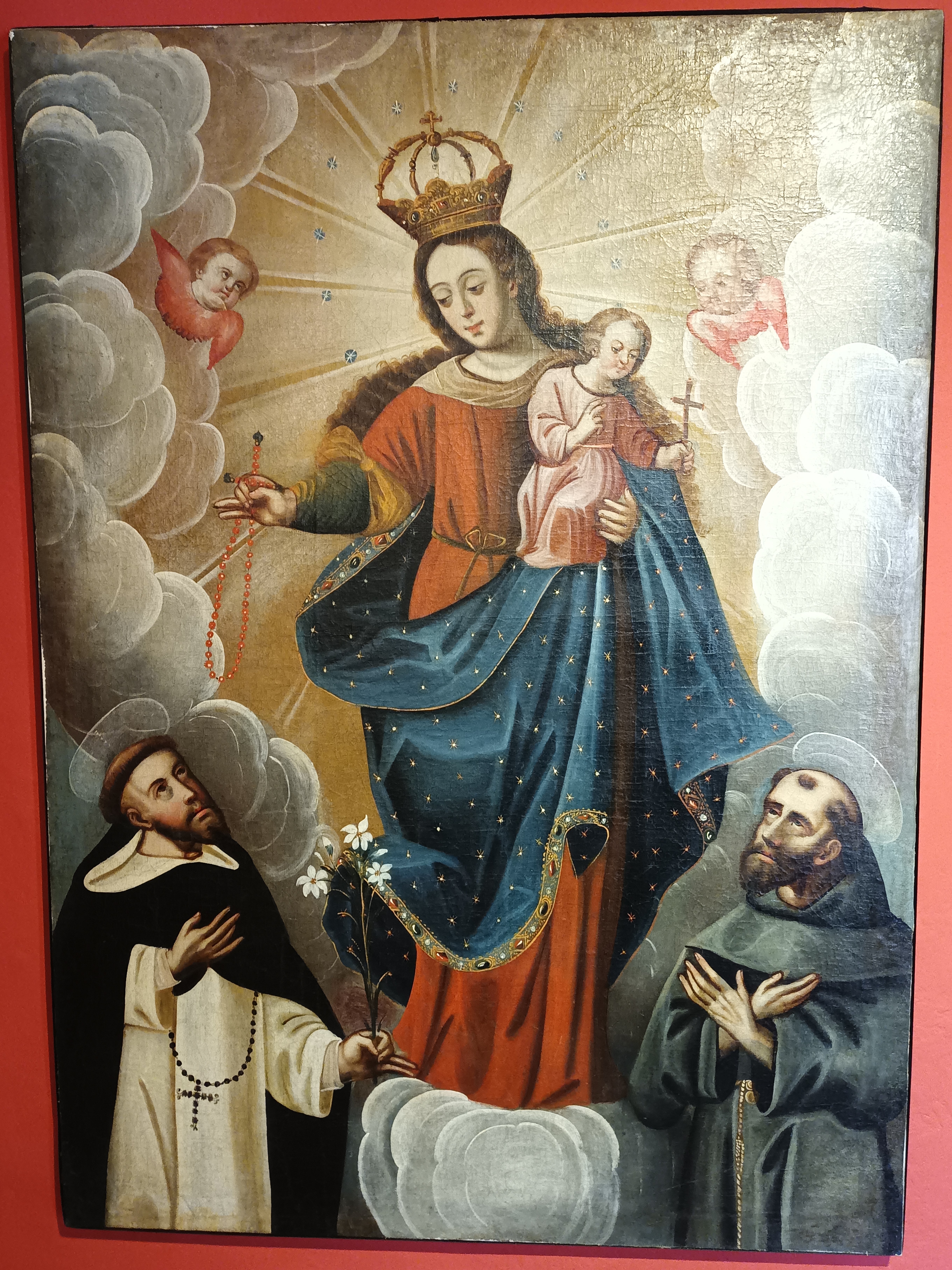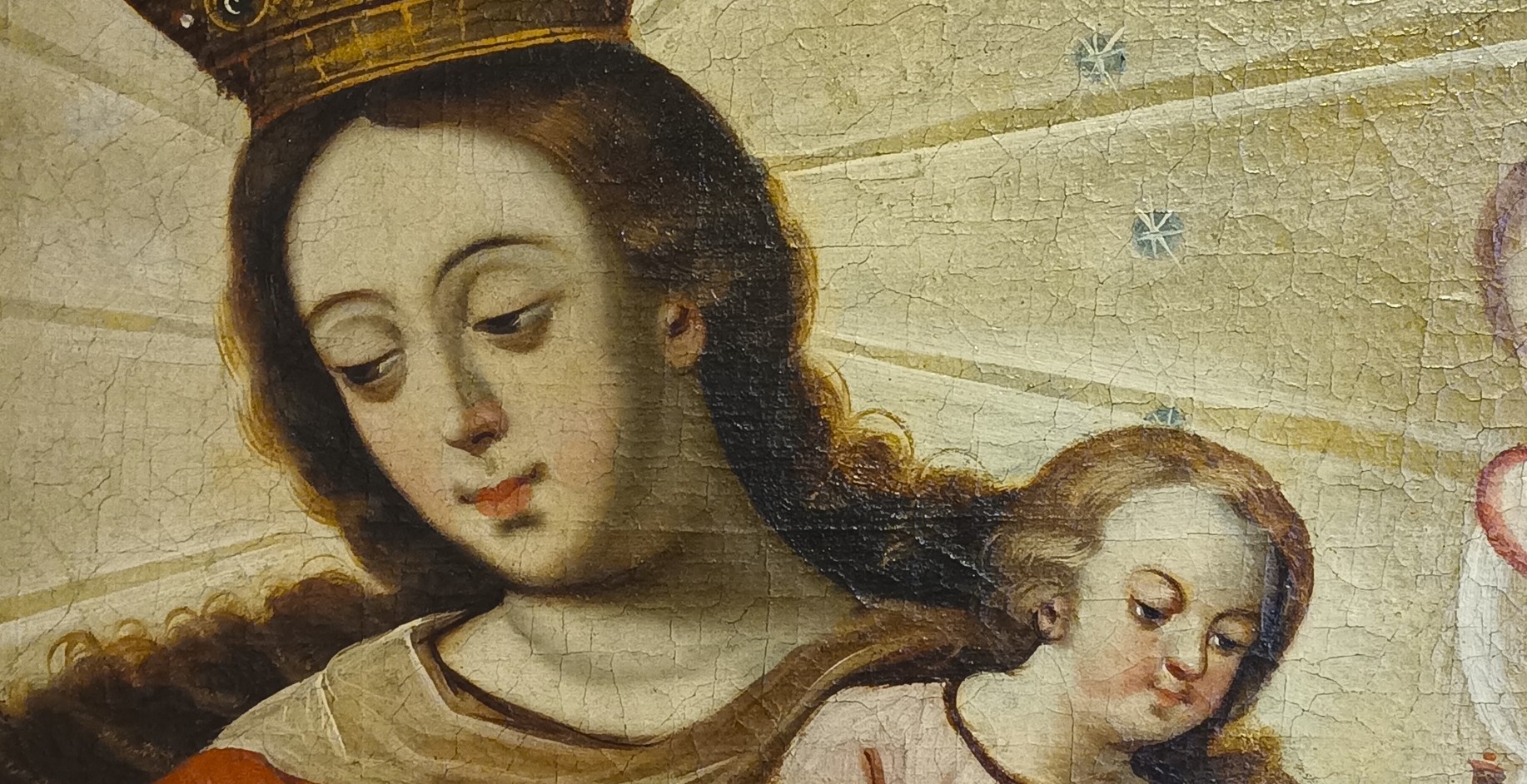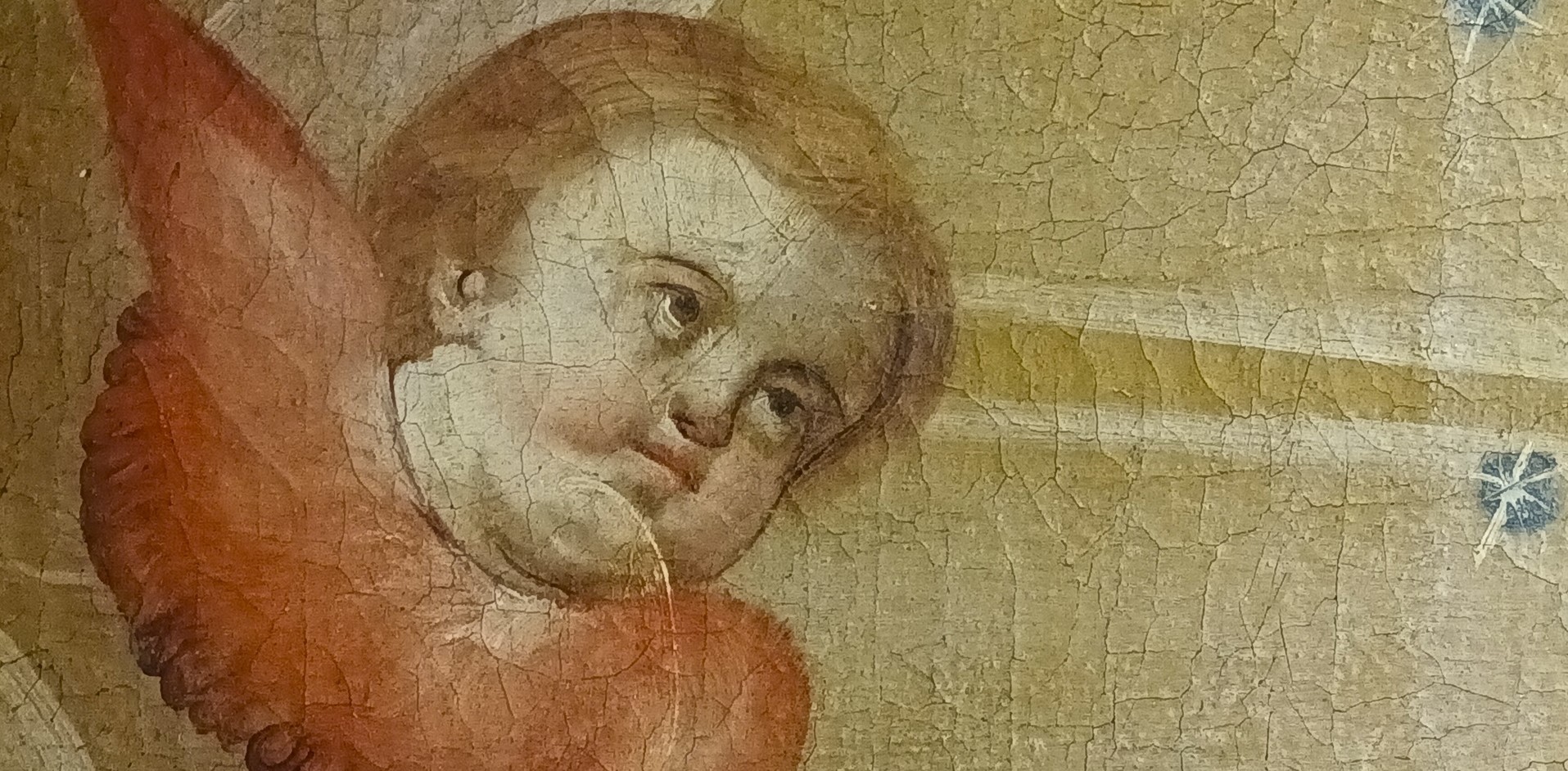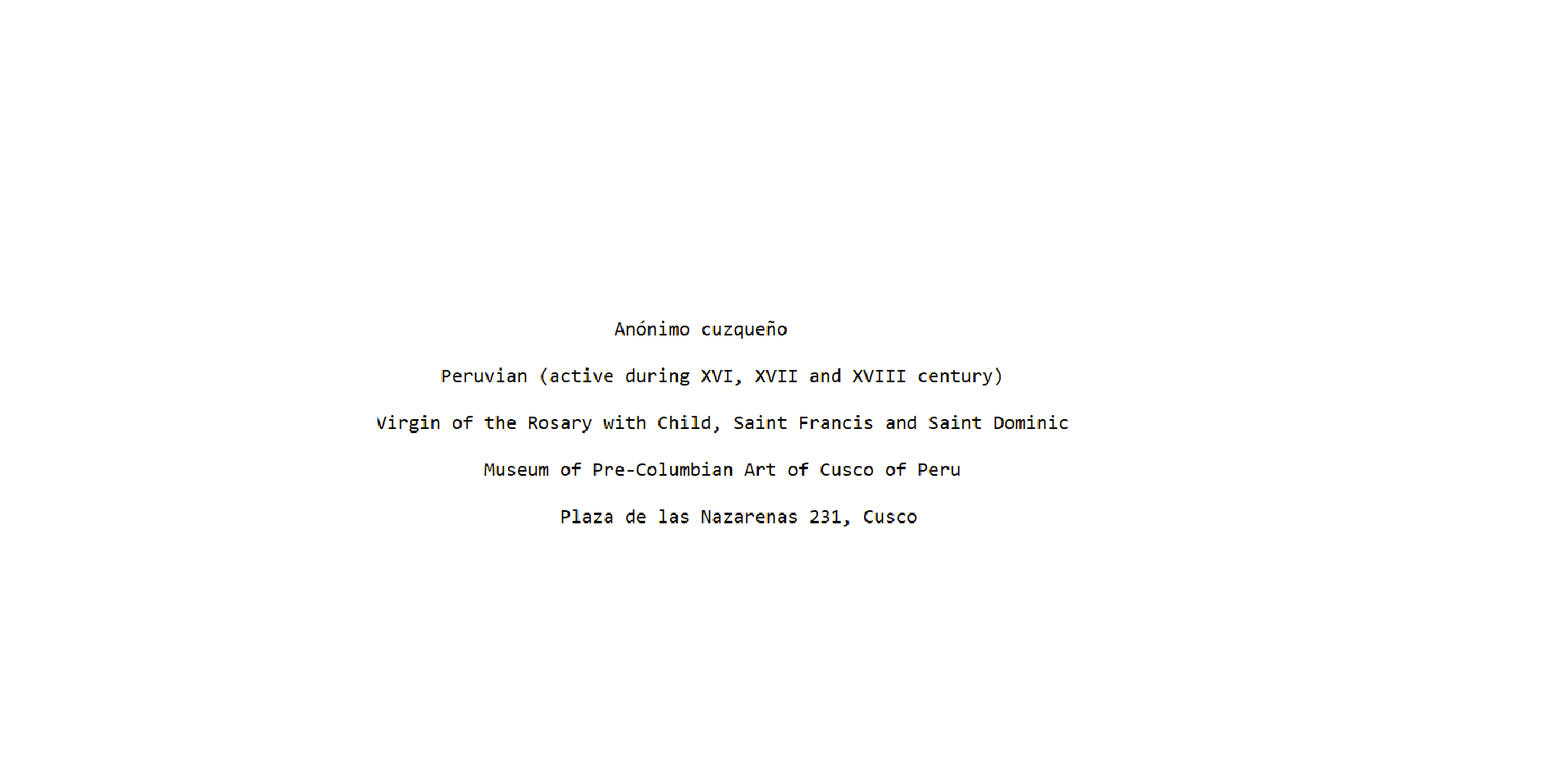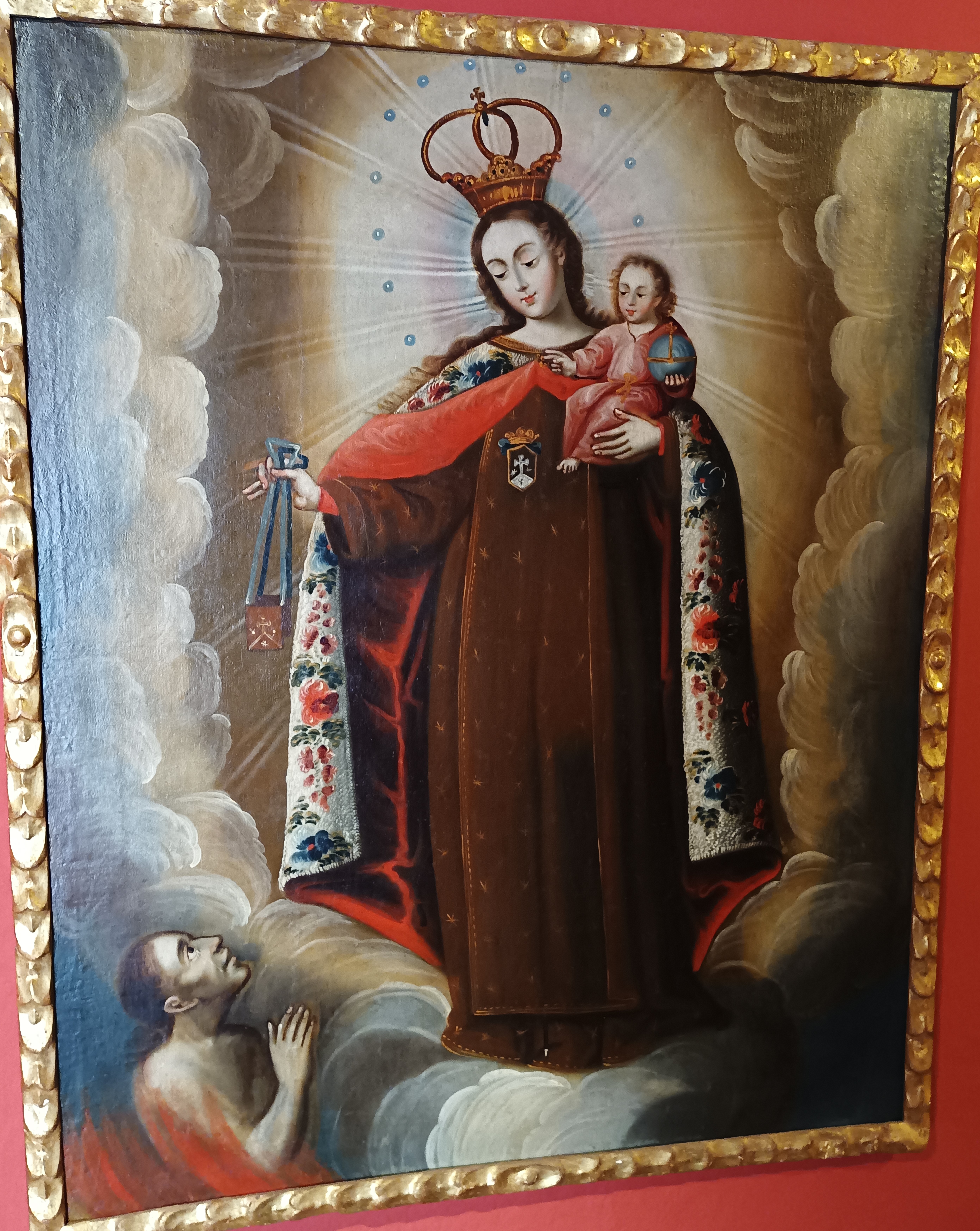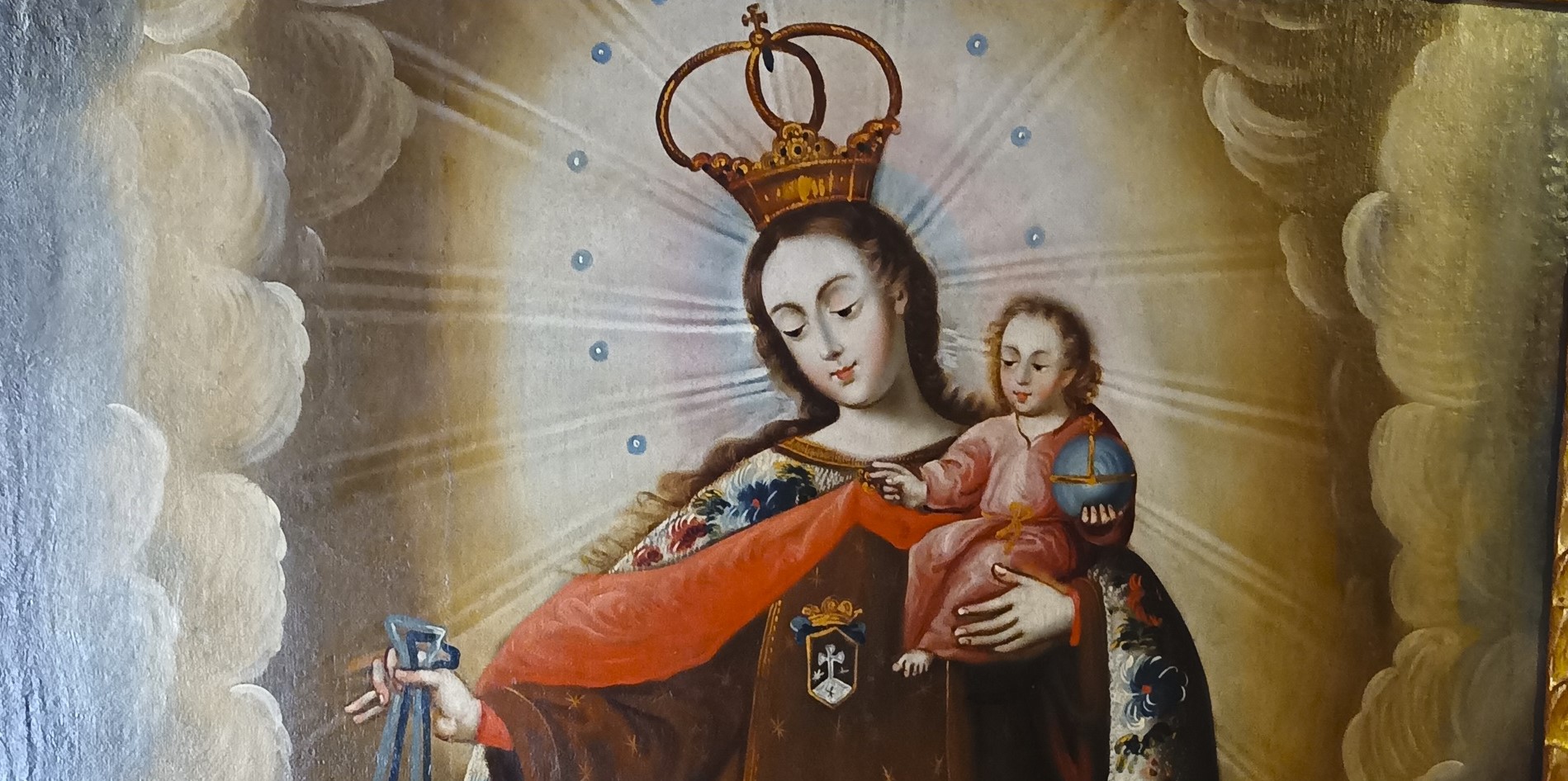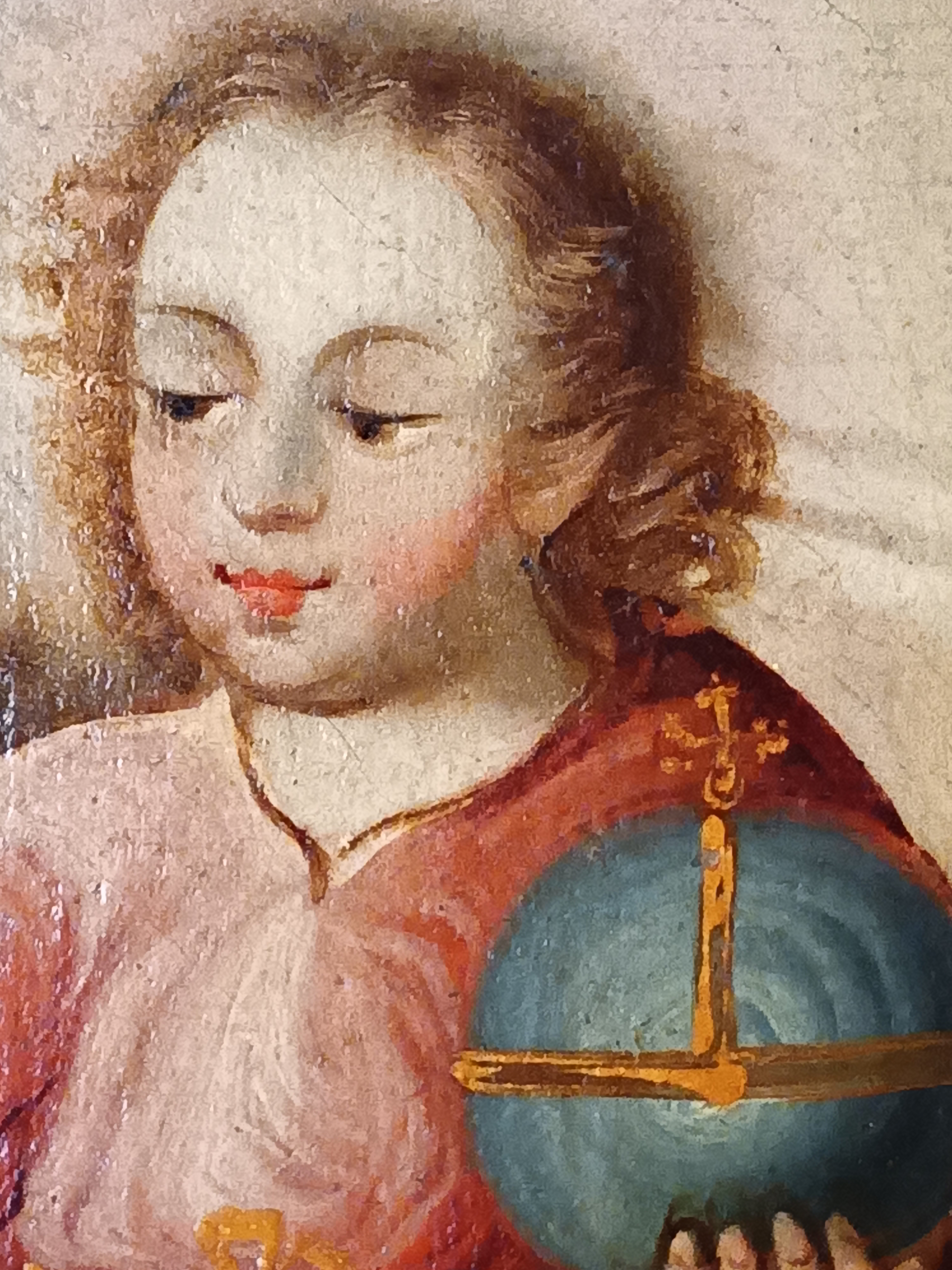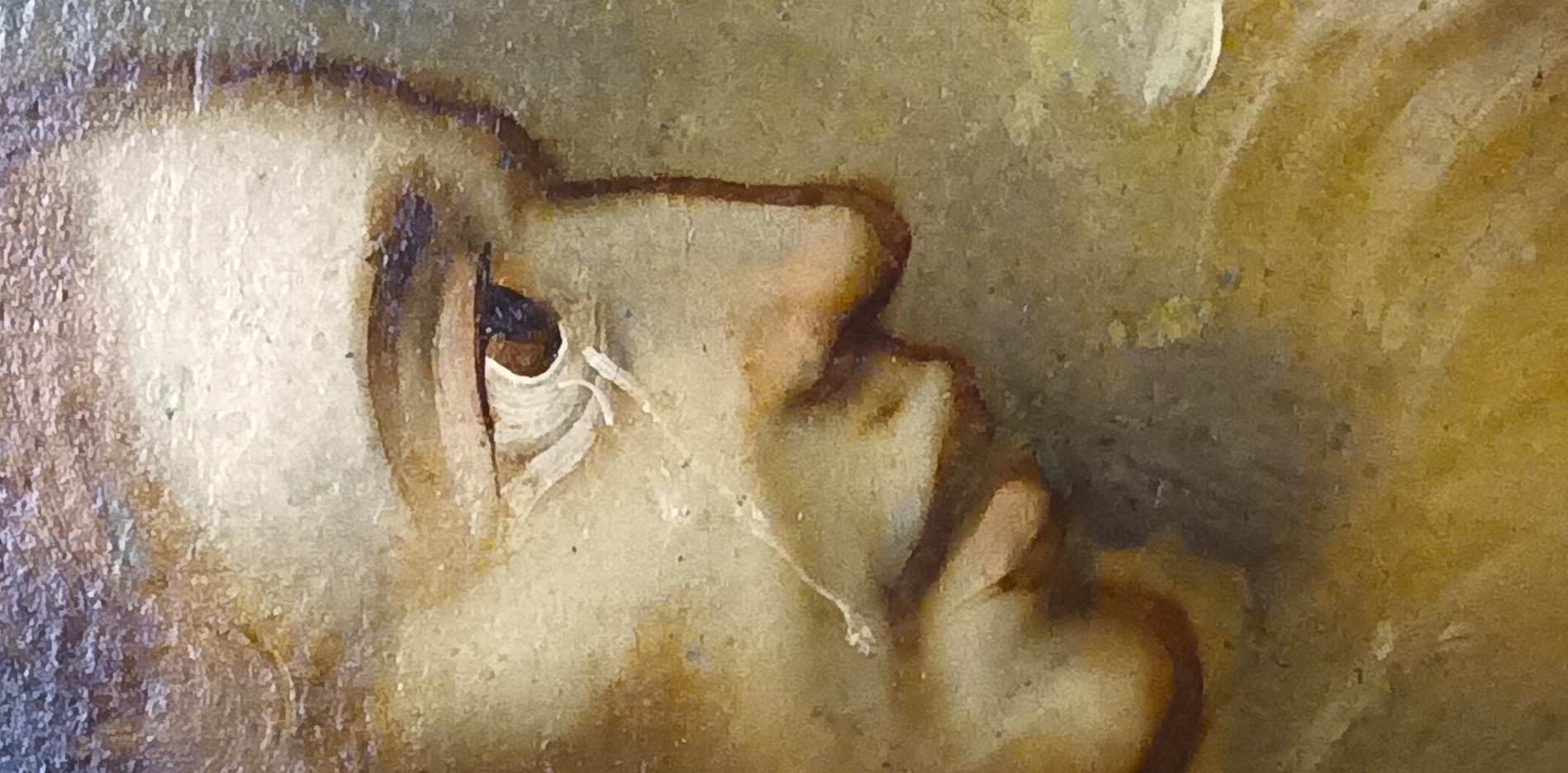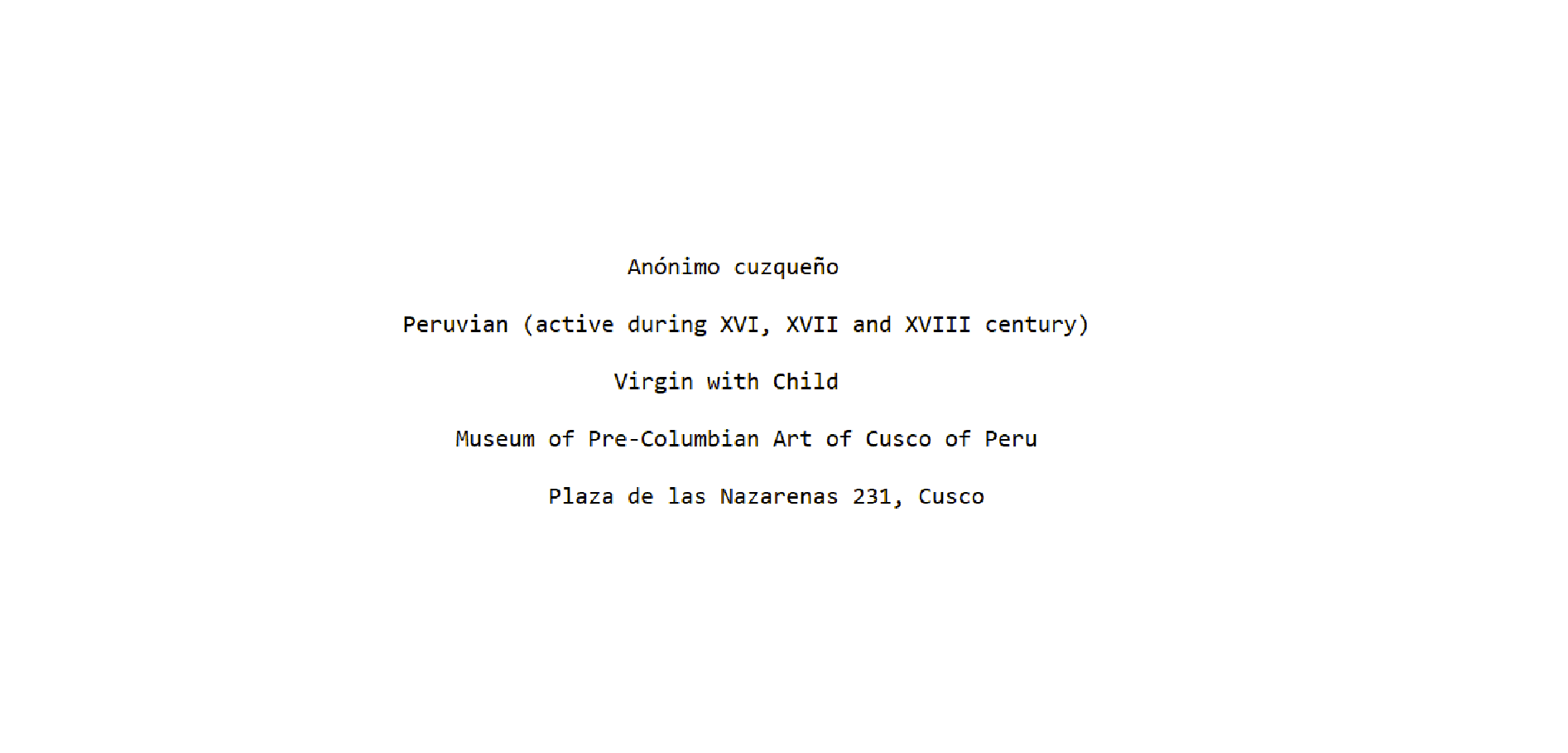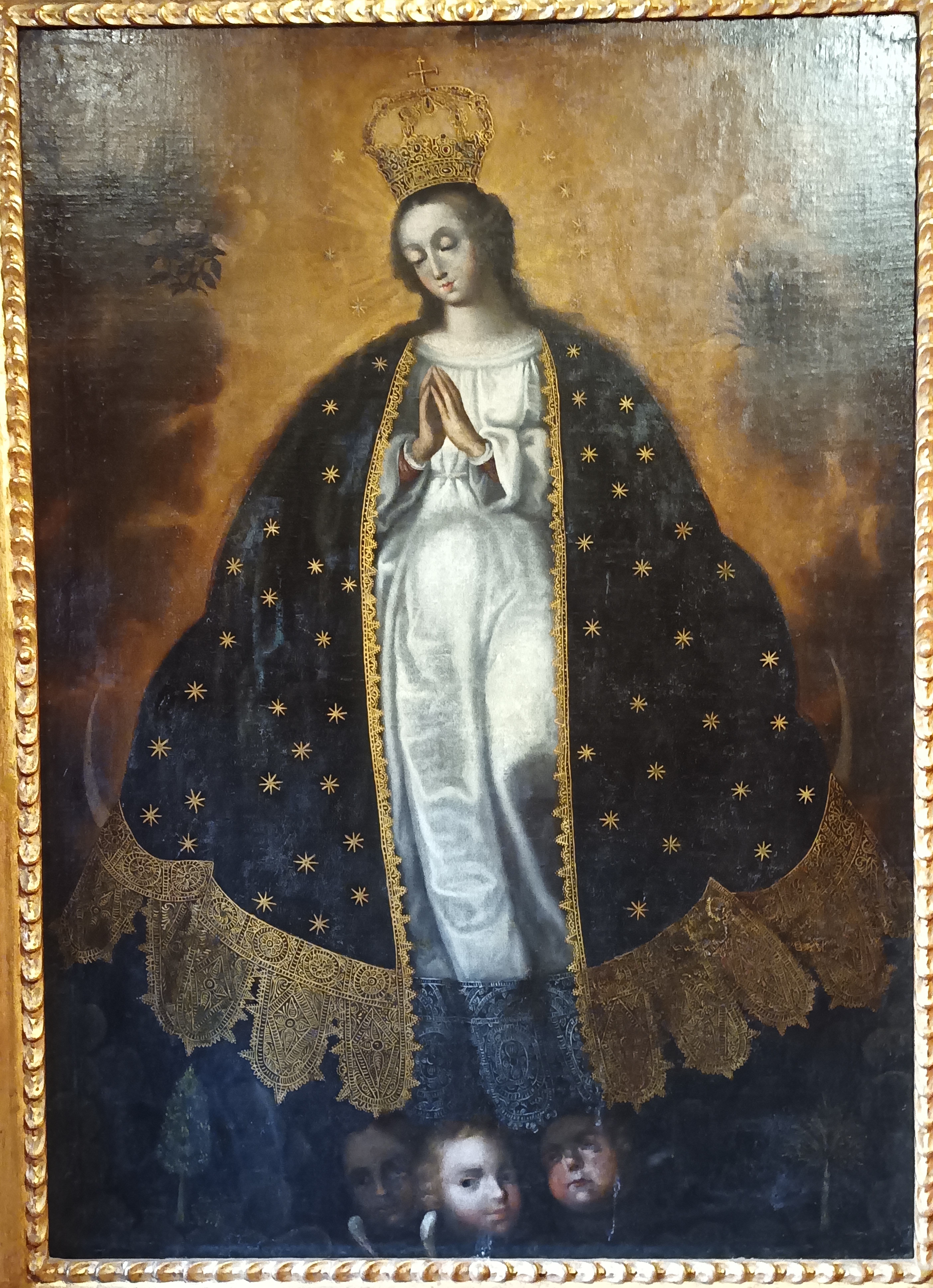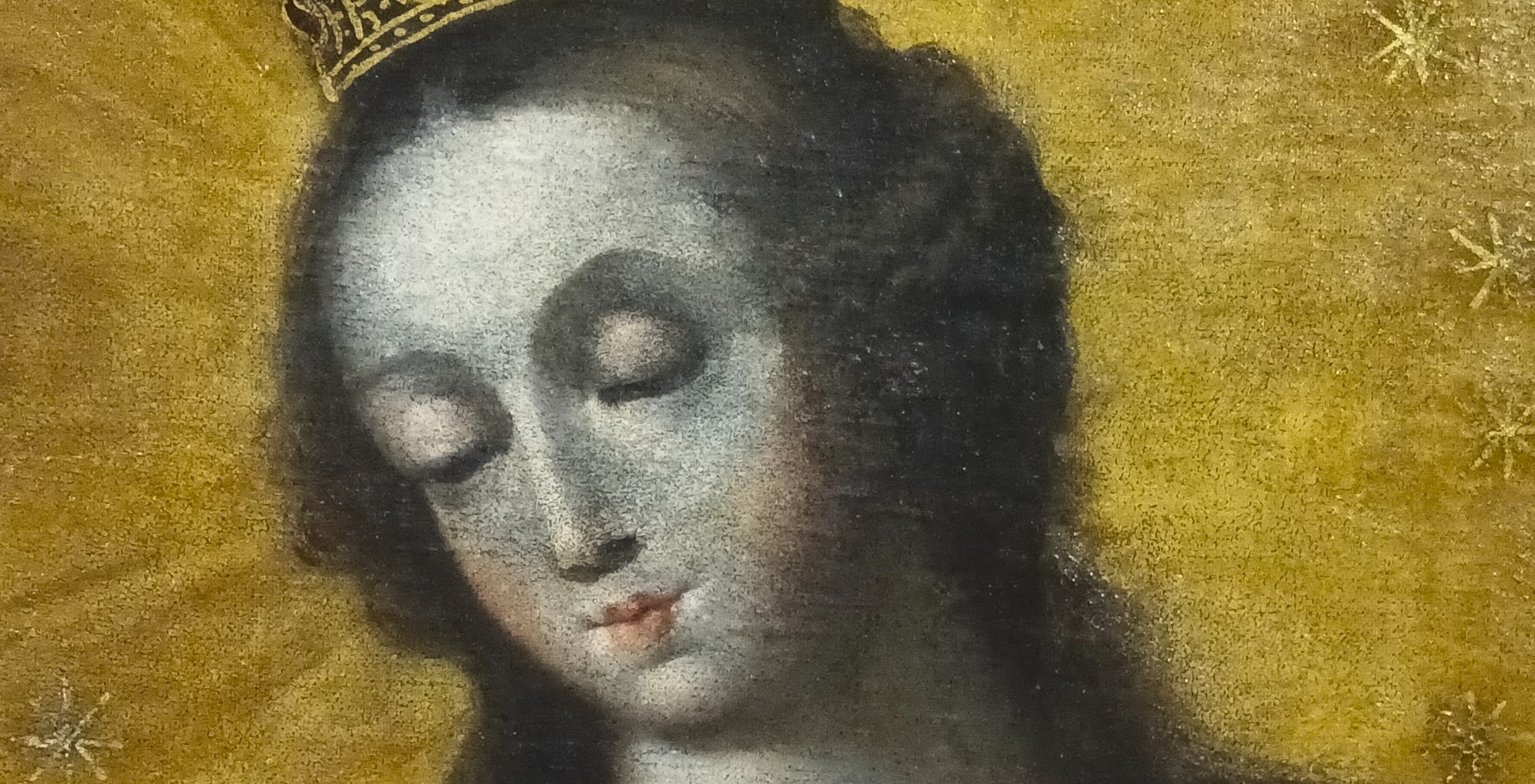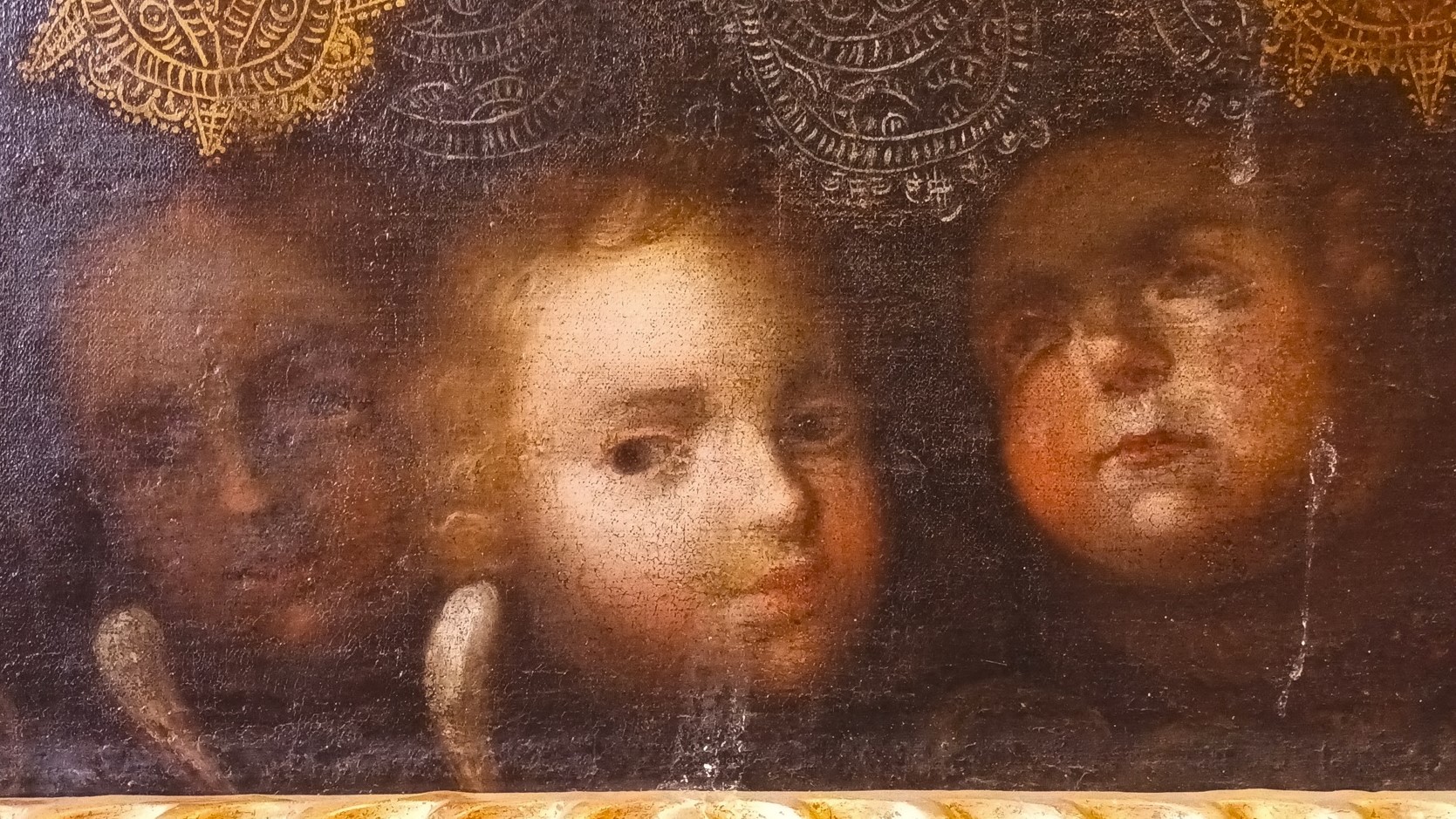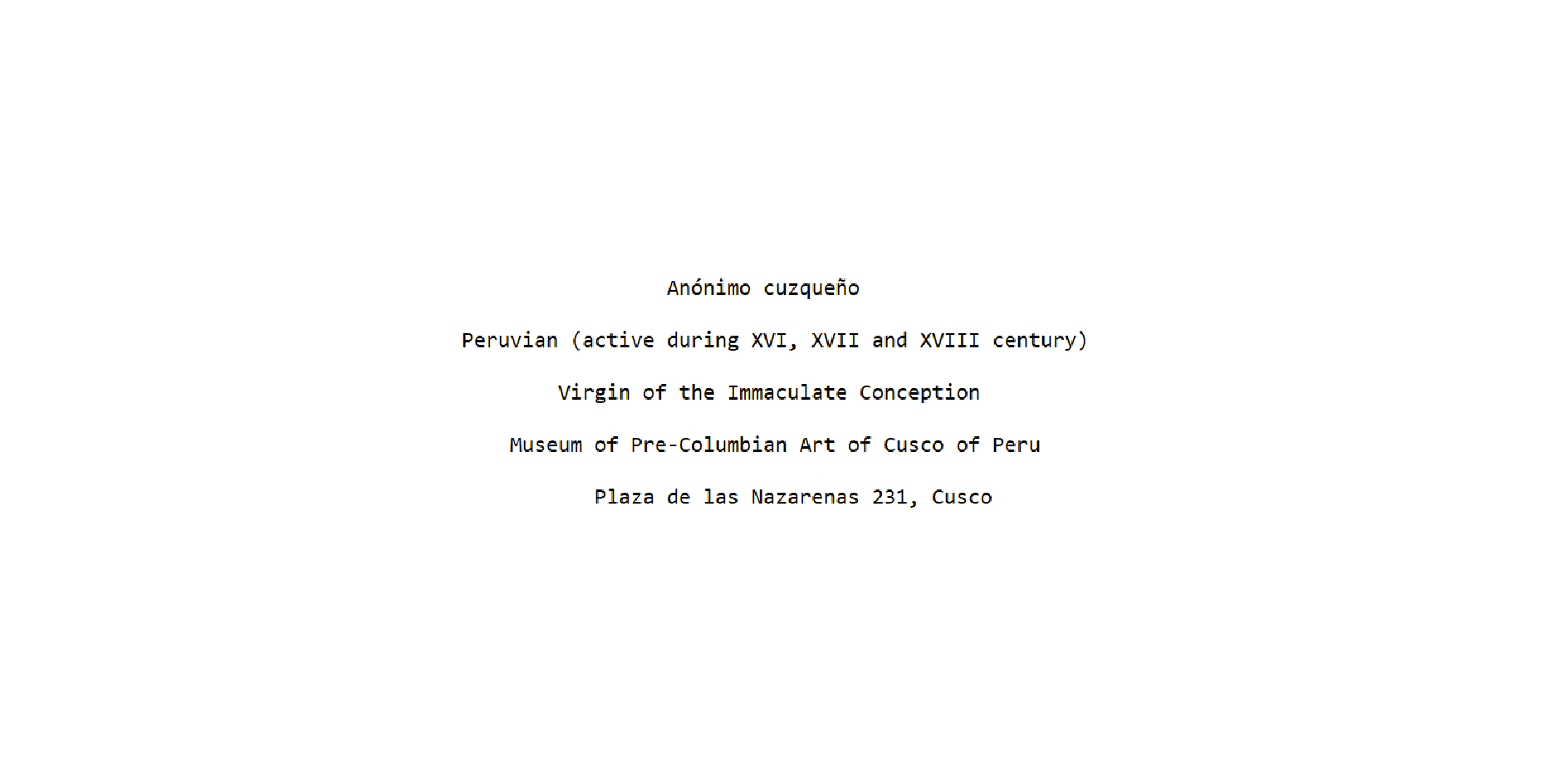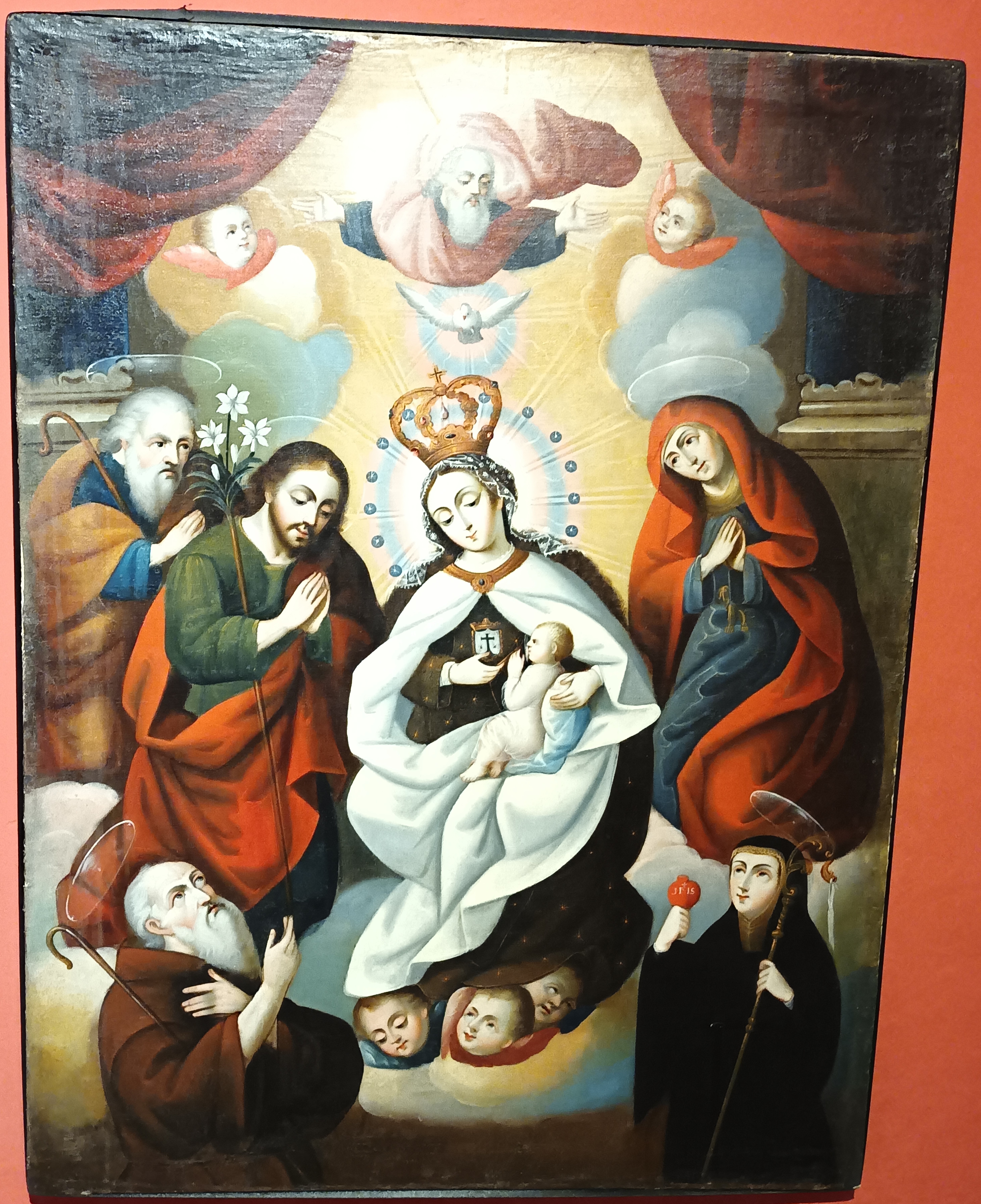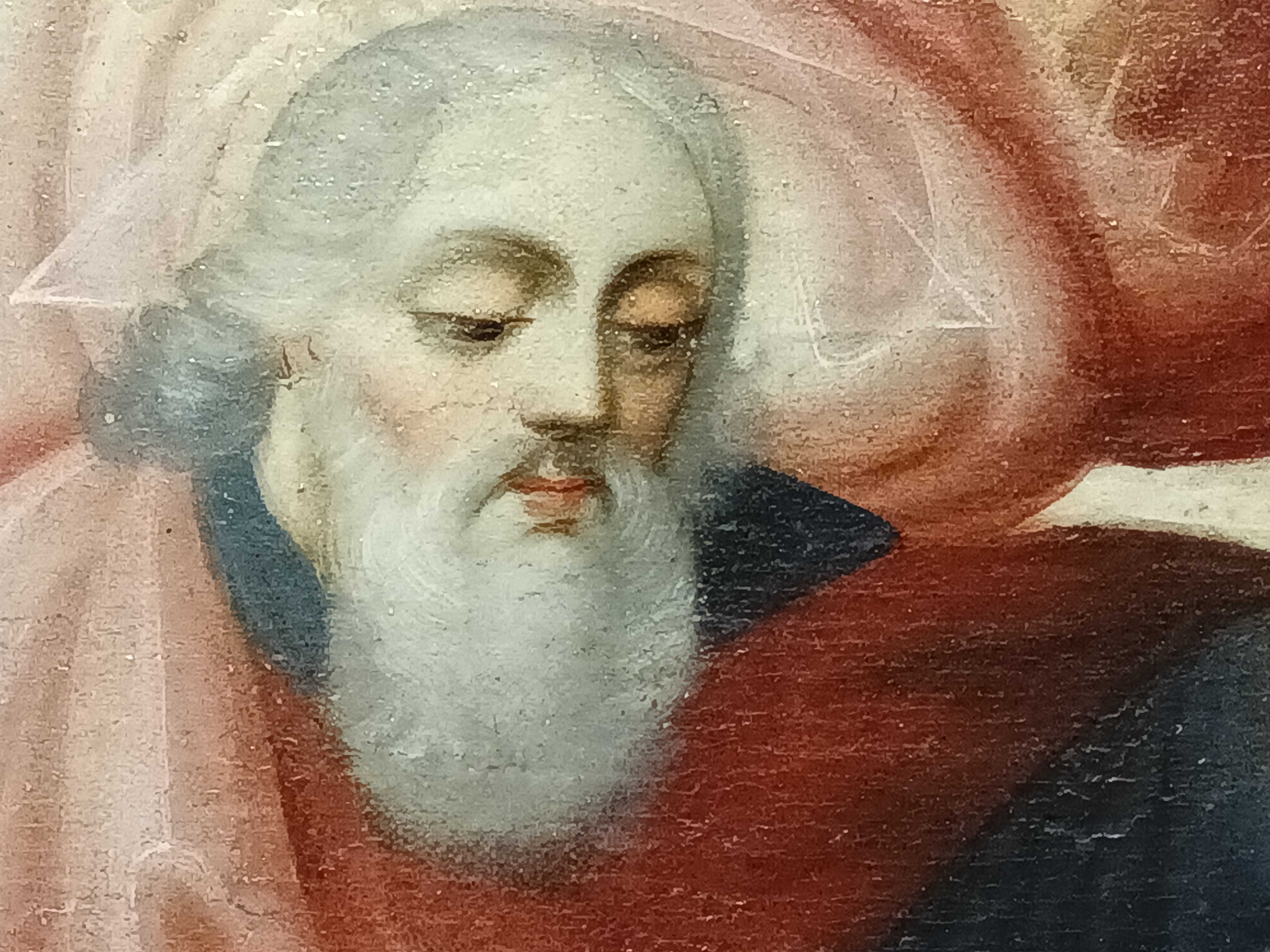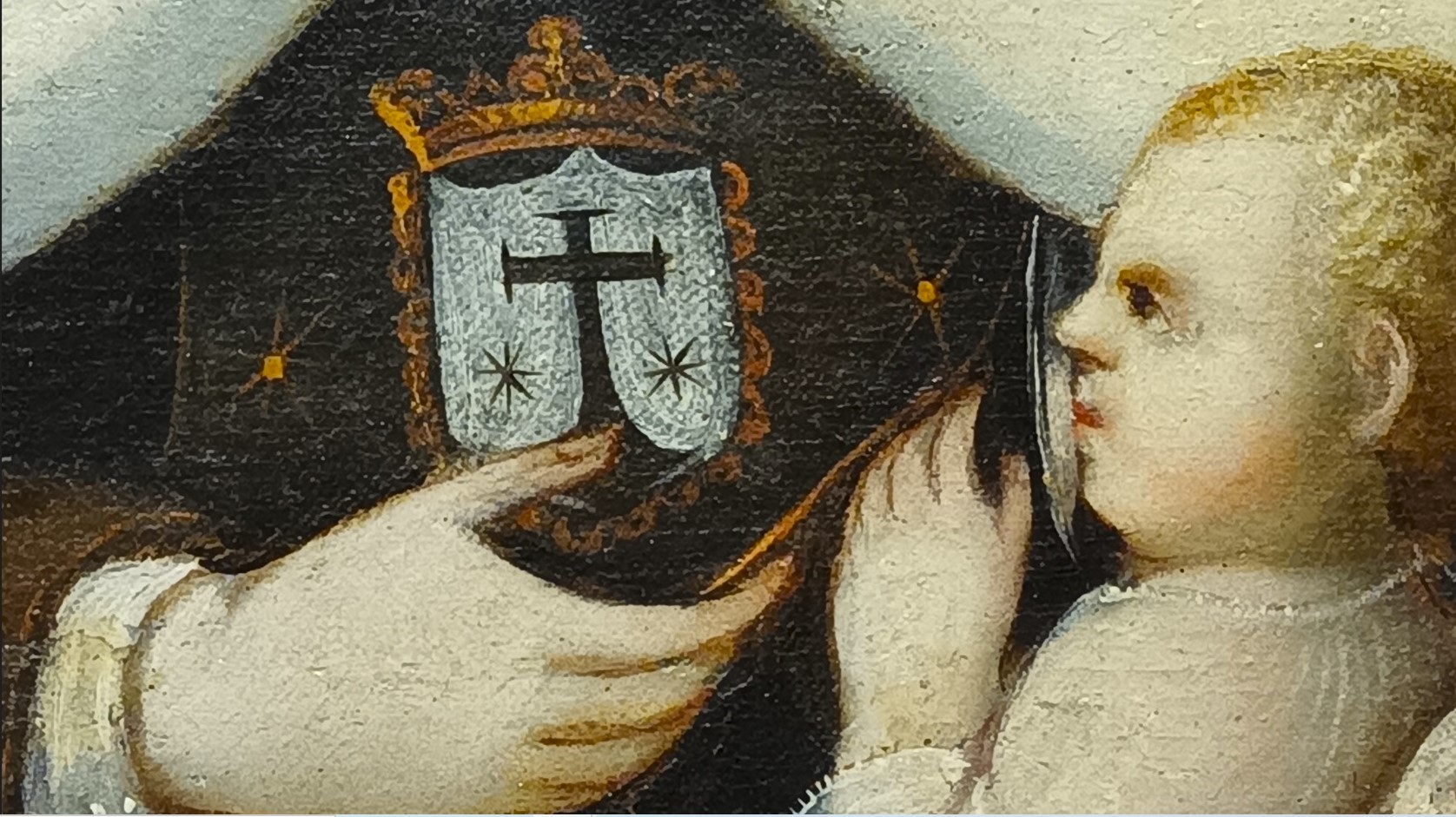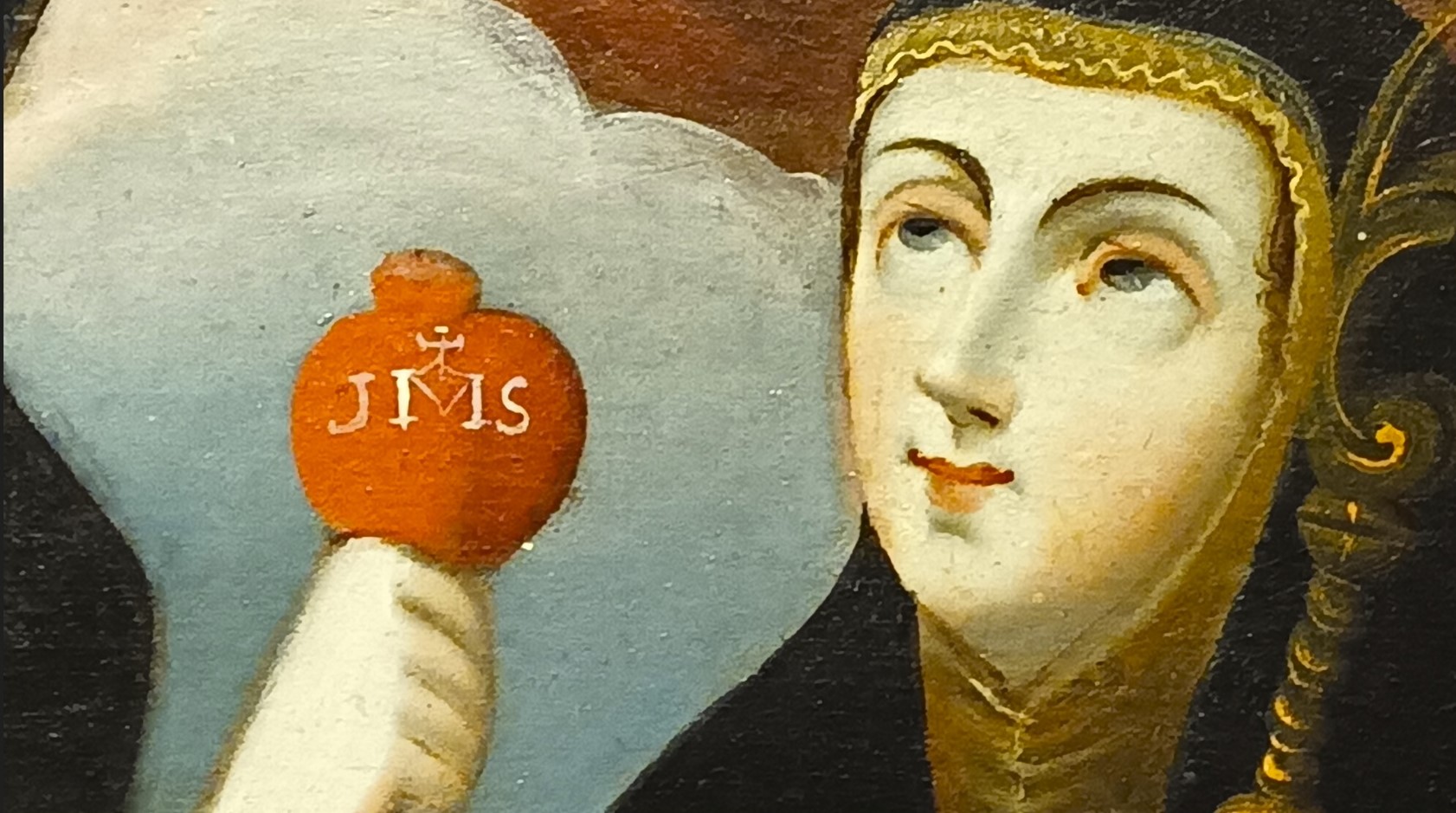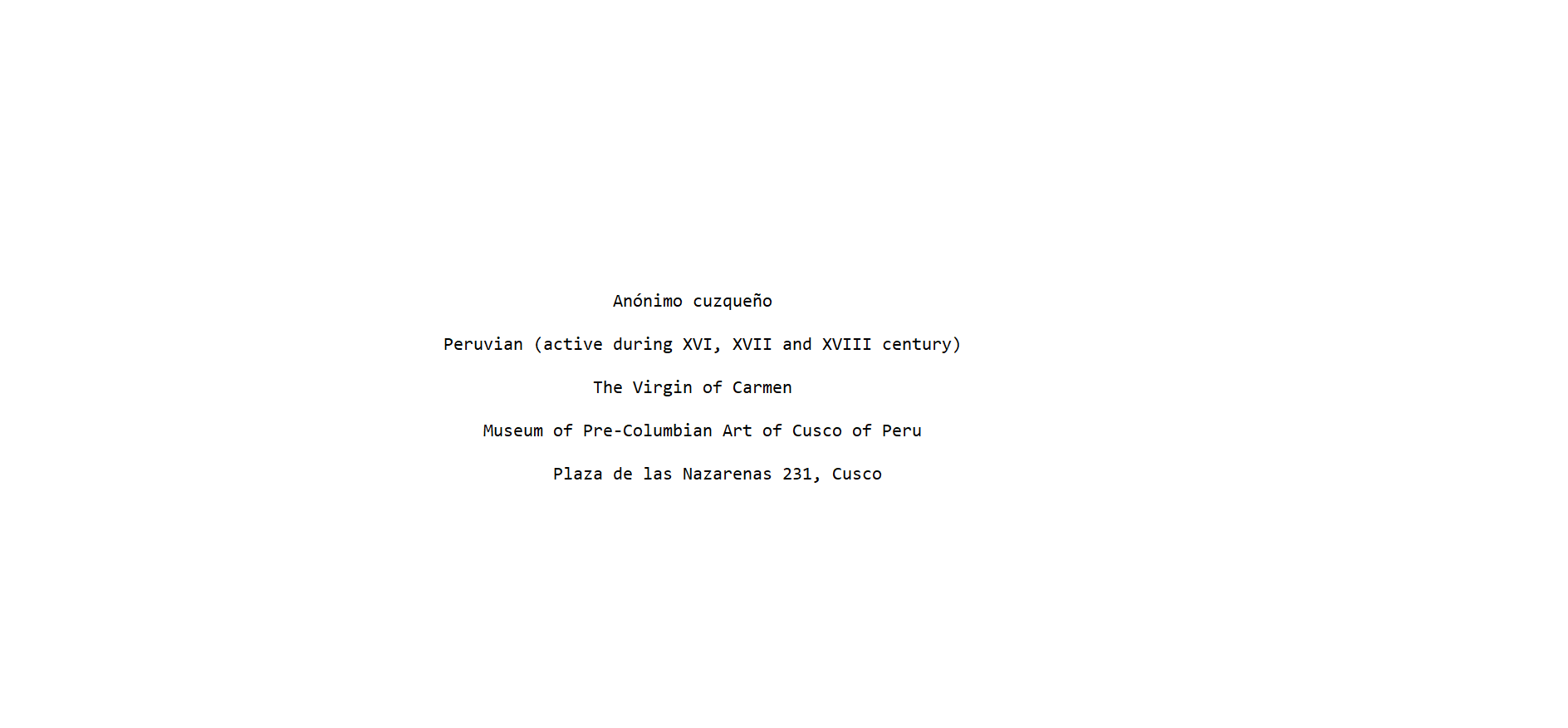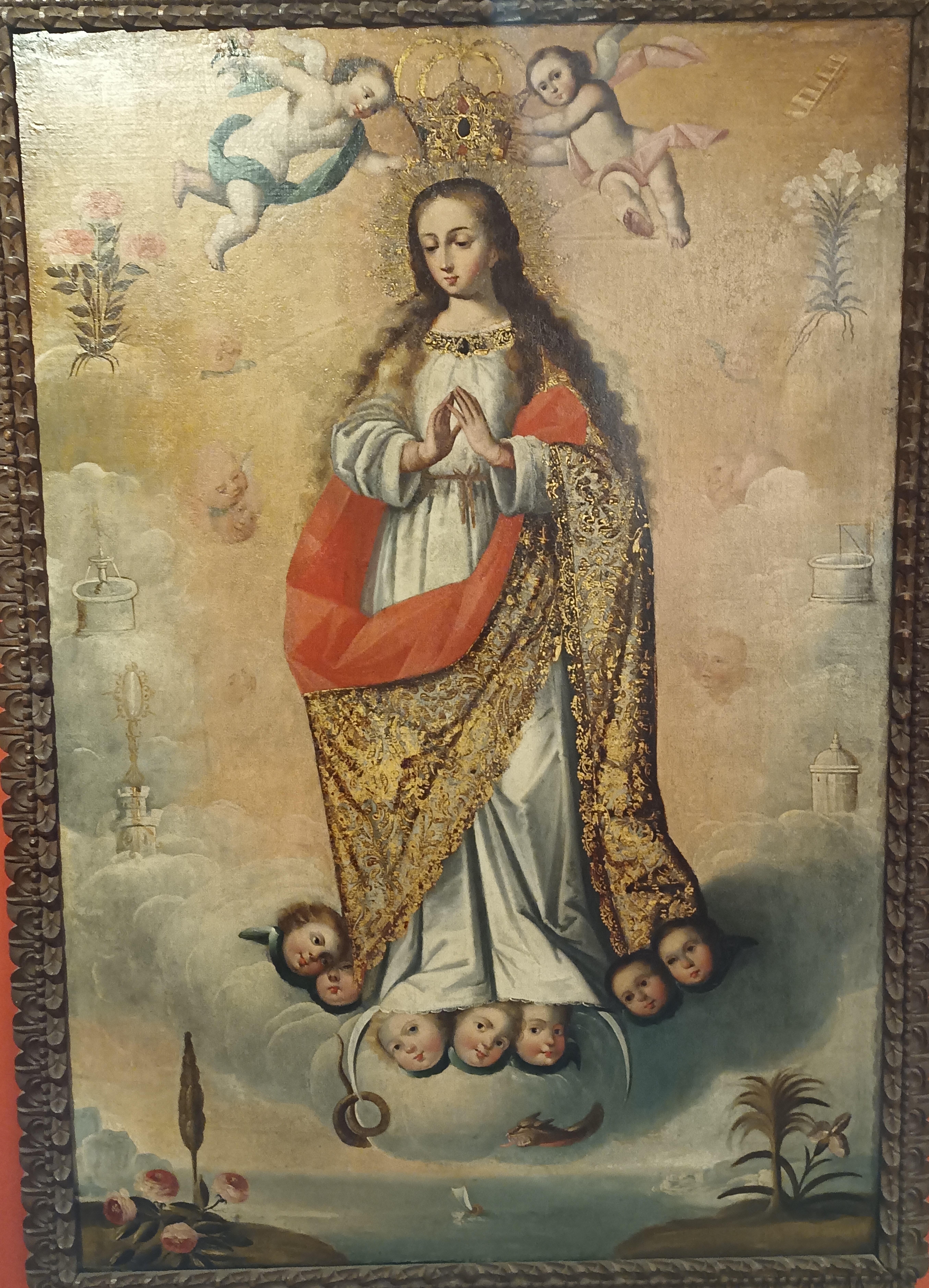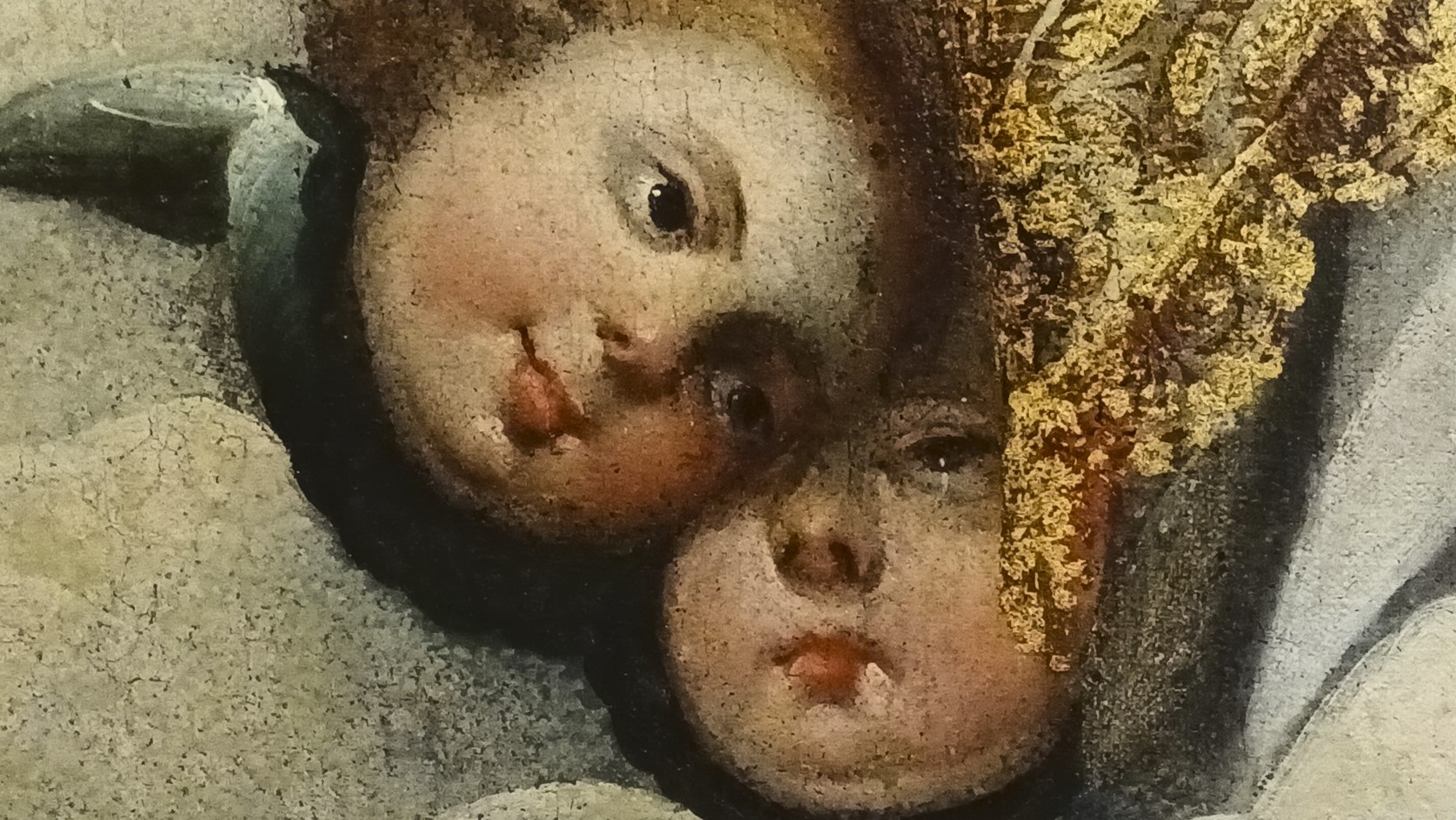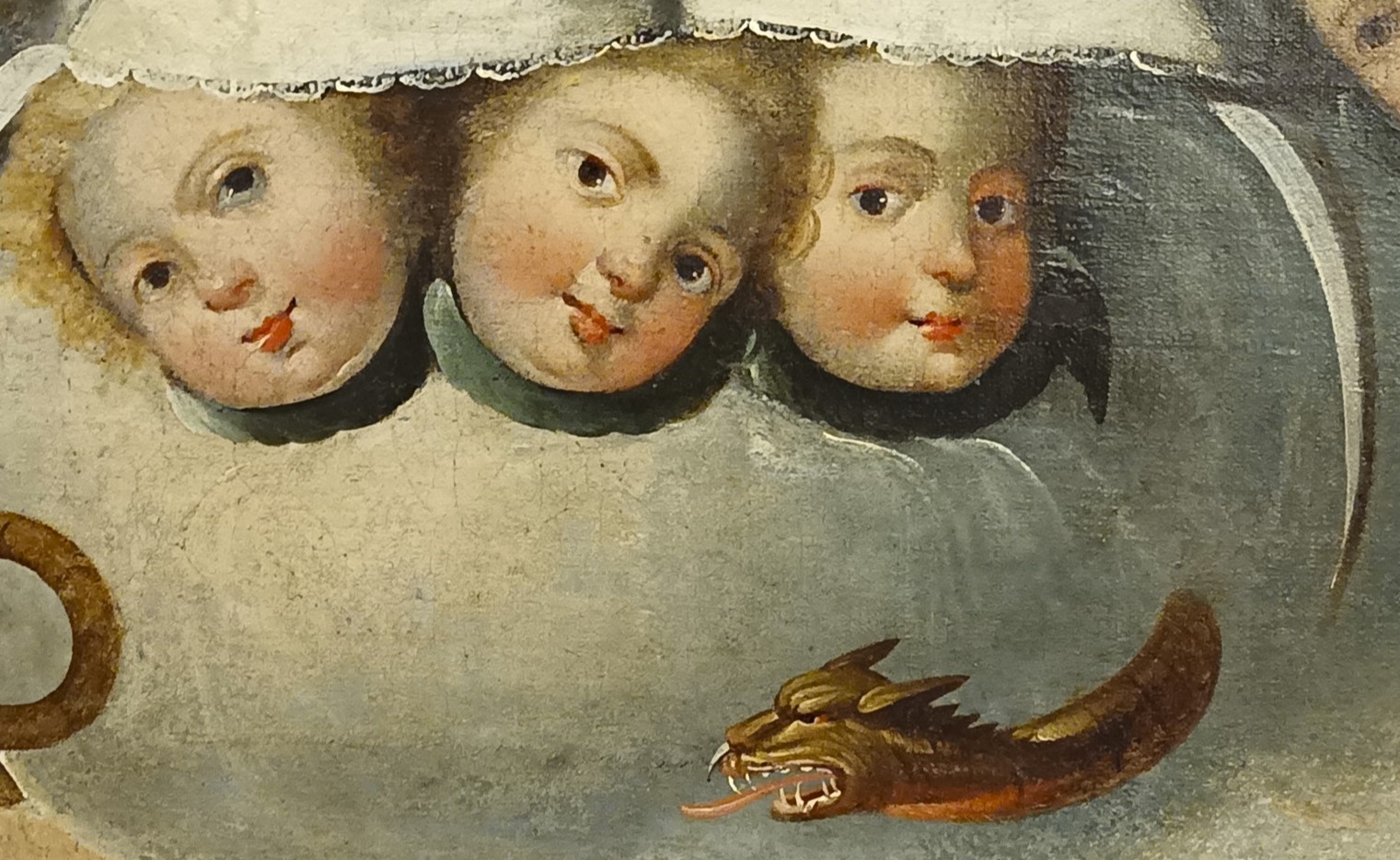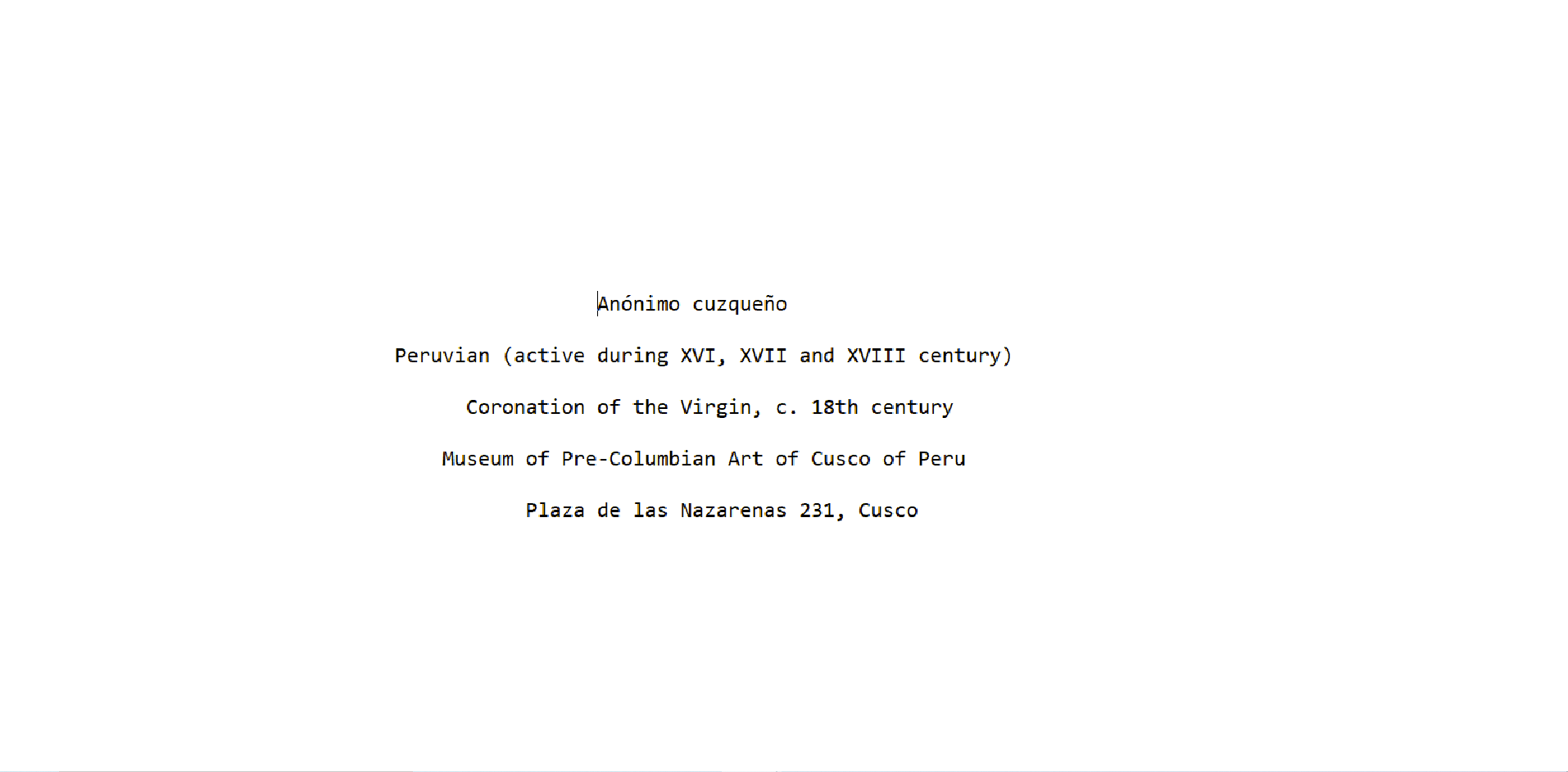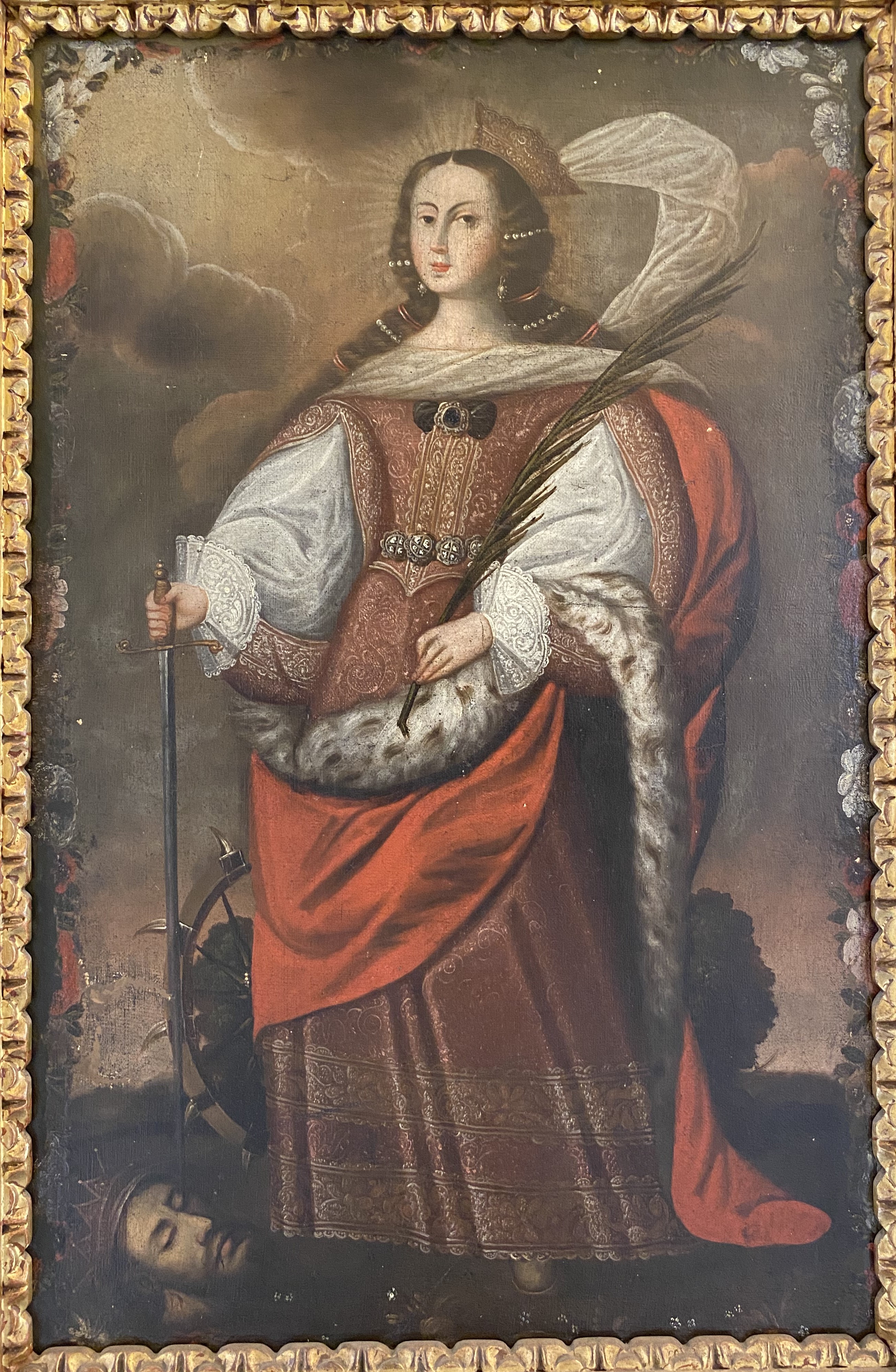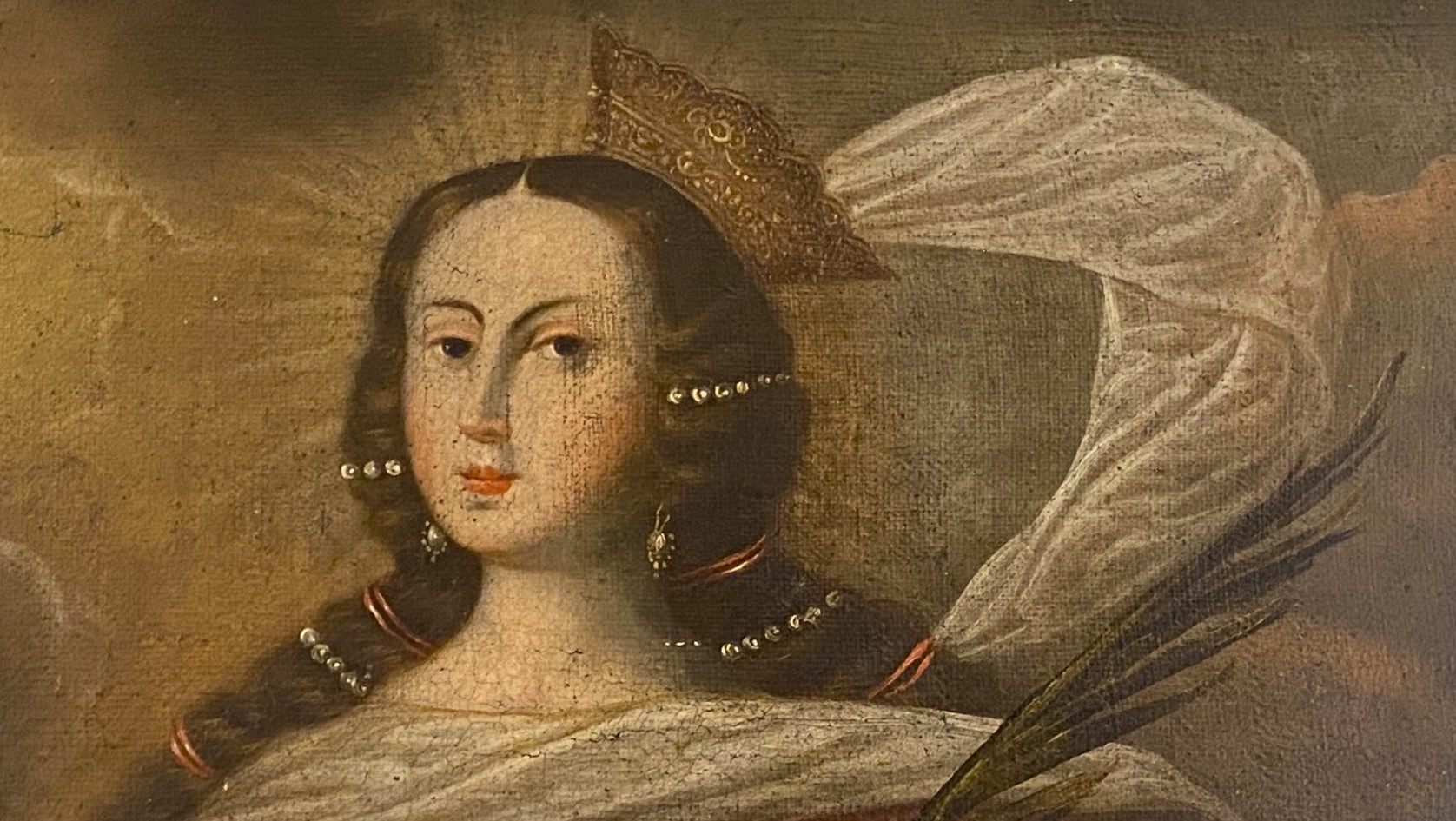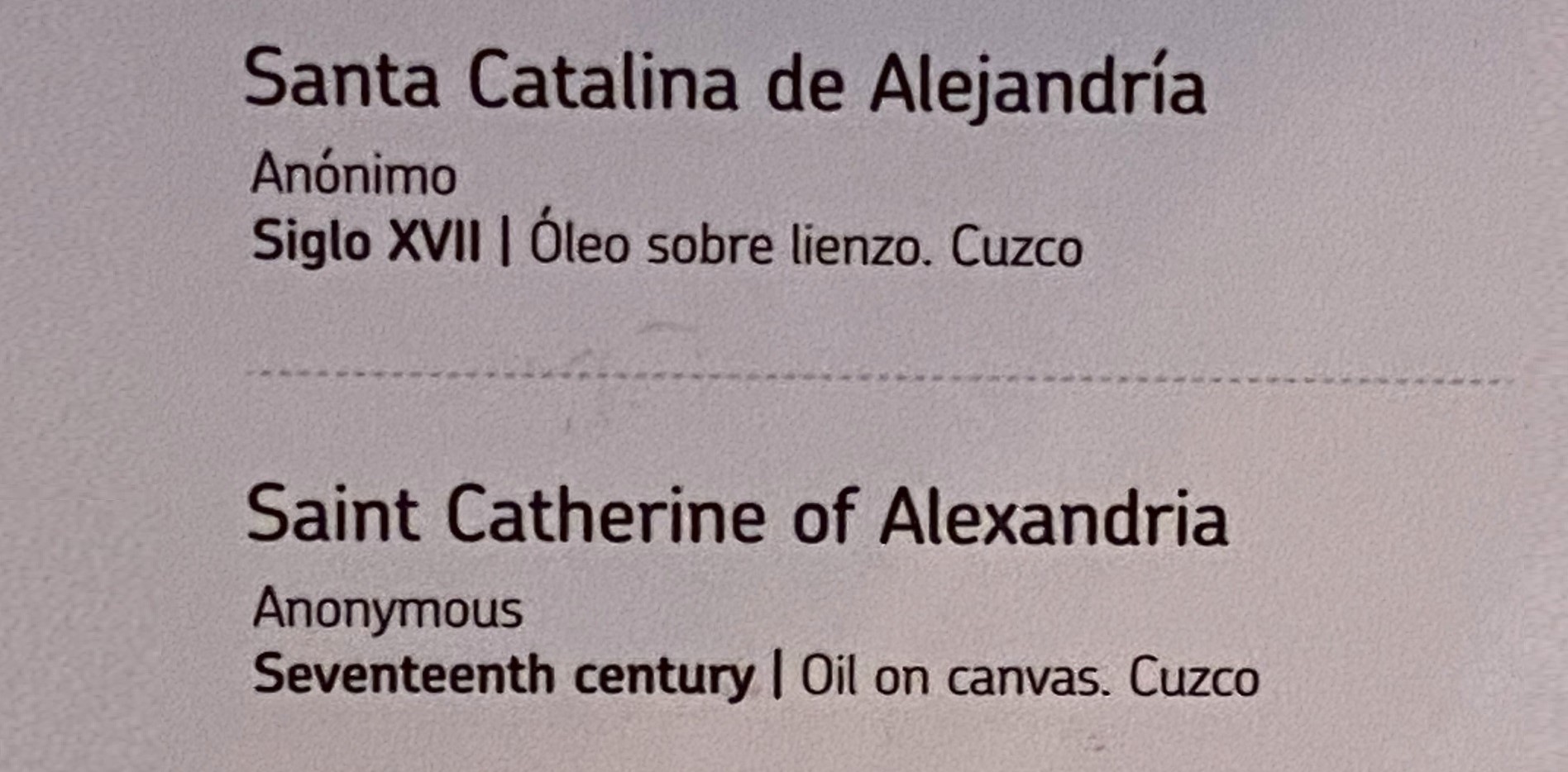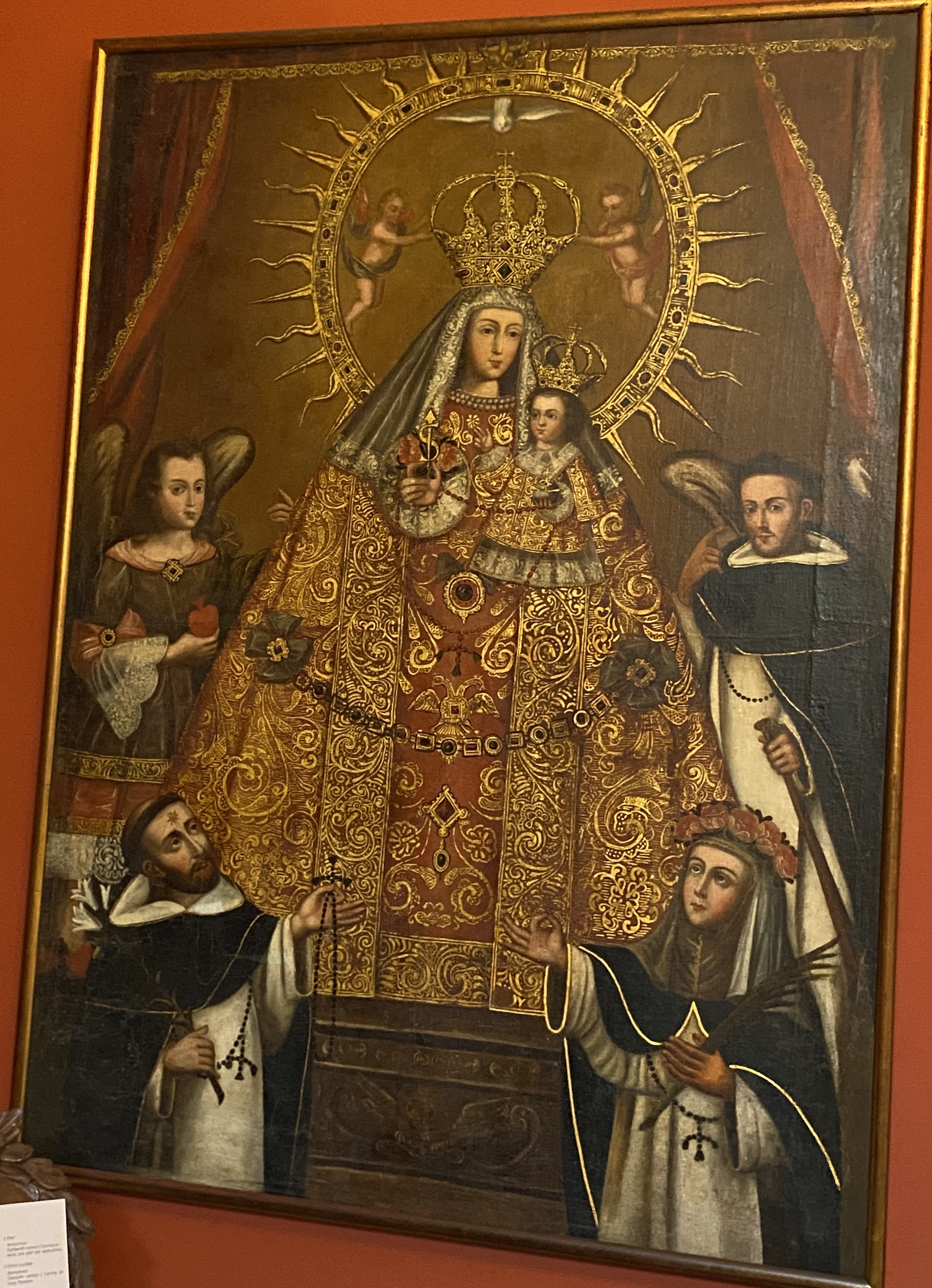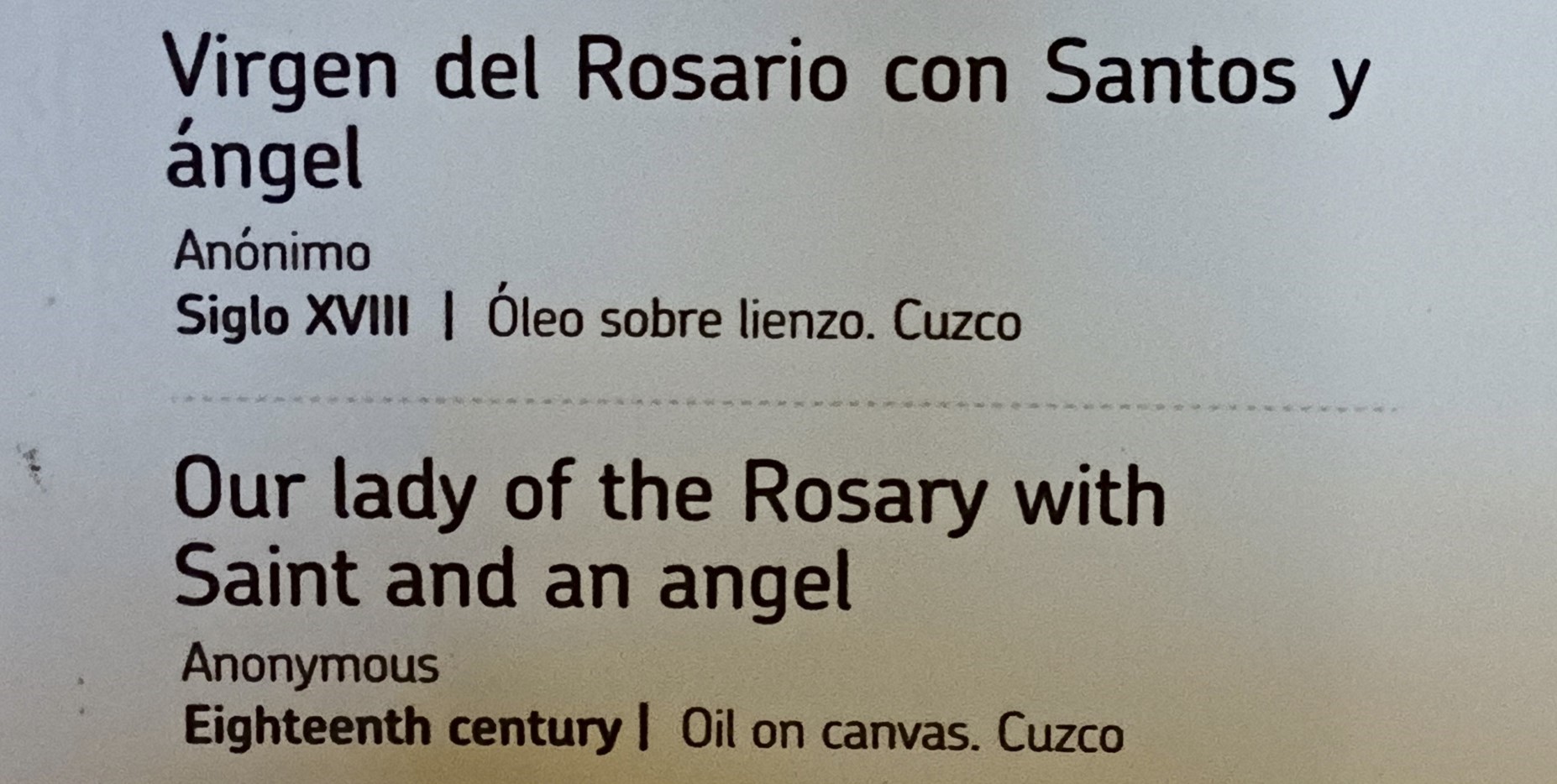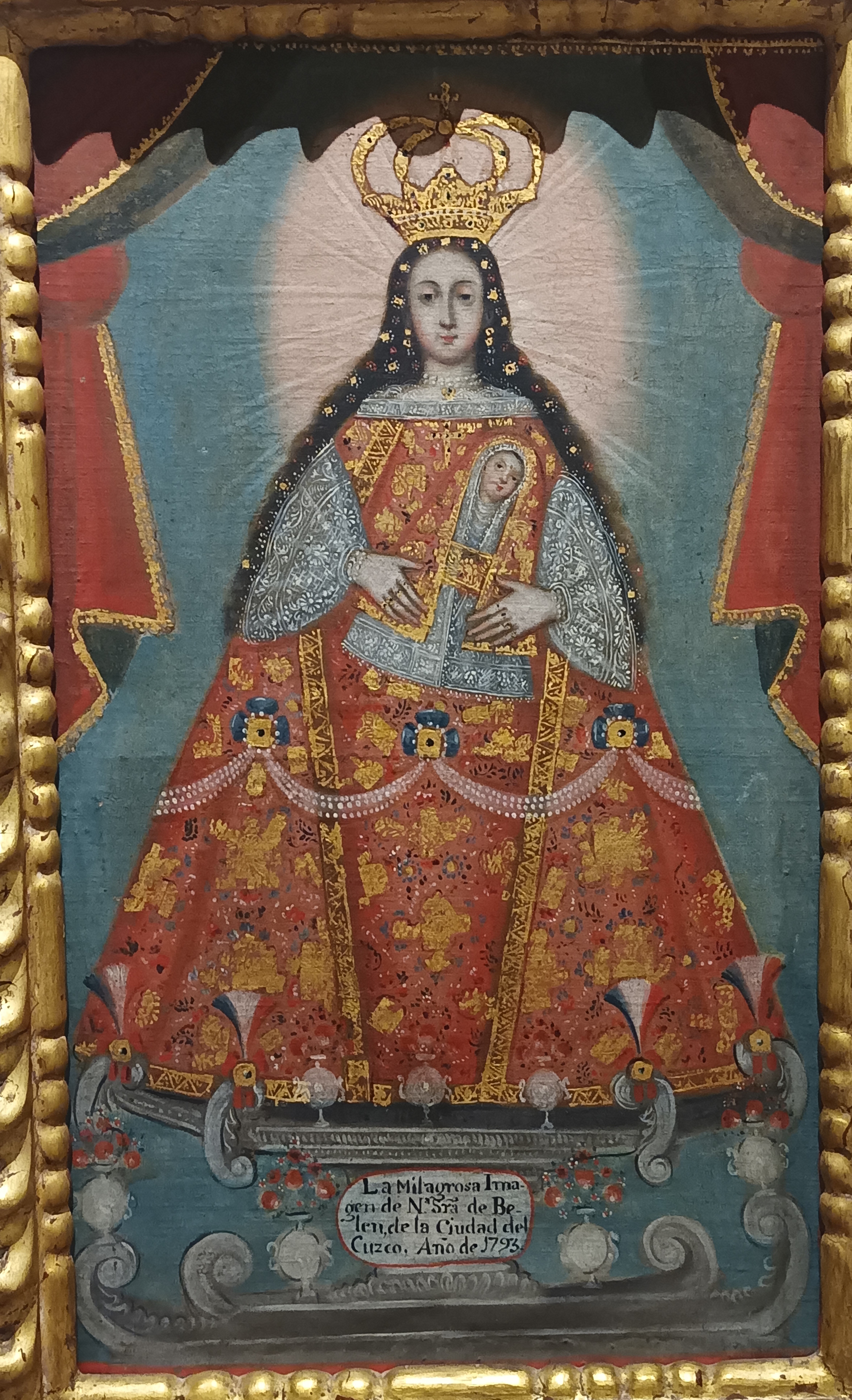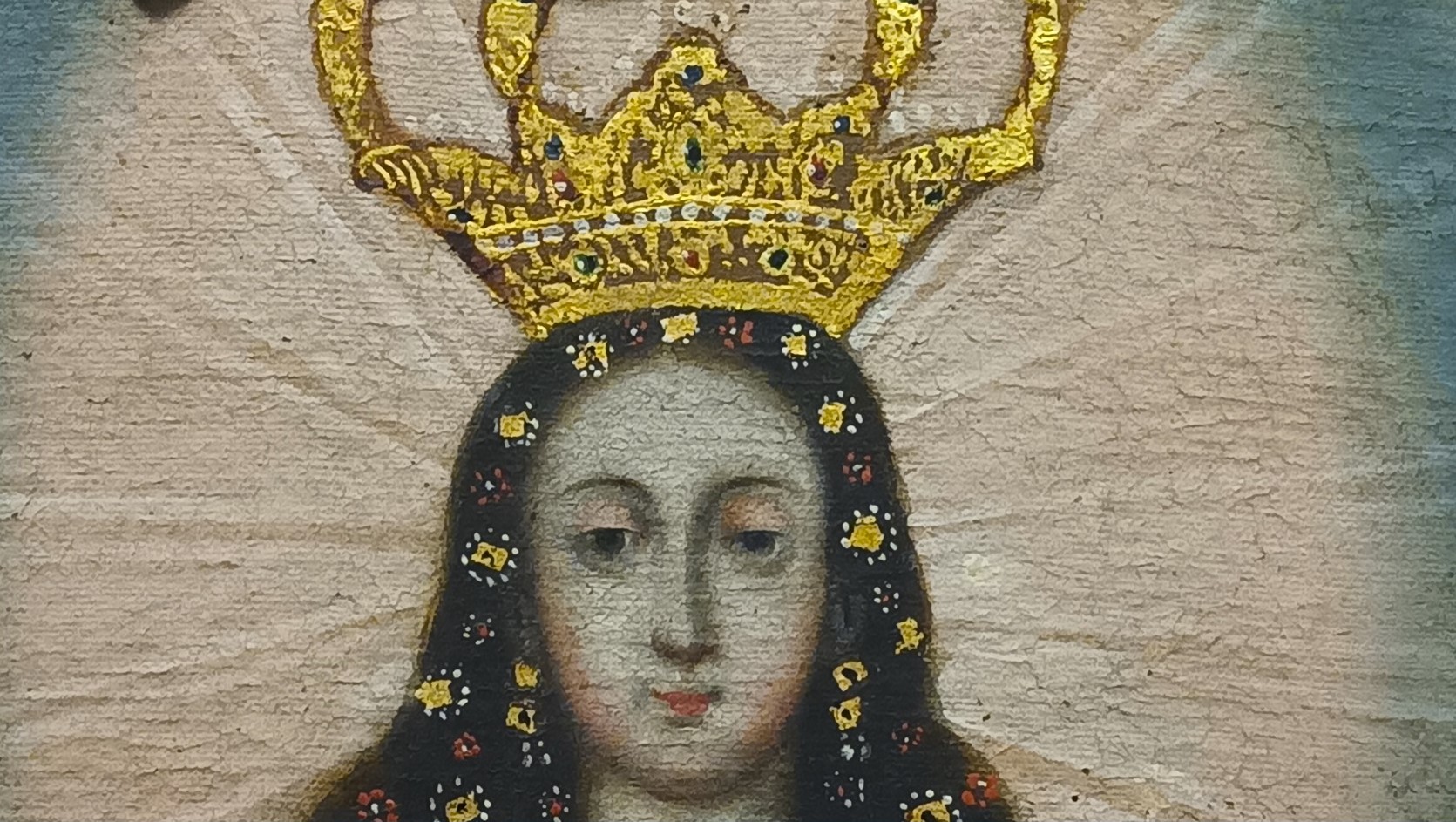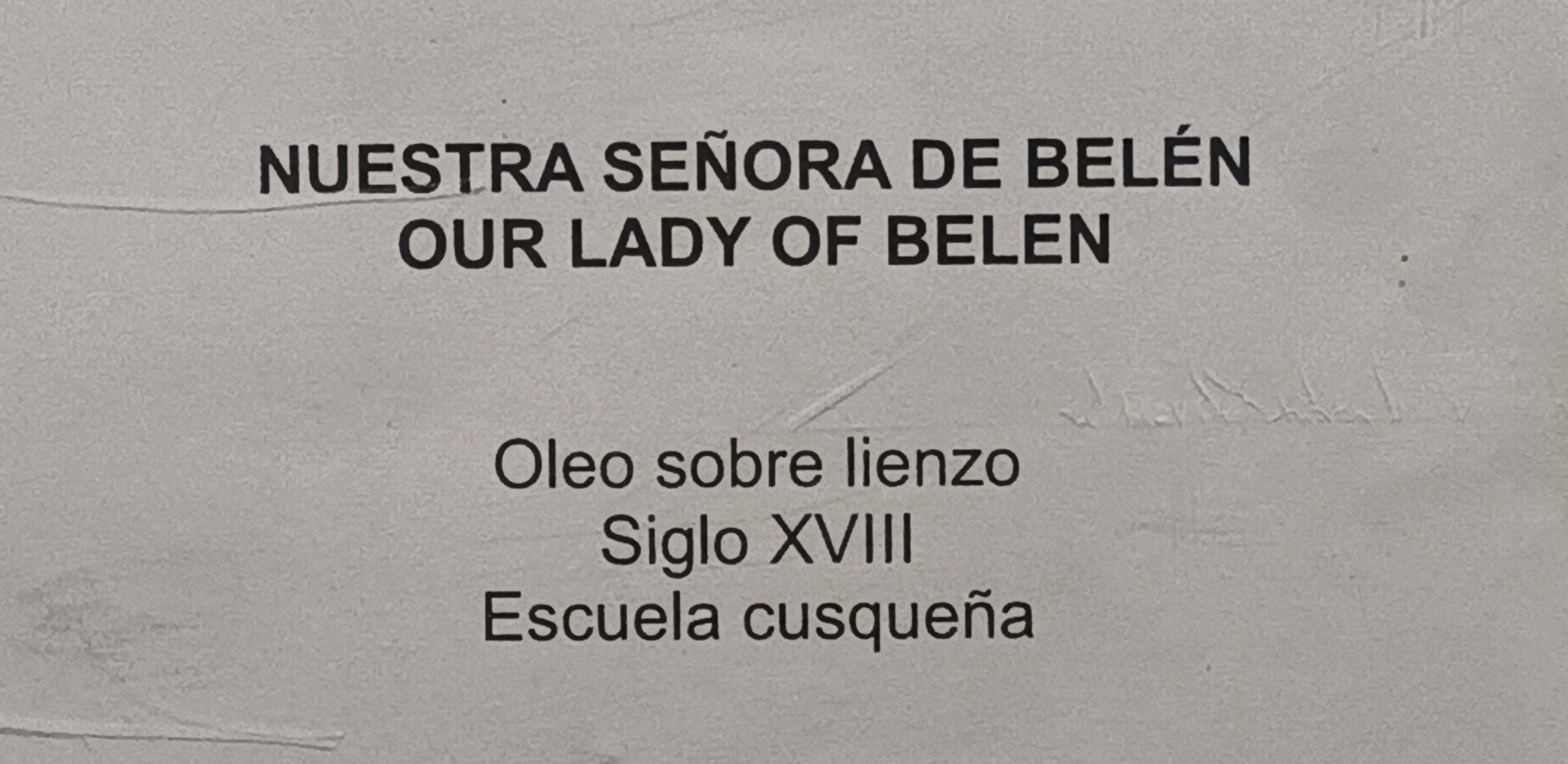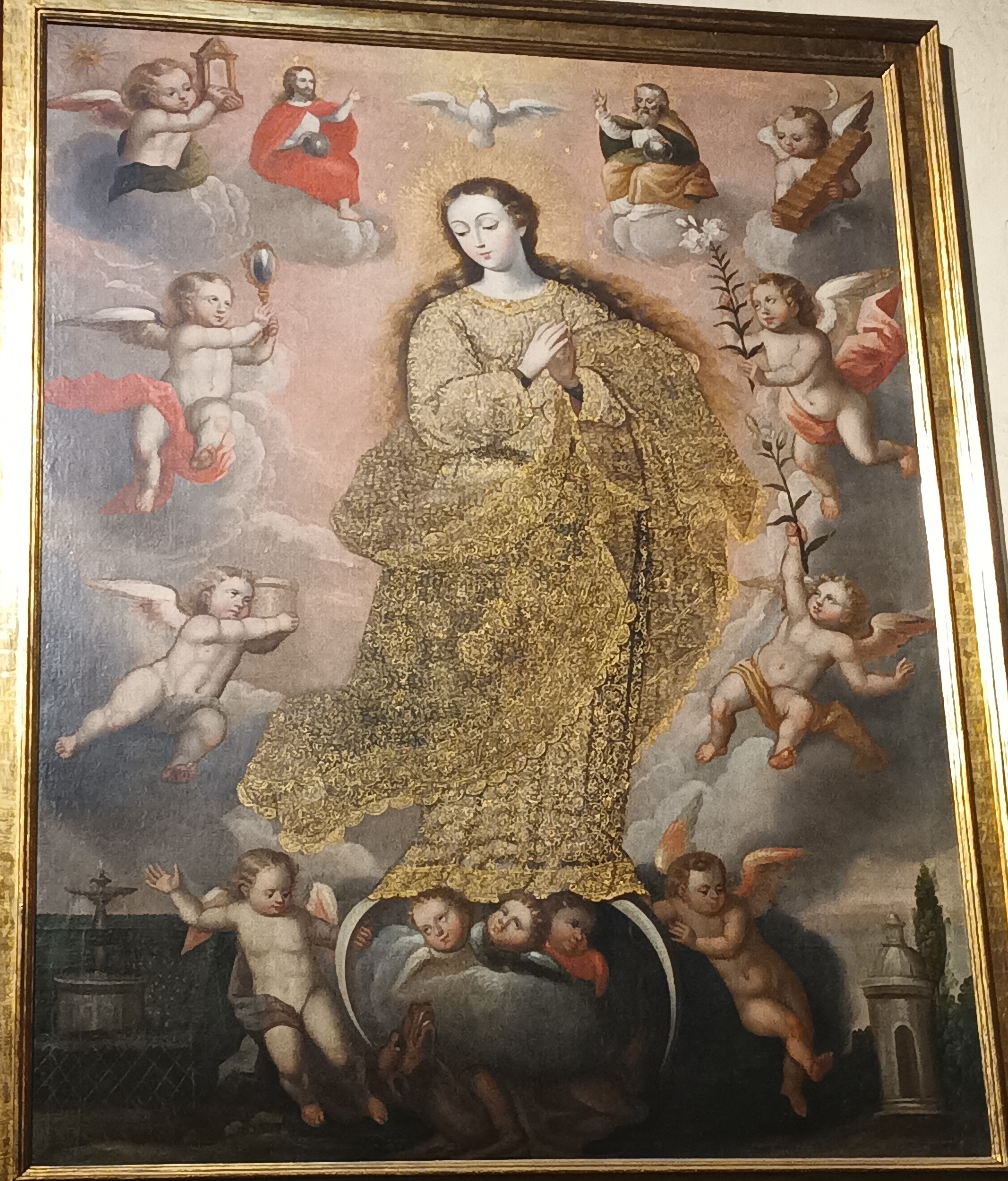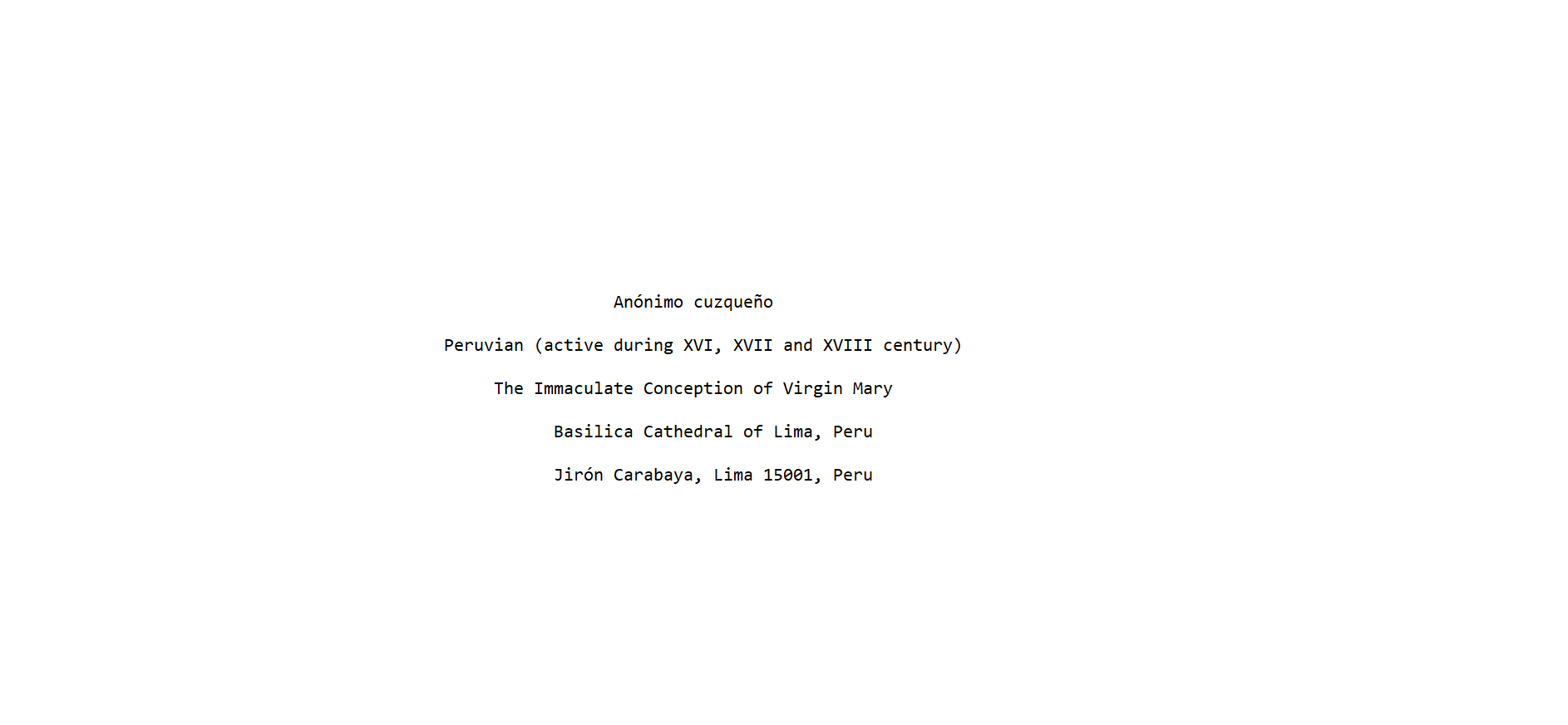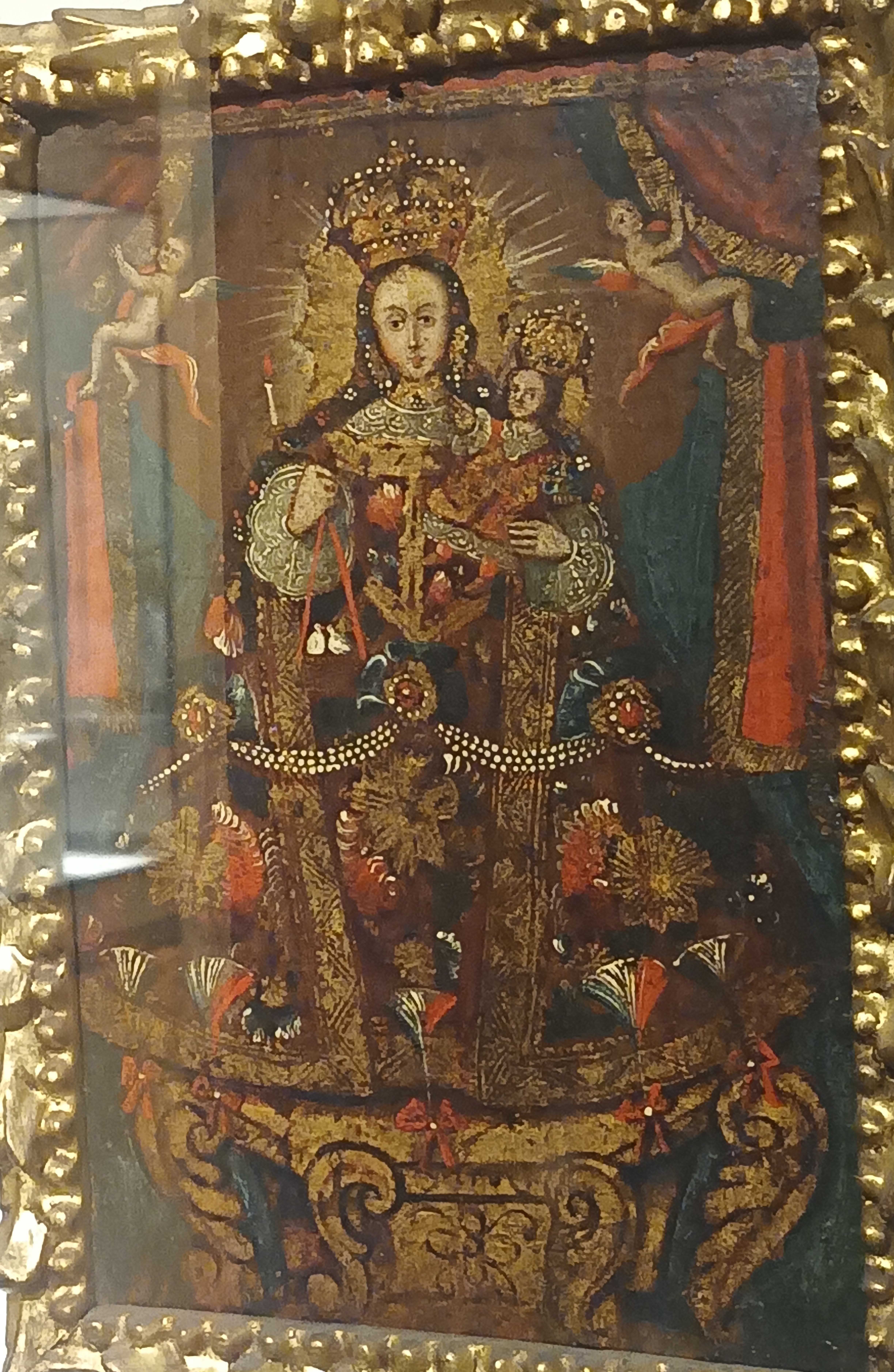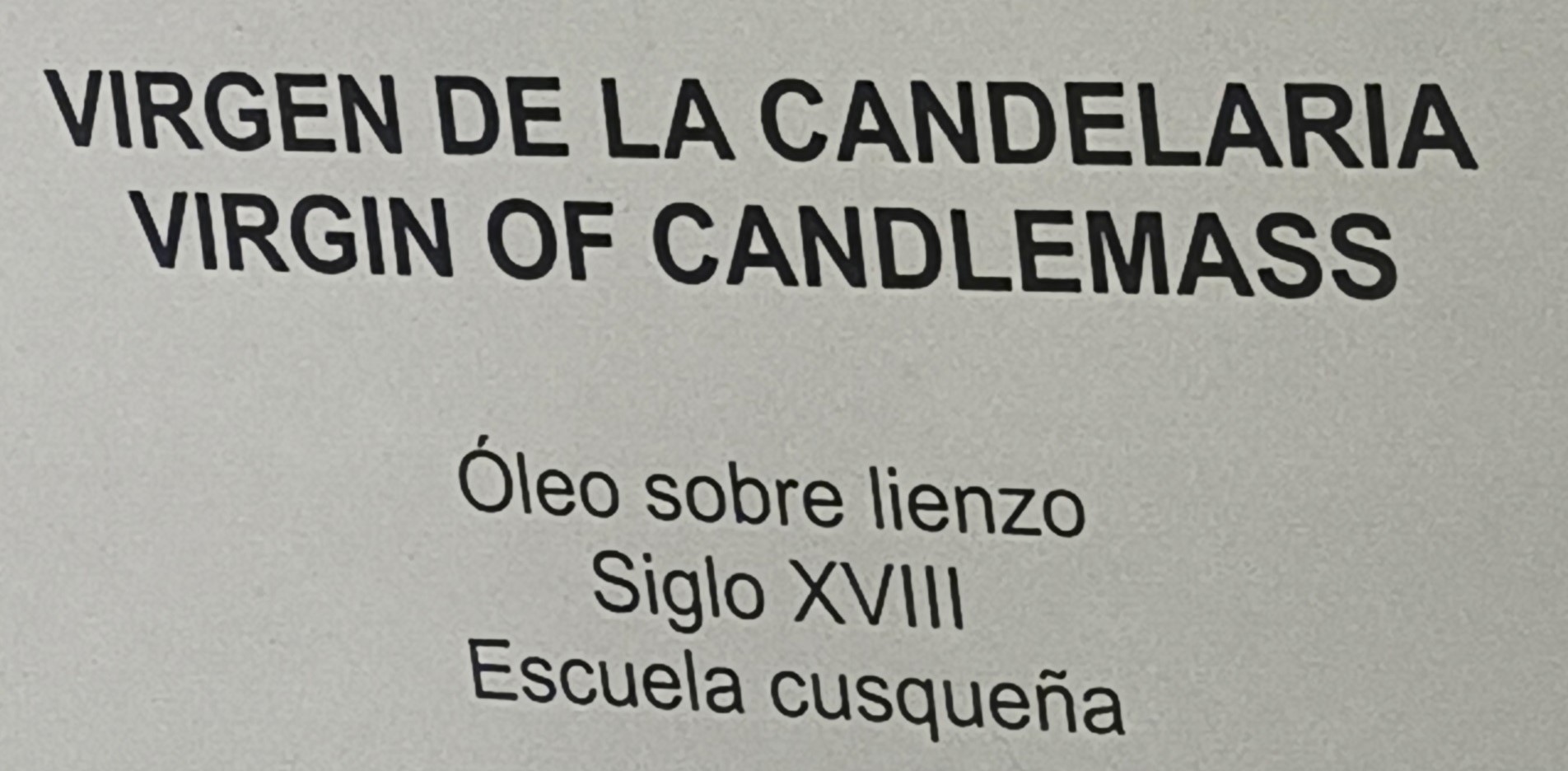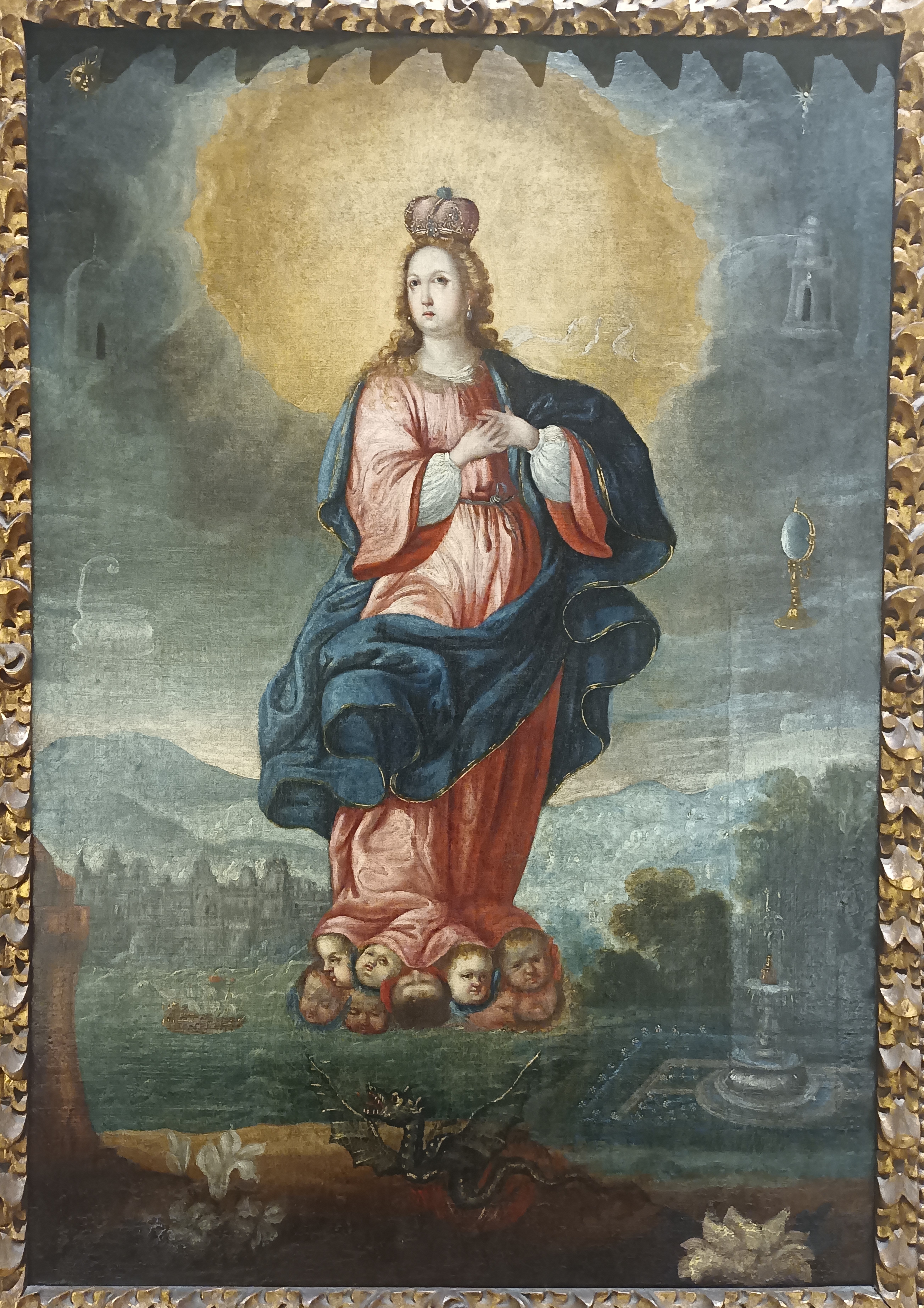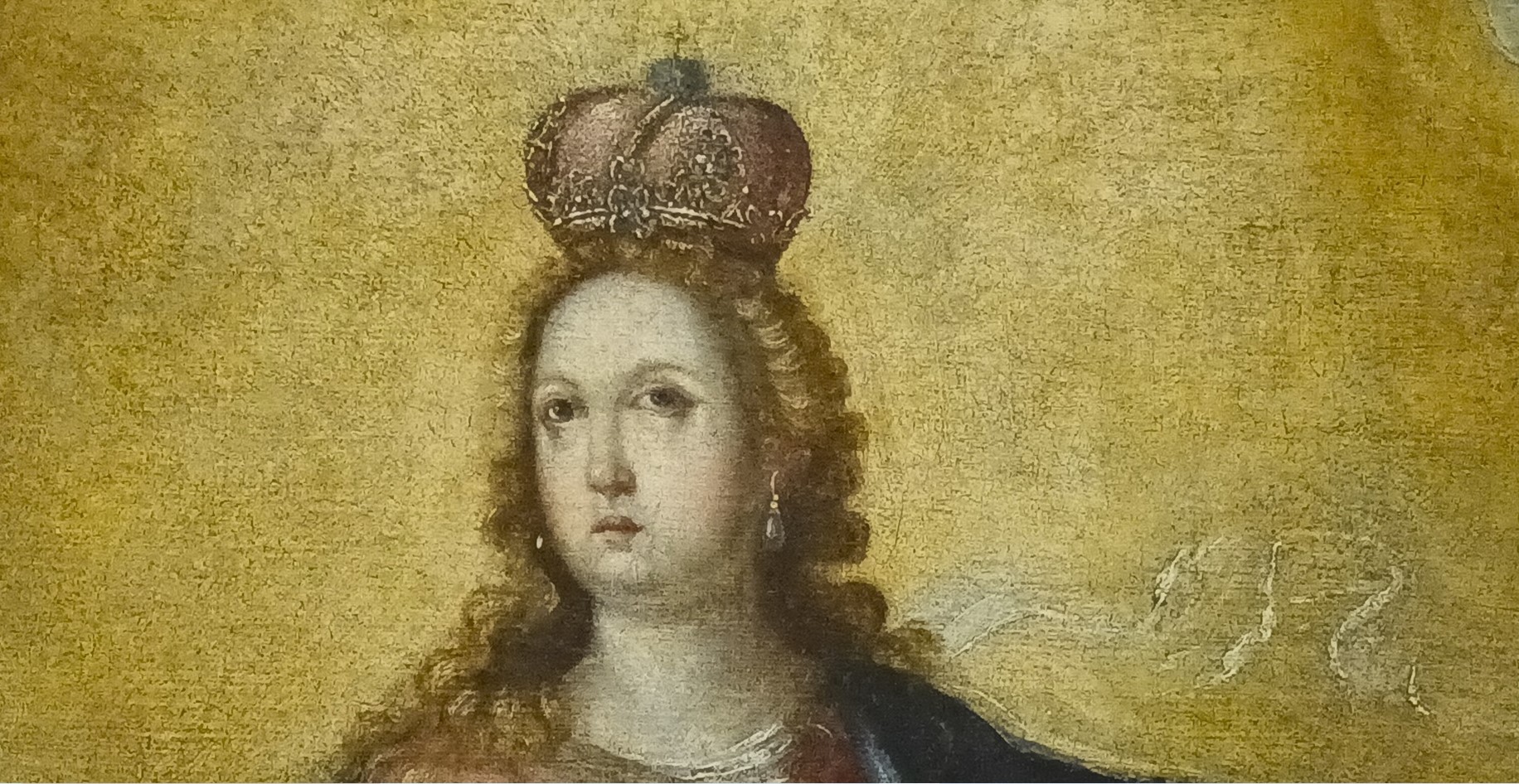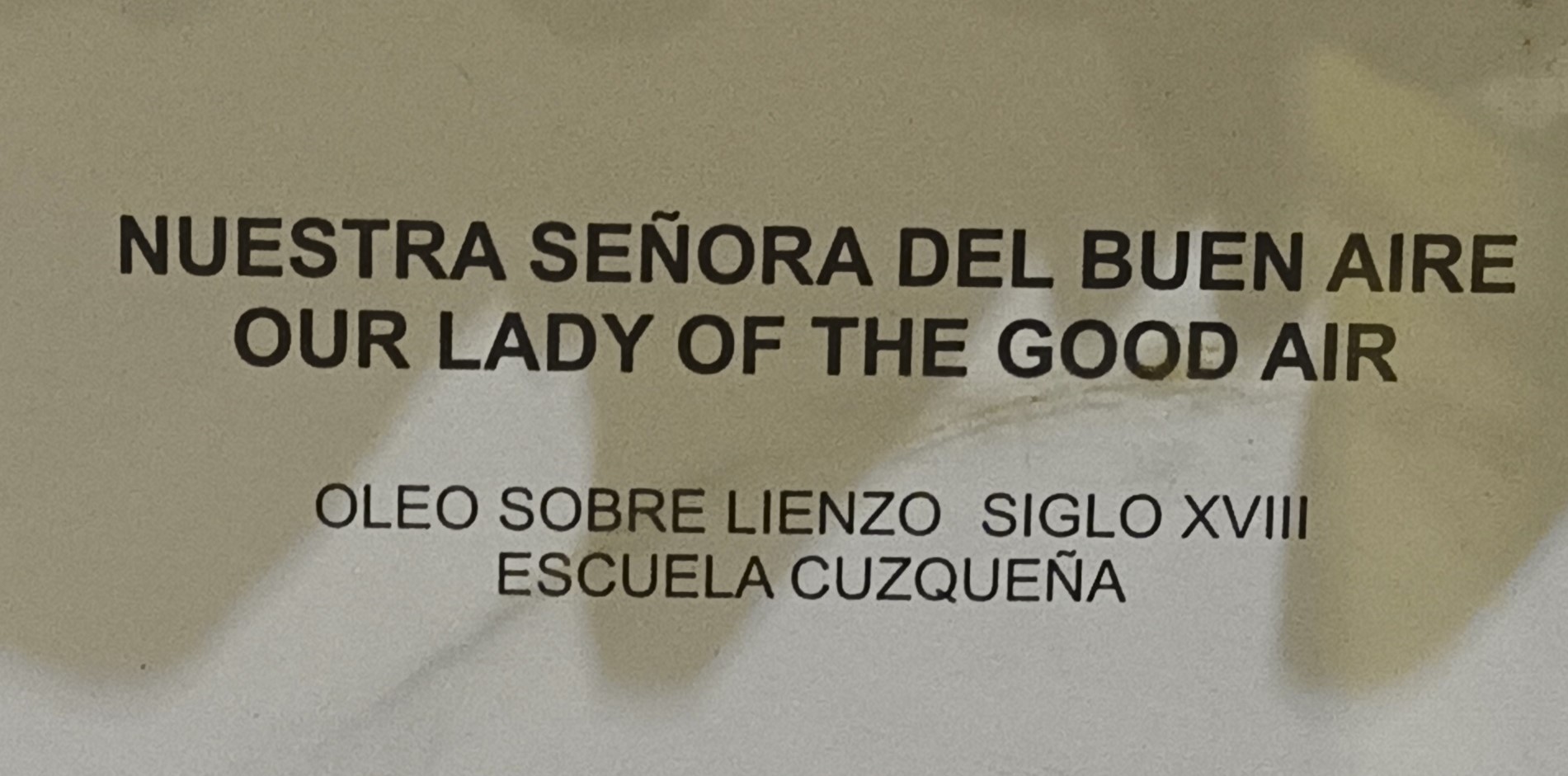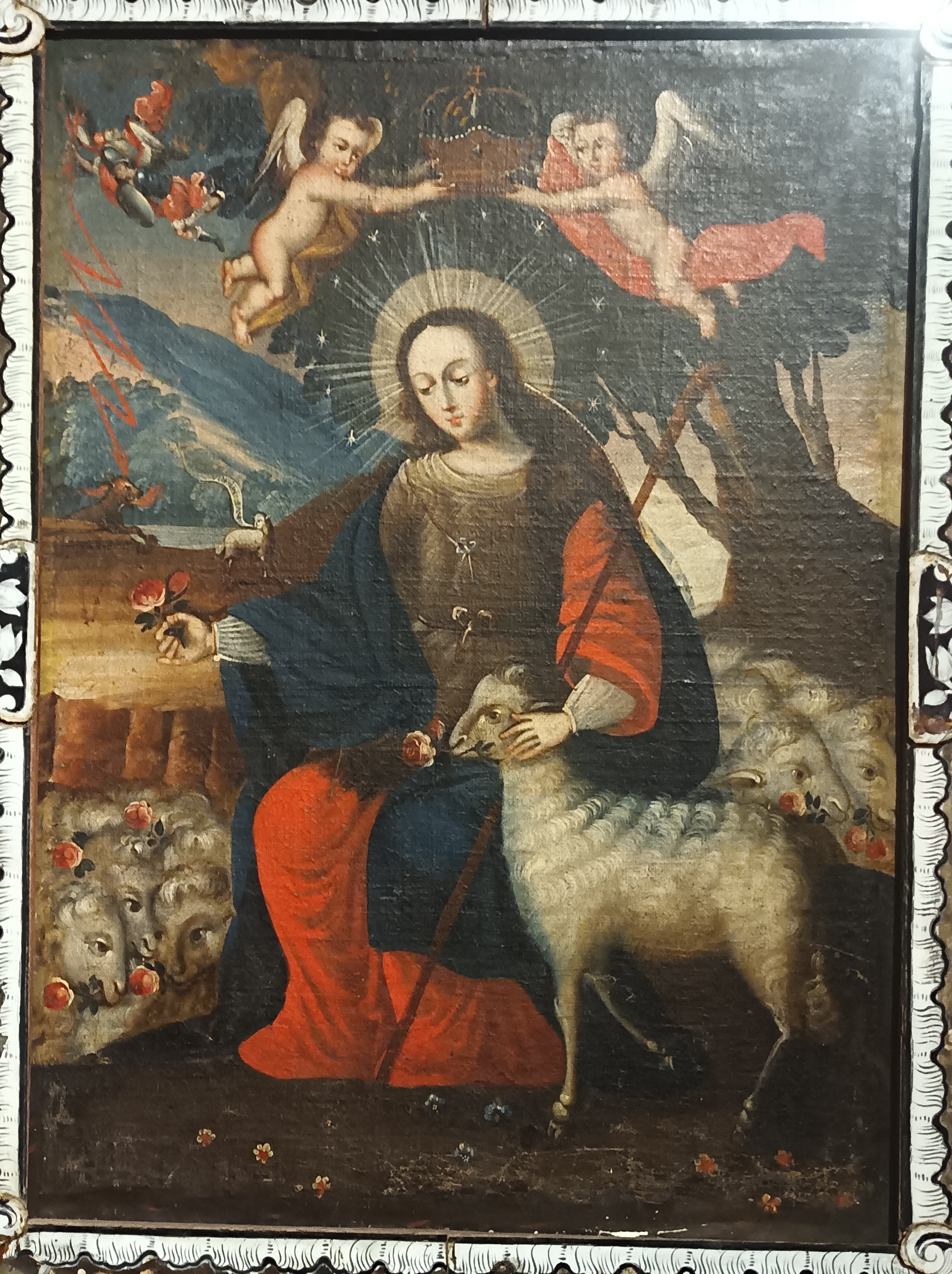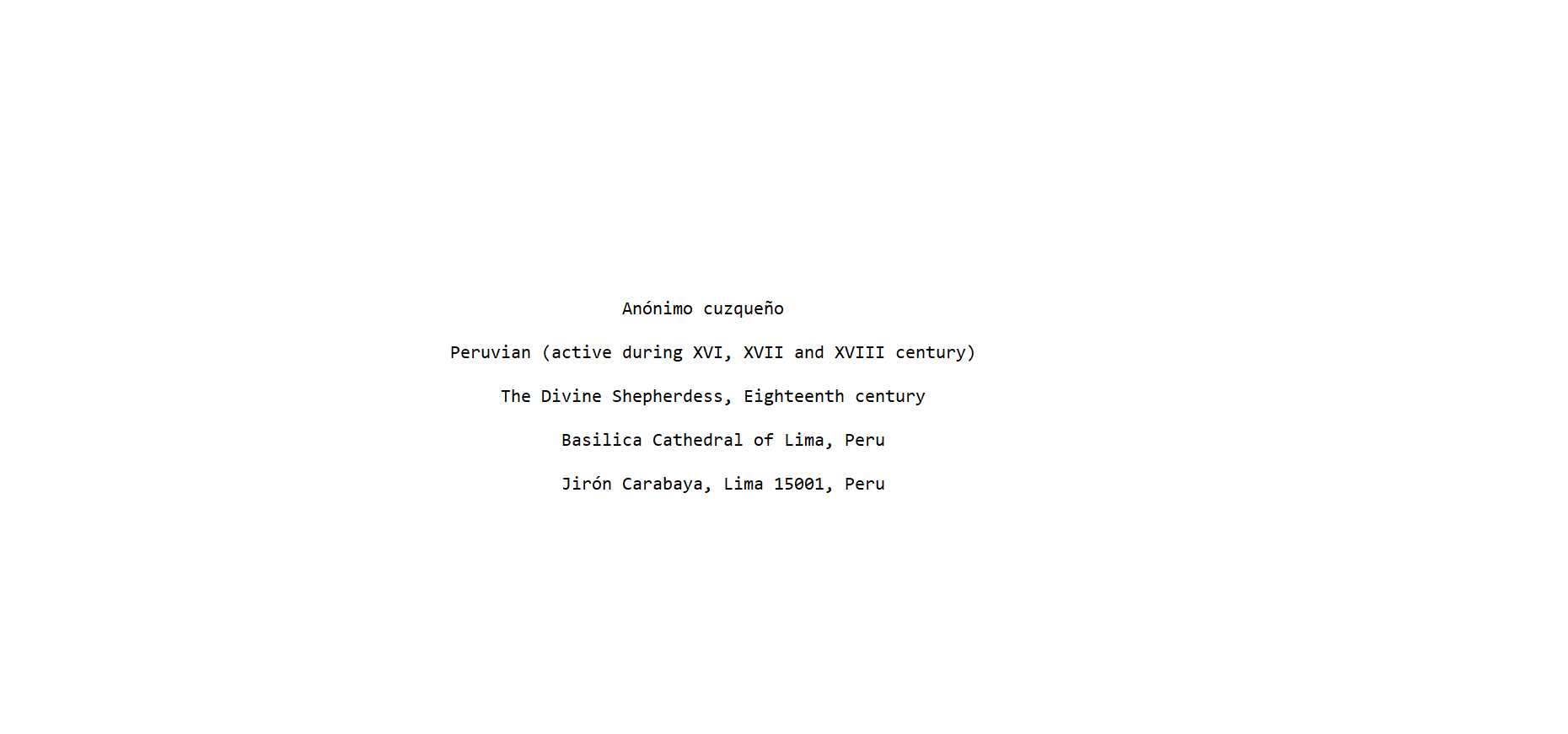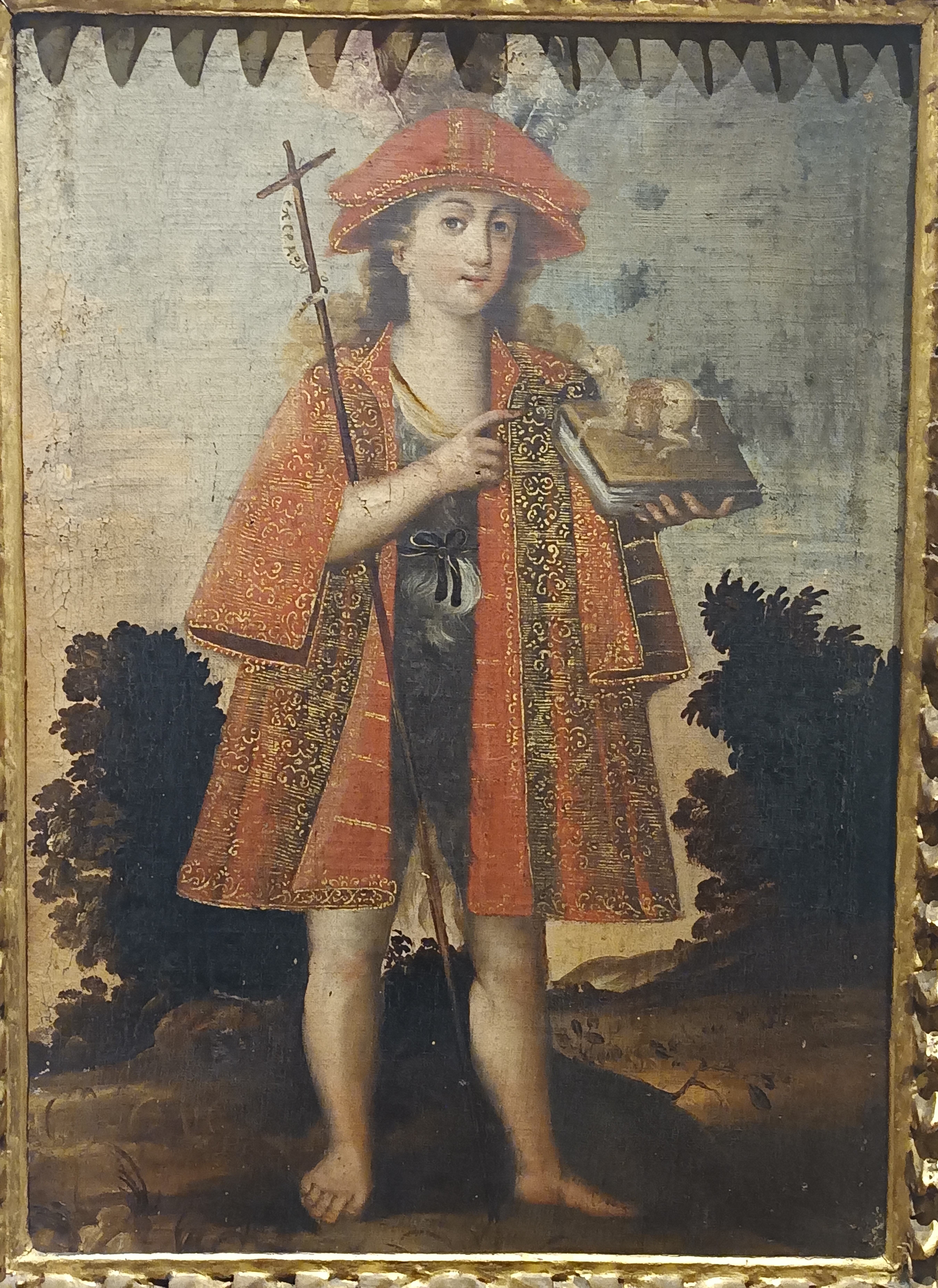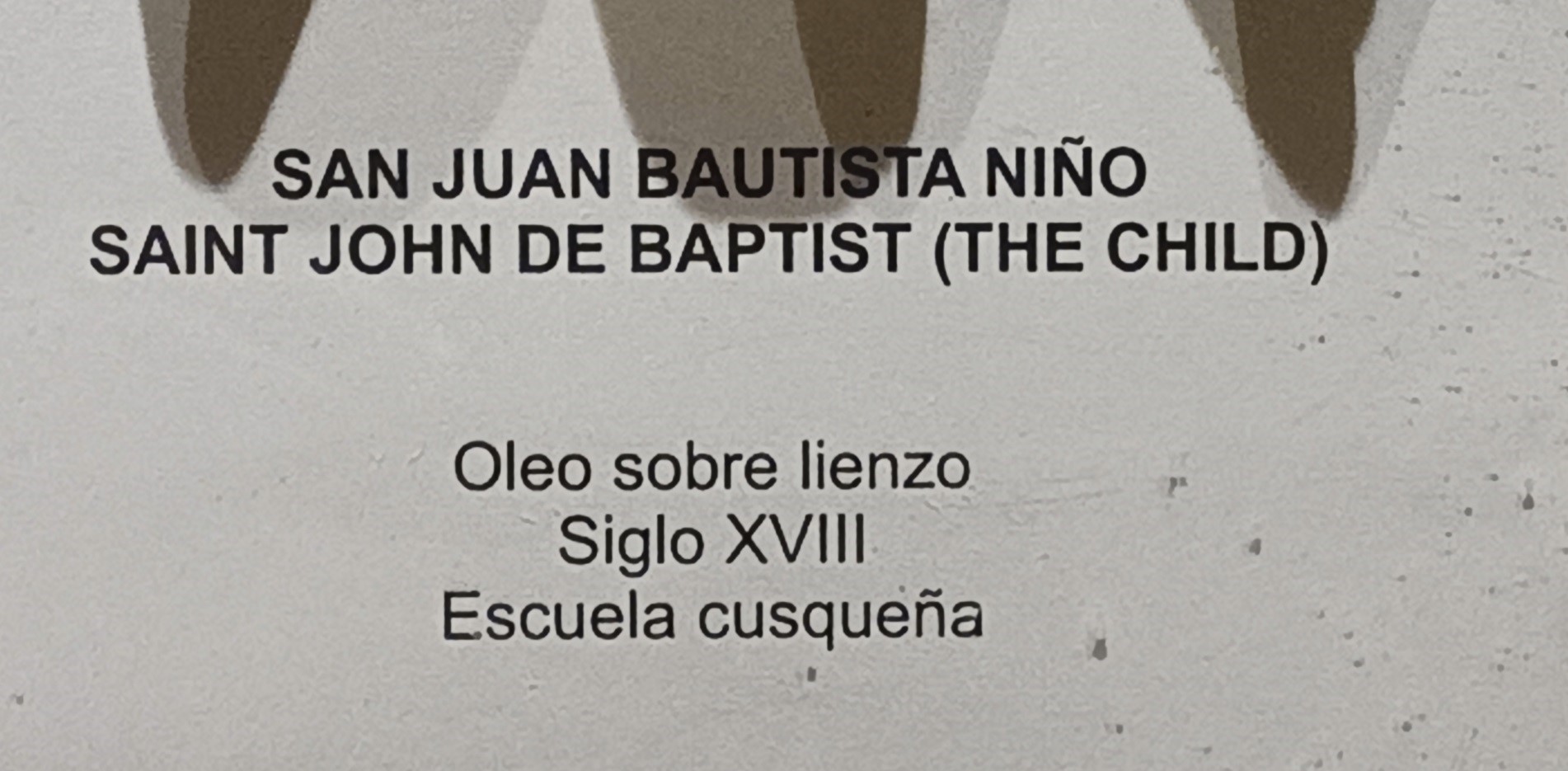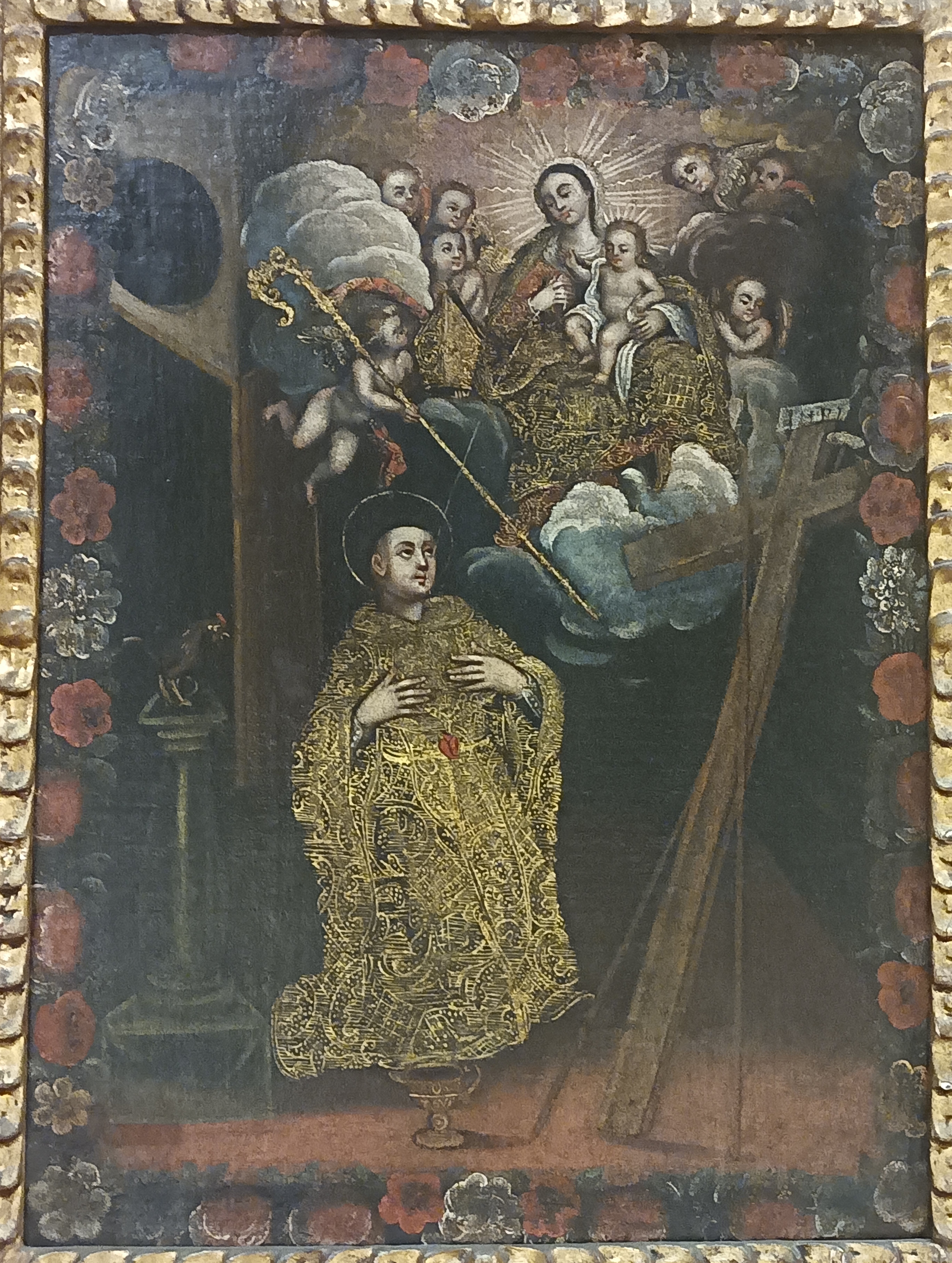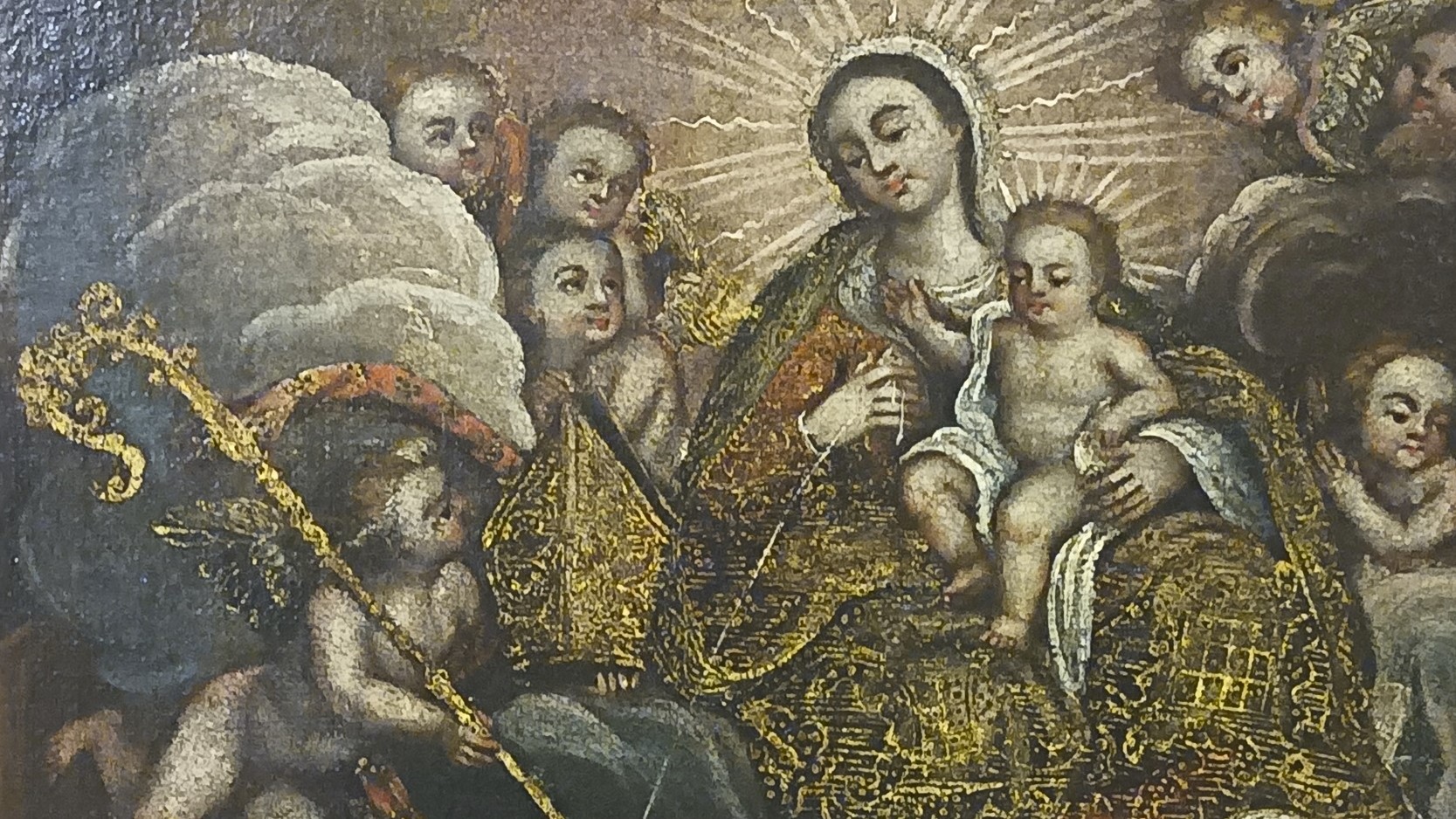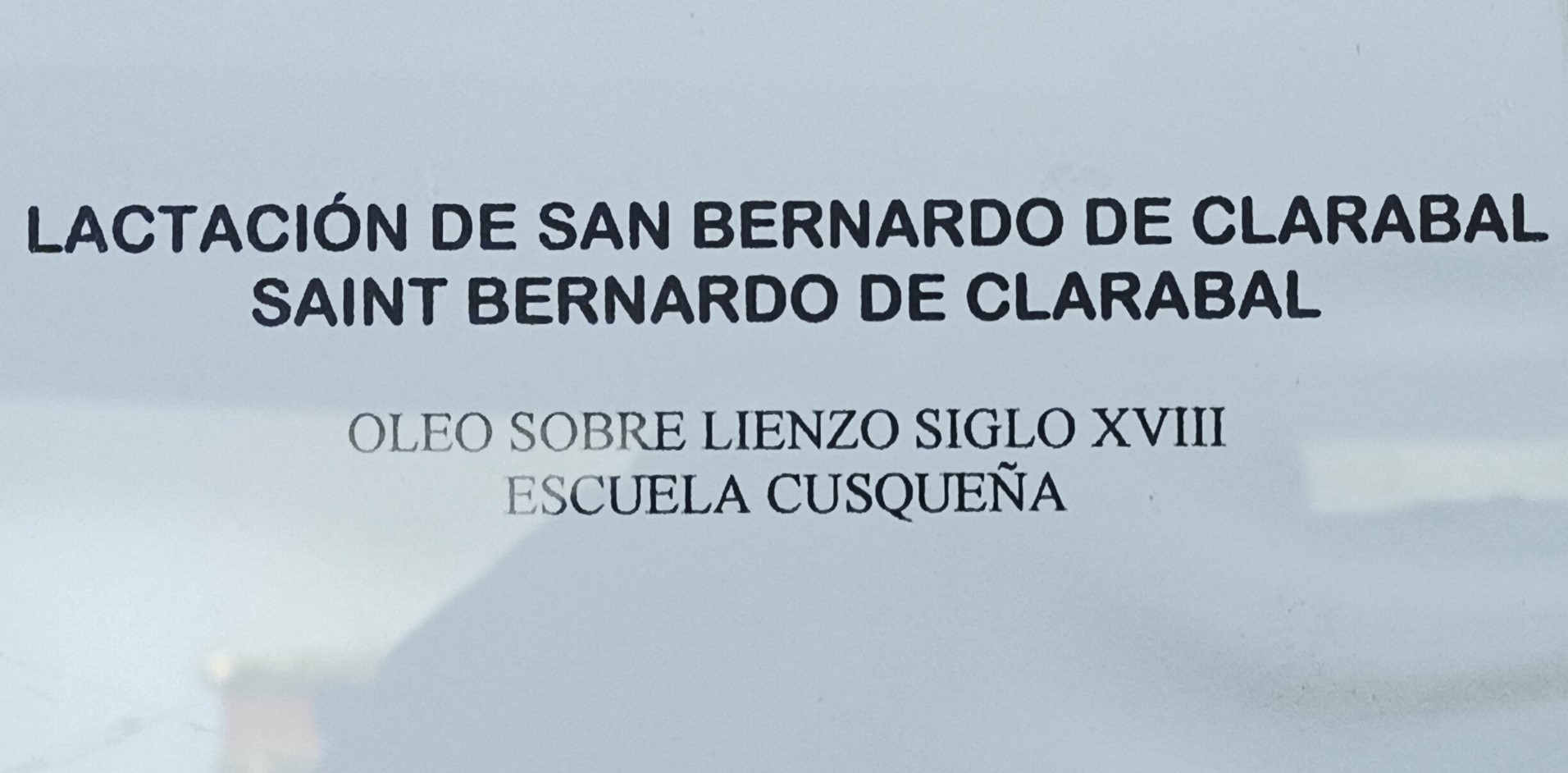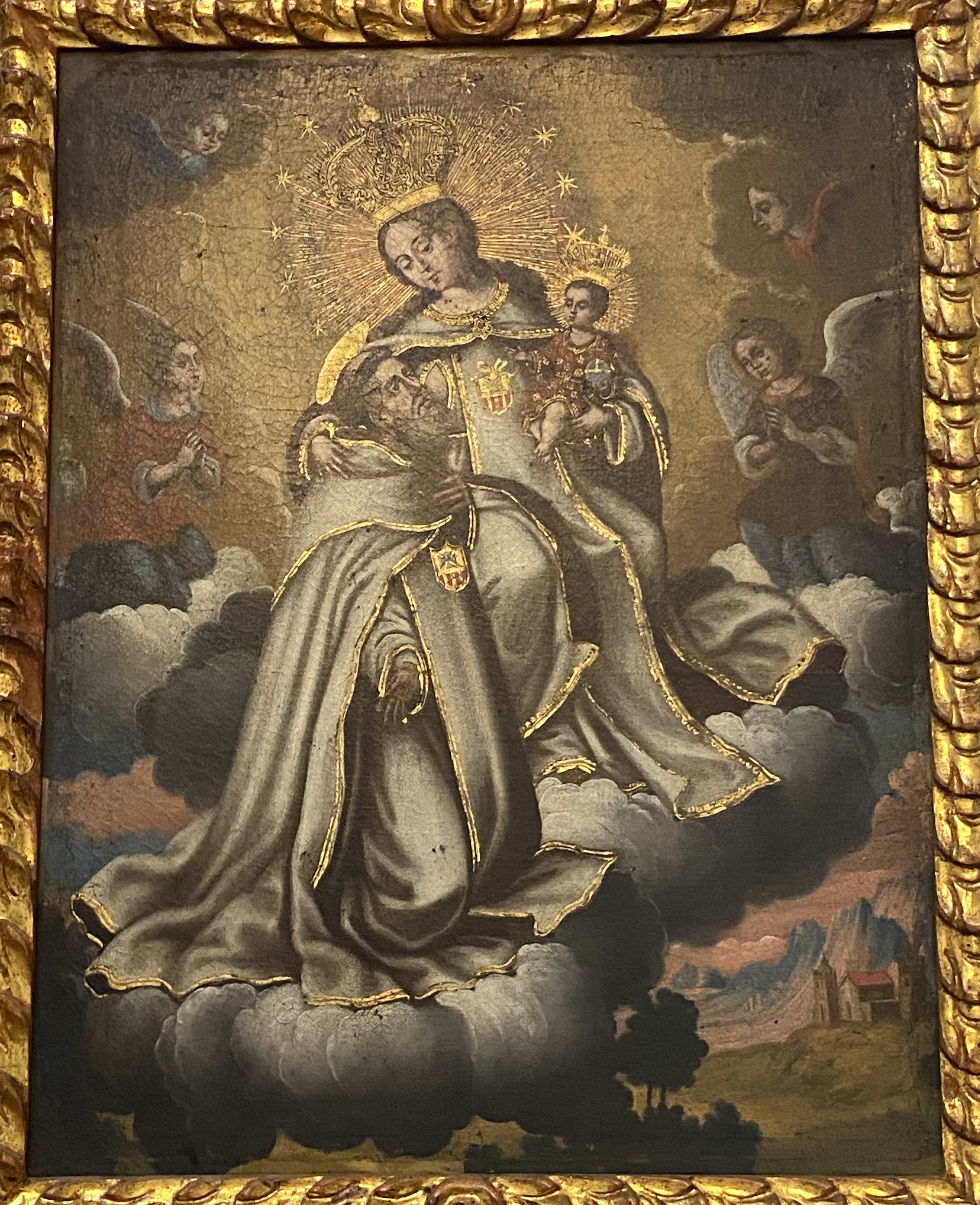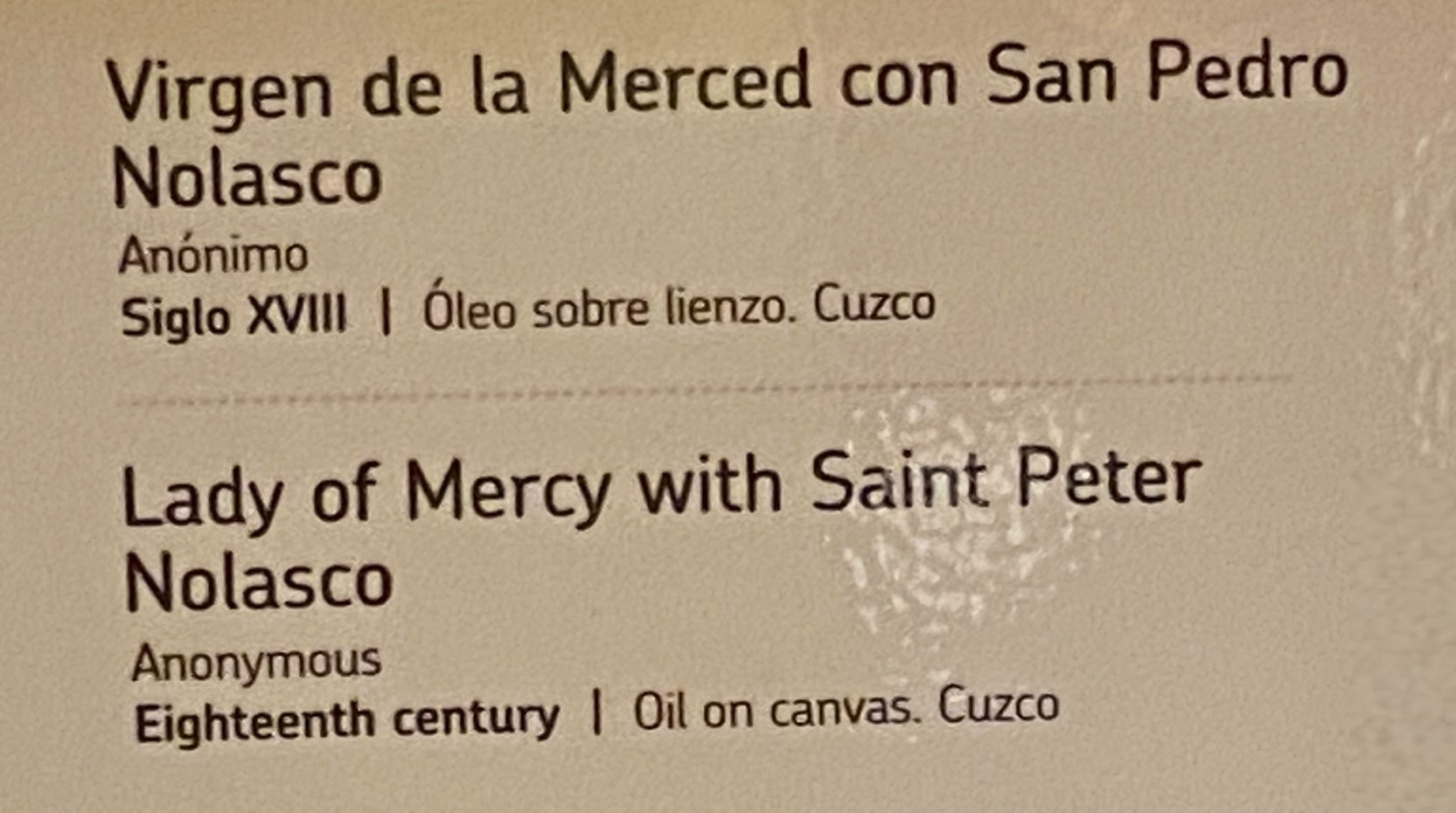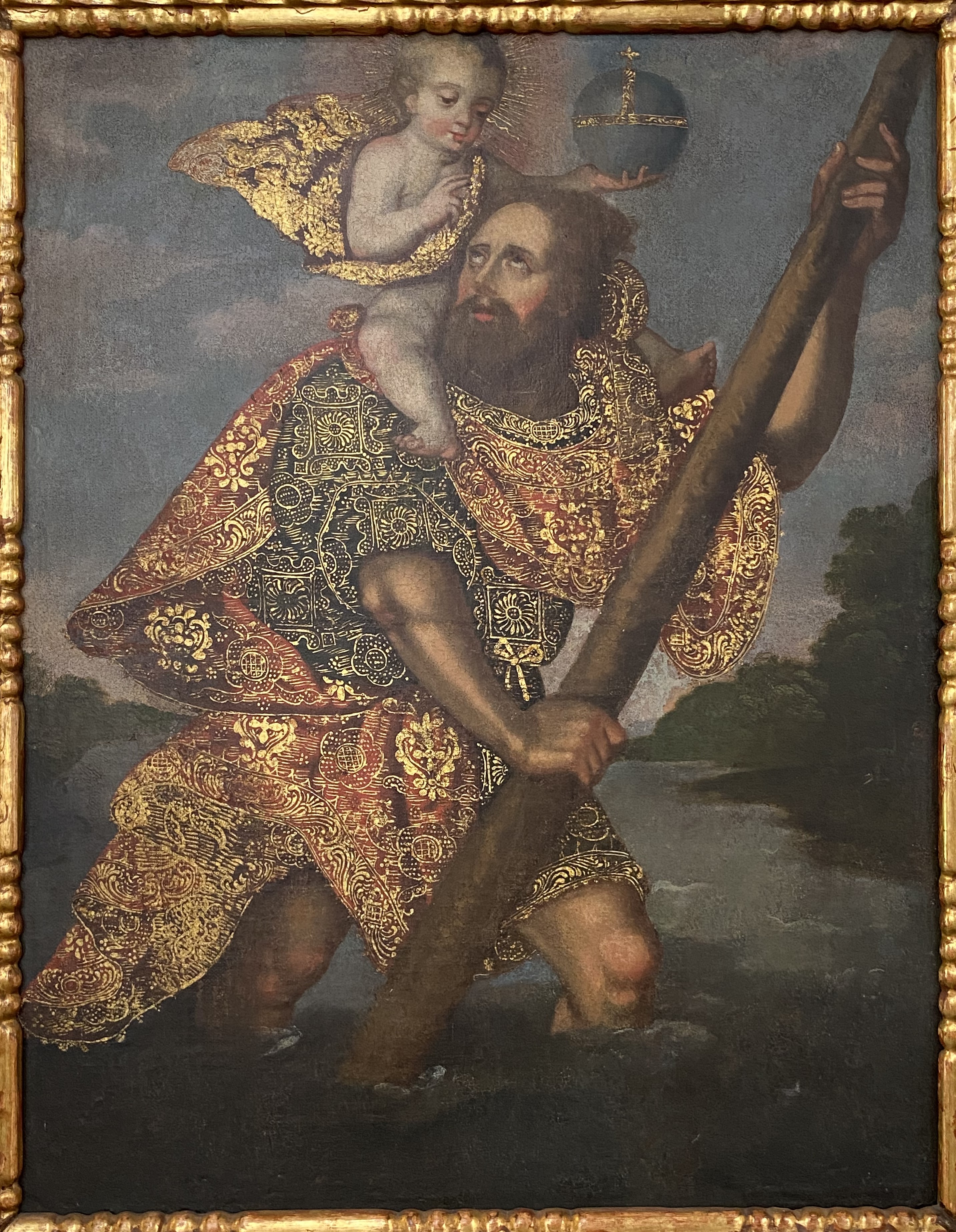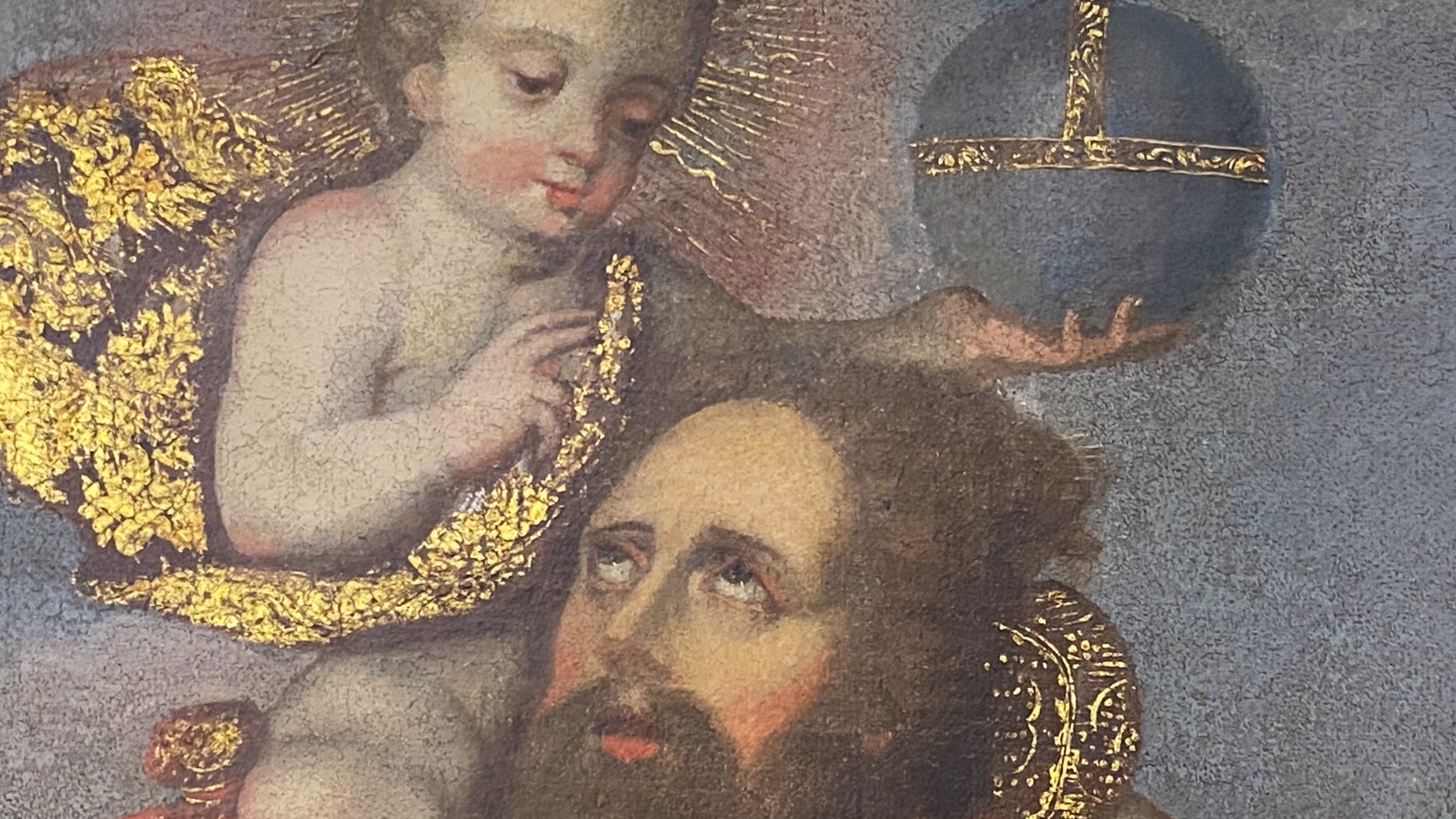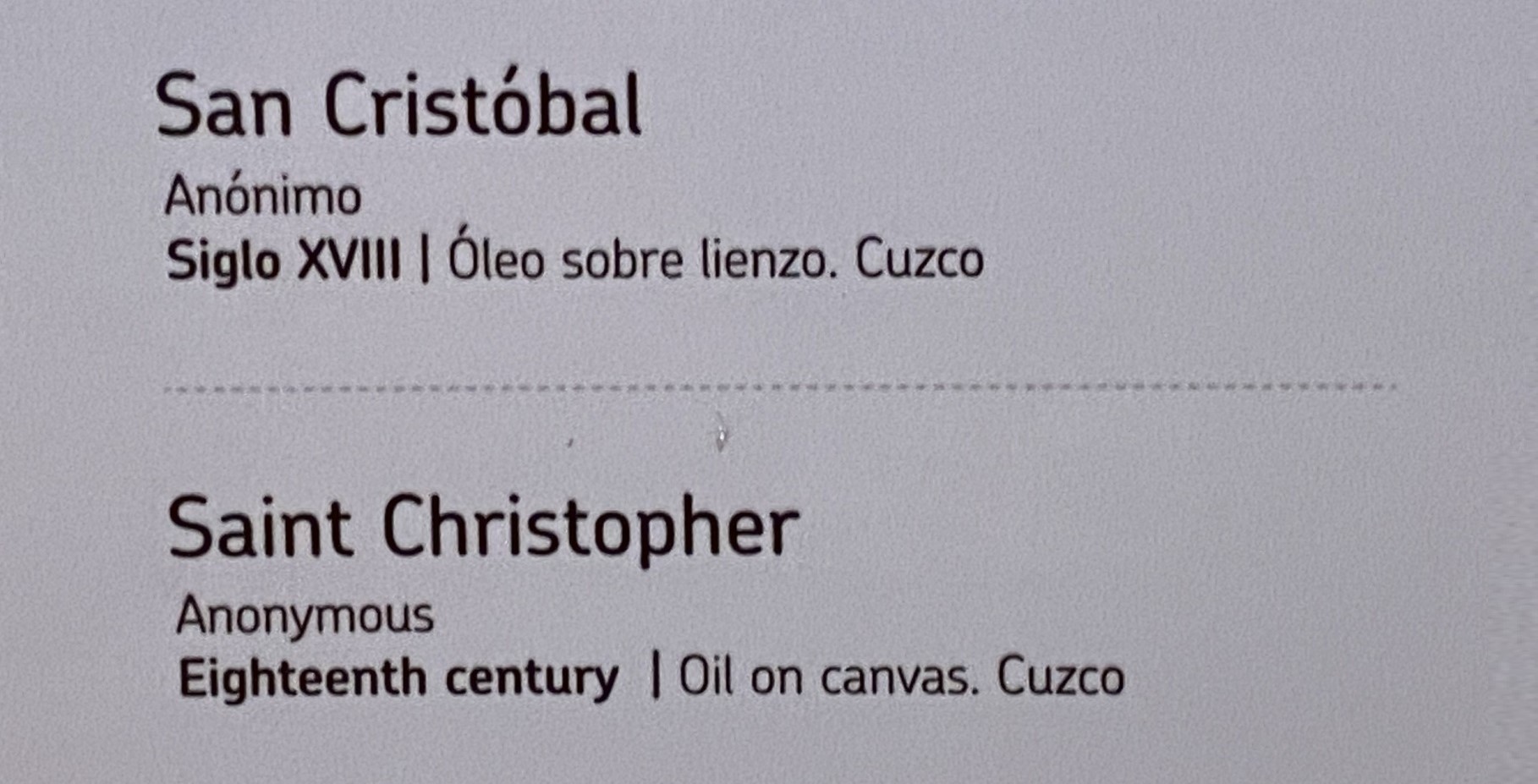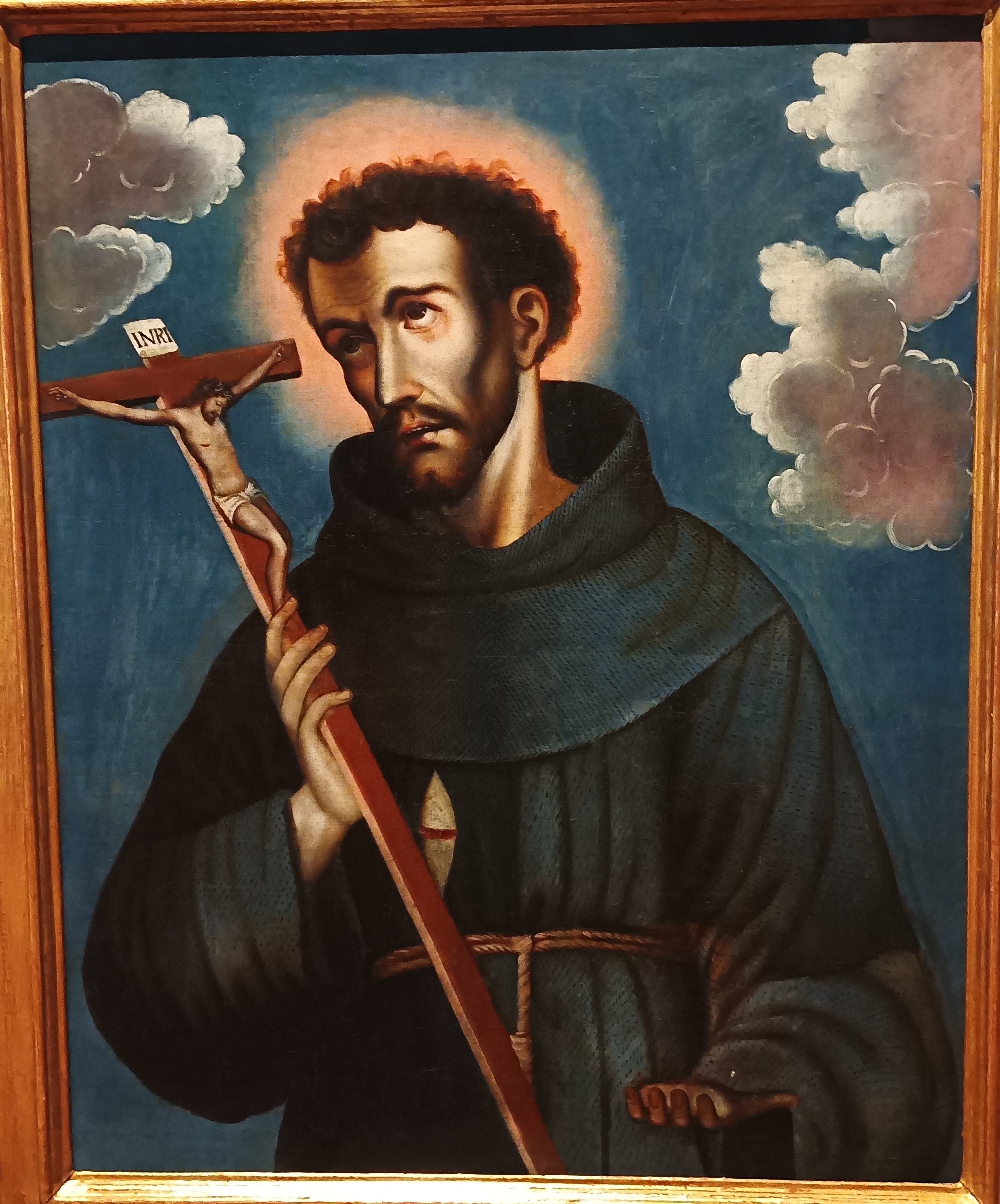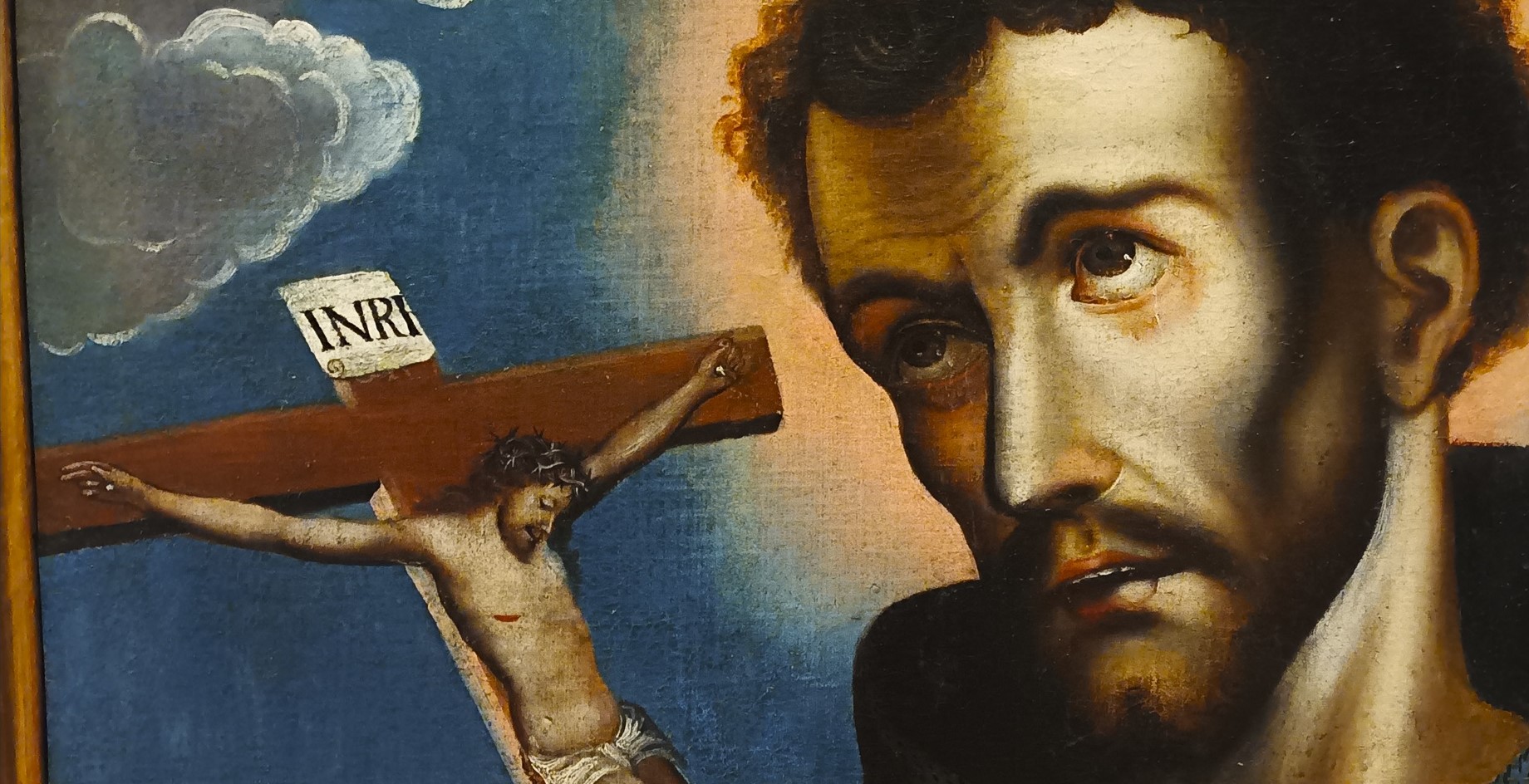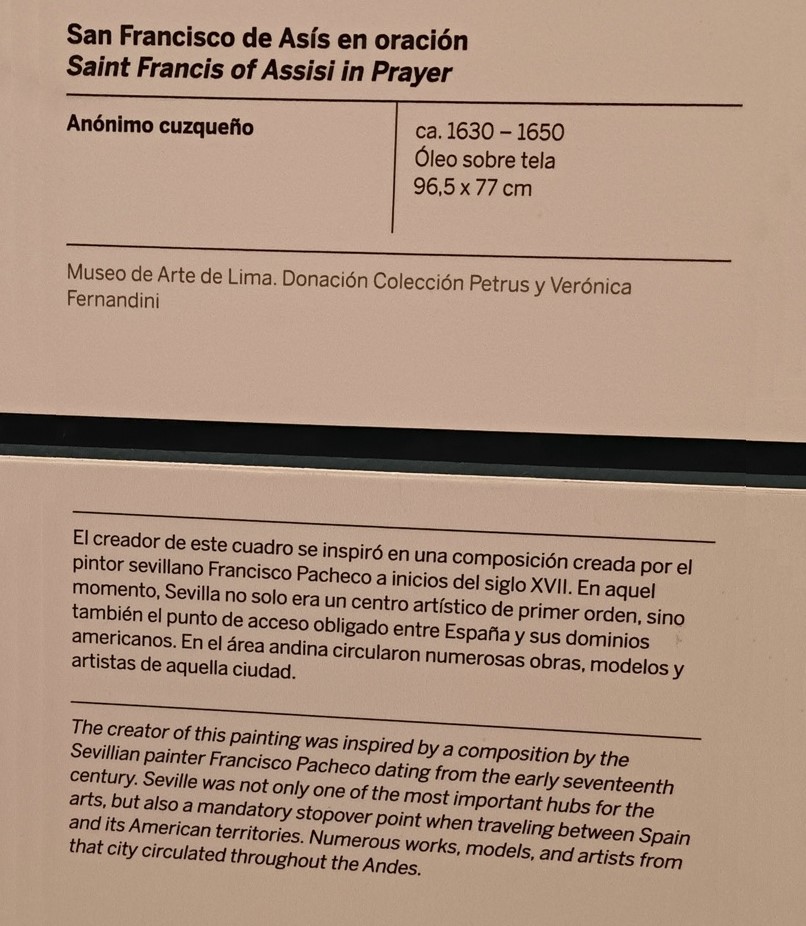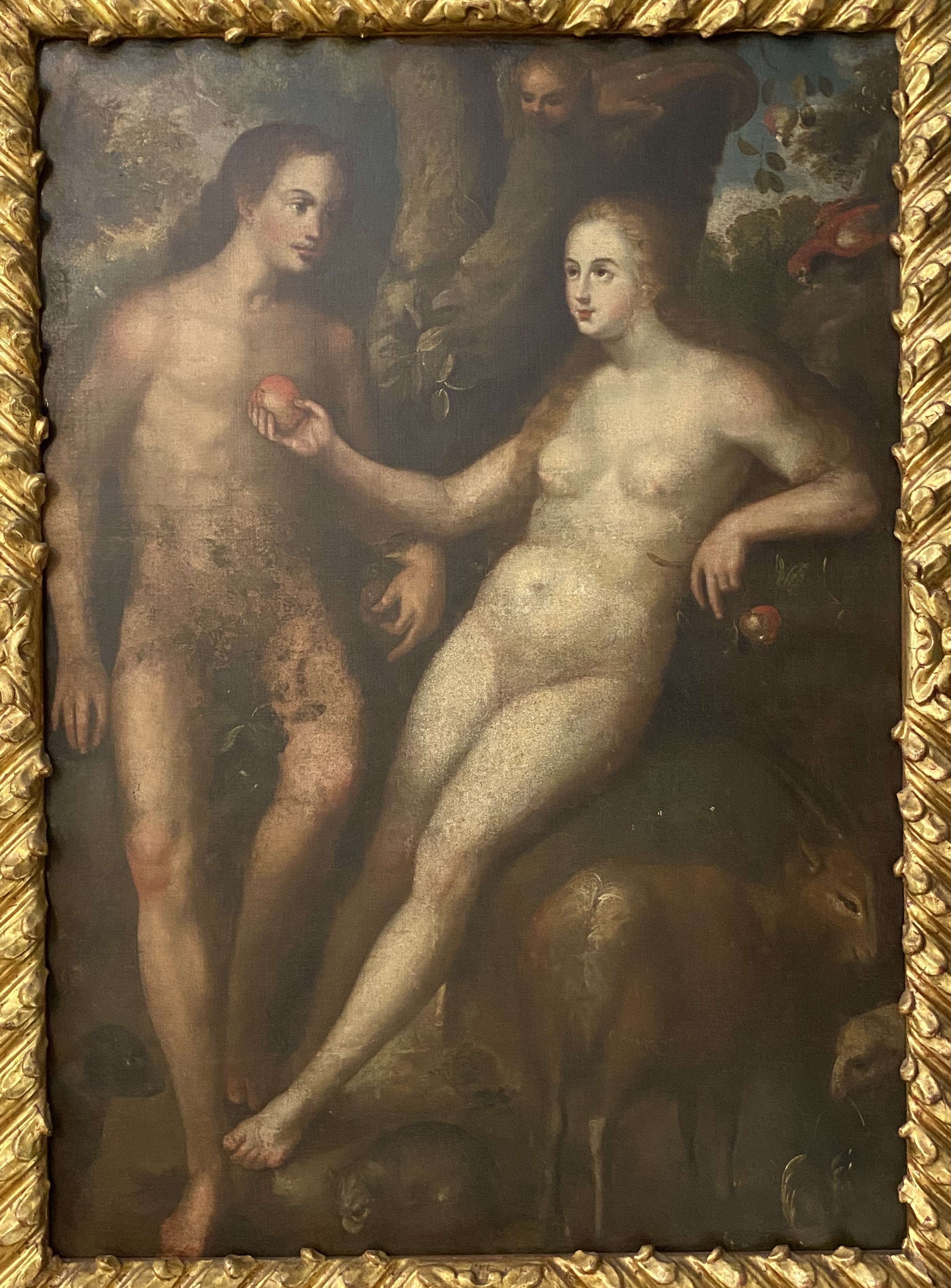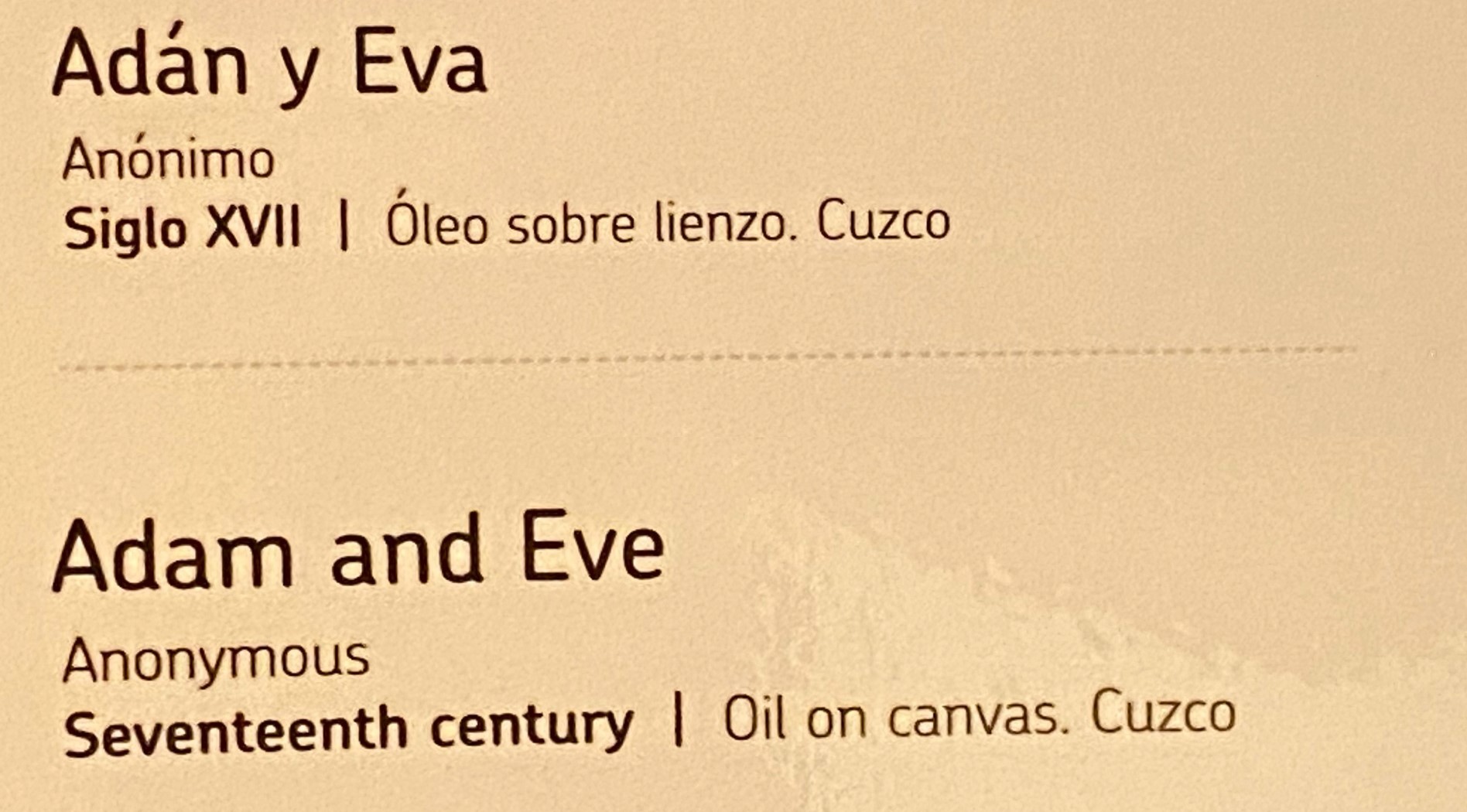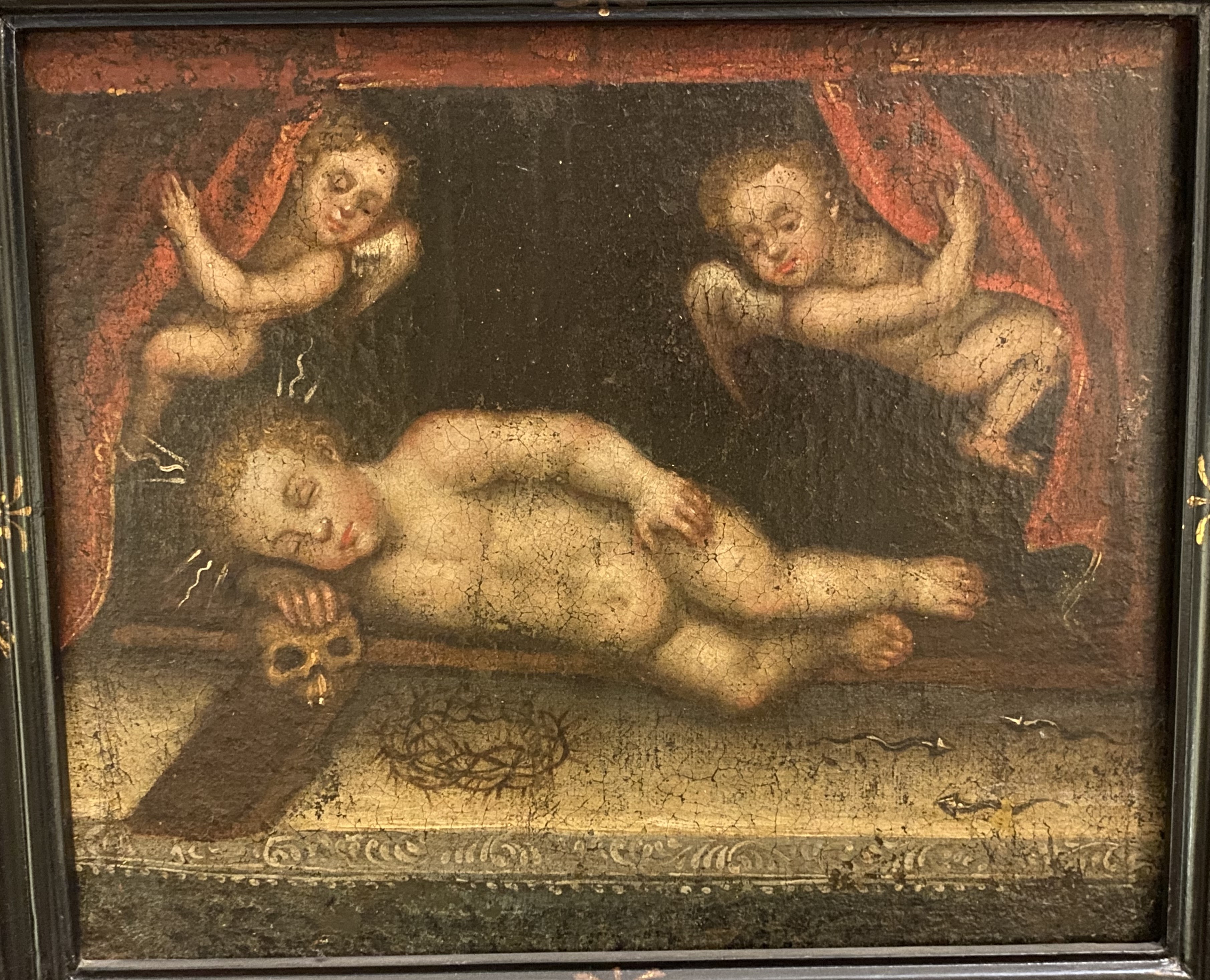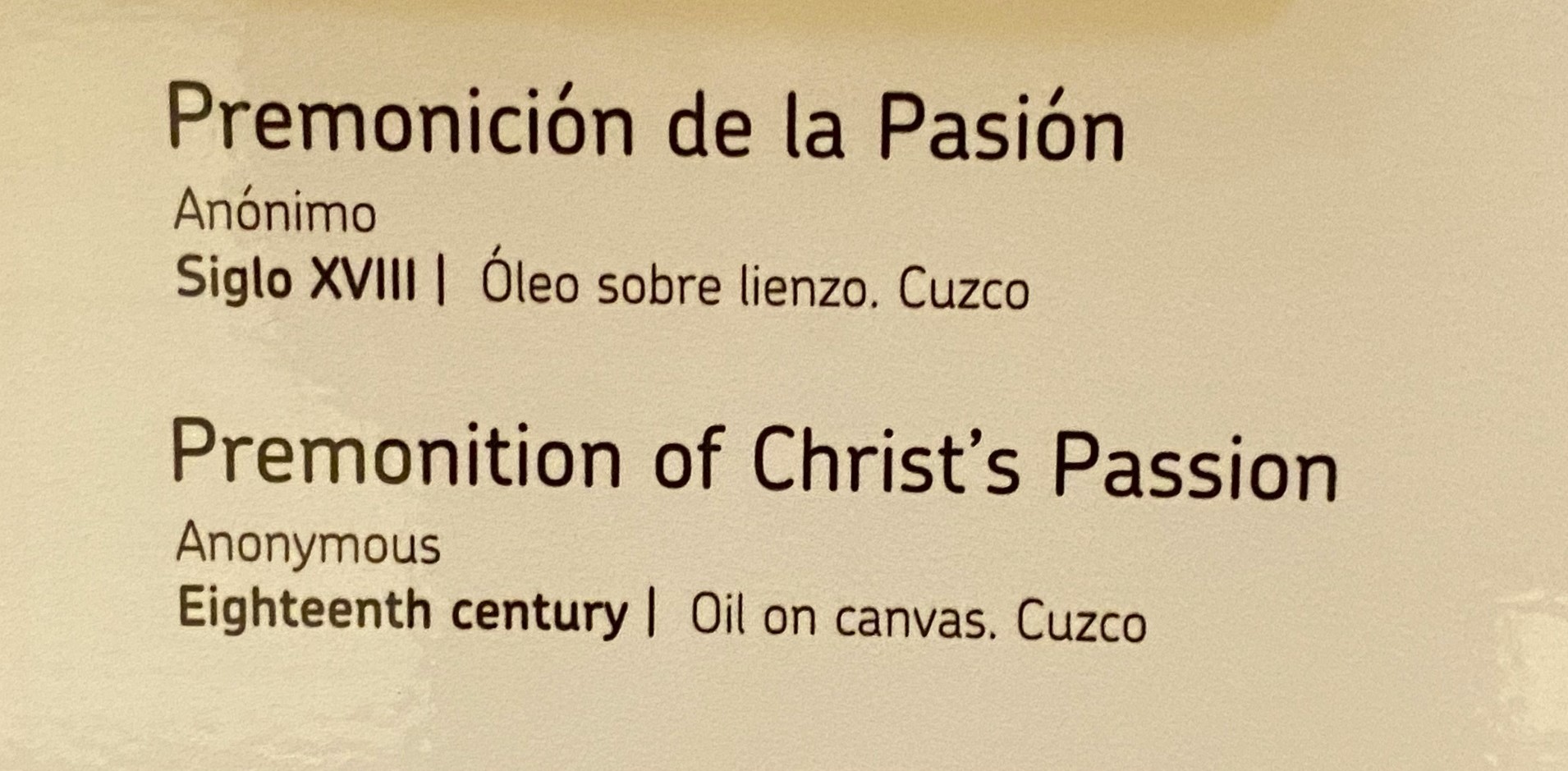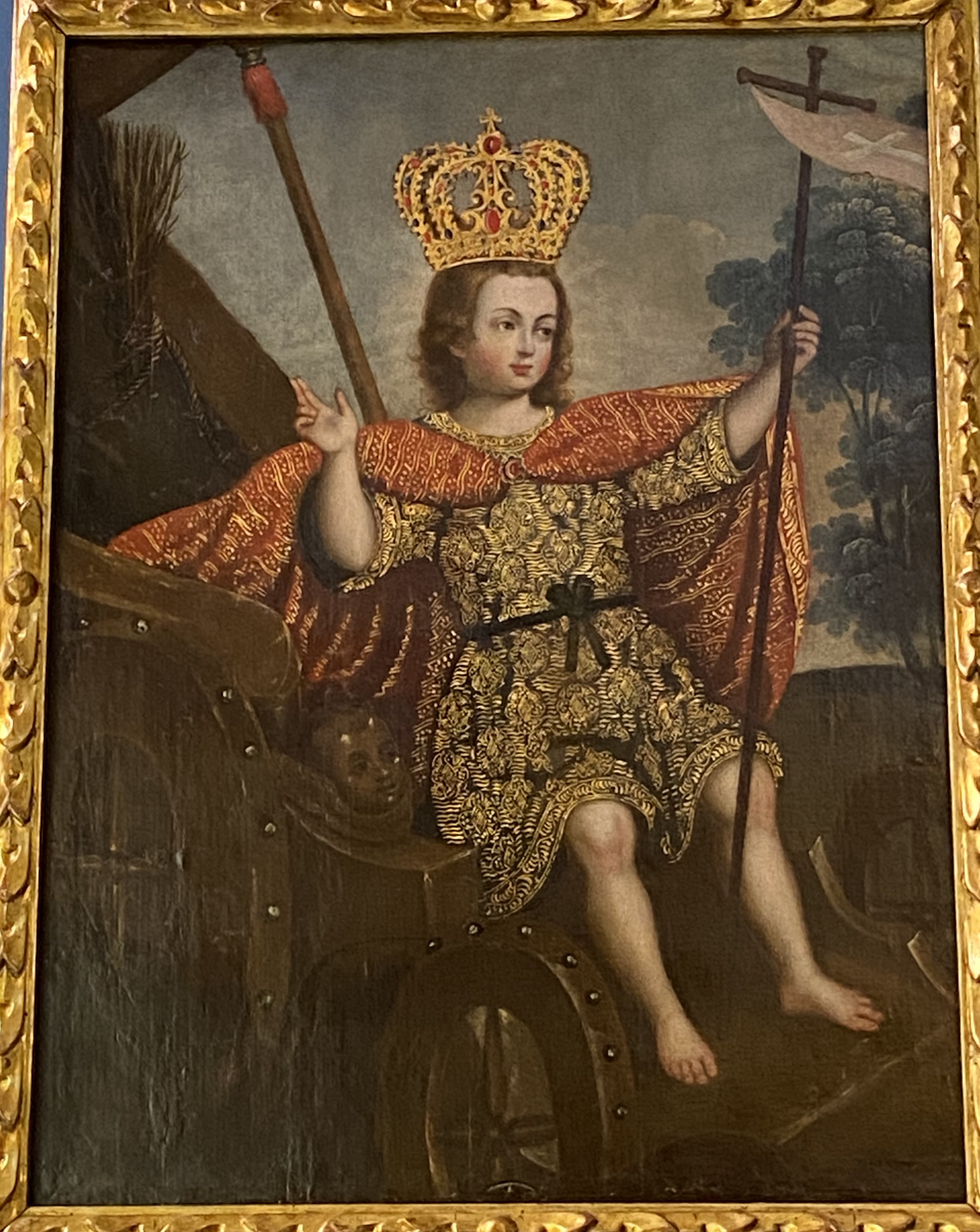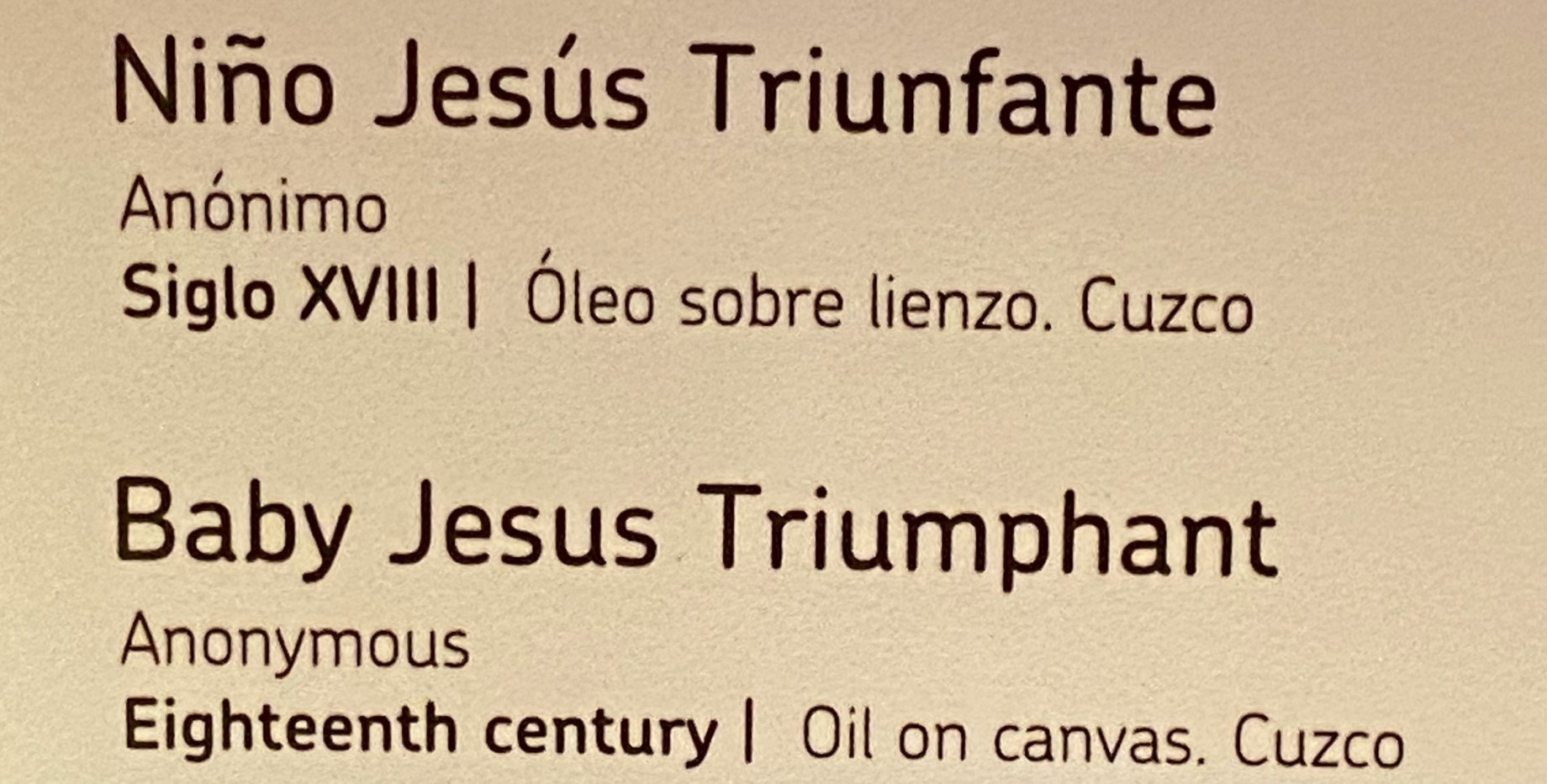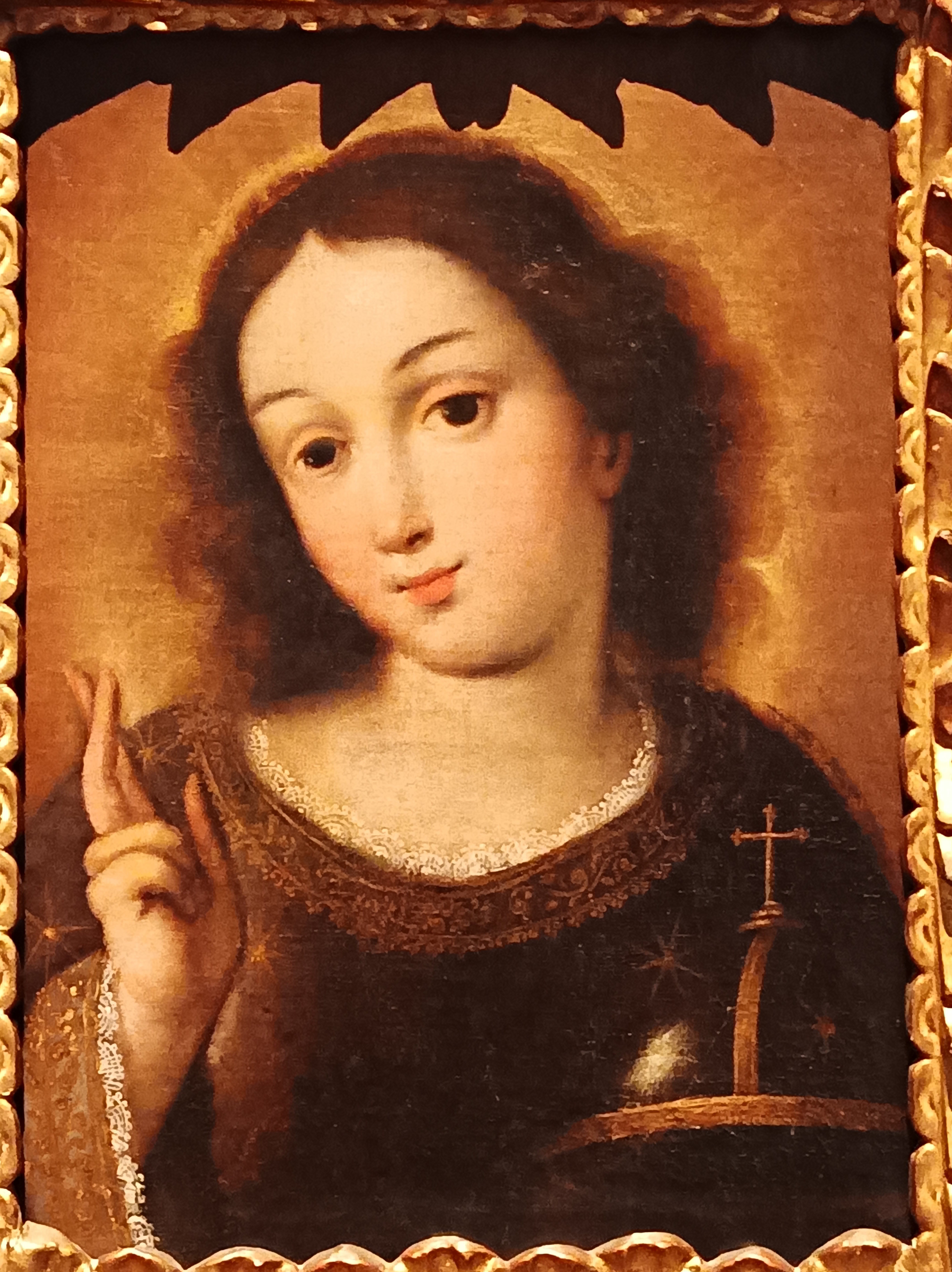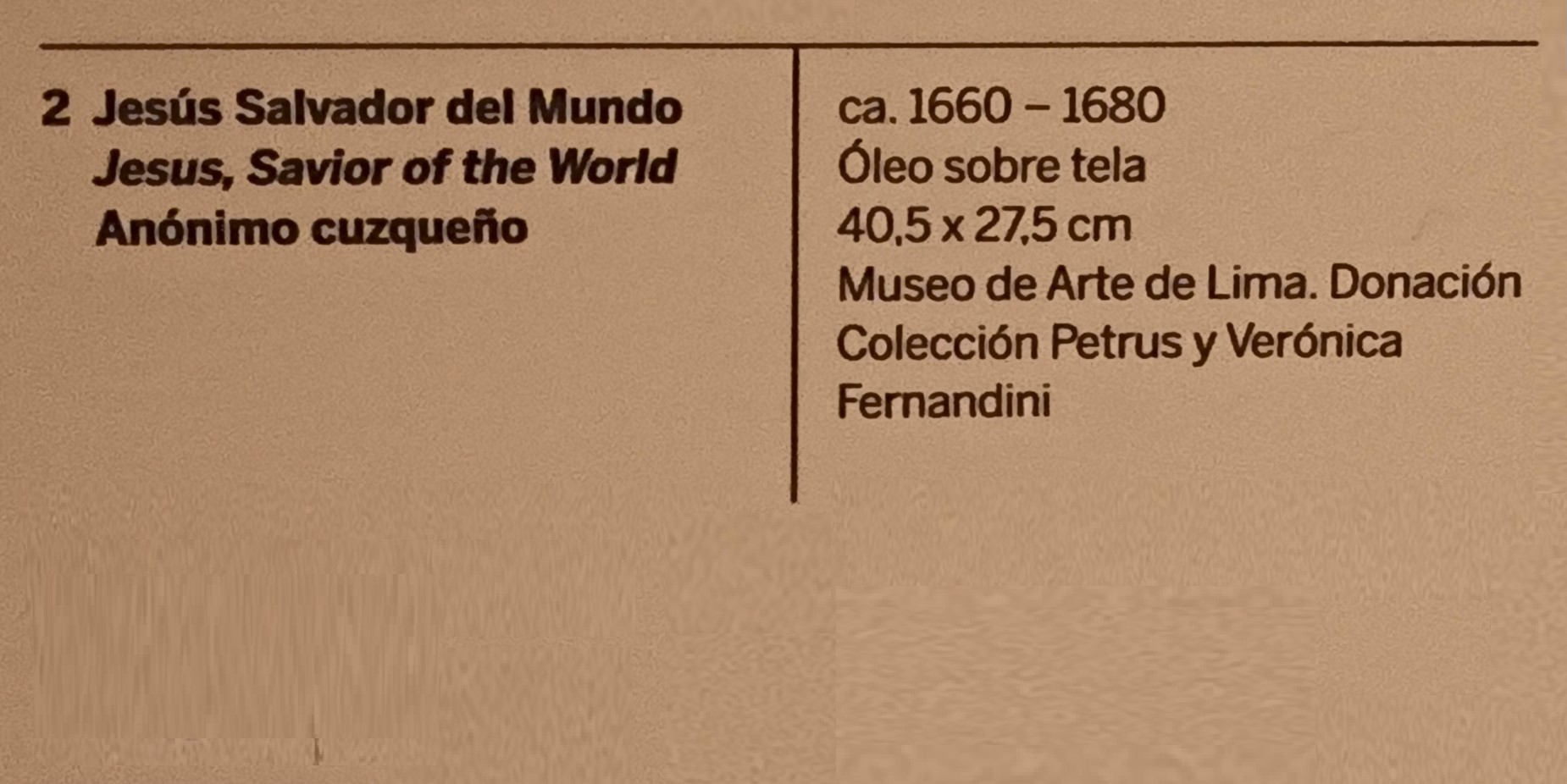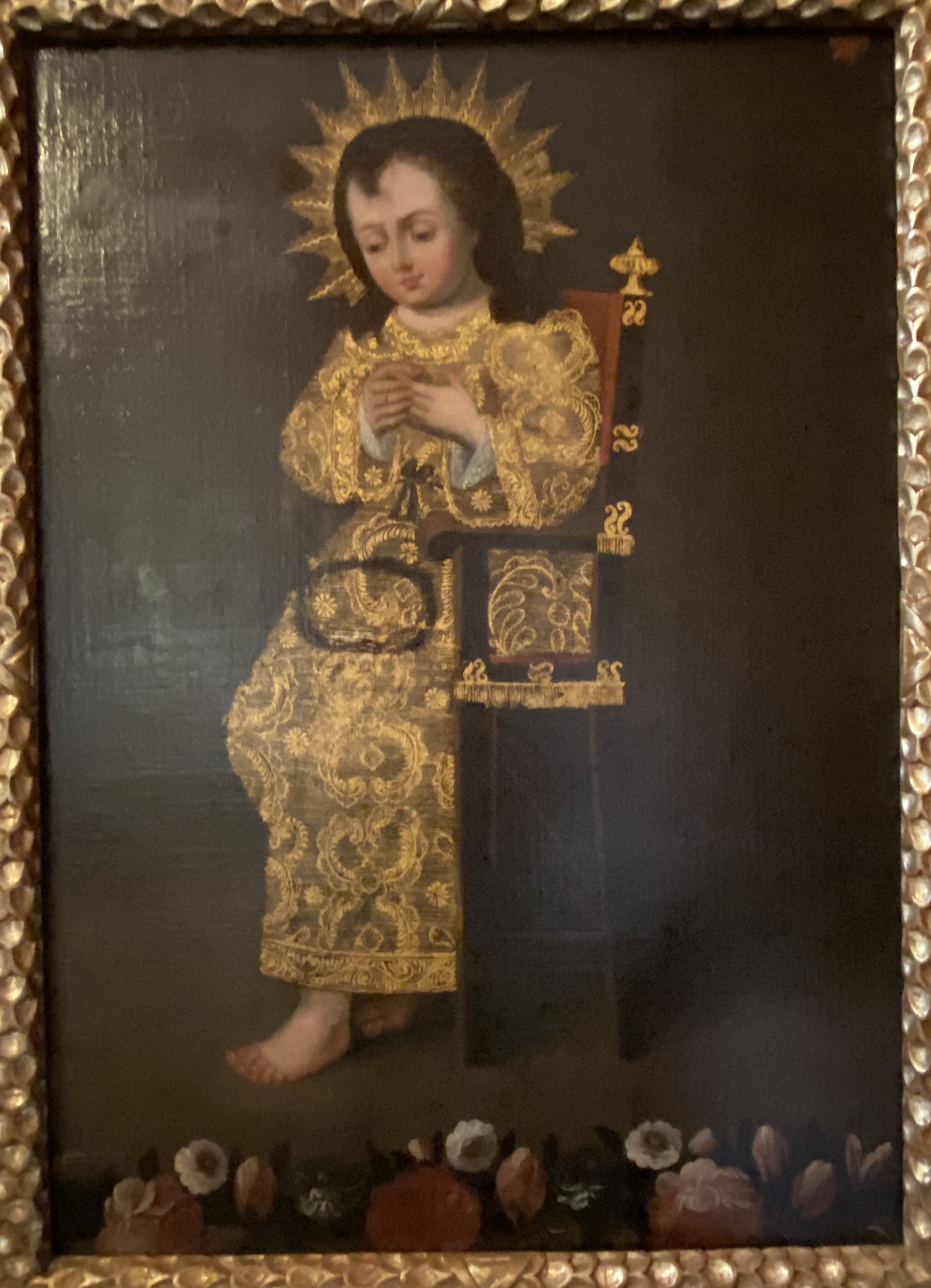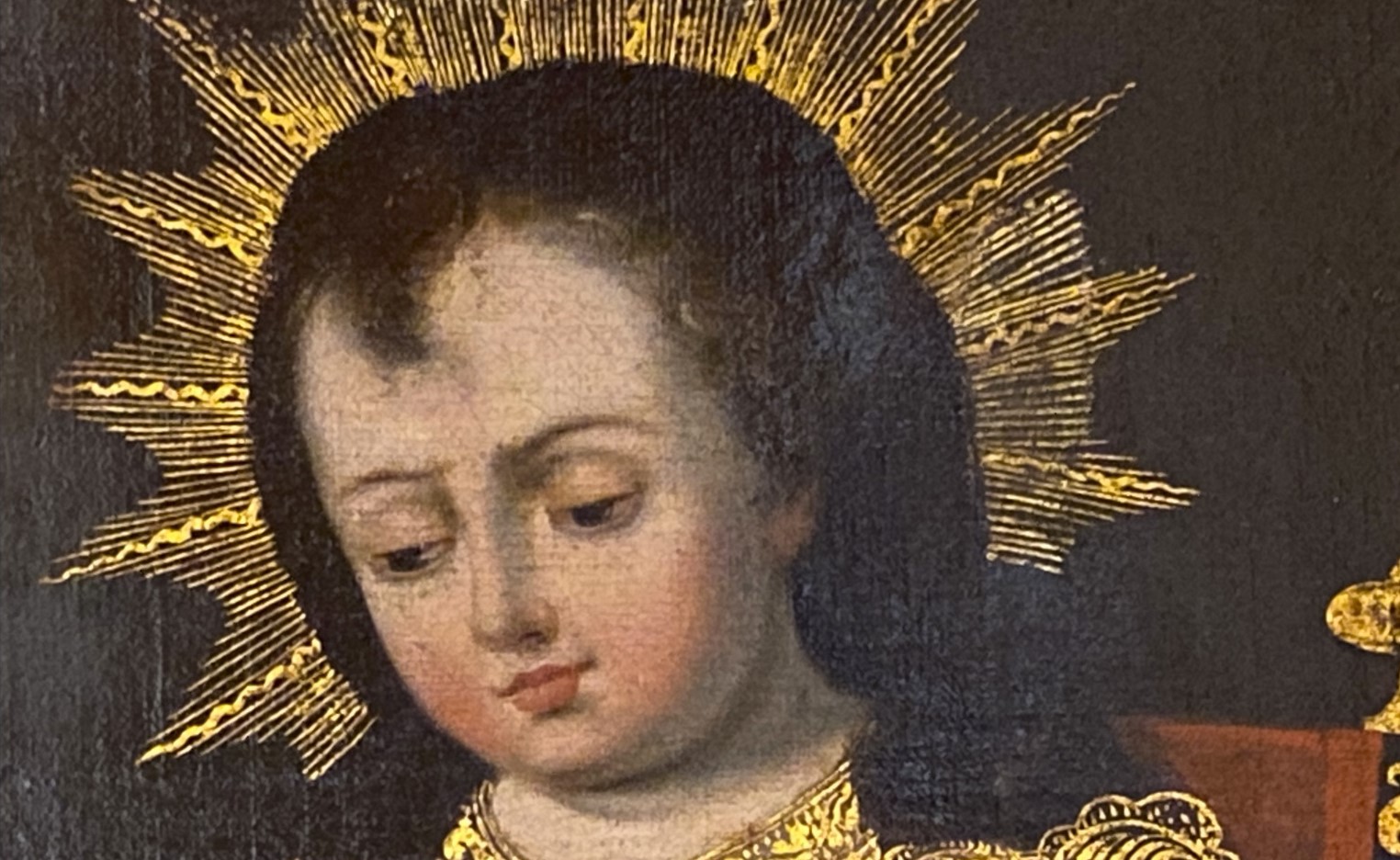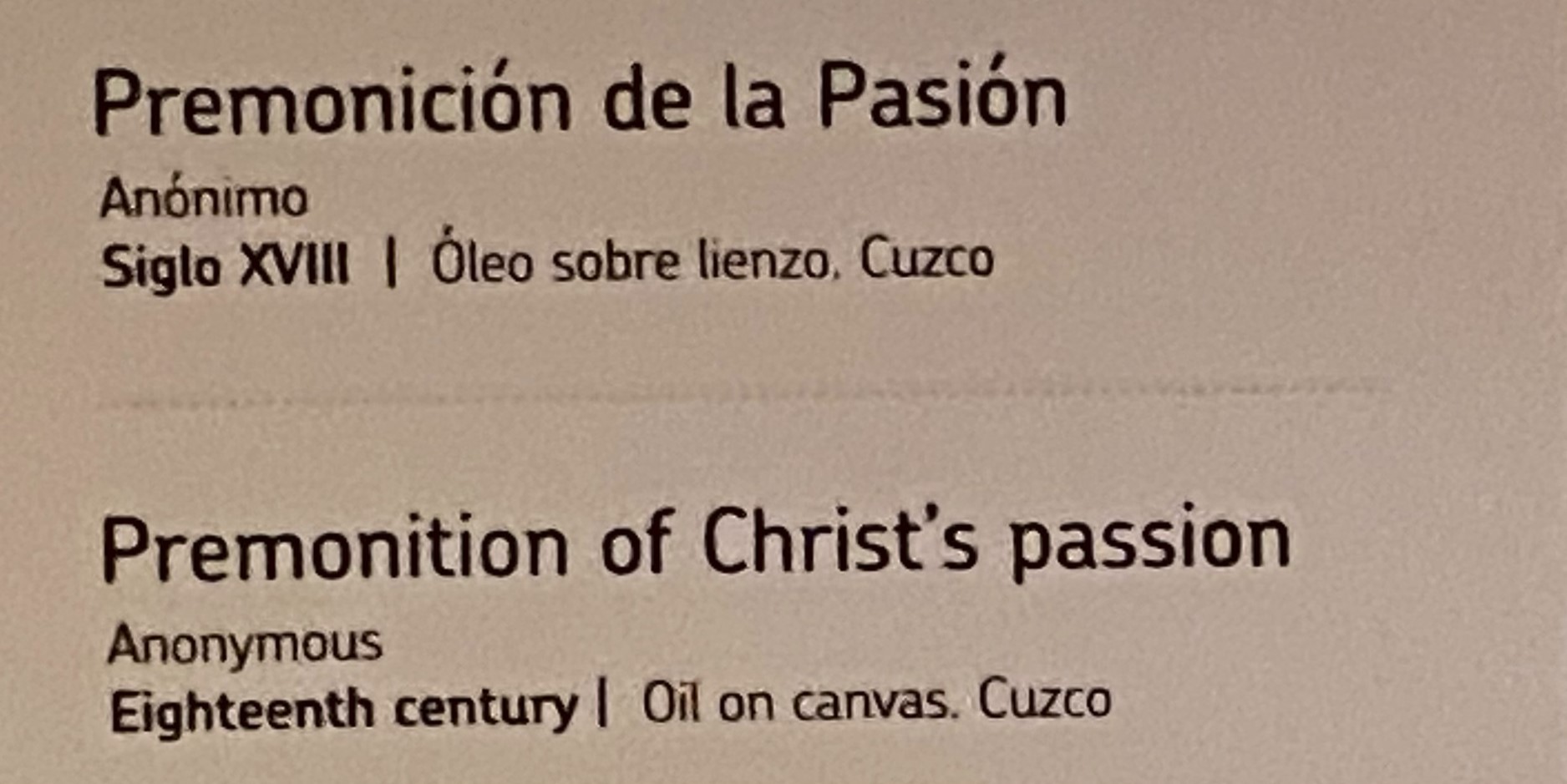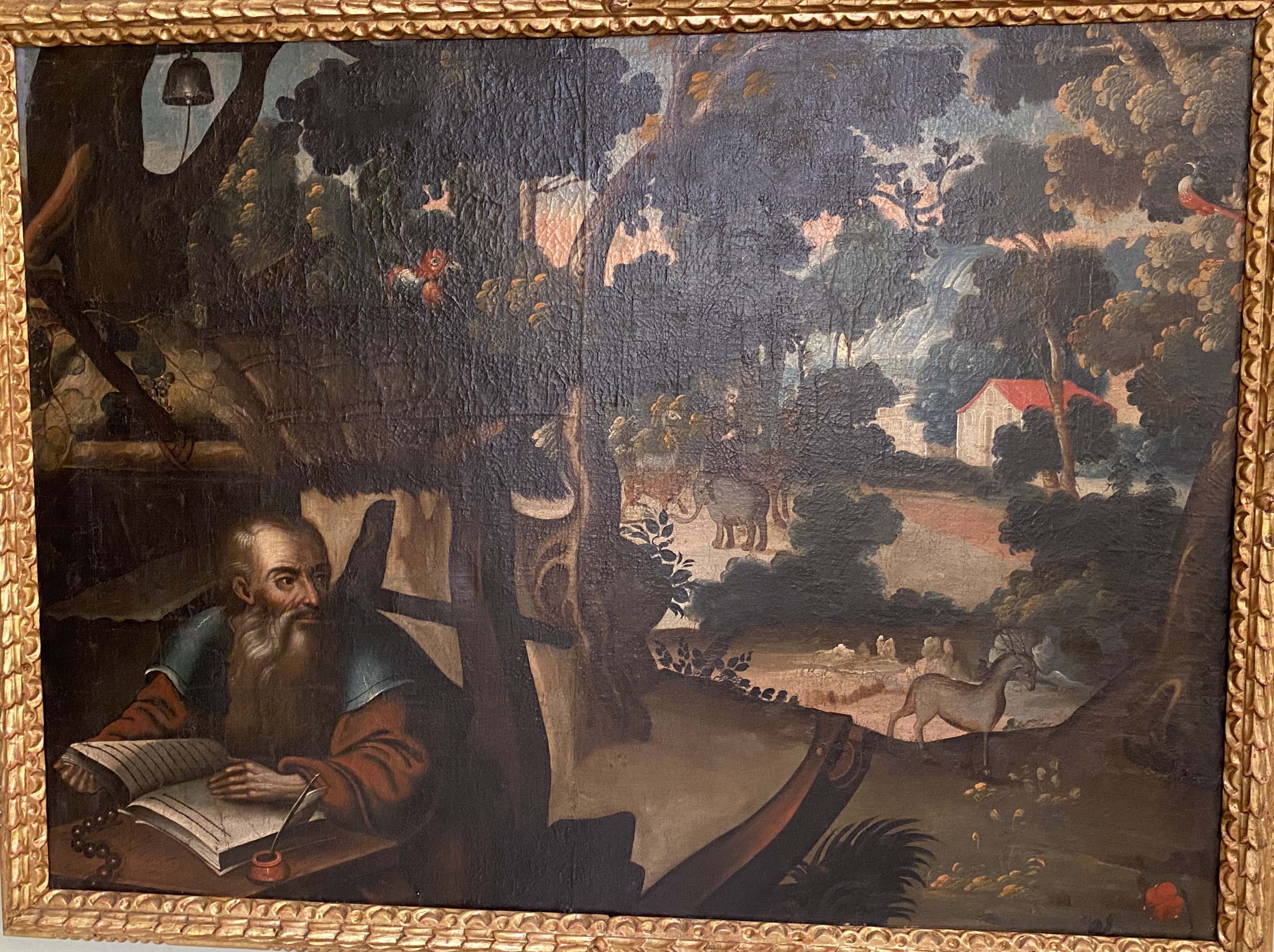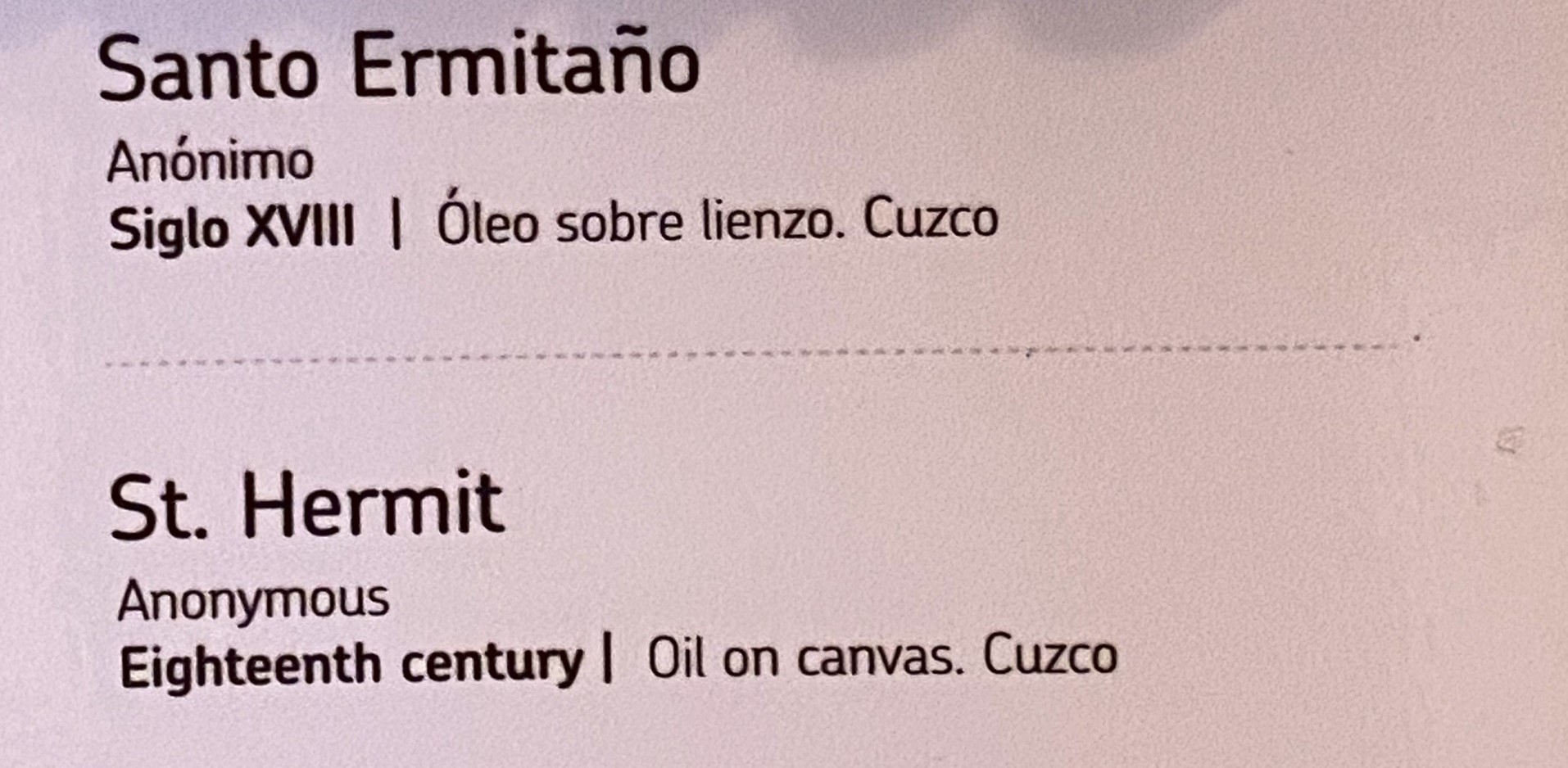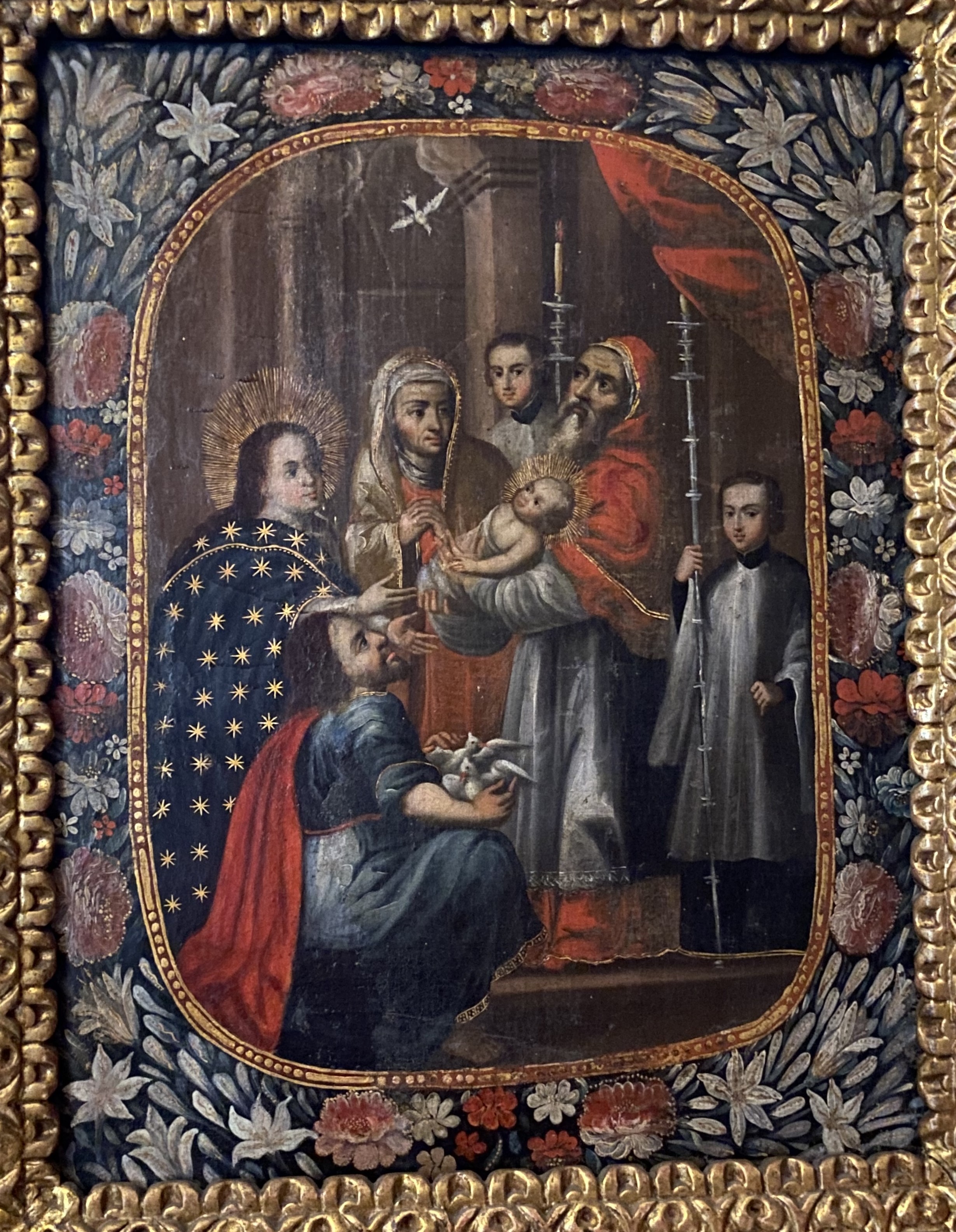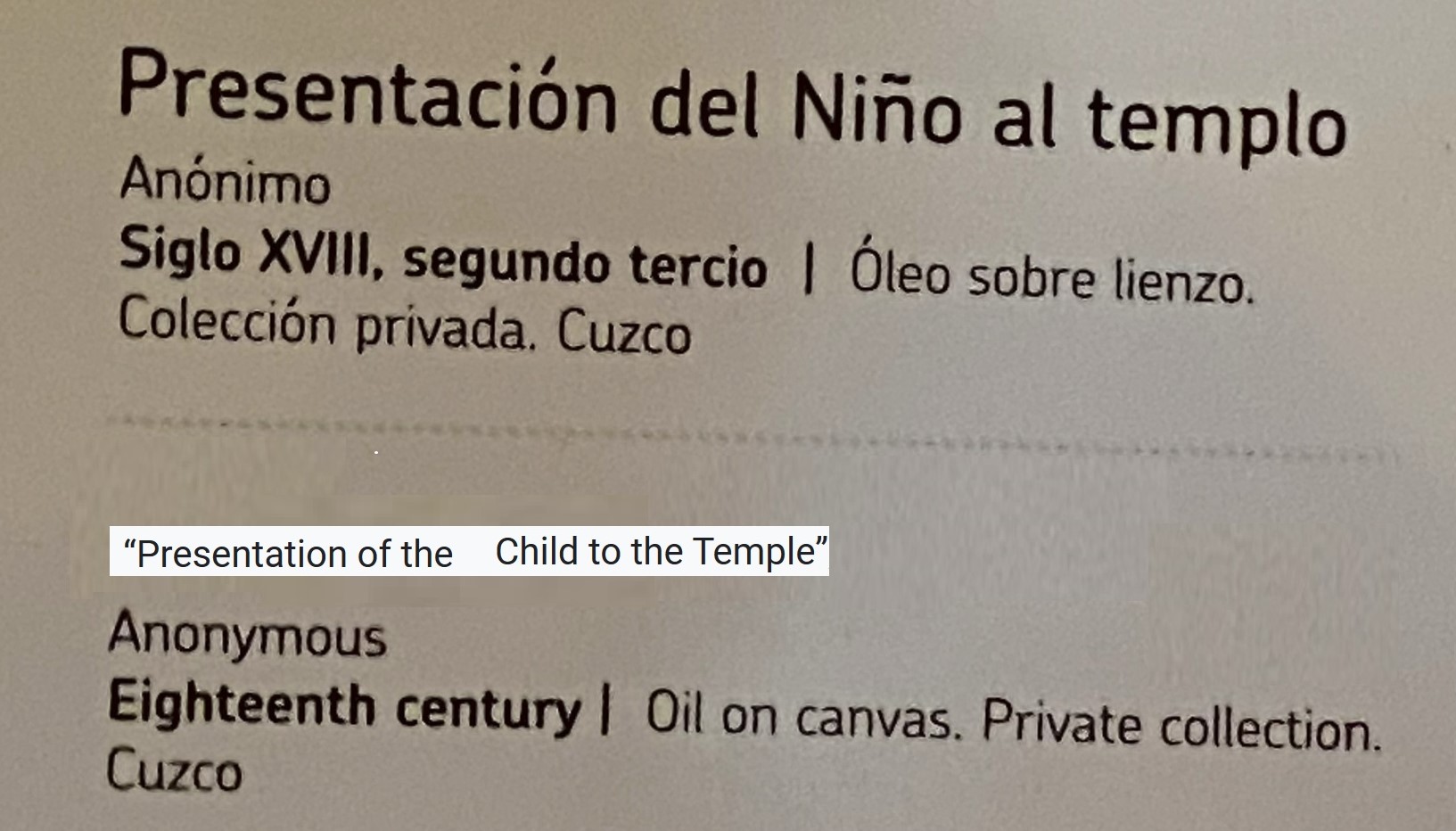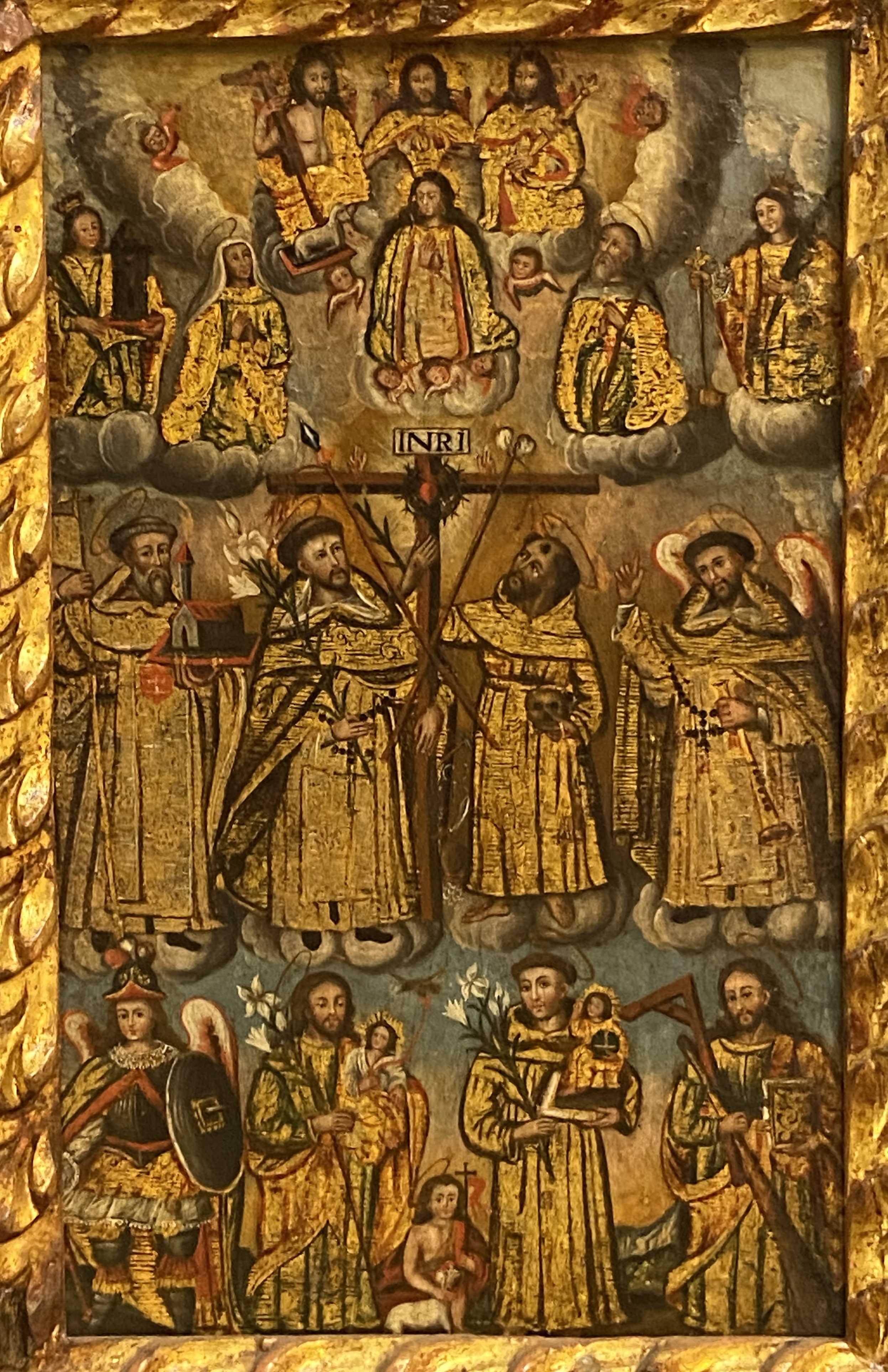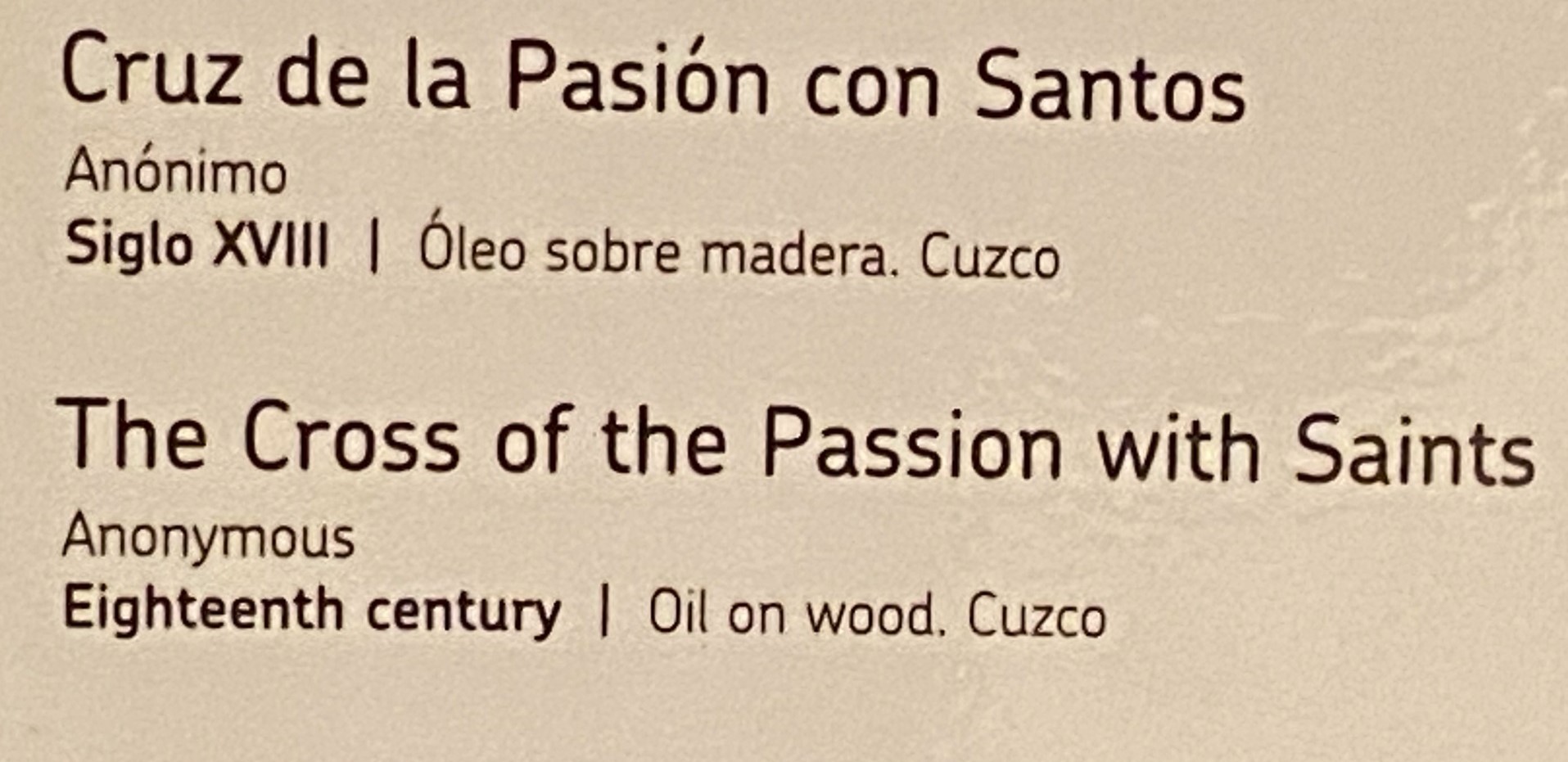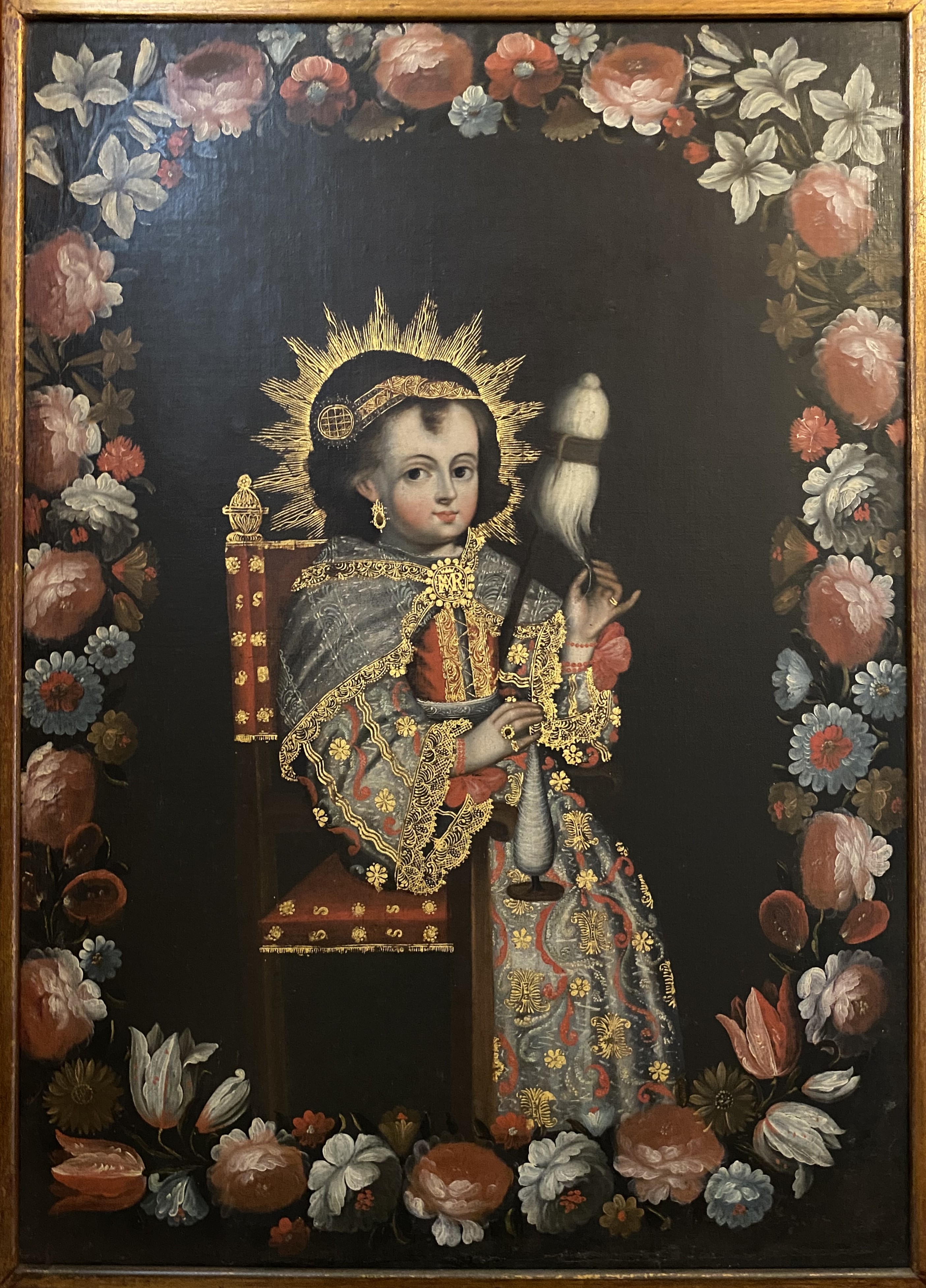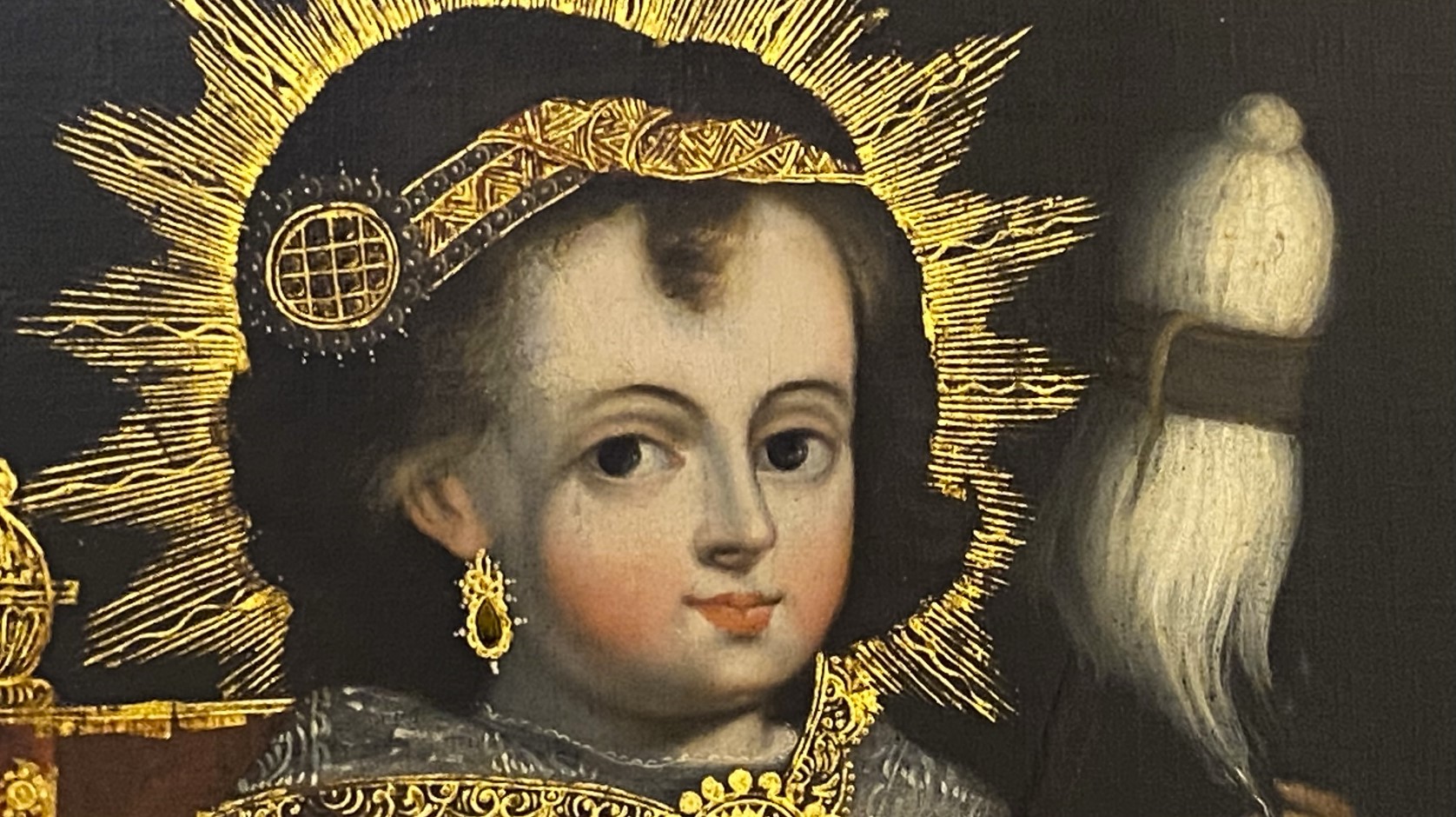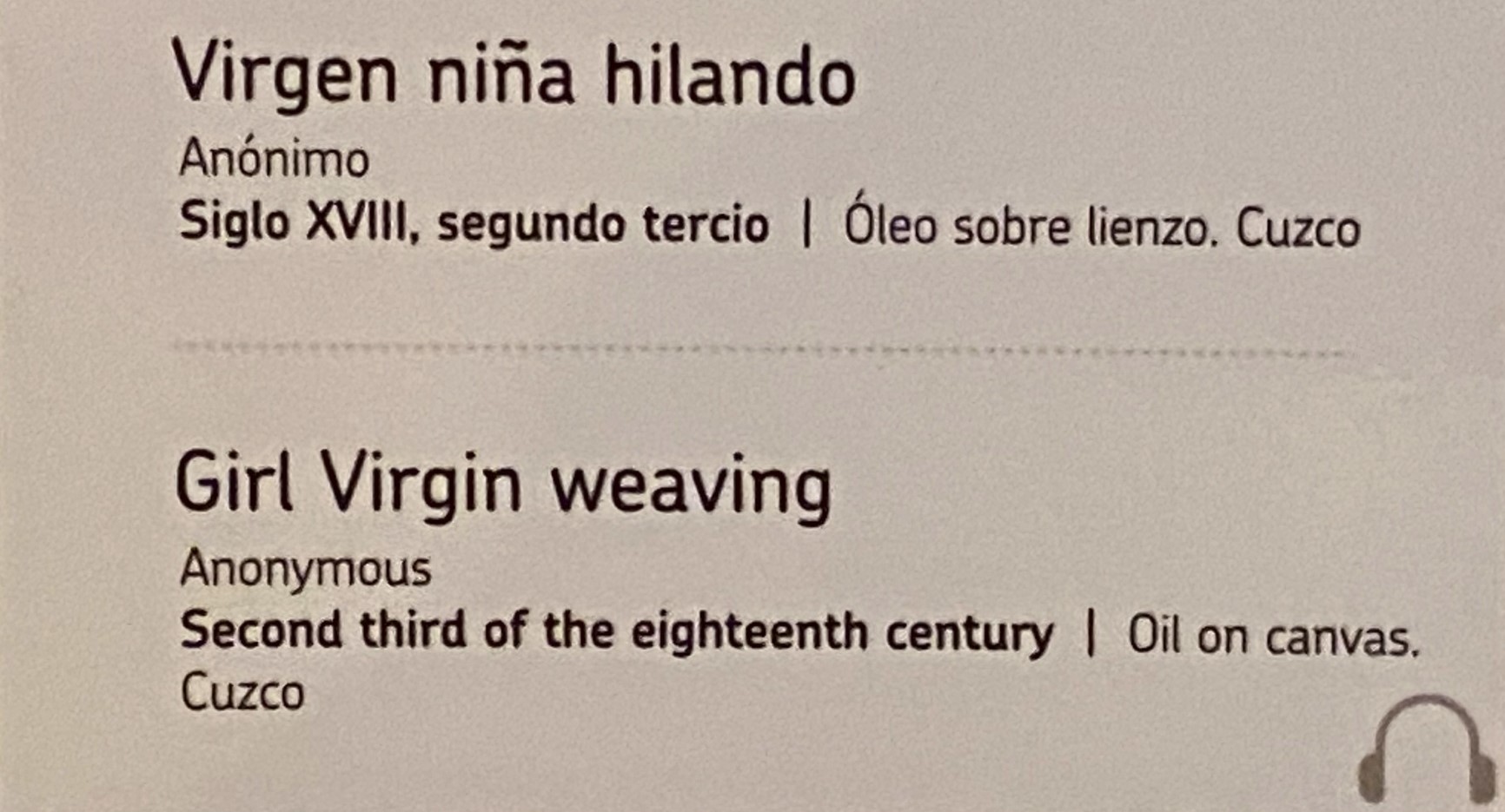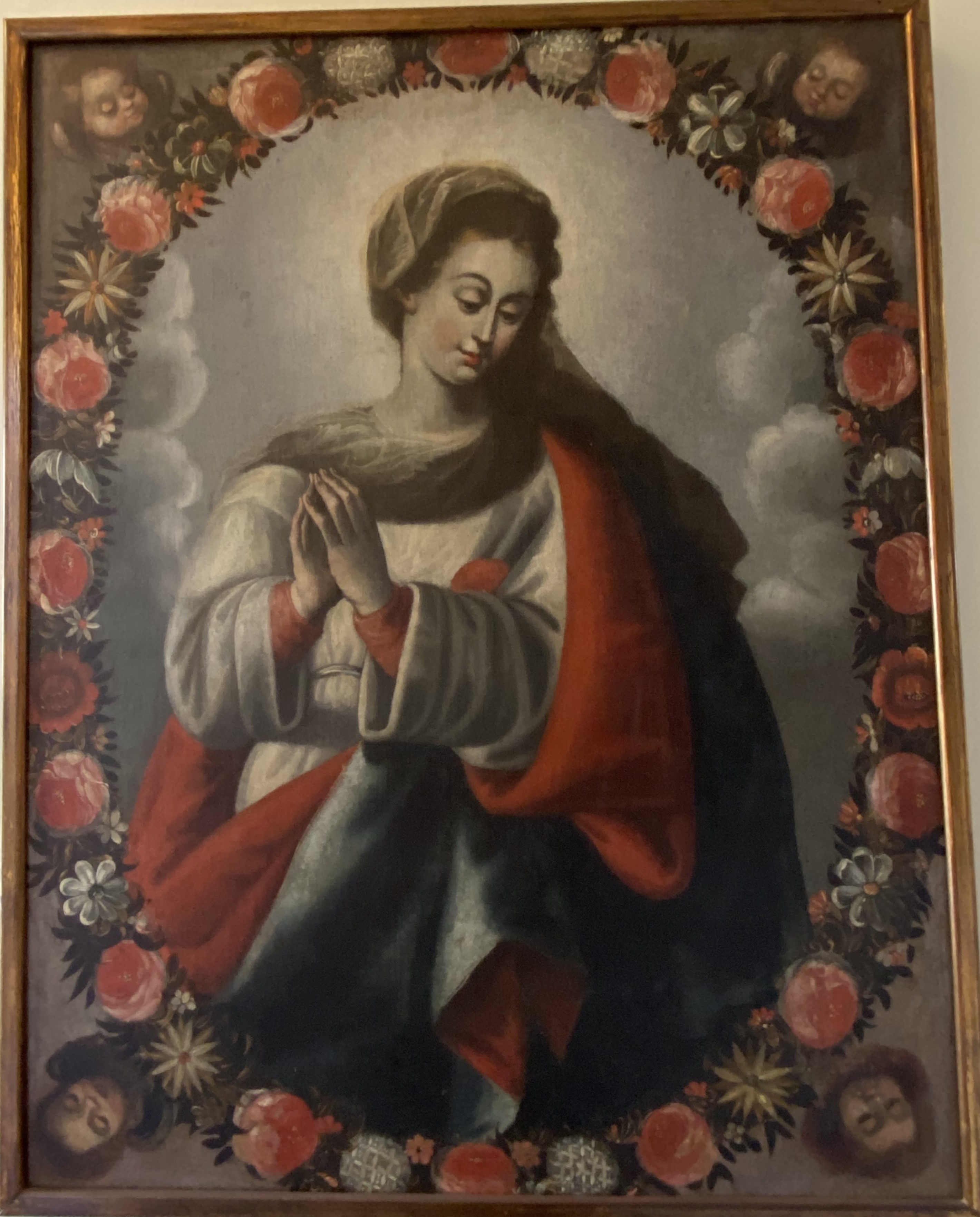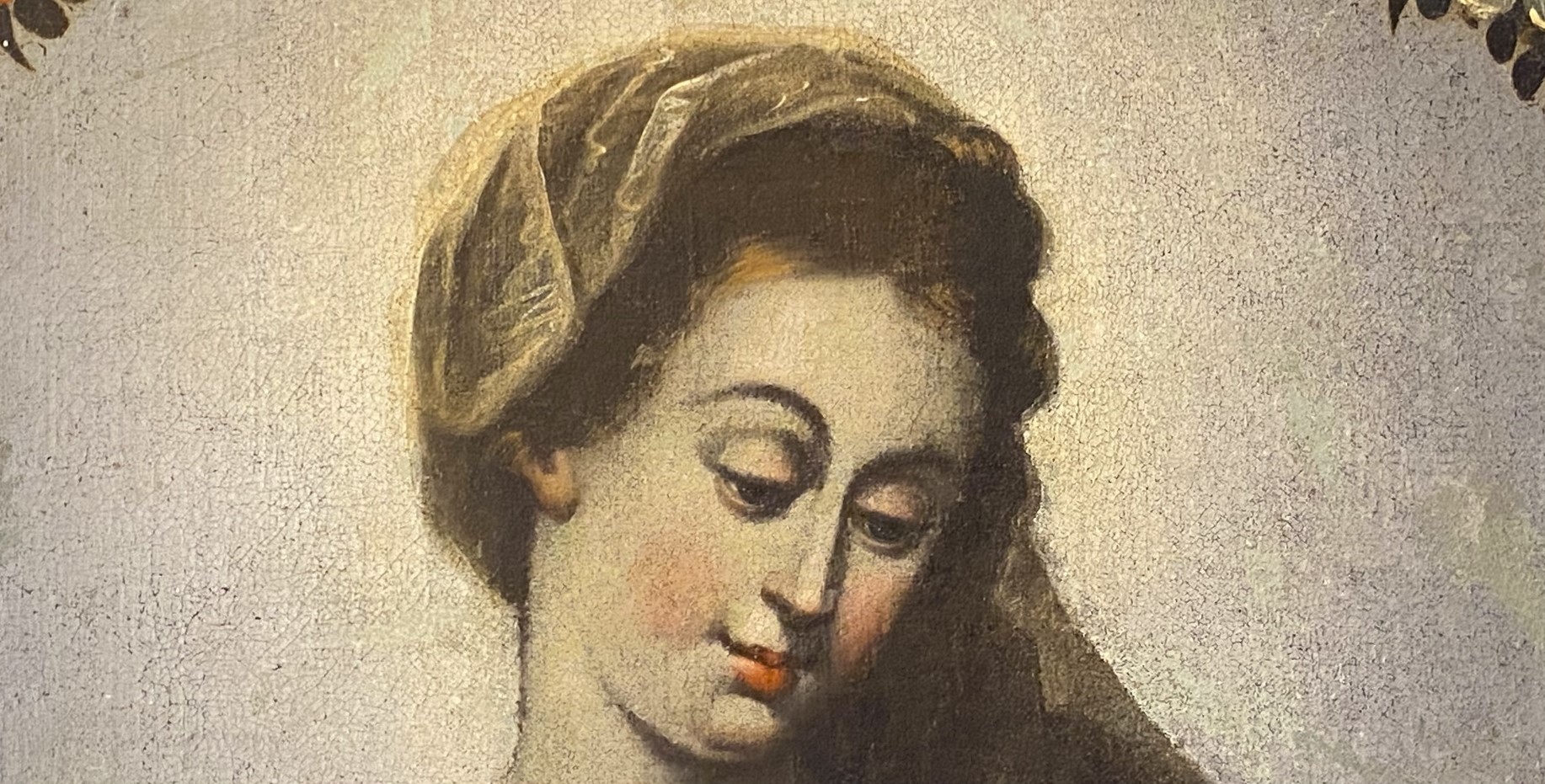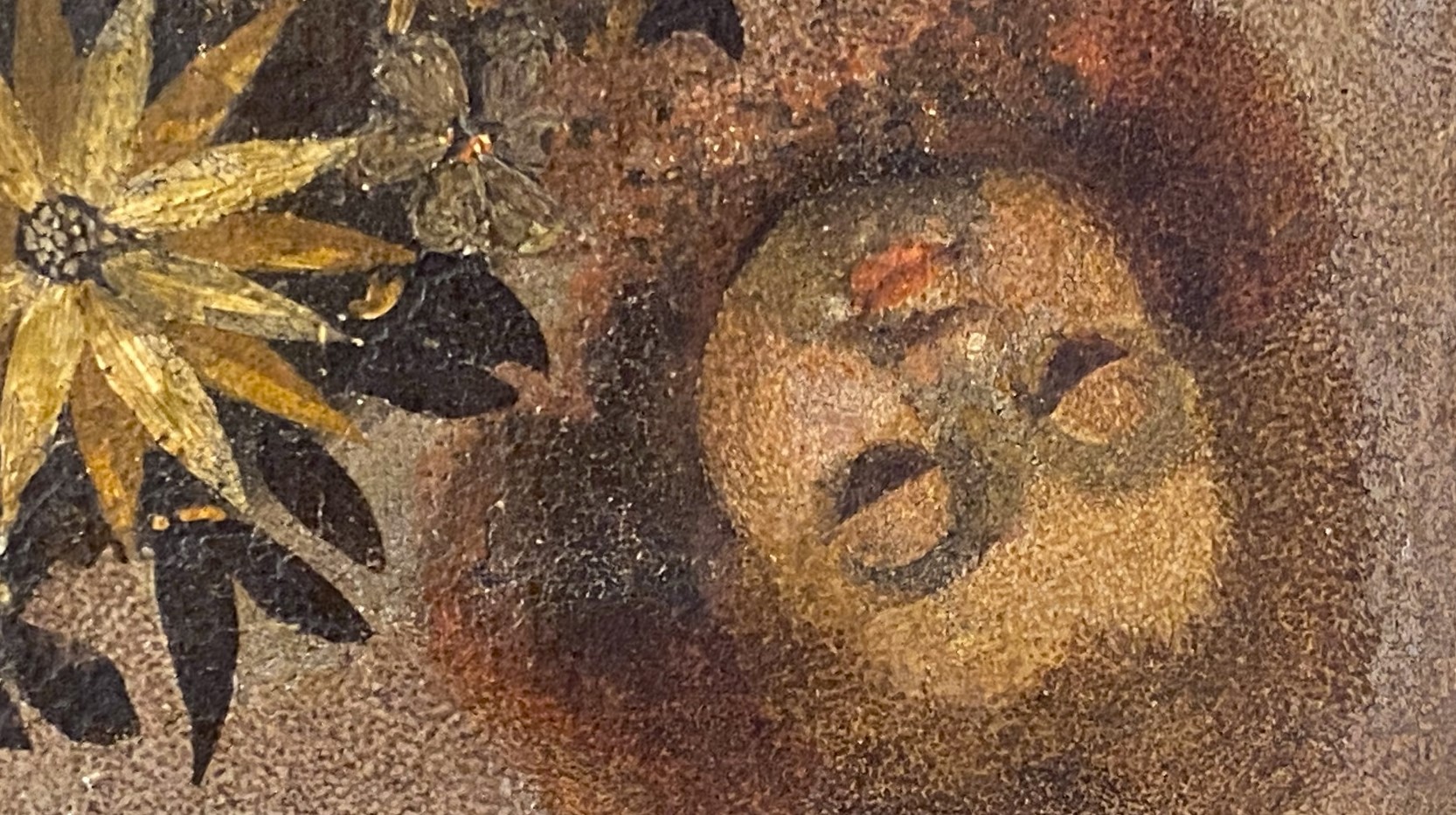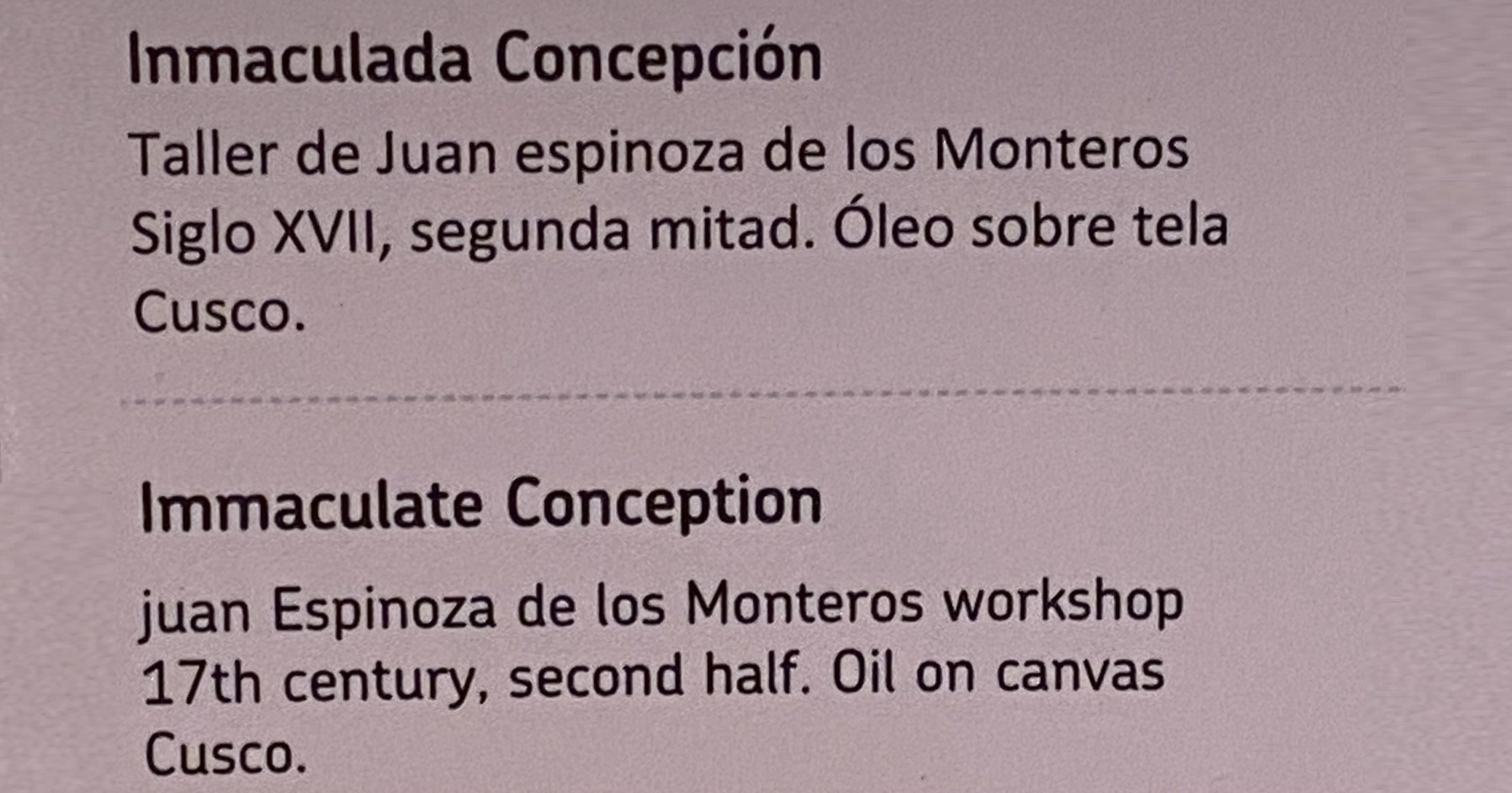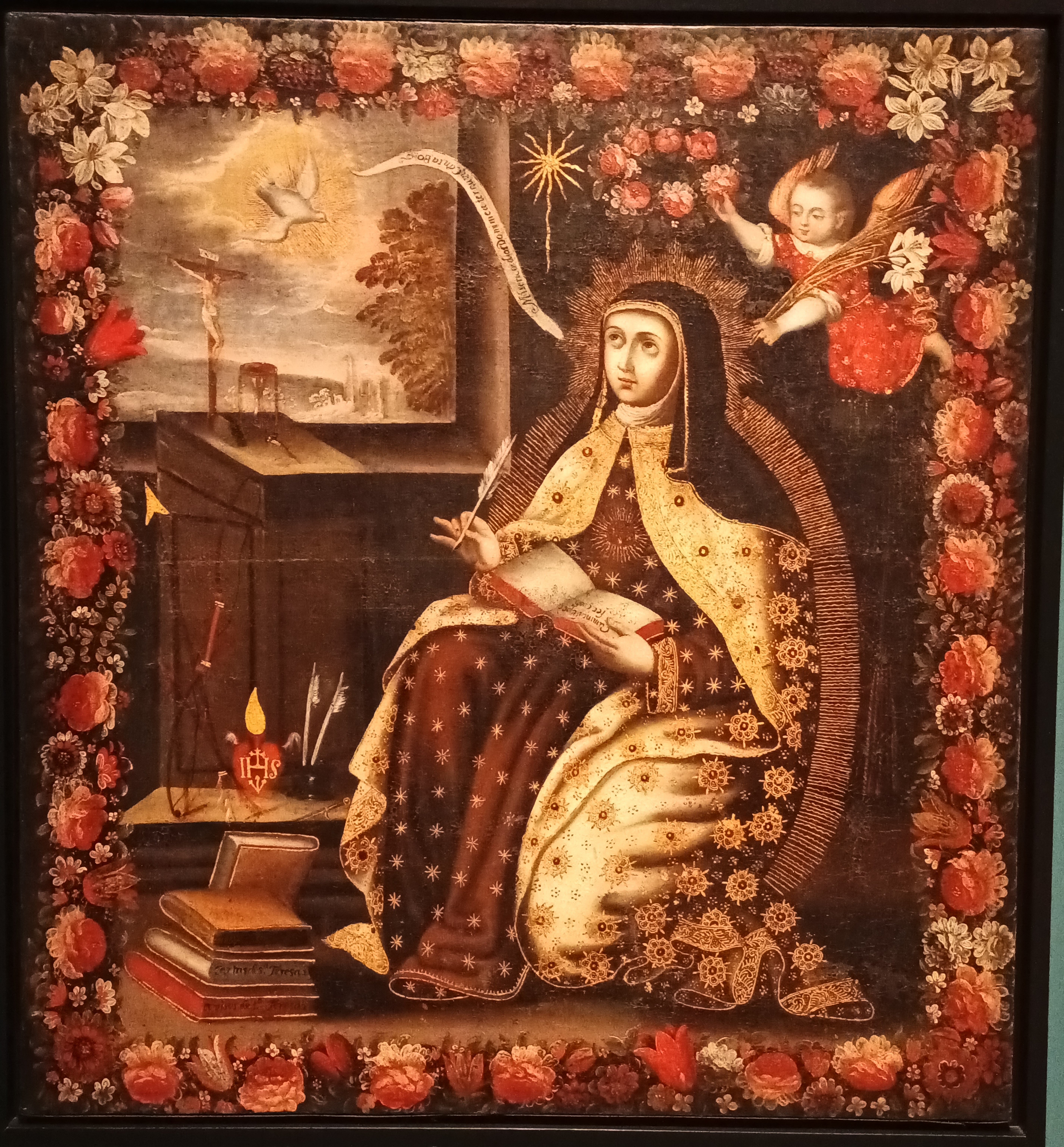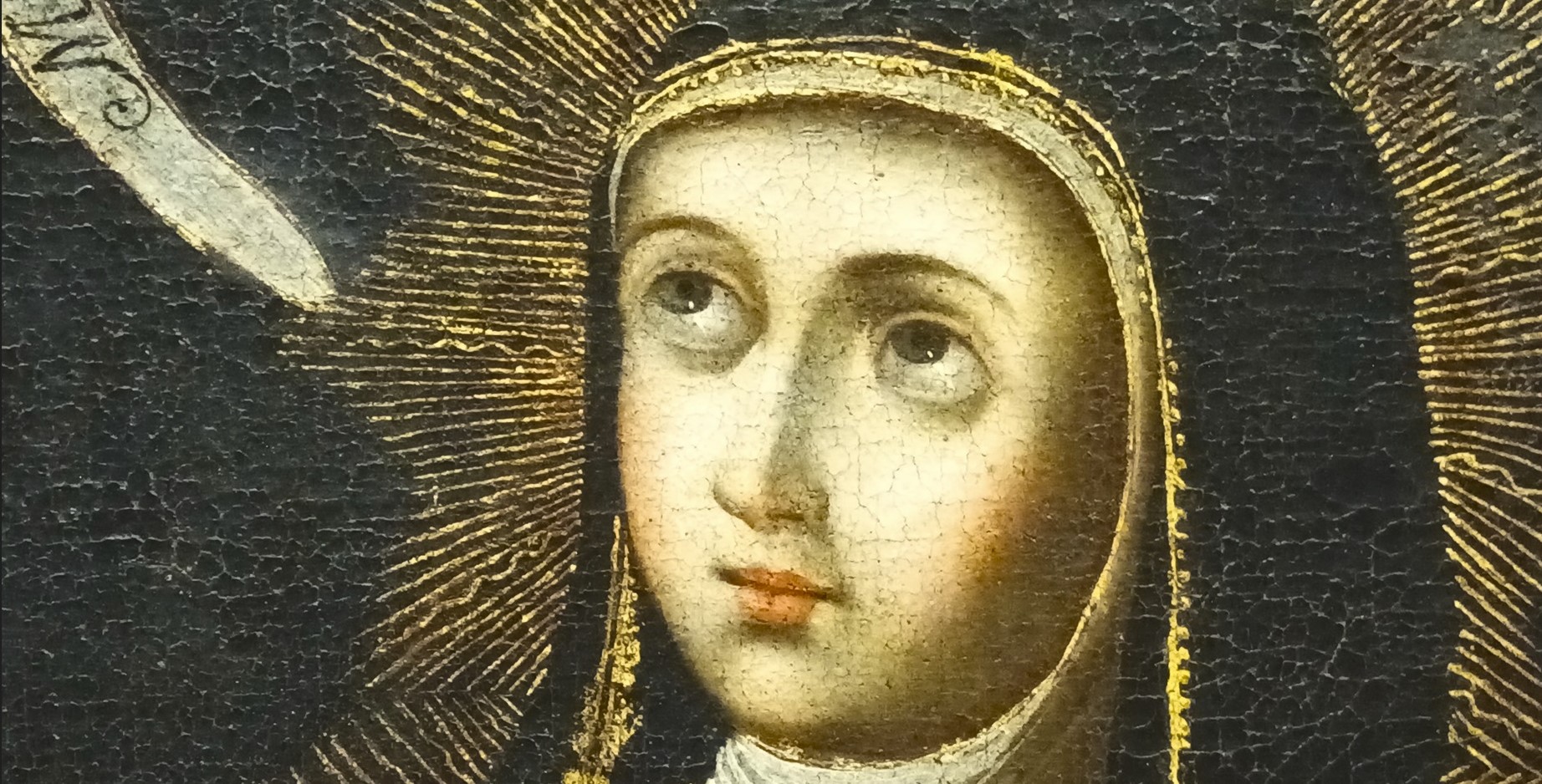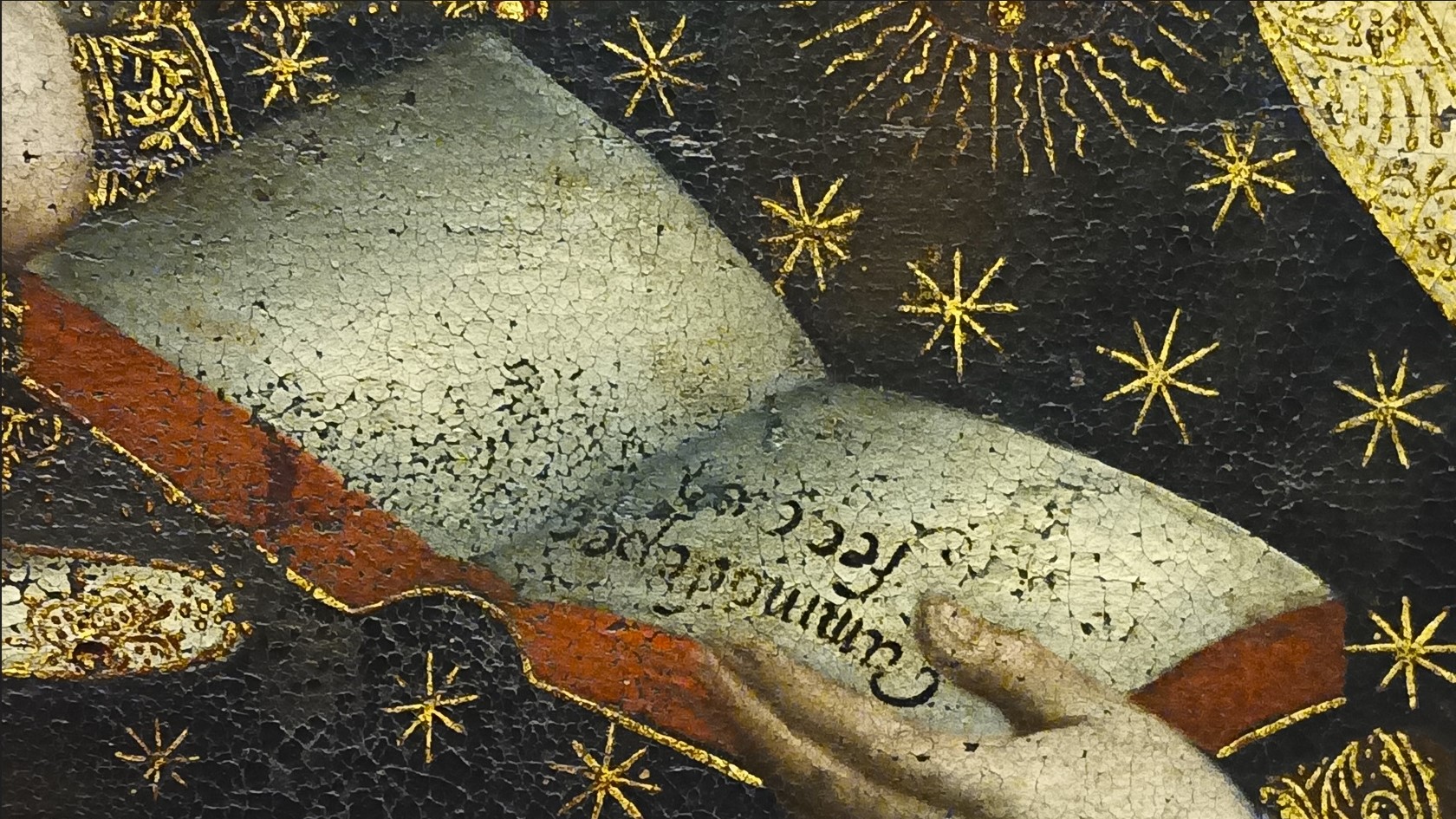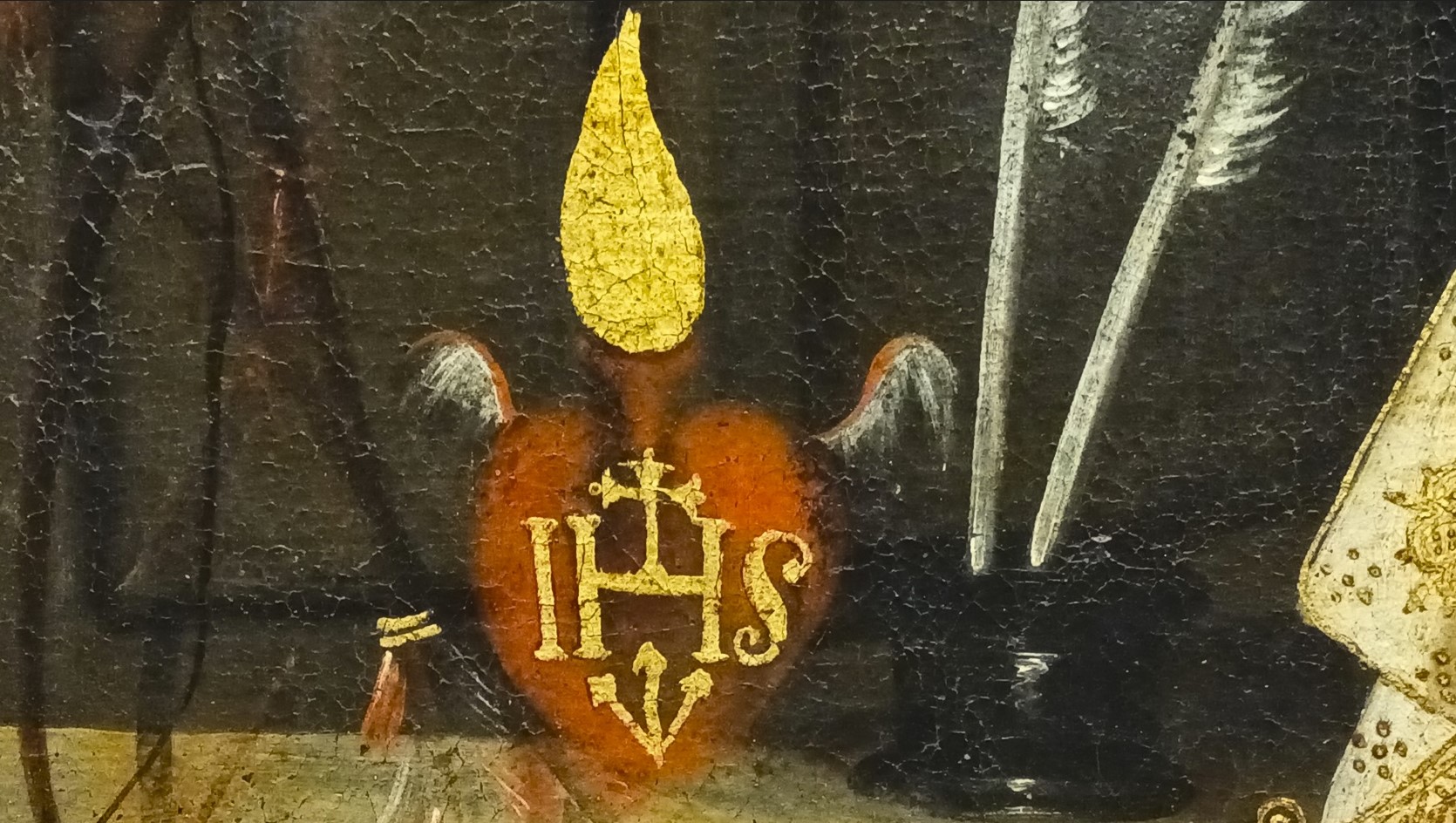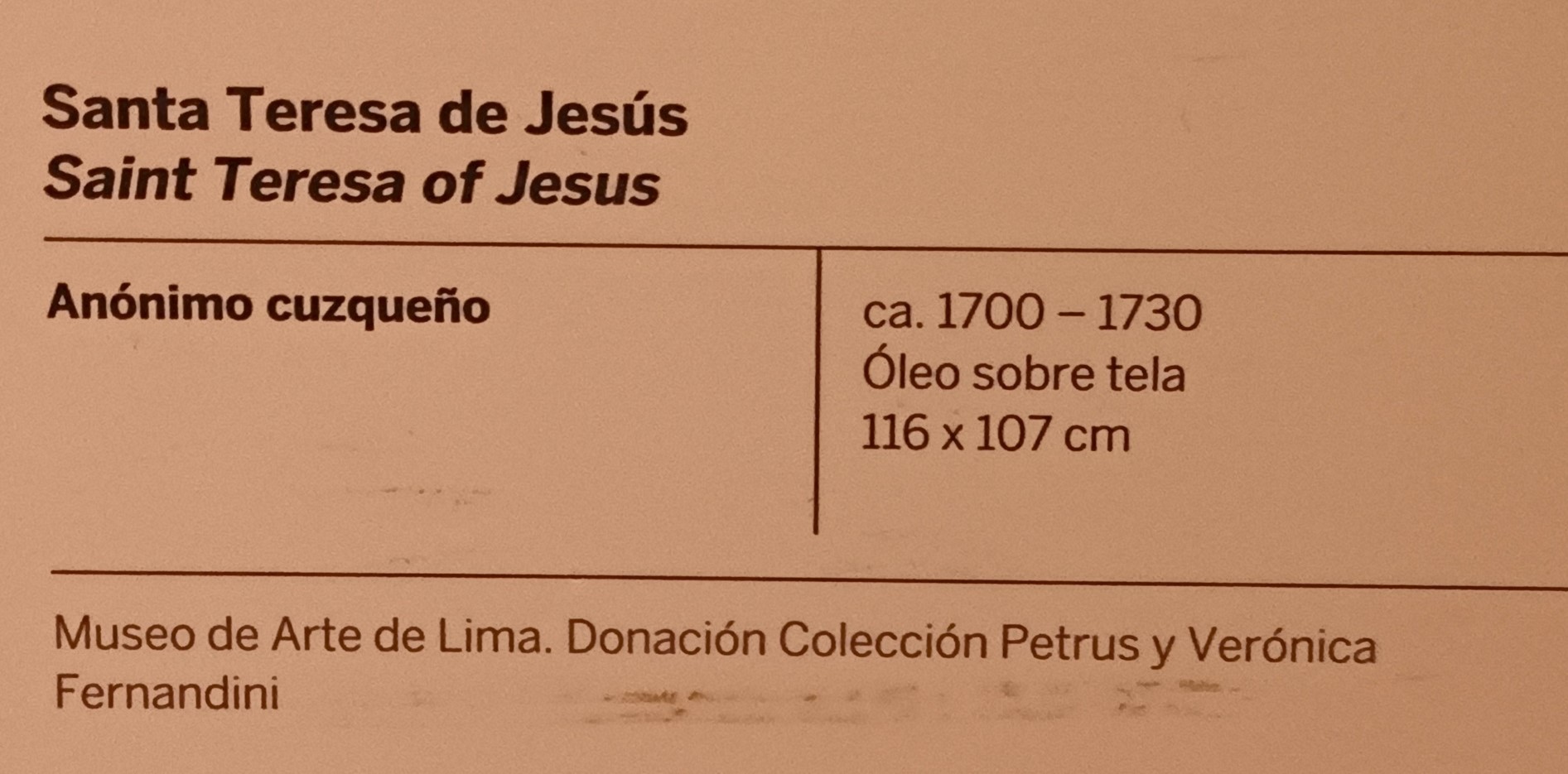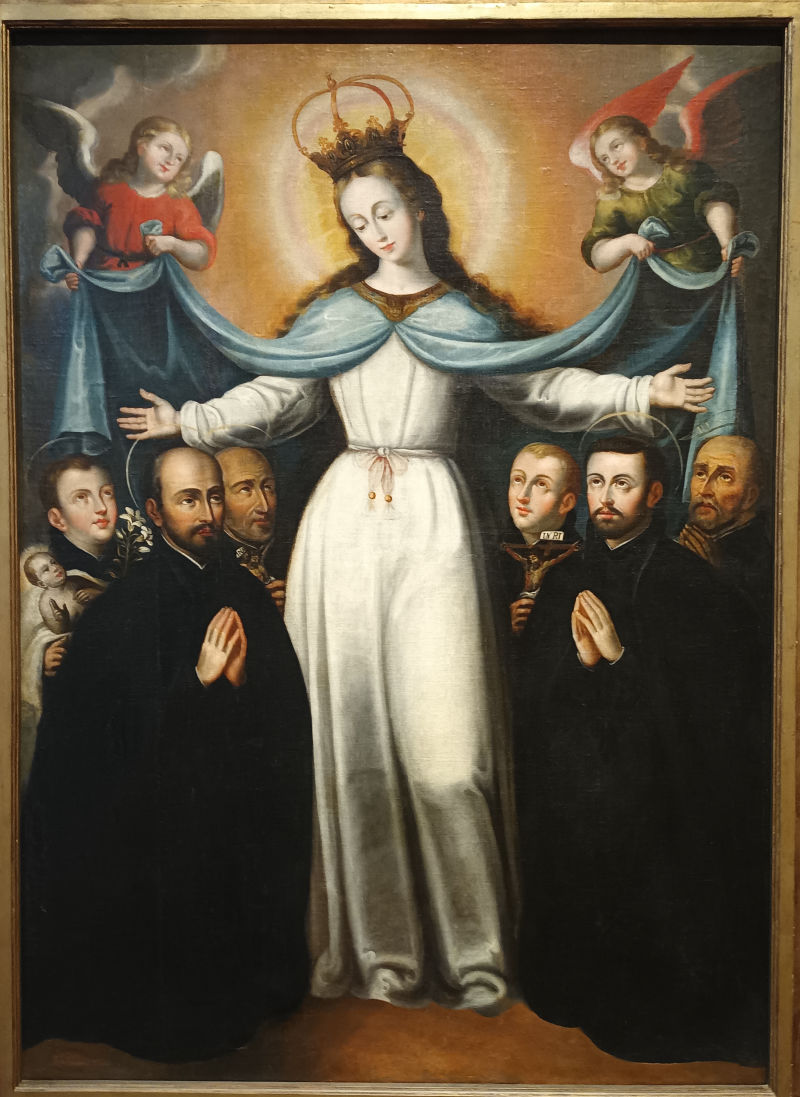
Anónimo cuzqueño, Patronage of the Virgin Mary and Jesuit Saints, ca. 1670-1690
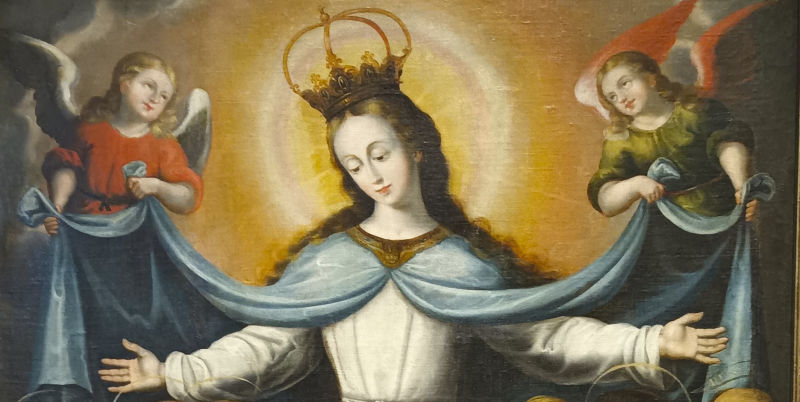
Original, Museo de Arte de Lima, Peru. Visited in 2023.
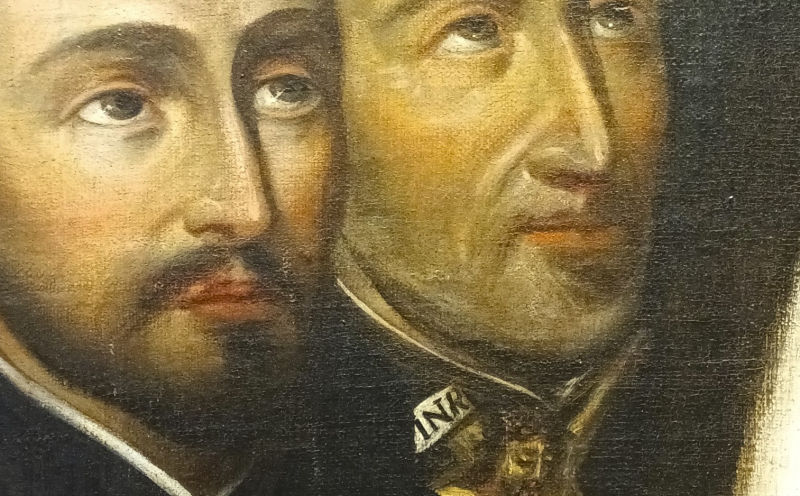 Anónimo cuzqueño, Patronage of the Virgin Mary and Jesuit Saints, ca. 1670-1690
Anónimo cuzqueño, Patronage of the Virgin Mary and Jesuit Saints, ca. 1670-1690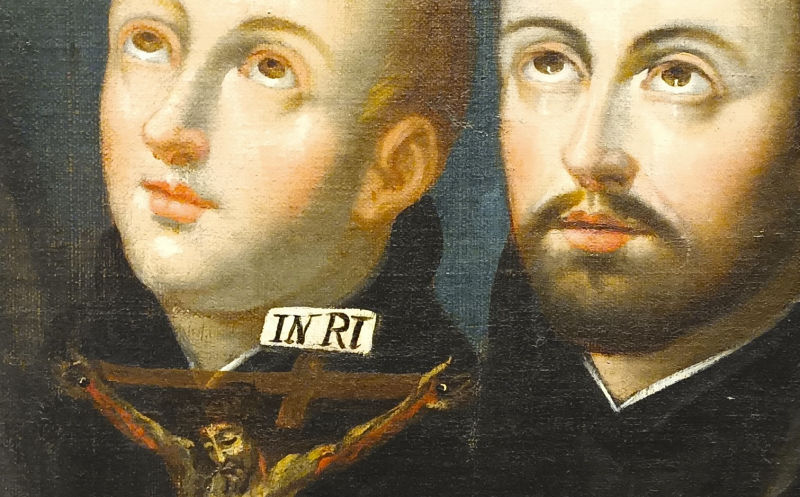 Anónimo cuzqueño, Patronage of the Virgin Mary and Jesuit Saints, ca. 1670-1690
Anónimo cuzqueño, Patronage of the Virgin Mary and Jesuit Saints, ca. 1670-1690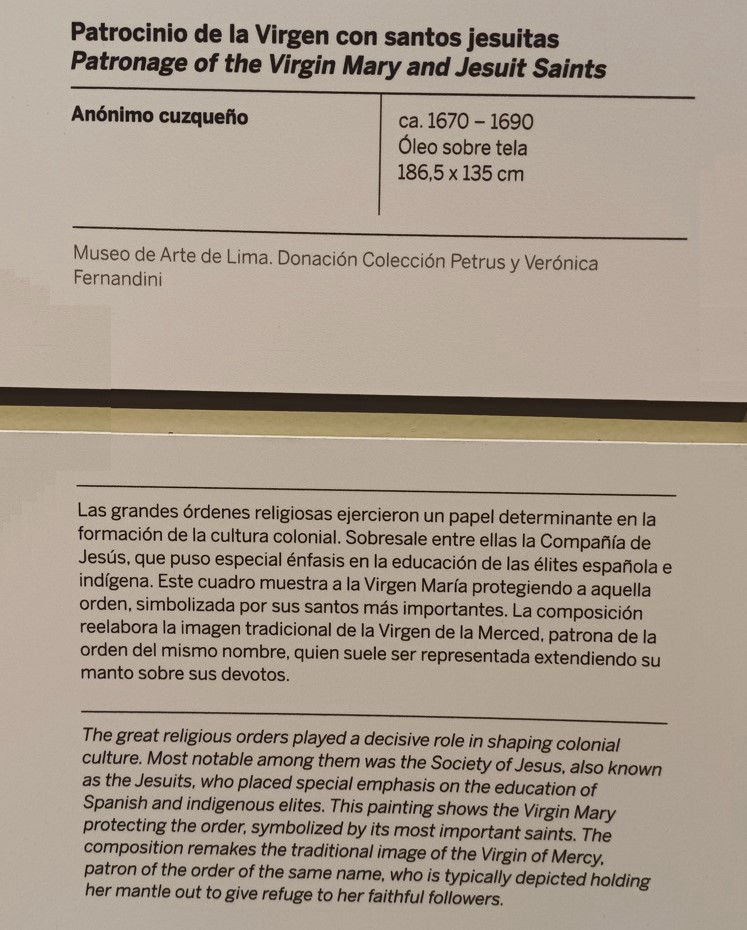 Anónimo cuzqueño, Patronage of the Virgin Mary and Jesuit Saints, ca. 1670-1690
Anónimo cuzqueño, Patronage of the Virgin Mary and Jesuit Saints, ca. 1670-1690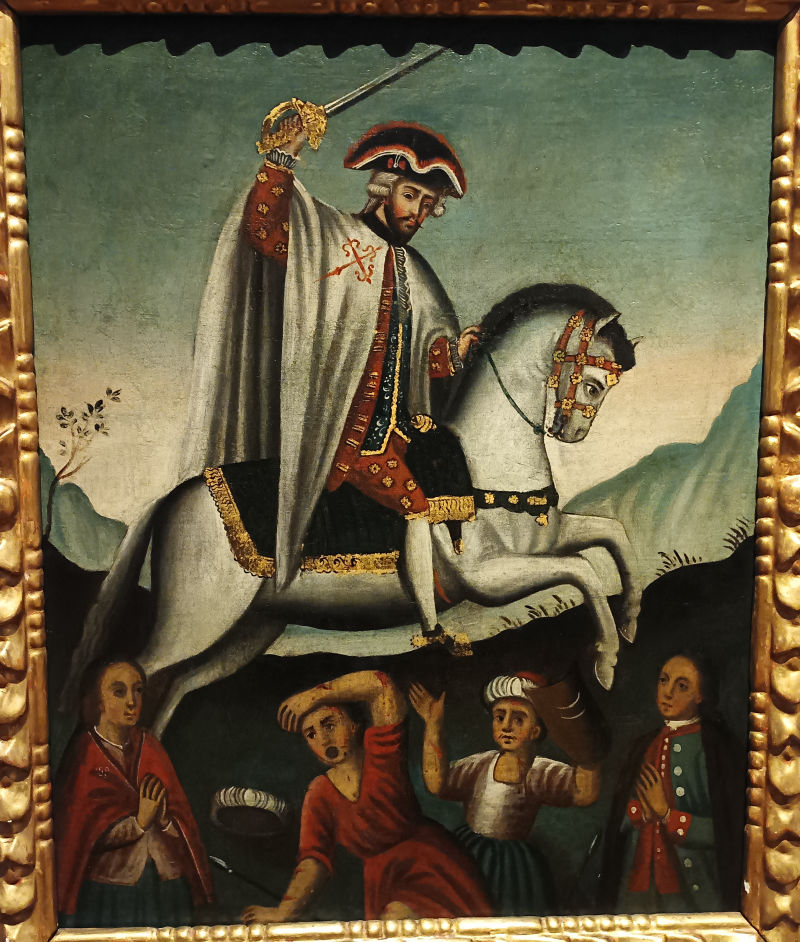 Anónimo cuzqueño, Santiago Matamoros with patron couple, ca. 1790-1810
Anónimo cuzqueño, Santiago Matamoros with patron couple, ca. 1790-1810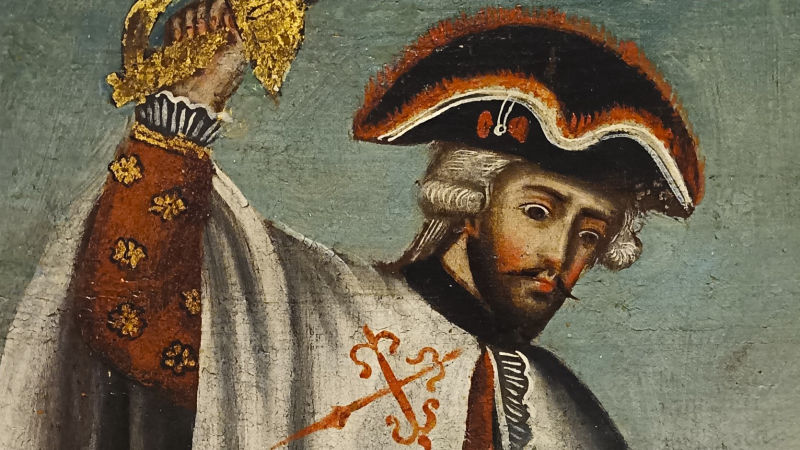 Original, Museo de Arte de Lima, Peru. Visited in 2023.
Original, Museo de Arte de Lima, Peru. Visited in 2023.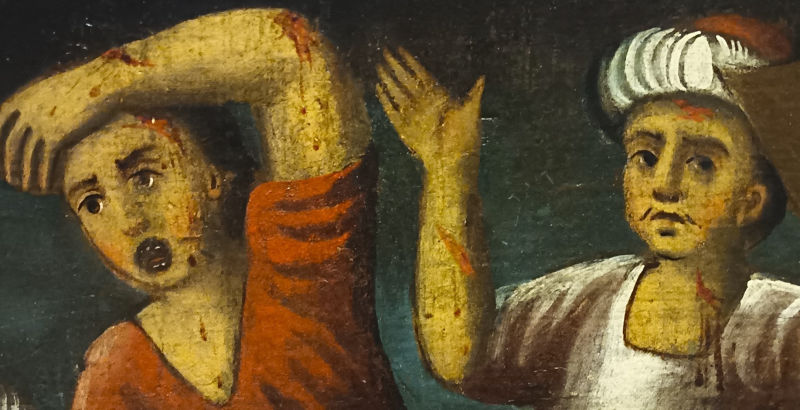 Anónimo cuzqueño, Santiago Matamoros with patron couple, ca. 1790-1810
Anónimo cuzqueño, Santiago Matamoros with patron couple, ca. 1790-1810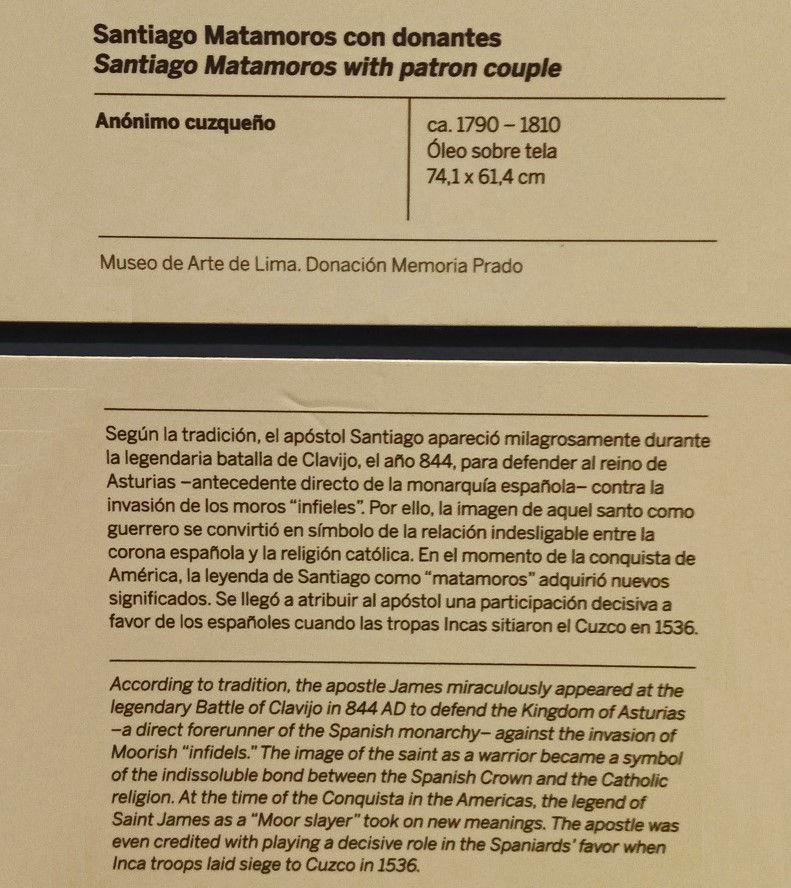 Anónimo cuzqueño, Santiago Matamoros with patron couple, ca. 1790-1810
Anónimo cuzqueño, Santiago Matamoros with patron couple, ca. 1790-1810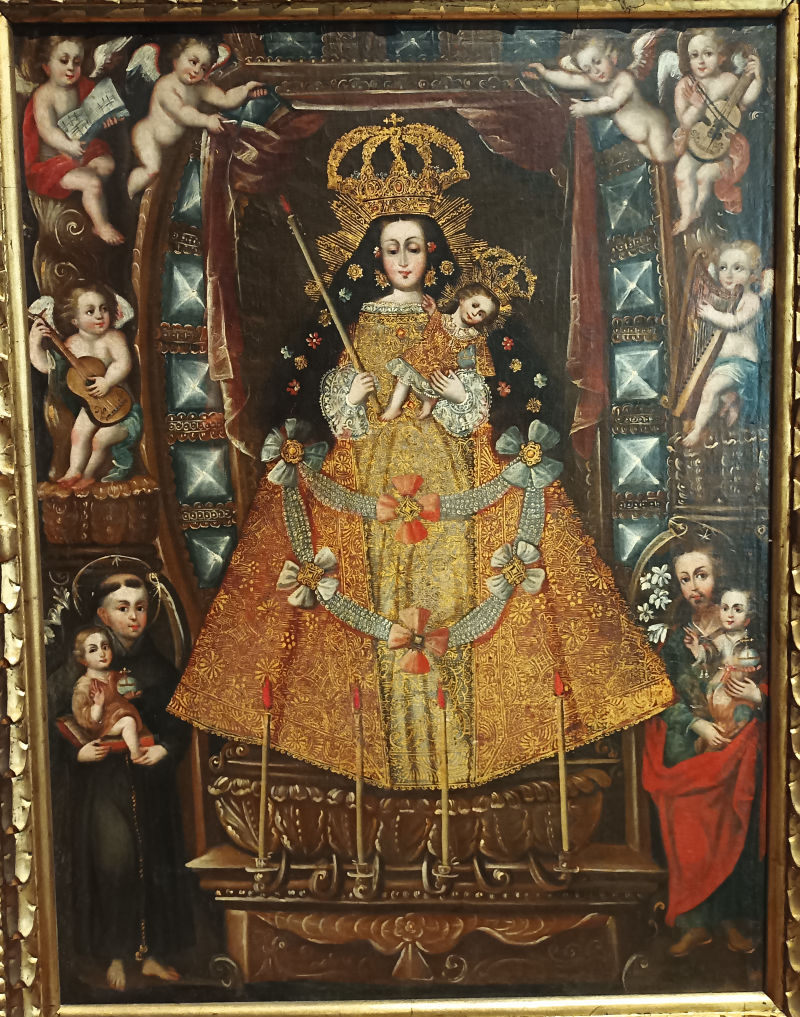 Anónimo cuzqueño, Our Lady of Copacabana, ca. 1730-1750
Anónimo cuzqueño, Our Lady of Copacabana, ca. 1730-1750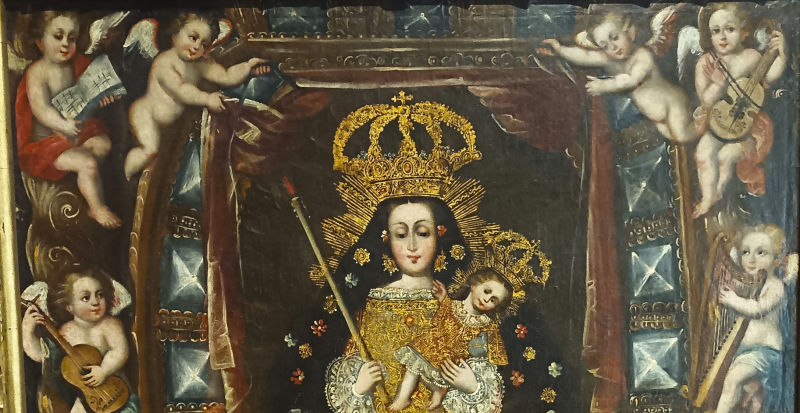 Original, Museo de Arte de Lima, Peru. Visited in 2023.
Original, Museo de Arte de Lima, Peru. Visited in 2023.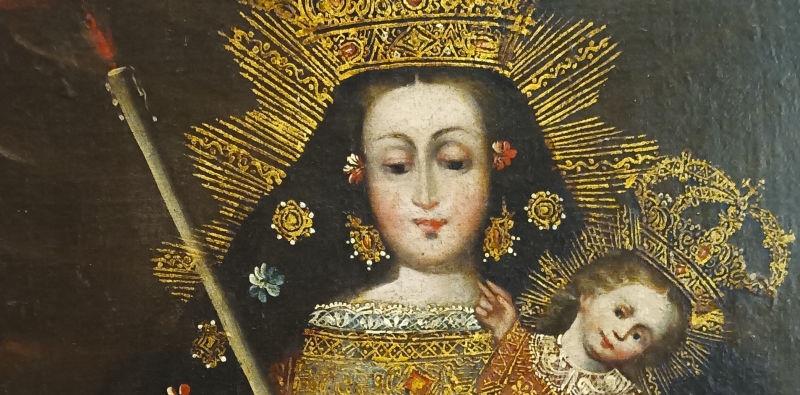 Anónimo cuzqueño, Our Lady of Copacabana, ca. 1730-1750
Anónimo cuzqueño, Our Lady of Copacabana, ca. 1730-1750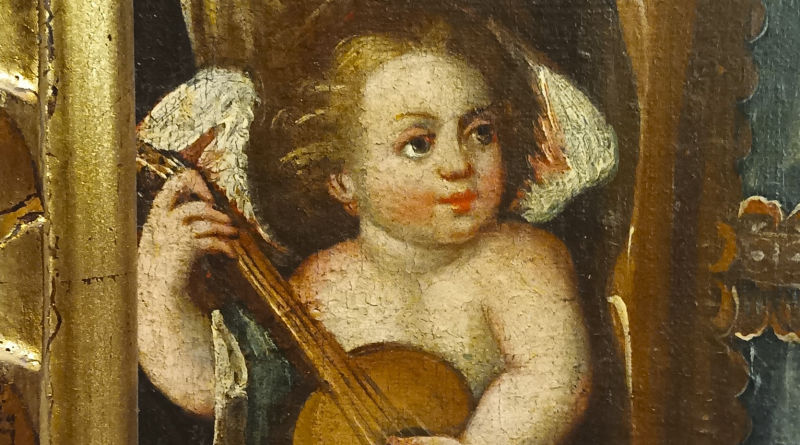 Anónimo cuzqueño, Our Lady of Copacabana, ca. 1730-1750
Anónimo cuzqueño, Our Lady of Copacabana, ca. 1730-1750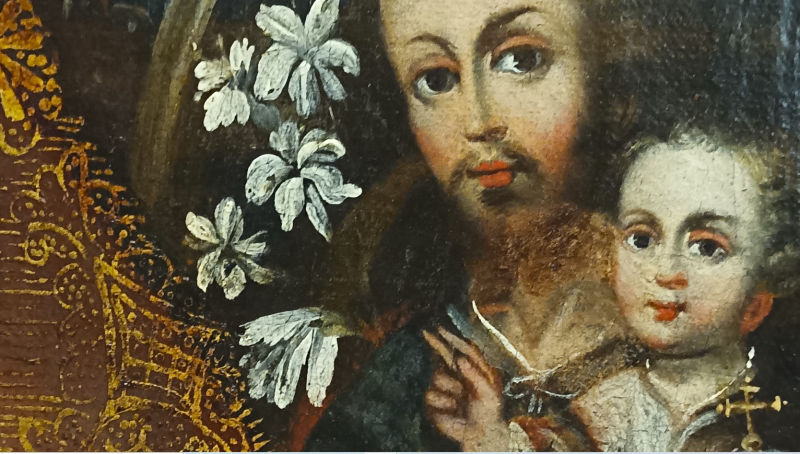 Anónimo cuzqueño, Our Lady of Copacabana, ca. 1730-1750
Anónimo cuzqueño, Our Lady of Copacabana, ca. 1730-1750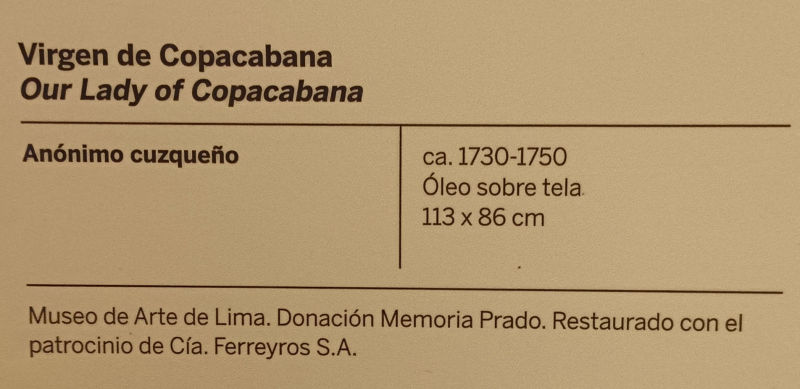 Anónimo cuzqueño, Our Lady of Copacabana, ca. 1730-1750
Anónimo cuzqueño, Our Lady of Copacabana, ca. 1730-1750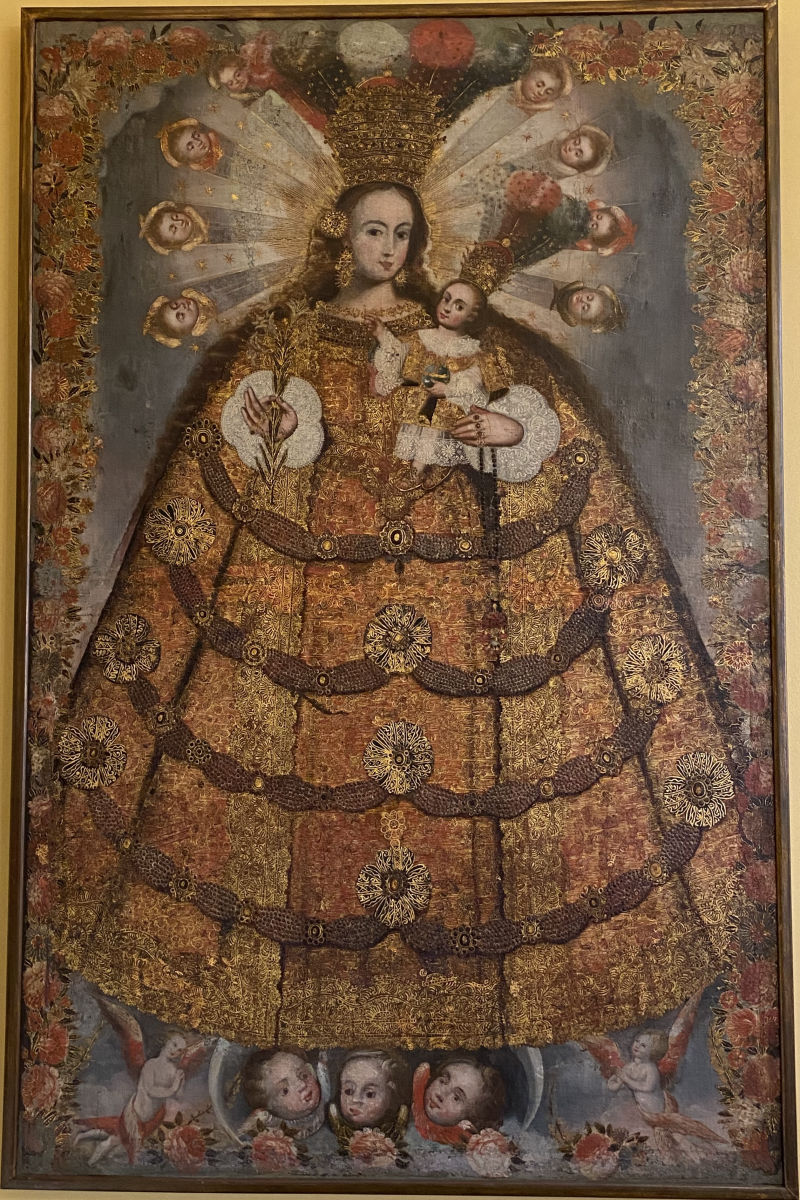 Anónimo cuzqueño, Virgin of the Rosary of Pomata, Second third of the eighteenth century
Anónimo cuzqueño, Virgin of the Rosary of Pomata, Second third of the eighteenth century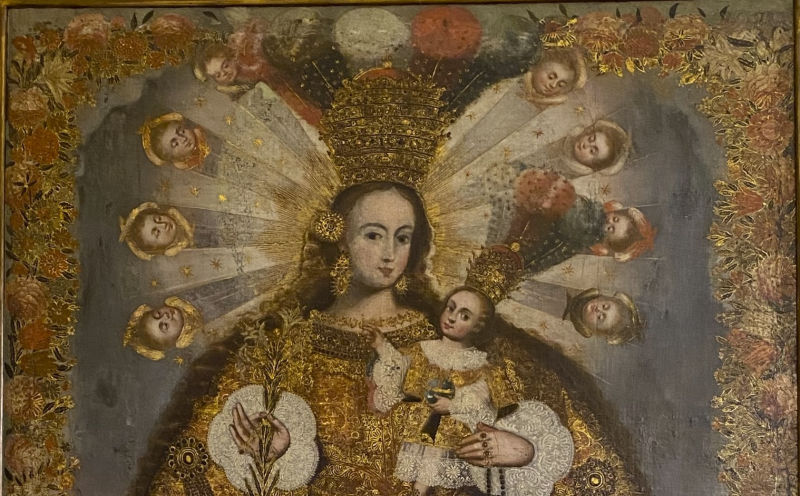
Original, Museo Pedro de Osma, Lima. Visited in 2023.
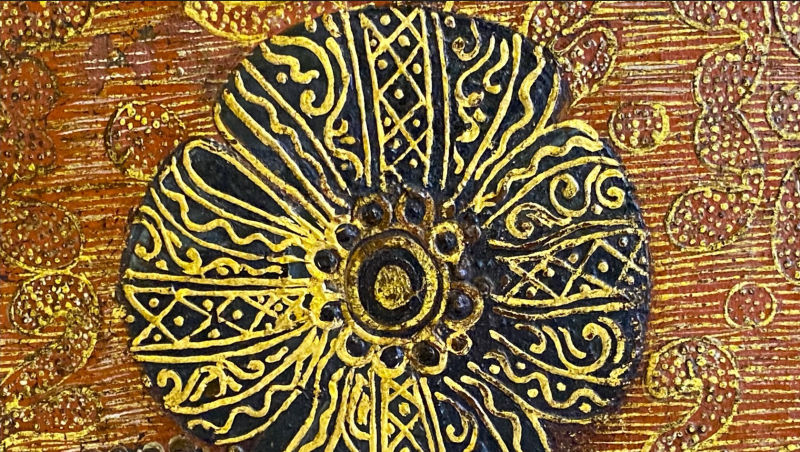 Anónimo cuzqueño, Virgin of the Rosary of Pomata, Second third of the eighteenth century
Anónimo cuzqueño, Virgin of the Rosary of Pomata, Second third of the eighteenth century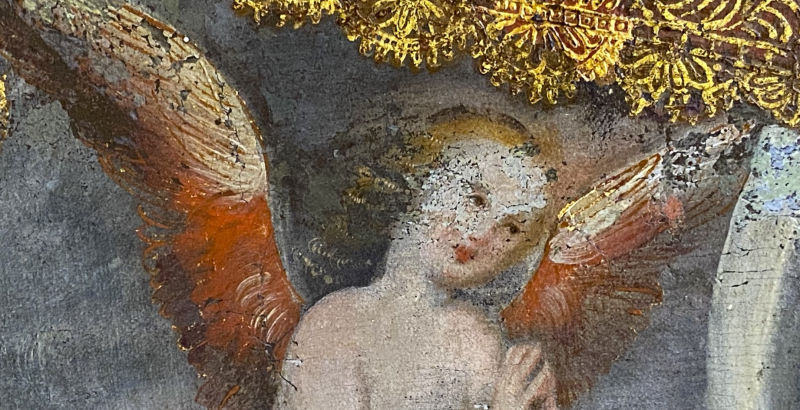 Anónimo cuzqueño, Virgin of the Rosary of Pomata, Second third of the eighteenth century
Anónimo cuzqueño, Virgin of the Rosary of Pomata, Second third of the eighteenth century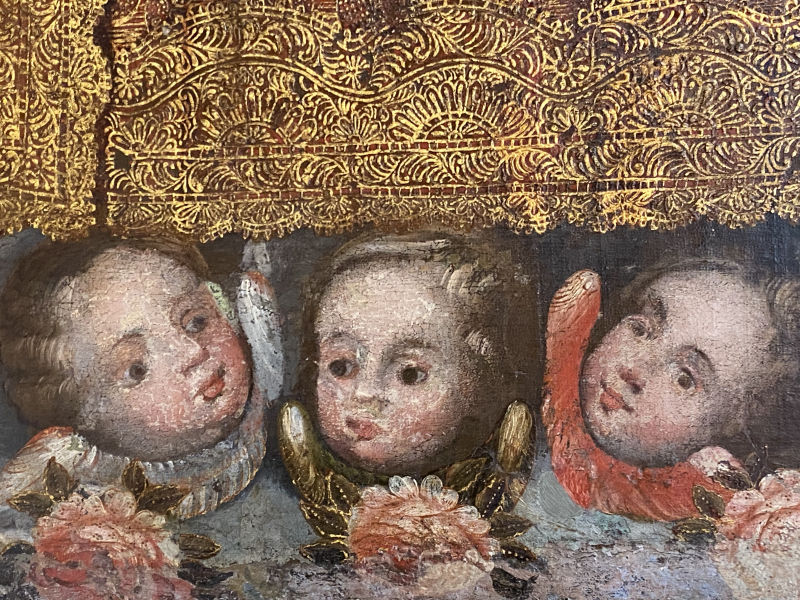 Anónimo cuzqueño, Virgin of the Rosary of Pomata, Second third of the eighteenth century
Anónimo cuzqueño, Virgin of the Rosary of Pomata, Second third of the eighteenth century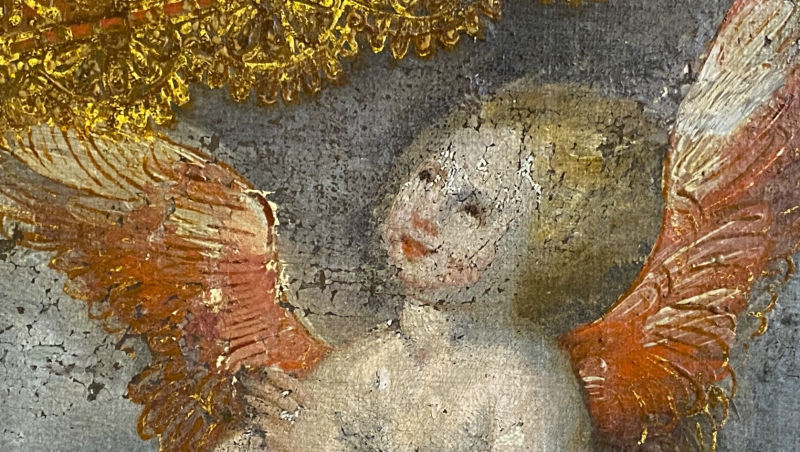 Anónimo cuzqueño, Virgin of the Rosary of Pomata, Second third of the eighteenth century
Anónimo cuzqueño, Virgin of the Rosary of Pomata, Second third of the eighteenth century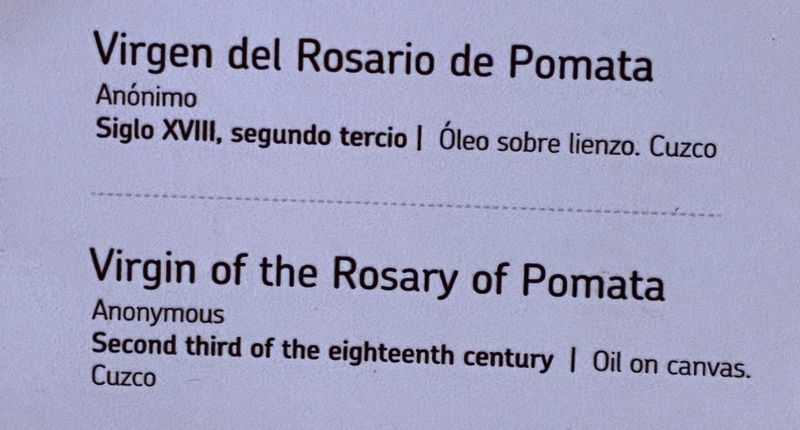 Anónimo cuzqueño, Virgin of the Rosary of Pomata, Second third of the eighteenth century
Anónimo cuzqueño, Virgin of the Rosary of Pomata, Second third of the eighteenth century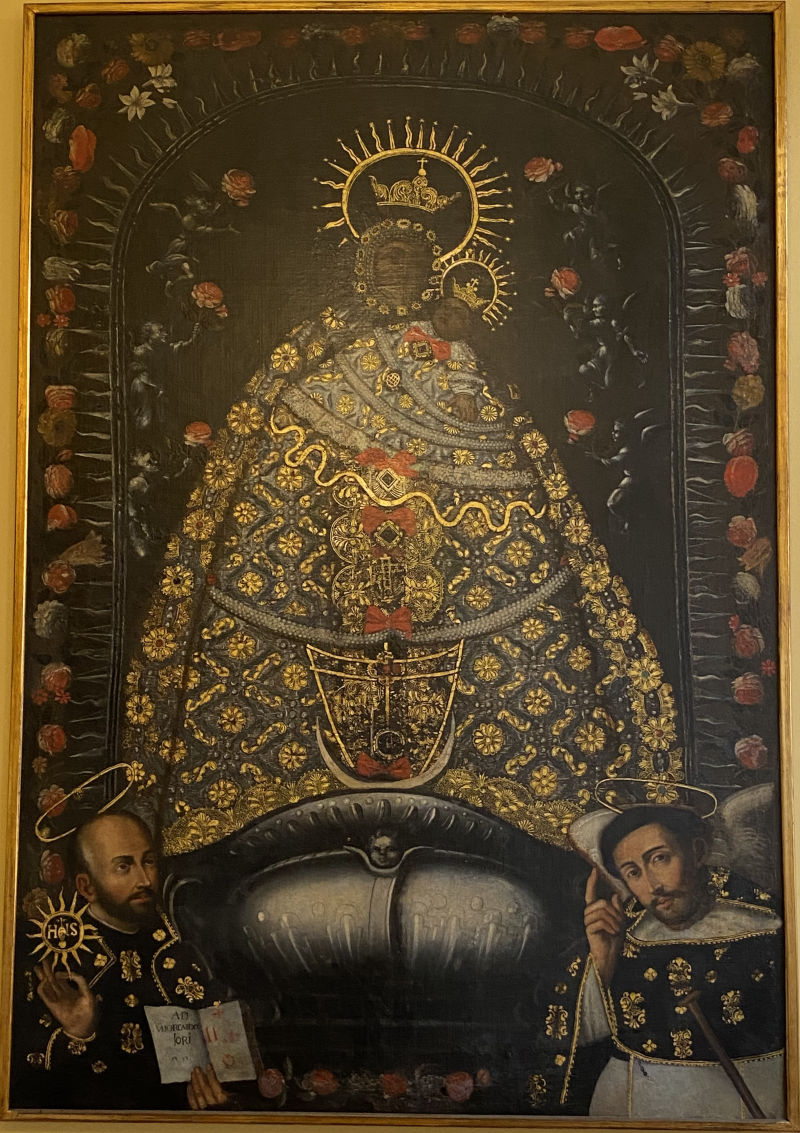 Anónimo cuzqueño, Virgin of Almudena, Late 17th century
Anónimo cuzqueño, Virgin of Almudena, Late 17th century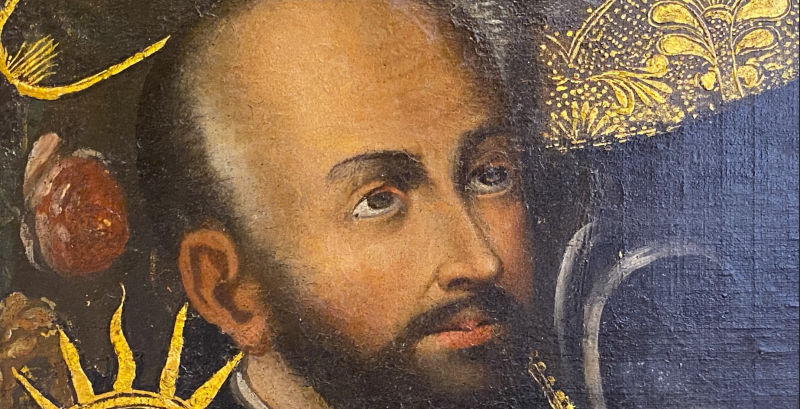
Original, Museo Pedro de Osma, Lima. Visited in 2023.
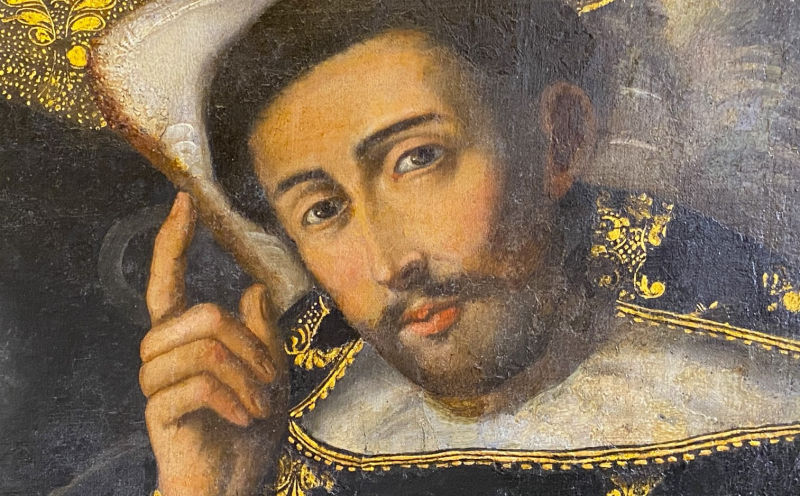 Anónimo cuzqueño, Virgin of Almudena, Late 17th century
Anónimo cuzqueño, Virgin of Almudena, Late 17th century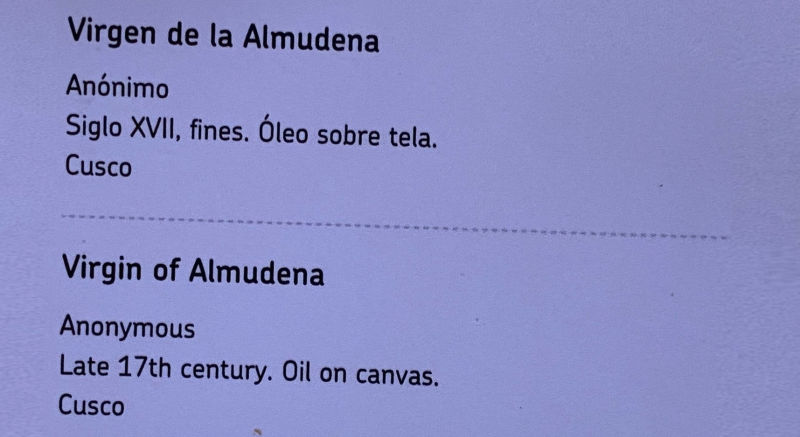 Anónimo cuzqueño, Virgin of Almudena, Late 17th century
Anónimo cuzqueño, Virgin of Almudena, Late 17th century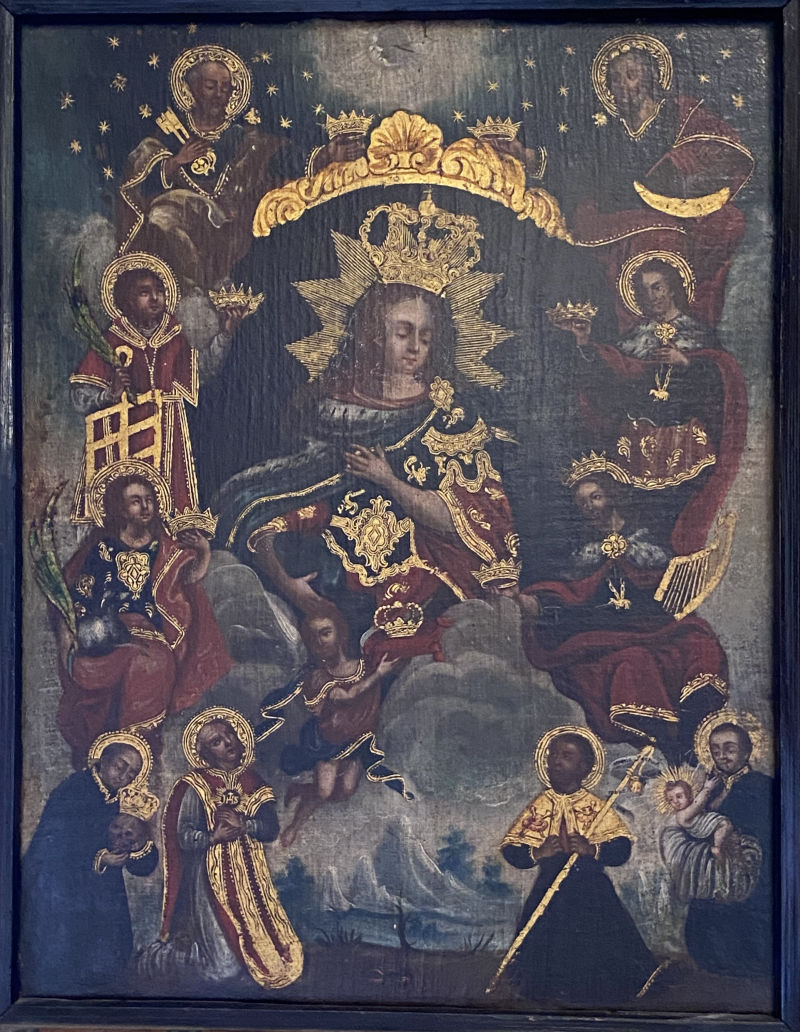 Anónimo cuzqueño, Glorification of the Virgin, Eighteenth century
Anónimo cuzqueño, Glorification of the Virgin, Eighteenth century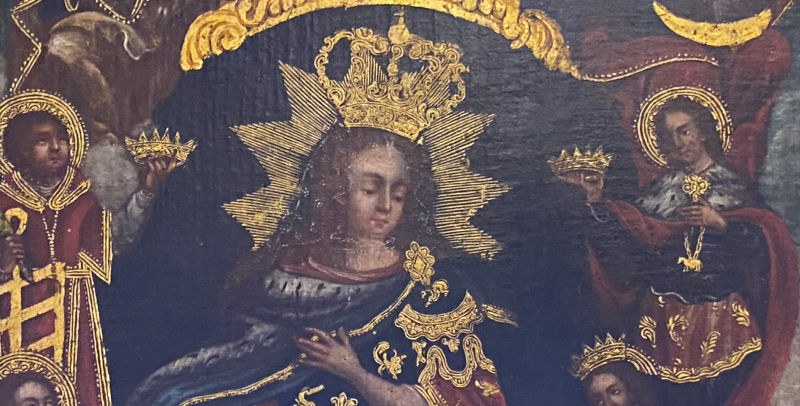
Original, Museo Pedro de Osma, Lima. Visited in 2023.
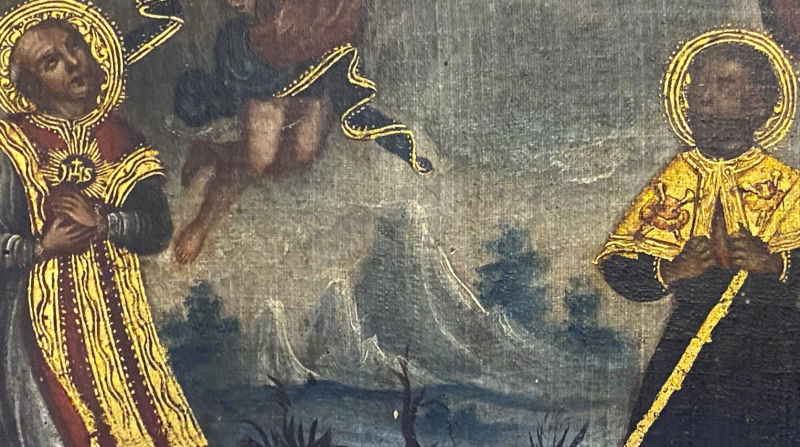 Anónimo cuzqueño, Glorification of the Virgin, Eighteenth century
Anónimo cuzqueño, Glorification of the Virgin, Eighteenth century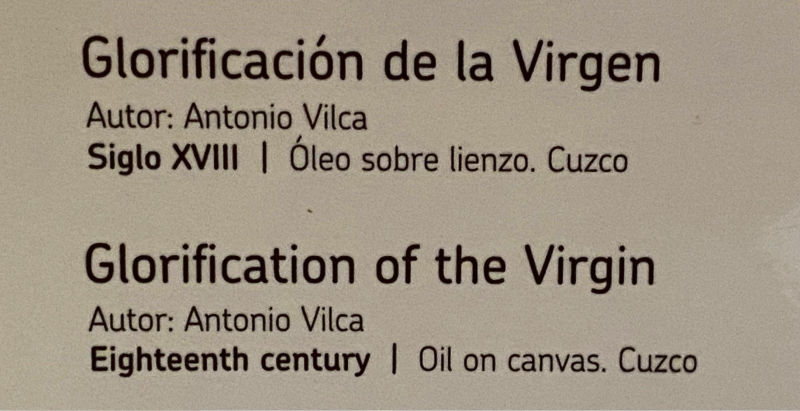 Anónimo cuzqueño, Glorification of the Virgin, Eighteenth century
Anónimo cuzqueño, Glorification of the Virgin, Eighteenth century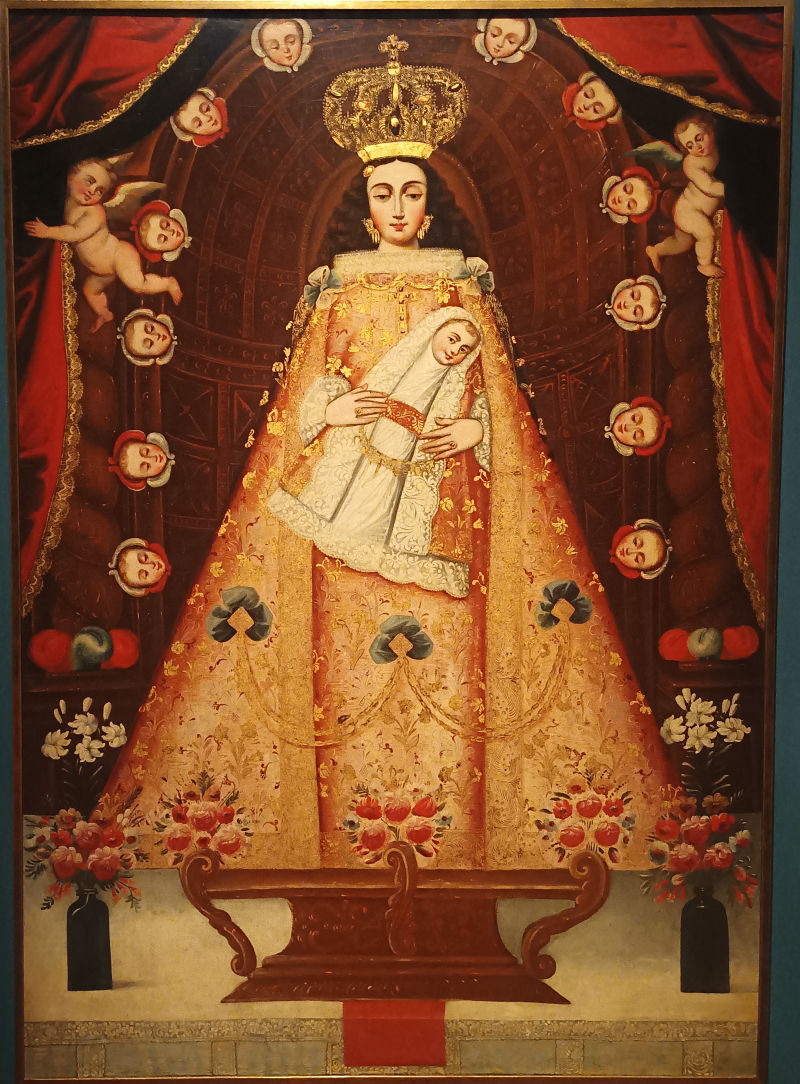 Anónimo cuzqueño, Our Lady of Bethlehem, ca. 1740-1760
Anónimo cuzqueño, Our Lady of Bethlehem, ca. 1740-1760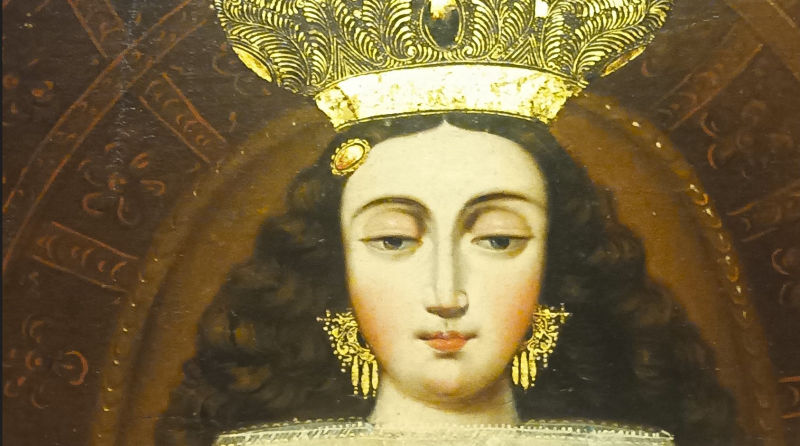 Original, Museo de Arte de Lima, Peru. Visited in 2023.
Original, Museo de Arte de Lima, Peru. Visited in 2023.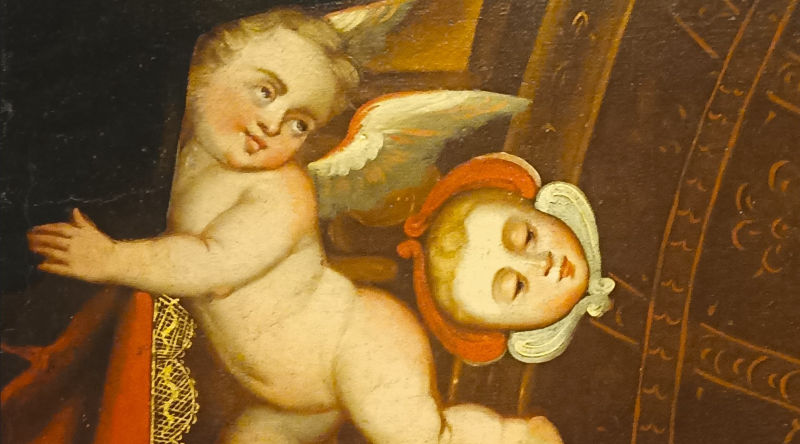 Anónimo cuzqueño, Our Lady of Bethlehem, ca. 1740-1760
Anónimo cuzqueño, Our Lady of Bethlehem, ca. 1740-1760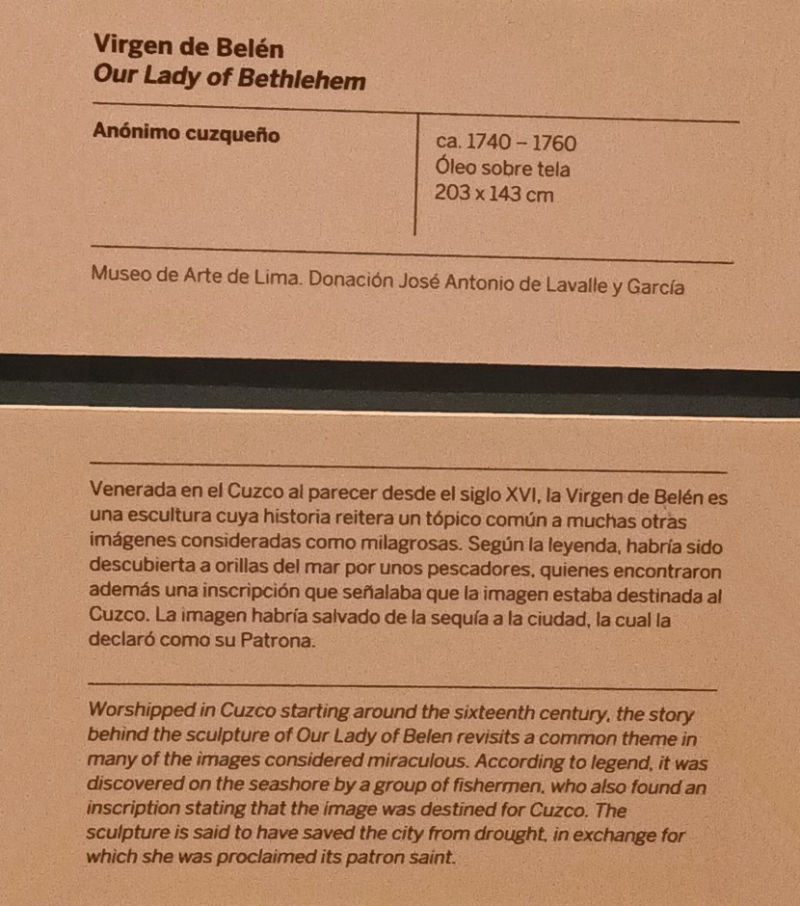 Anónimo cuzqueño, Our Lady of Bethlehem, ca. 1740-1760
Anónimo cuzqueño, Our Lady of Bethlehem, ca. 1740-1760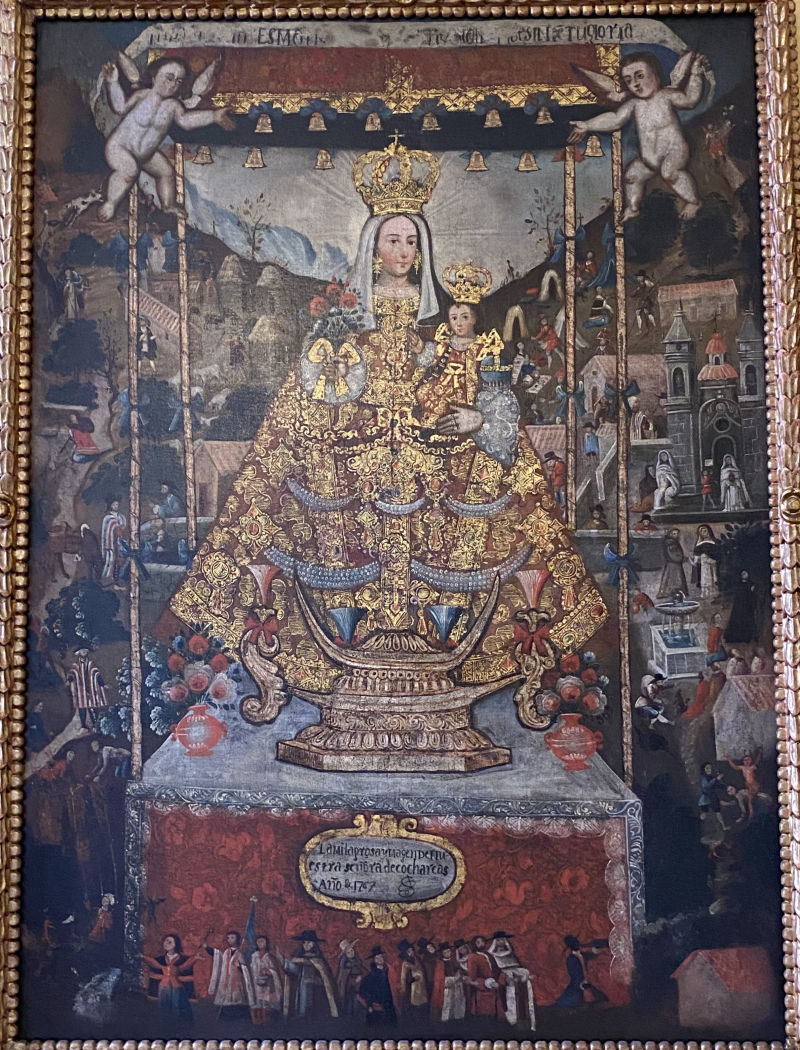 Anónimo cuzqueño, Virgin of Cocharcas, Eighteenth century
Anónimo cuzqueño, Virgin of Cocharcas, Eighteenth century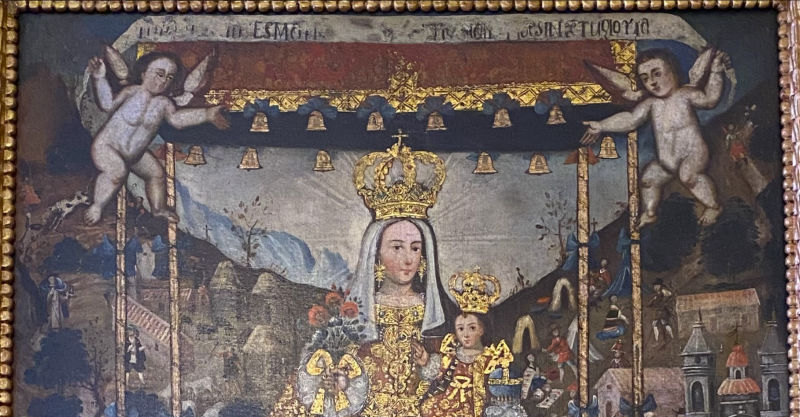 Original, Museo Pedro de Osma, Lima. Visited in 2023.
Original, Museo Pedro de Osma, Lima. Visited in 2023.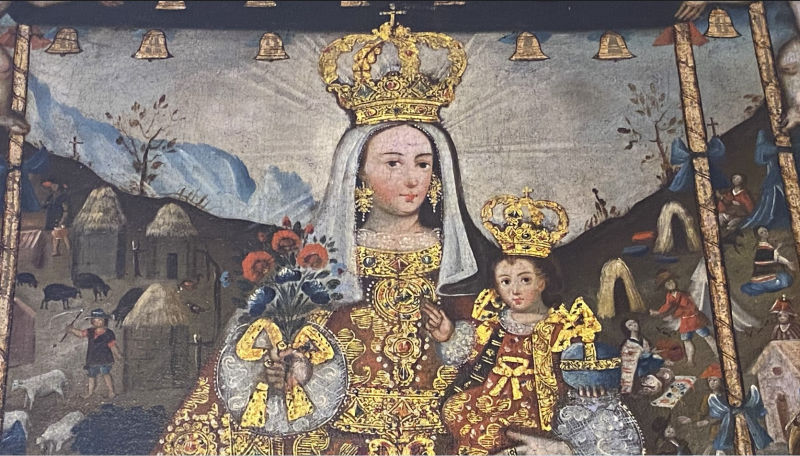 Anónimo cuzqueño, Virgin of Cocharcas, Eighteenth century
Anónimo cuzqueño, Virgin of Cocharcas, Eighteenth century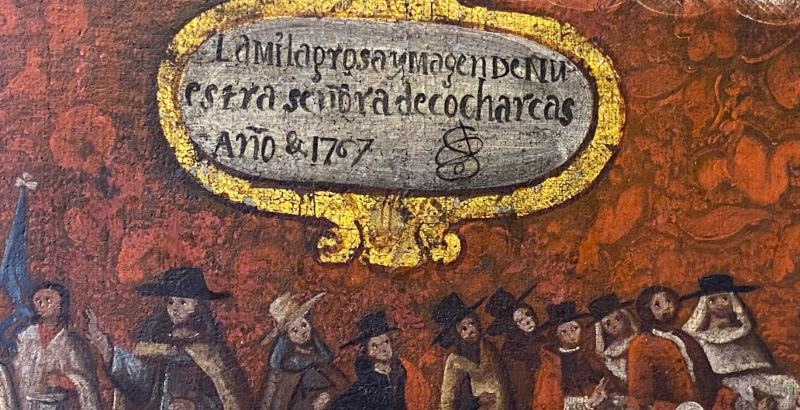 Anónimo cuzqueño, Virgin of Cocharcas, Eighteenth century
Anónimo cuzqueño, Virgin of Cocharcas, Eighteenth century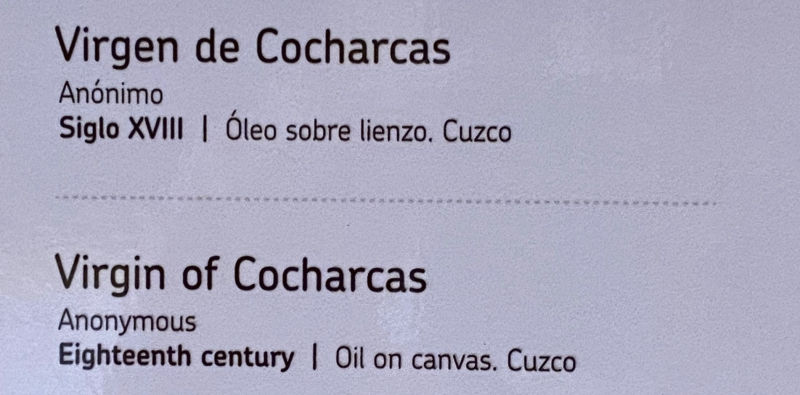 Anónimo cuzqueño, Virgin of Cocharcas, Eighteenth century
Anónimo cuzqueño, Virgin of Cocharcas, Eighteenth century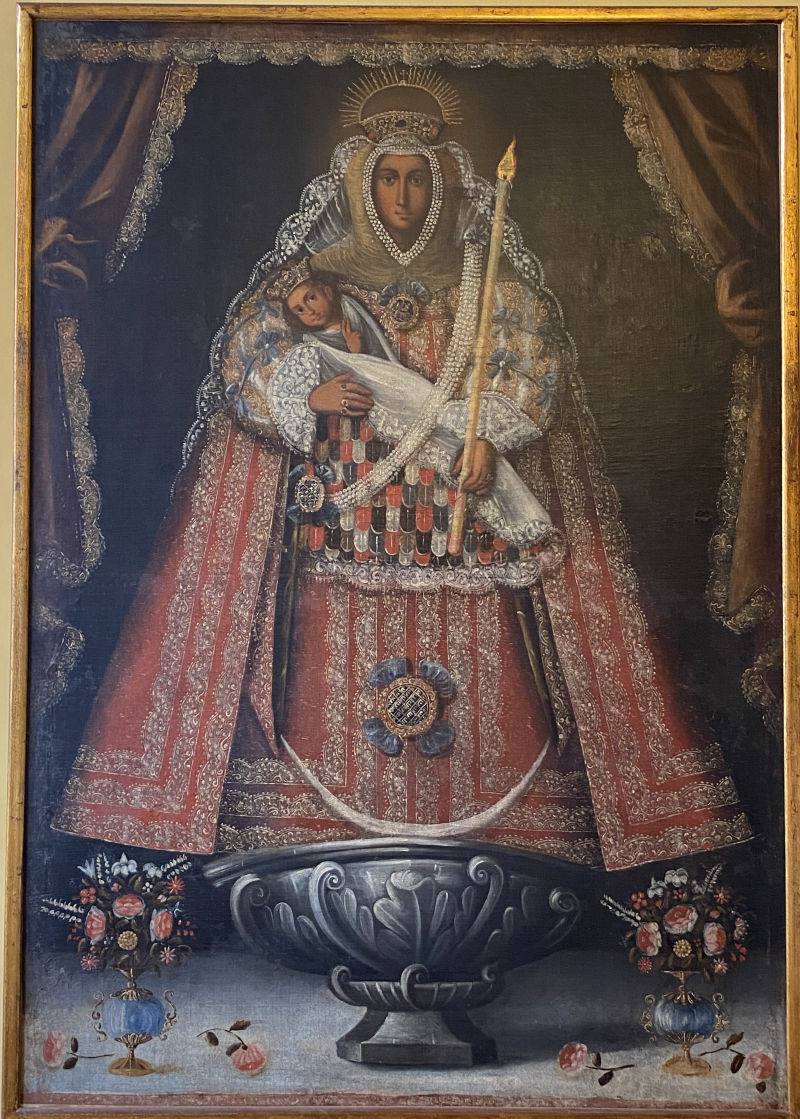
Anónimo cuzqueño, Our Lady of Candelaria of Tenerife, Eighteenth century
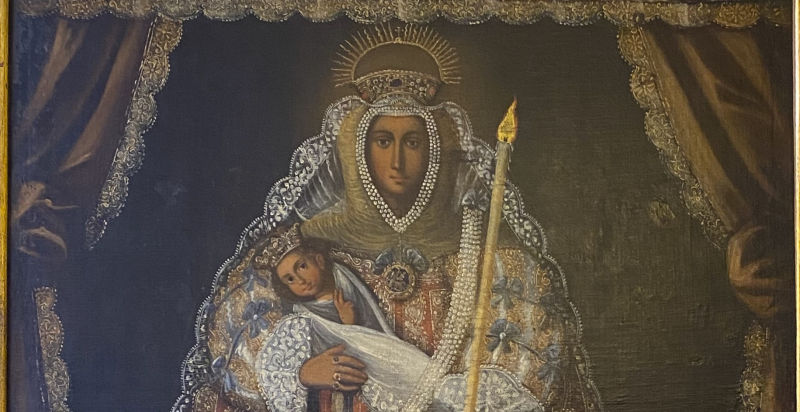 Original, Museo Pedro de Osma, Lima. Visited in 2023.
Original, Museo Pedro de Osma, Lima. Visited in 2023.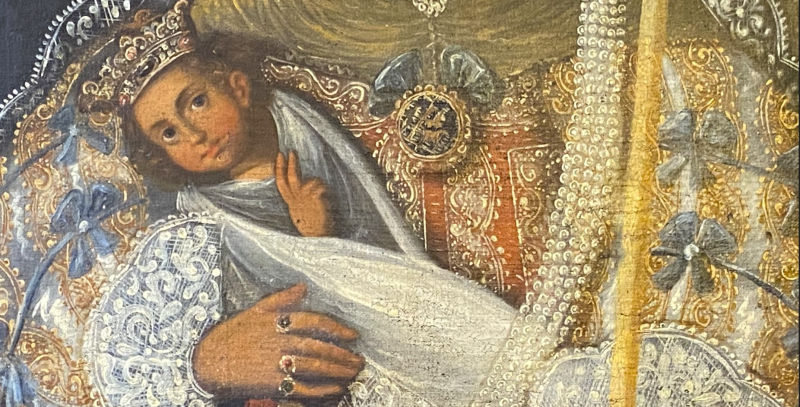 Anónimo cuzqueño, Our Lady of Candelaria of Tenerife, Eighteenth century
Anónimo cuzqueño, Our Lady of Candelaria of Tenerife, Eighteenth century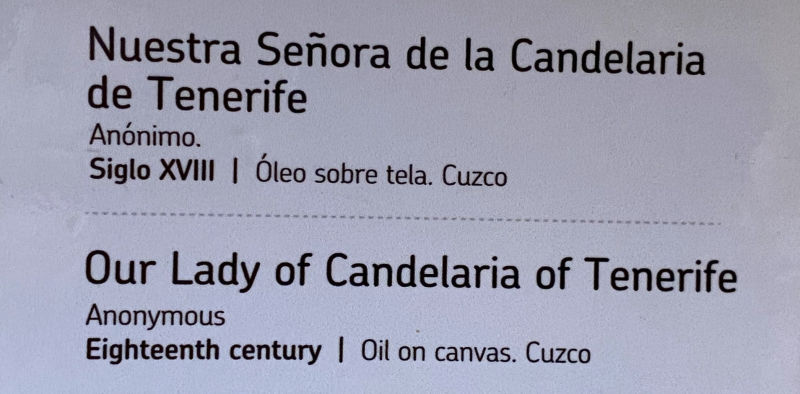 Anónimo cuzqueño, Our Lady of Candelaria of Tenerife, Eighteenth century
Anónimo cuzqueño, Our Lady of Candelaria of Tenerife, Eighteenth century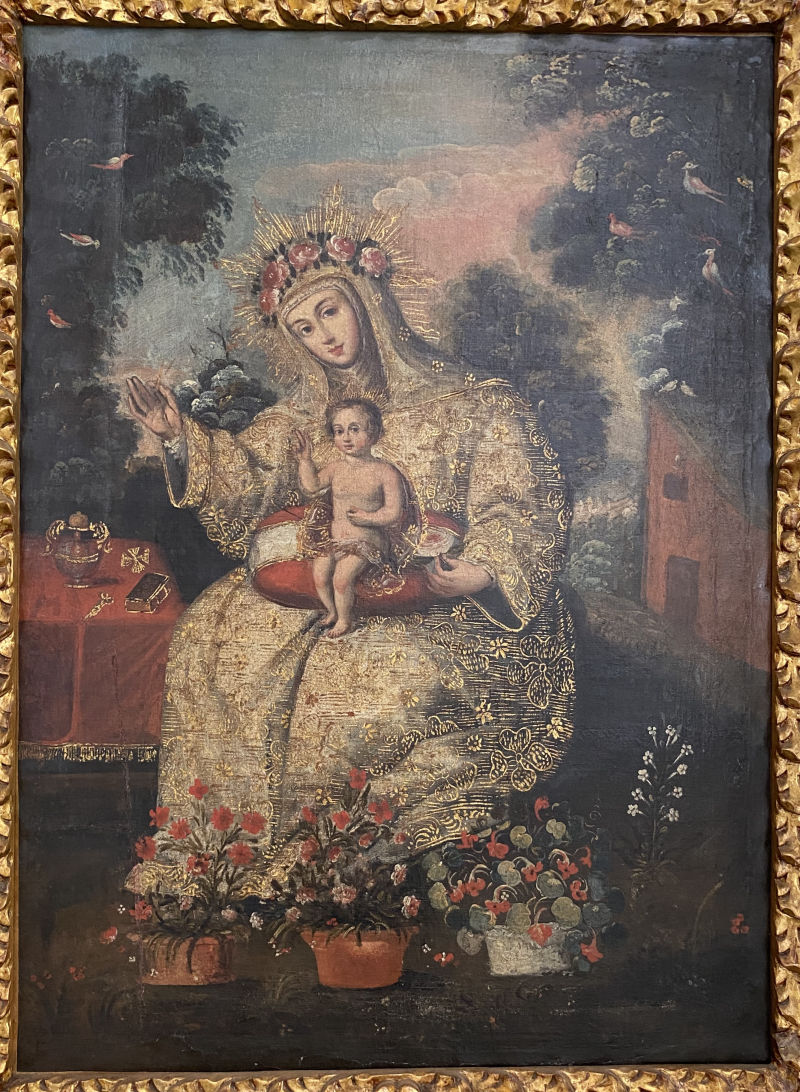 Anónimo cuzqueño, Saint Rose of Lima with the Child, Second half of the eighteenth century
Anónimo cuzqueño, Saint Rose of Lima with the Child, Second half of the eighteenth century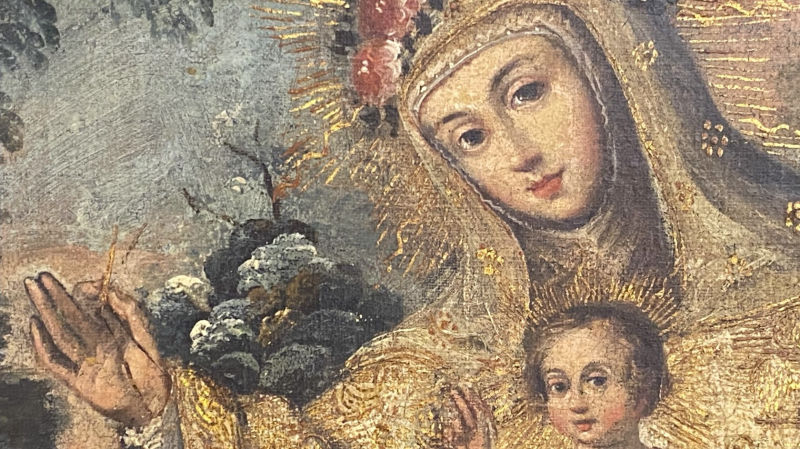 Original, Museo Pedro de Osma, Lima. Visited in 2023.
Original, Museo Pedro de Osma, Lima. Visited in 2023.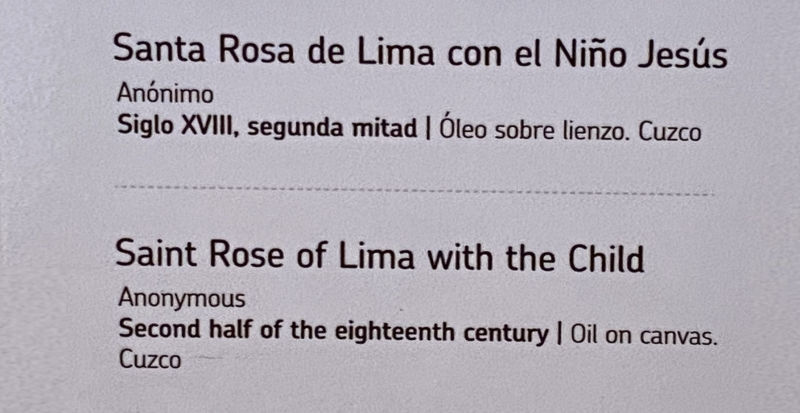 Anónimo cuzqueño, Saint Rose of Lima with the Child, Second half of the eighteenth century
Anónimo cuzqueño, Saint Rose of Lima with the Child, Second half of the eighteenth century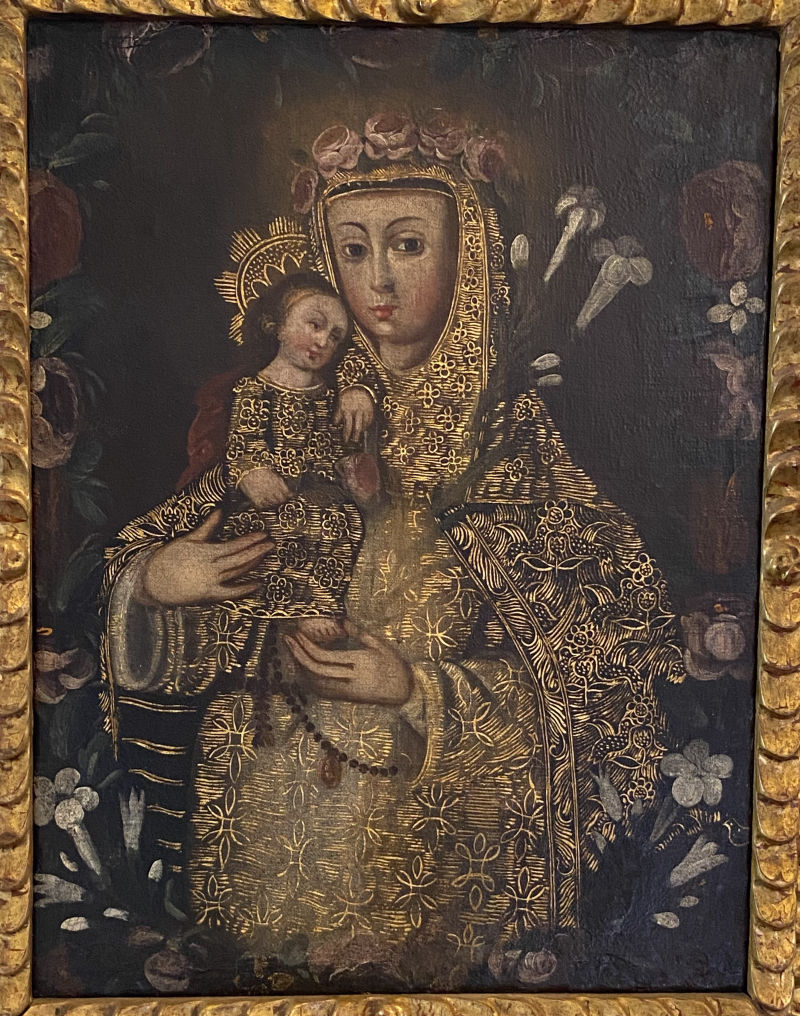 Anónimo cuzqueñ, Saint Rose of Lima with the Child, Eighteenth century..
Anónimo cuzqueñ, Saint Rose of Lima with the Child, Eighteenth century..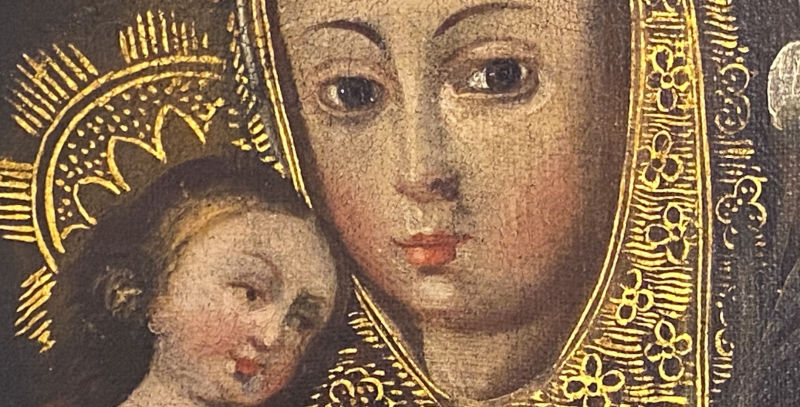 Original, Museo Pedro de Osma, Lima. Visited in 2023.
Original, Museo Pedro de Osma, Lima. Visited in 2023.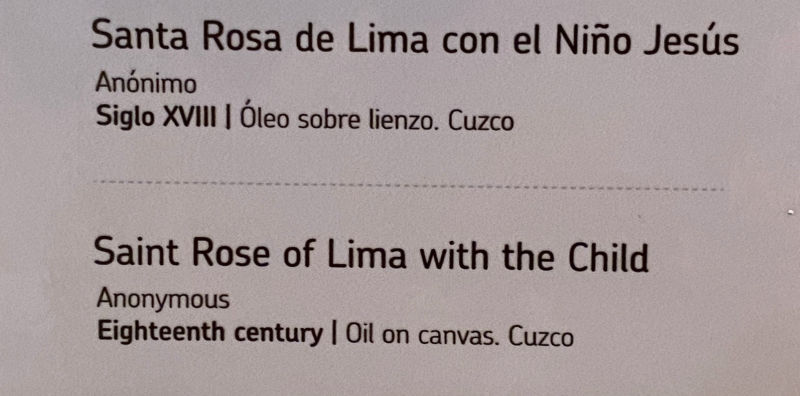 Anónimo cuzqueñ, Saint Rose of Lima with the Child, Eighteenth century..
Anónimo cuzqueñ, Saint Rose of Lima with the Child, Eighteenth century..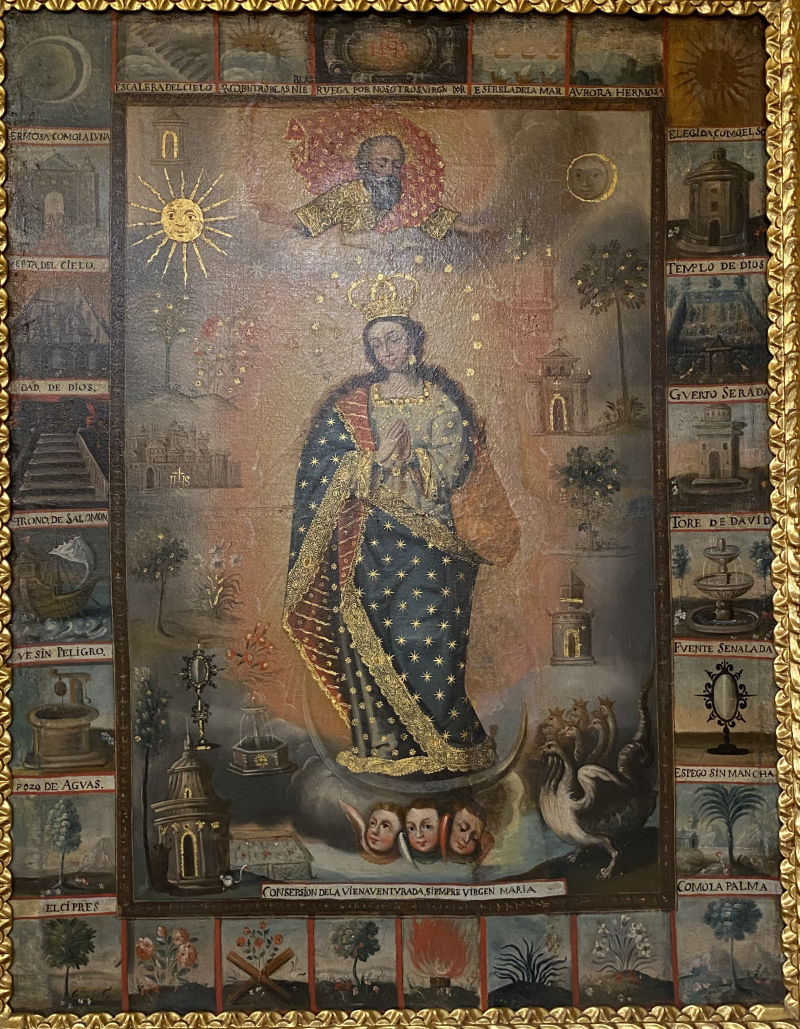 Anónimo cuzqueño, Immaculate Conception, Eighteenth century
Anónimo cuzqueño, Immaculate Conception, Eighteenth century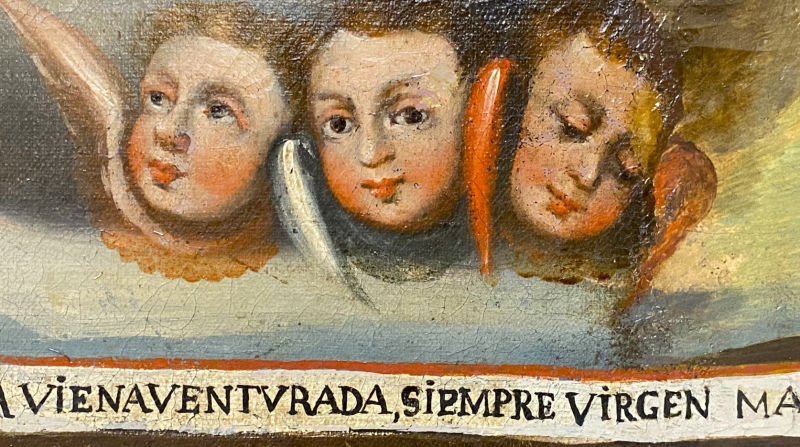 Original, Museo Pedro de Osma, Lima. Visited in 2023.
Original, Museo Pedro de Osma, Lima. Visited in 2023.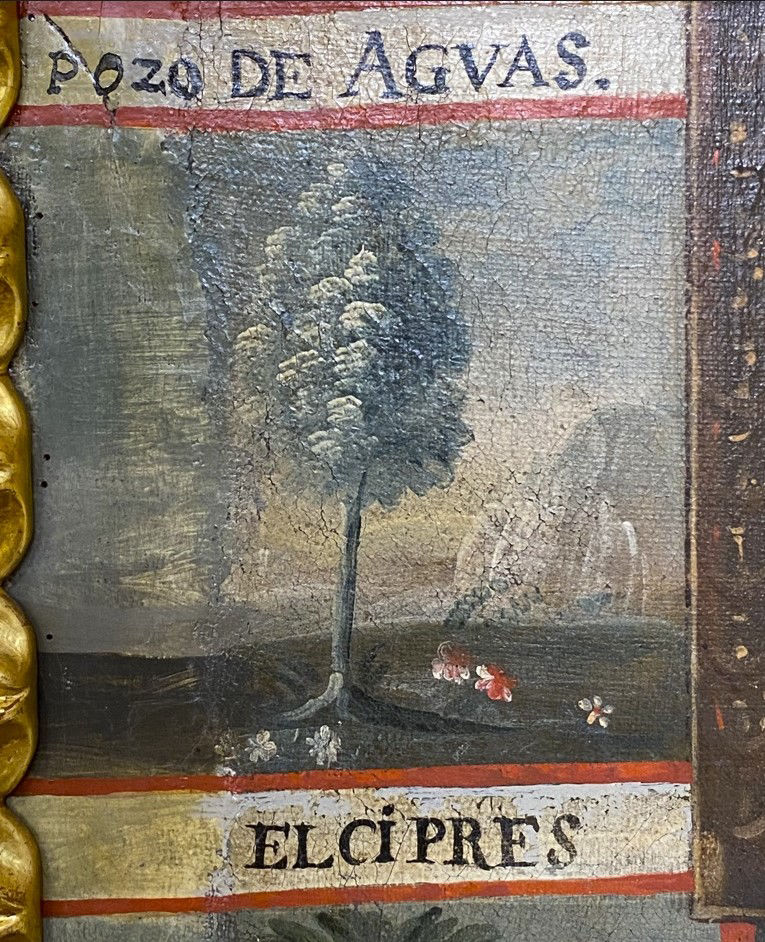 Anónimo cuzqueño, Immaculate Conception, Eighteenth century
Anónimo cuzqueño, Immaculate Conception, Eighteenth century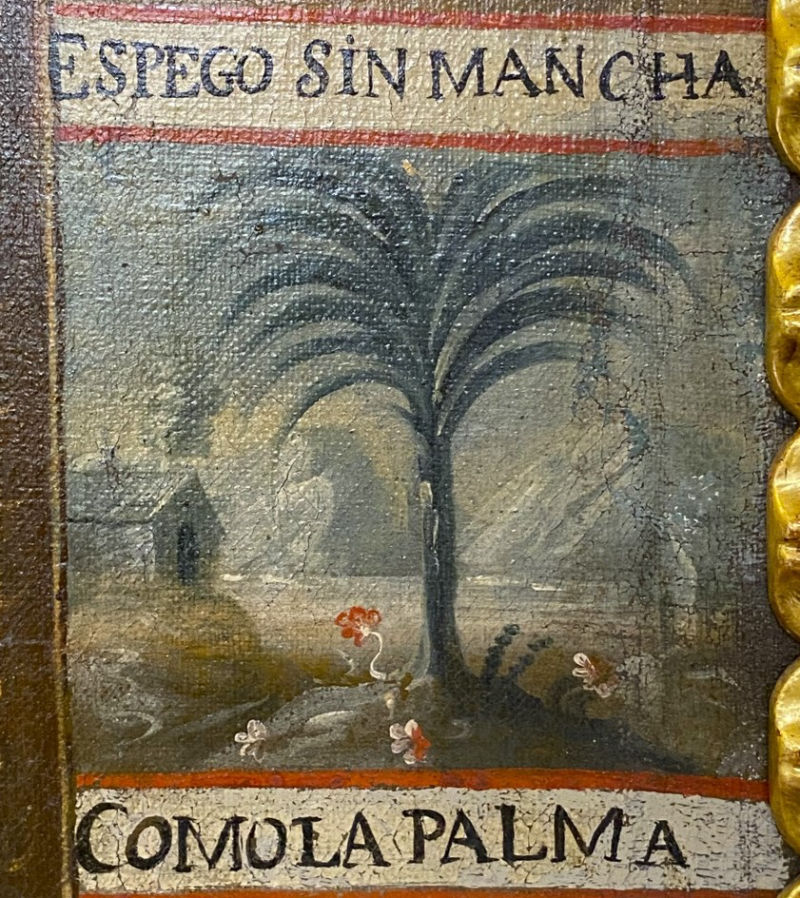 Anónimo cuzqueño, Immaculate Conception, Eighteenth century
Anónimo cuzqueño, Immaculate Conception, Eighteenth century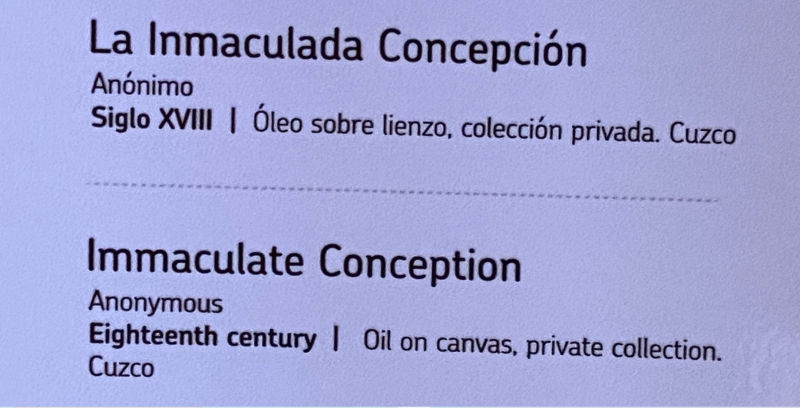 Anónimo cuzqueño, Immaculate Conception, Eighteenth century
Anónimo cuzqueño, Immaculate Conception, Eighteenth century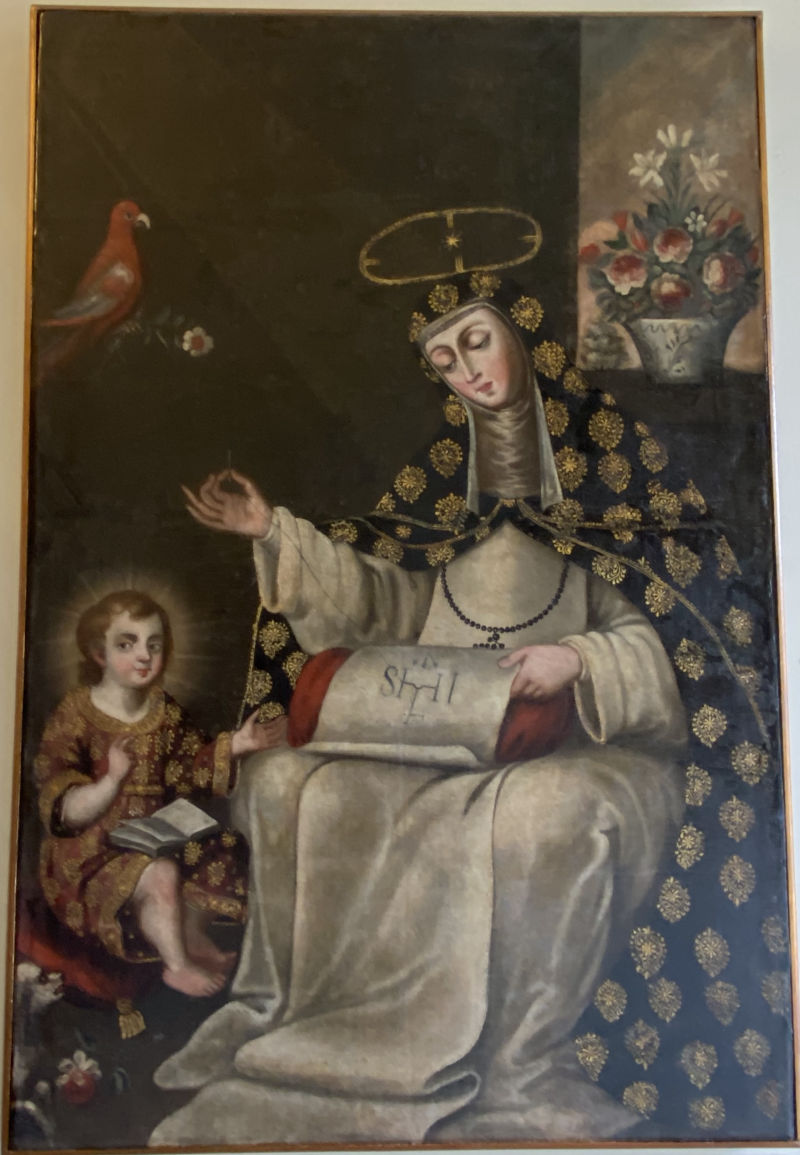 Anónimo cuzqueño, Santa Rosa de Lima, XVIII century
Anónimo cuzqueño, Santa Rosa de Lima, XVIII century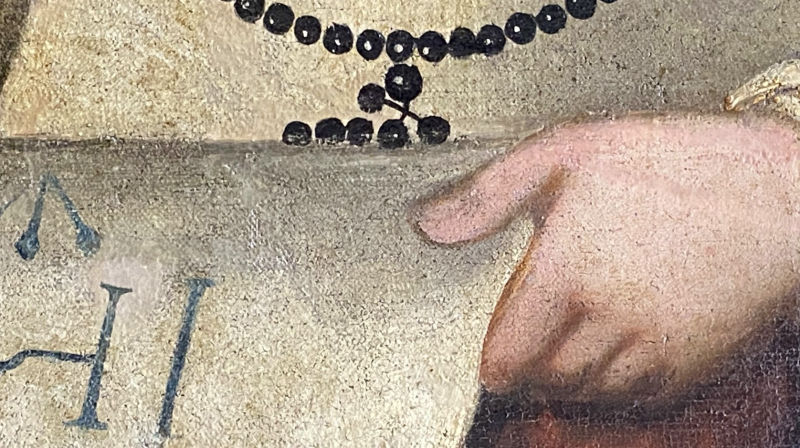 Original, Museo Pedro de Osma, Lima. Visited in 2023.
Original, Museo Pedro de Osma, Lima. Visited in 2023.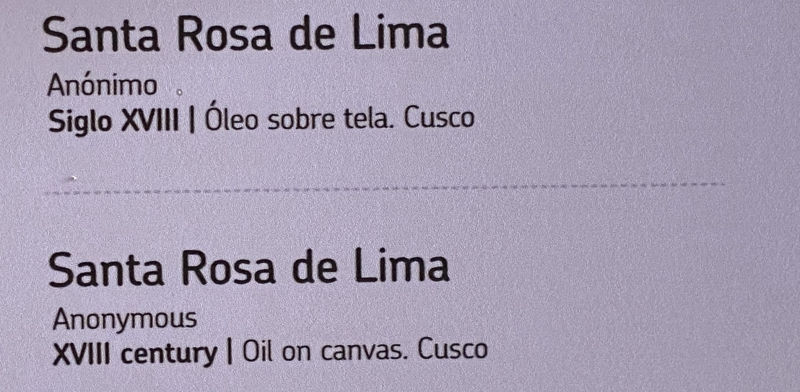 Anónimo cuzqueño, Santa Rosa de Lima, XVIII century
Anónimo cuzqueño, Santa Rosa de Lima, XVIII century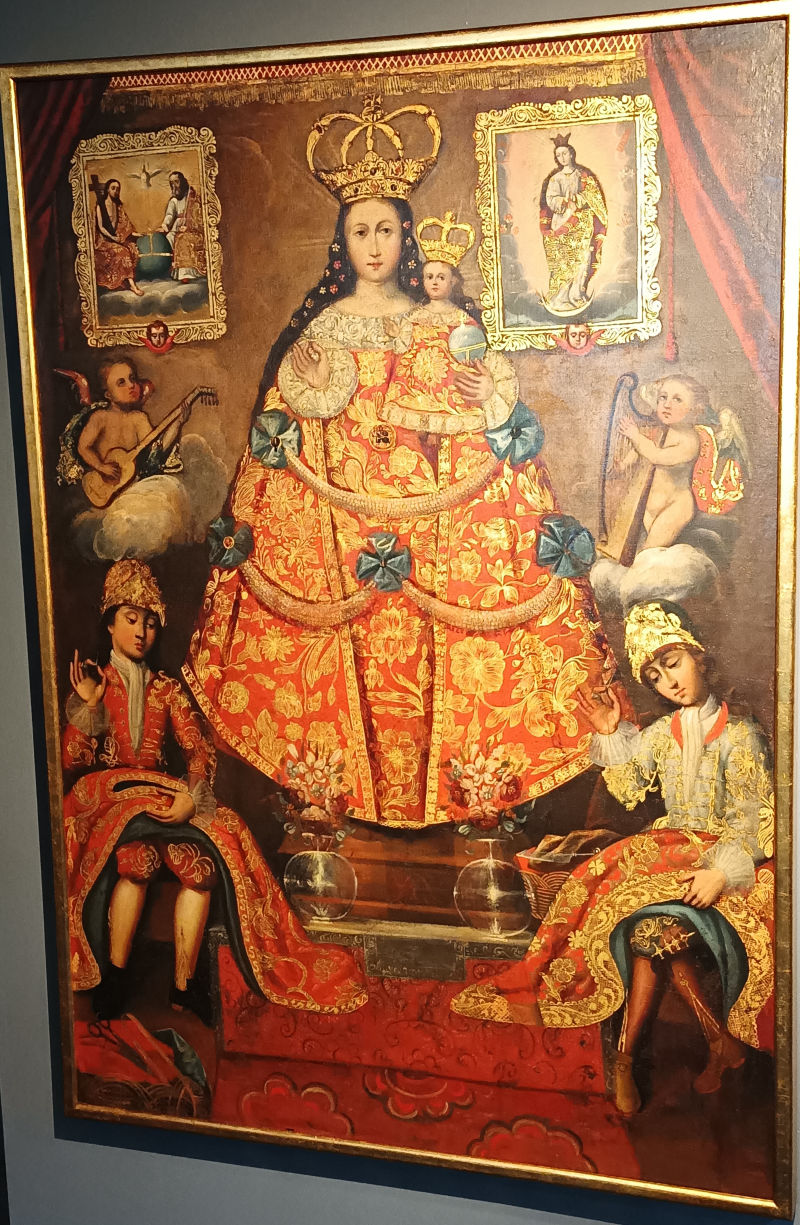 Anónimo cuzqueño, Virgin of the tailors, 18th century
Anónimo cuzqueño, Virgin of the tailors, 18th century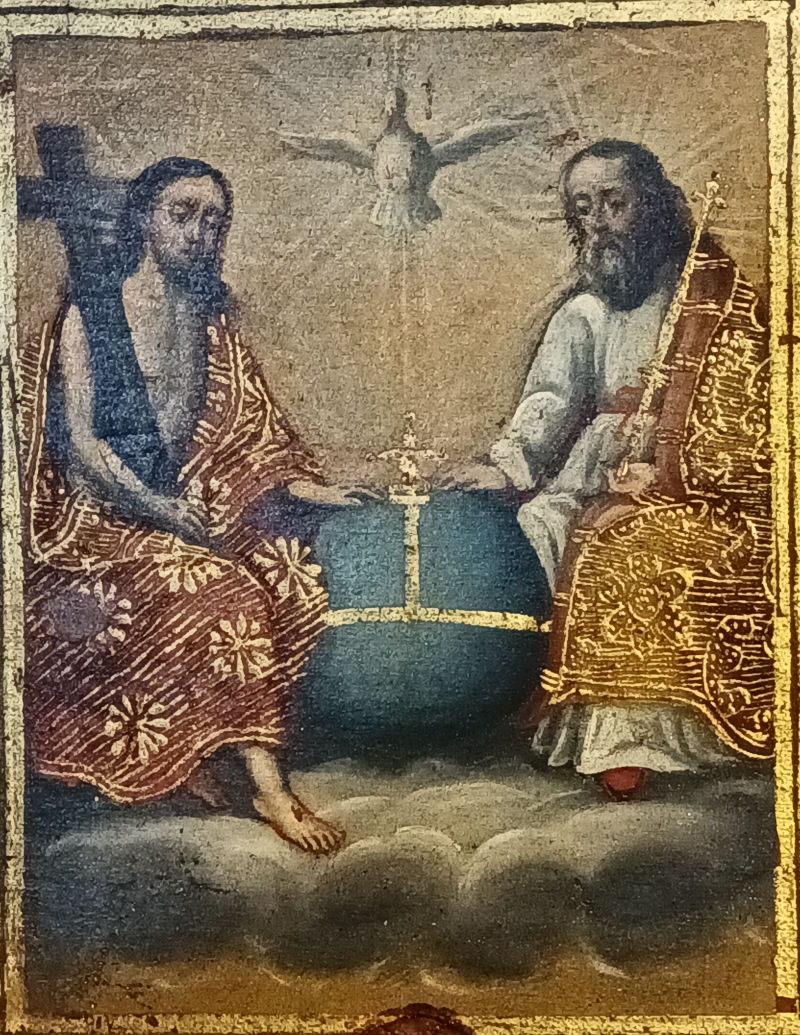 Original, Museo Pedro de Osma, Lima. Visited in 2023.
Original, Museo Pedro de Osma, Lima. Visited in 2023.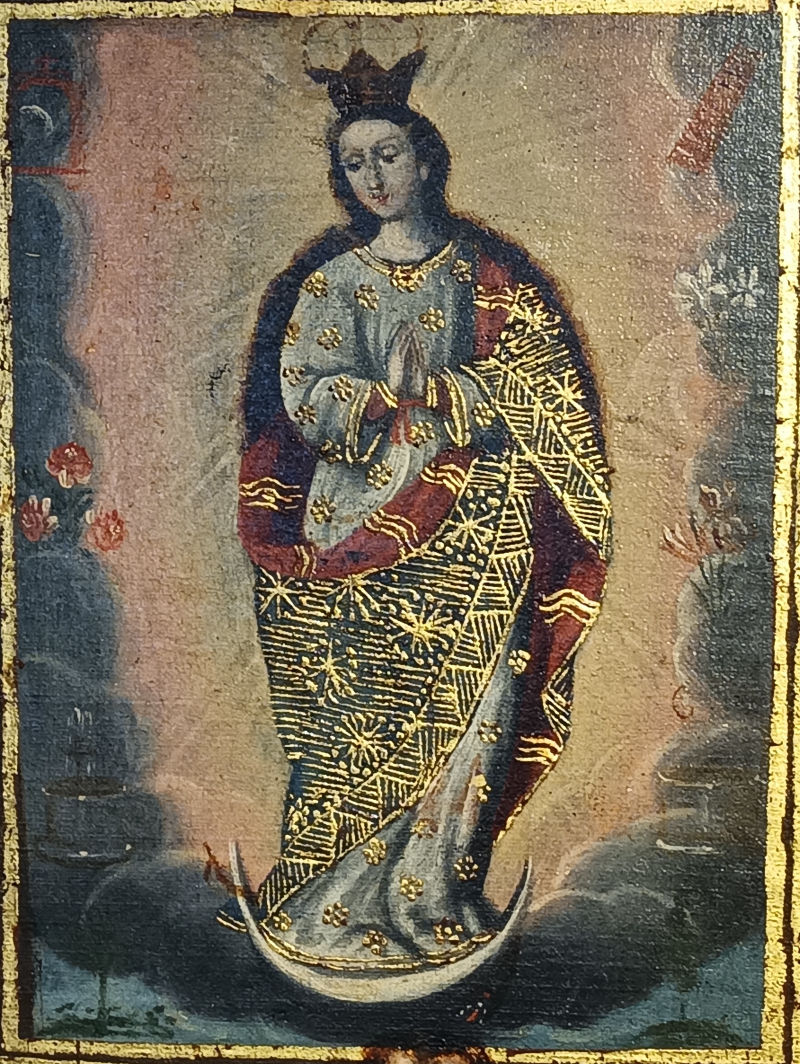 Anónimo cuzqueño, Virgin of the tailors, 18th century
Anónimo cuzqueño, Virgin of the tailors, 18th century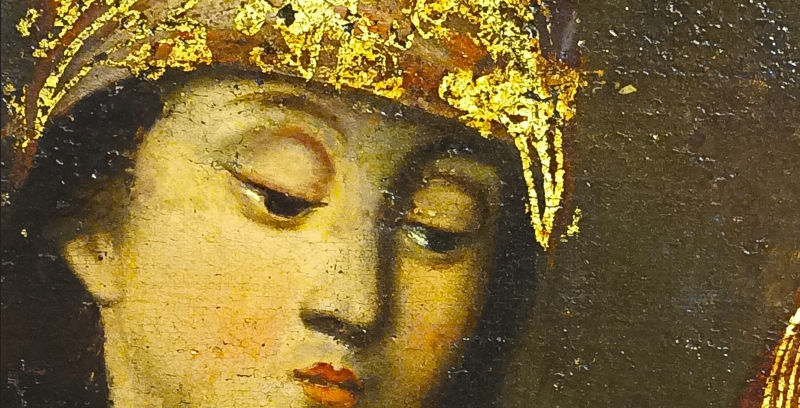 Anónimo cuzqueño, Virgin of the tailors, 18th century
Anónimo cuzqueño, Virgin of the tailors, 18th century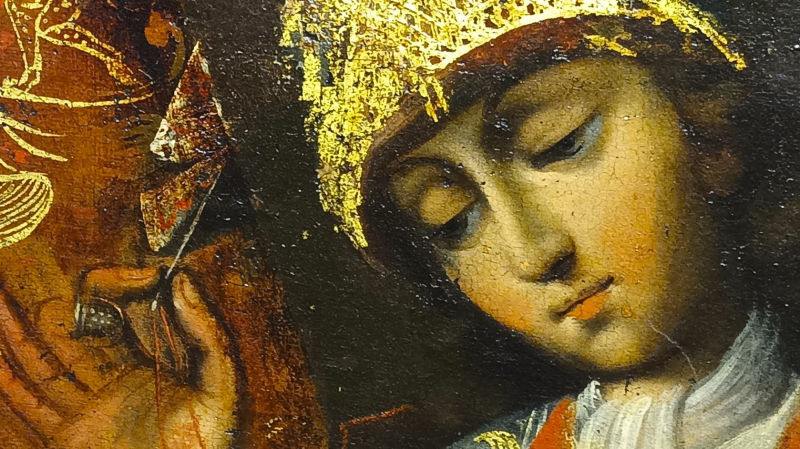 Anónimo cuzqueño, Virgin of the tailors, 18th century
Anónimo cuzqueño, Virgin of the tailors, 18th century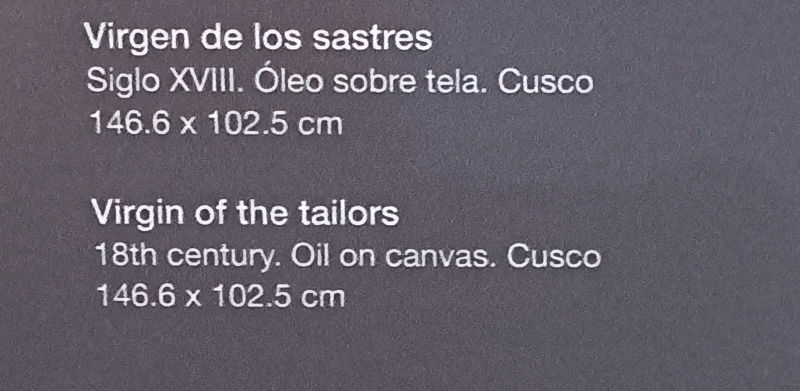 Anónimo cuzqueño, Virgin of the tailors, 18th century
Anónimo cuzqueño, Virgin of the tailors, 18th century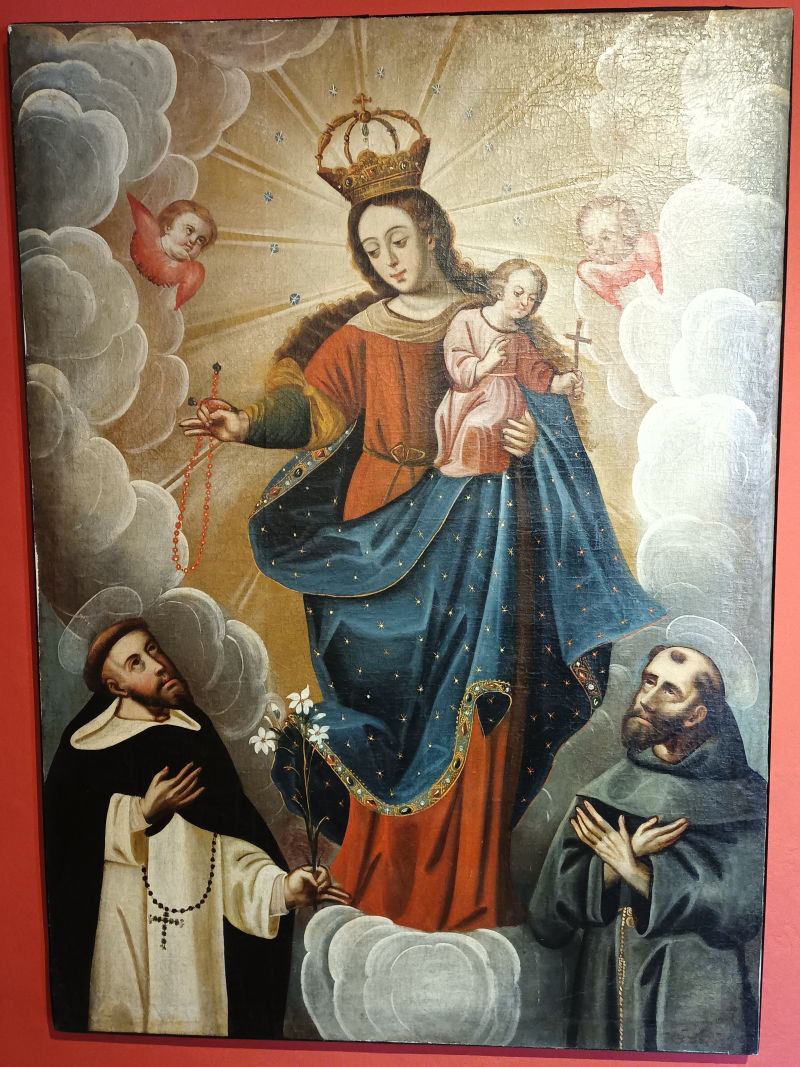 Anónimo cuzqueño, Virgin of the Rosary with Child, Saint Francis and Saint Dominic
Anónimo cuzqueño, Virgin of the Rosary with Child, Saint Francis and Saint Dominic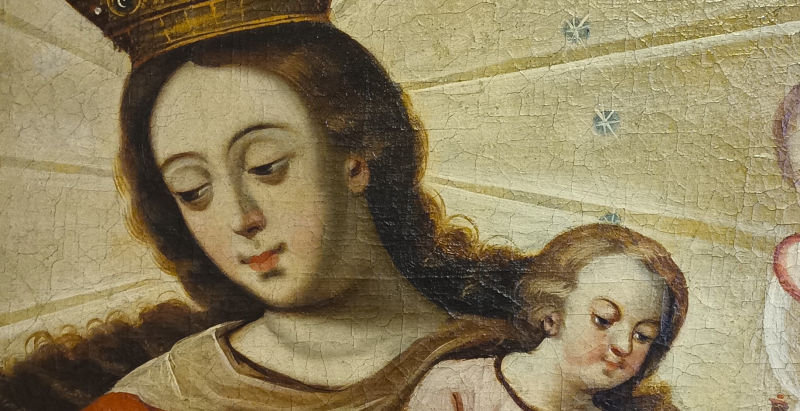
Original, Museum of Pre-Columbian Art of Cusco of Peru. Visited in 2023.
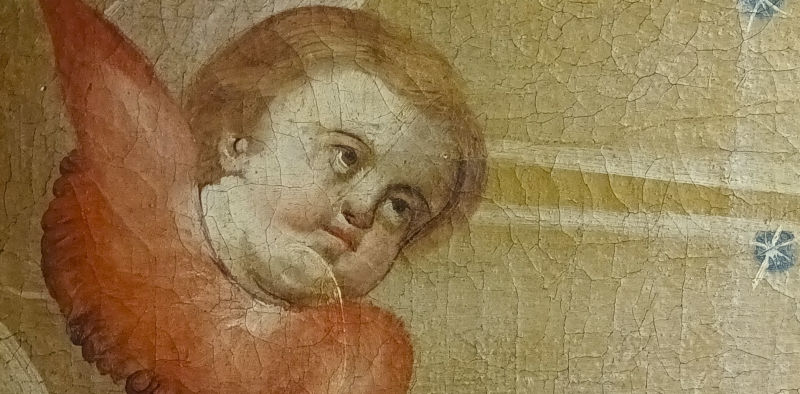 Anónimo cuzqueño, Virgin of the Rosary with Child, Saint Francis and Saint Dominic
Anónimo cuzqueño, Virgin of the Rosary with Child, Saint Francis and Saint Dominic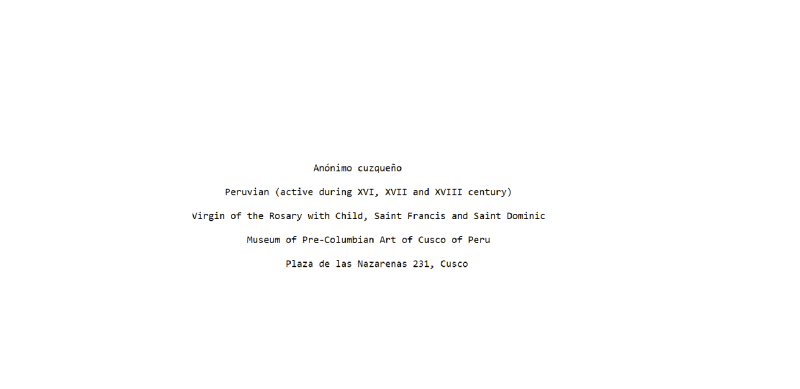 Anónimo cuzqueño, Virgin of the Rosary with Child, Saint Francis and Saint Dominic
Anónimo cuzqueño, Virgin of the Rosary with Child, Saint Francis and Saint Dominic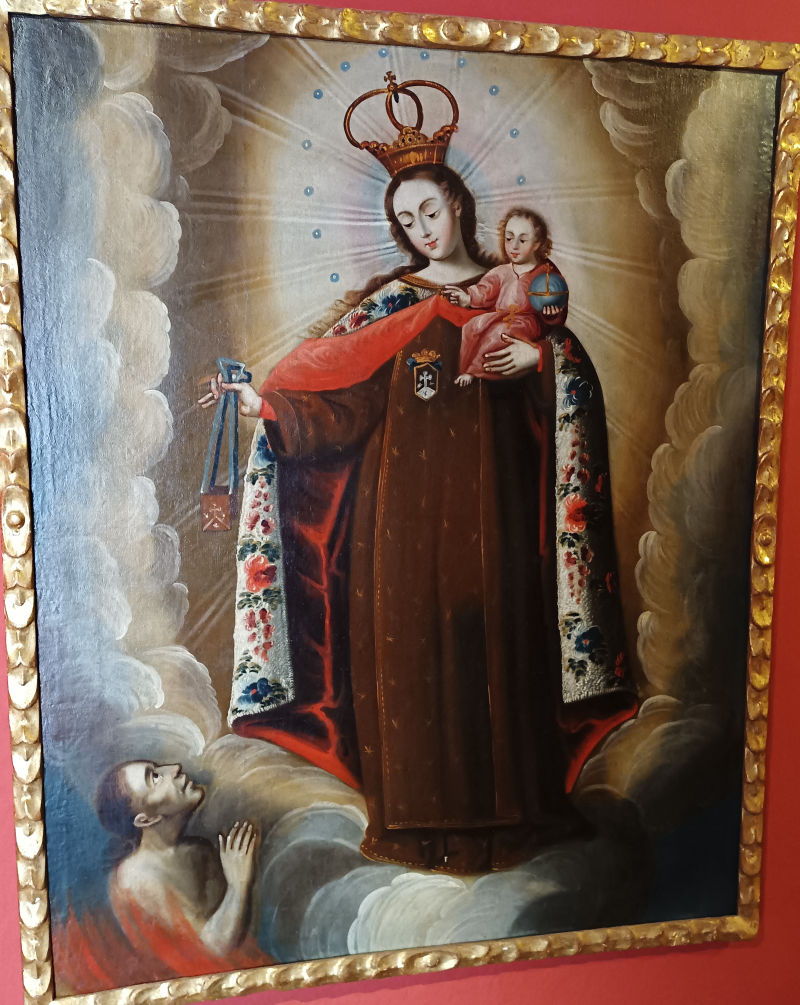 Anónimo cuzqueño, Virgin with Child
Anónimo cuzqueño, Virgin with Child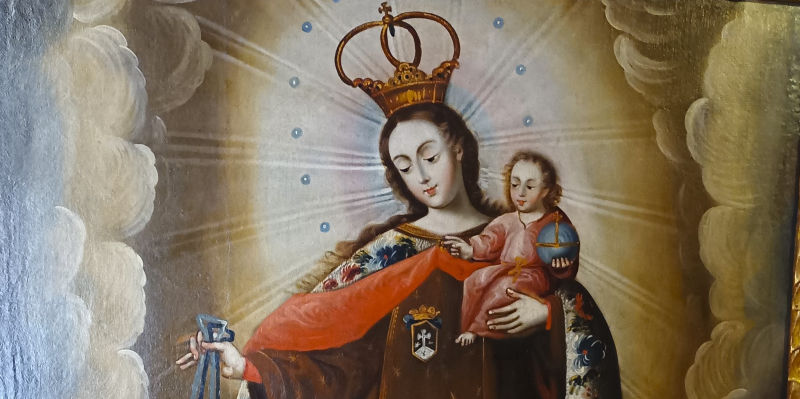
Original, Museum of Pre-Columbian Art of Cusco of Peru. Visited in 2023.
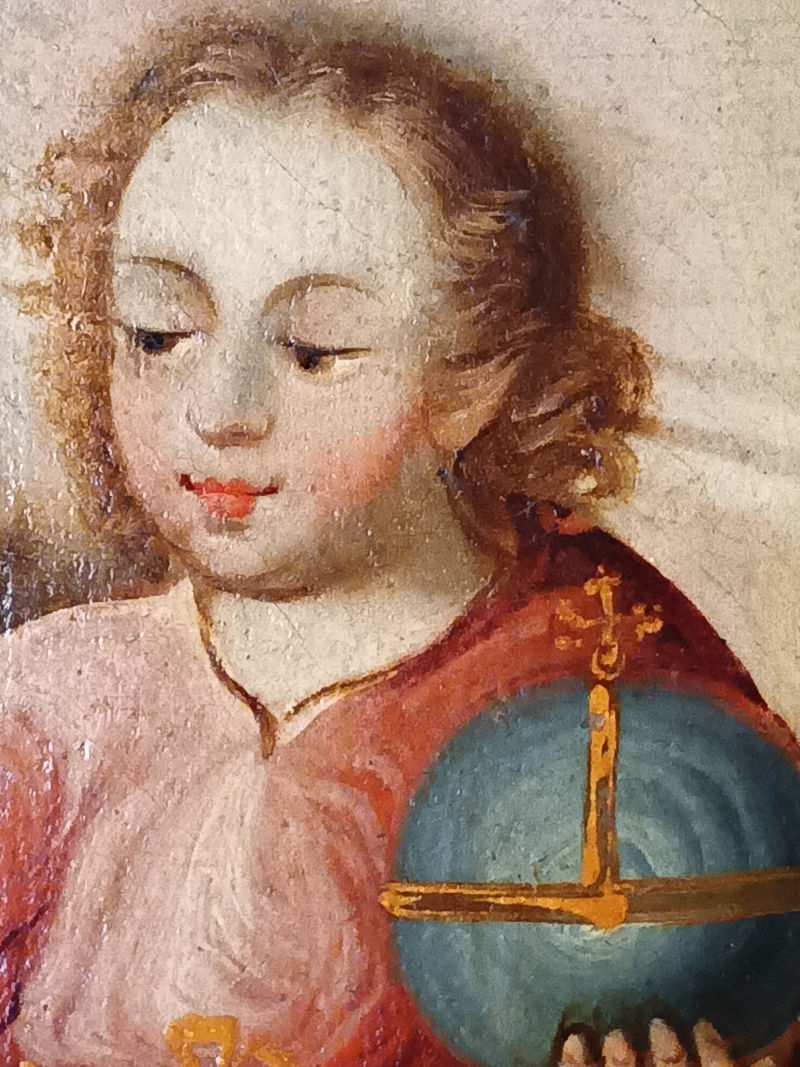 Anónimo cuzqueño, Virgin with Child
Anónimo cuzqueño, Virgin with Child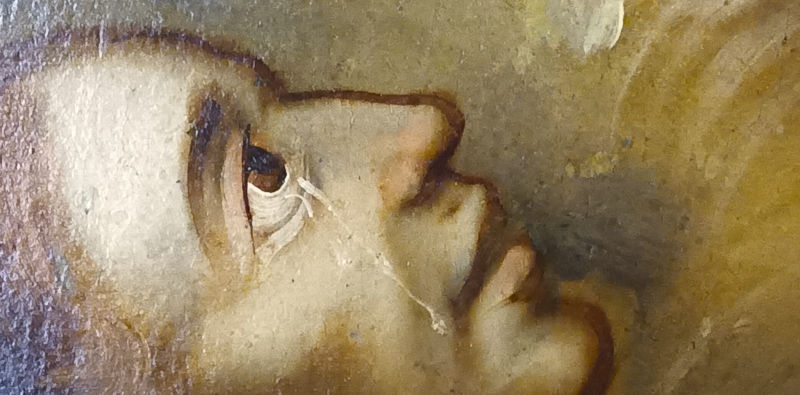 Anónimo cuzqueño, Virgin with Child
Anónimo cuzqueño, Virgin with Child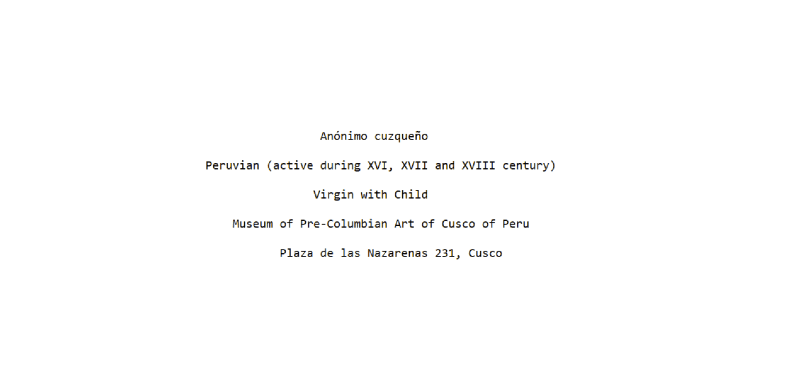 Anónimo cuzqueño, Virgin with Child
Anónimo cuzqueño, Virgin with Child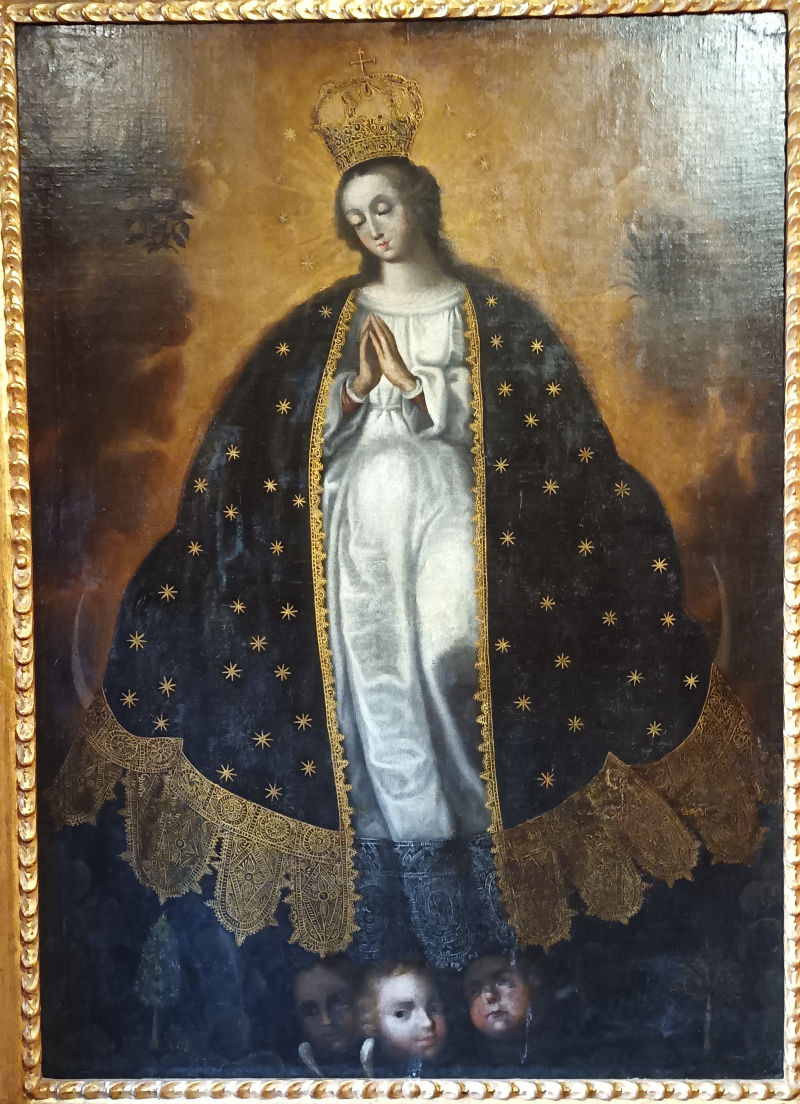 Anónimo cuzqueño, Virgin of the Immaculate Conception
Anónimo cuzqueño, Virgin of the Immaculate Conception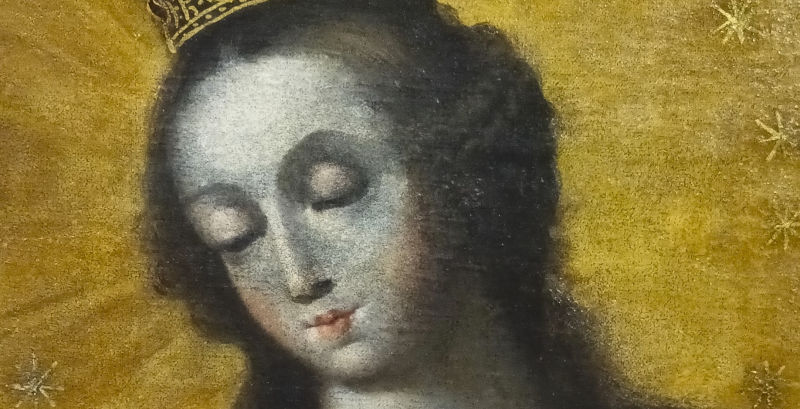
Original, Museum of Pre-Columbian Art of Cusco of Peru. Visited in 2023.
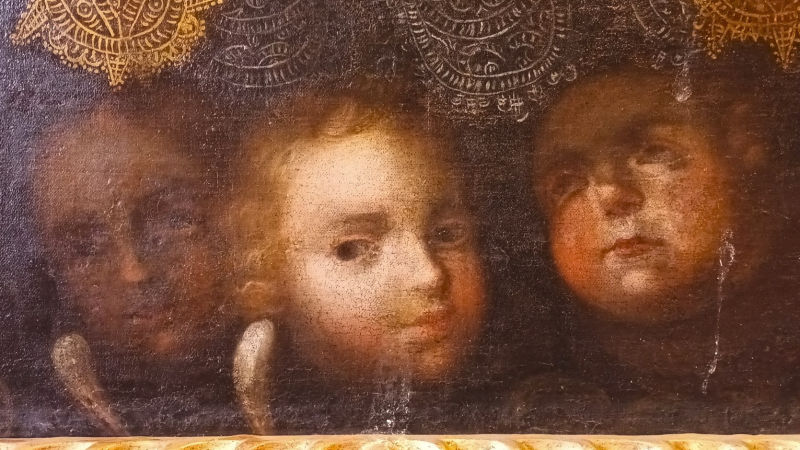 Anónimo cuzqueño, Virgin of the Immaculate Conception
Anónimo cuzqueño, Virgin of the Immaculate Conception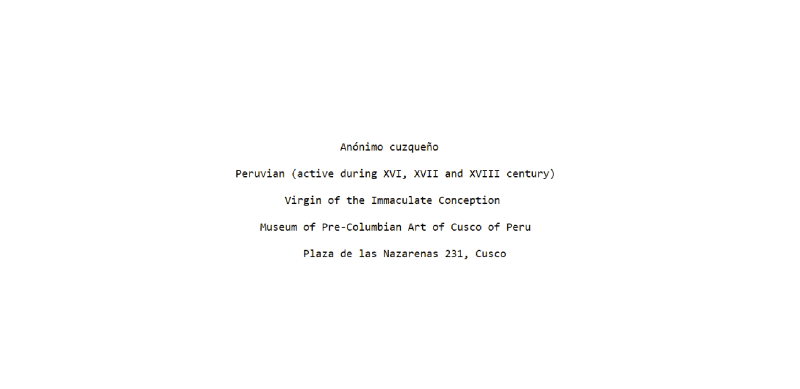 Anónimo cuzqueño, Virgin of the Immaculate Conception
Anónimo cuzqueño, Virgin of the Immaculate Conception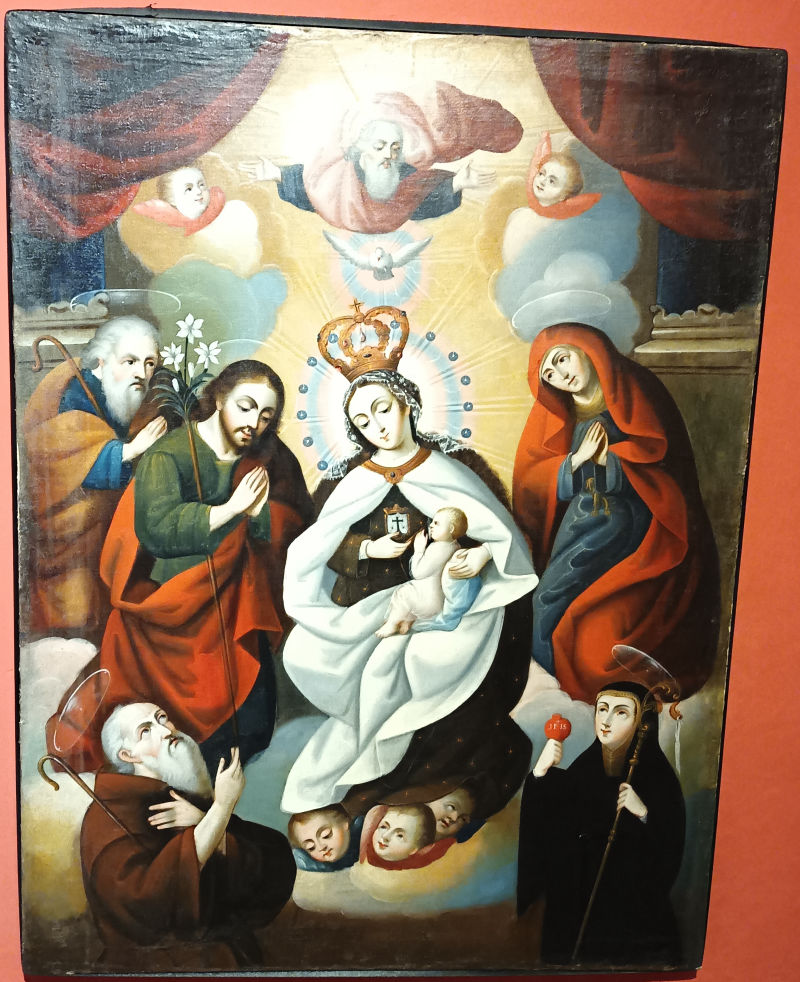 Anónimo cuzqueño, The Virgin of Carmen
Anónimo cuzqueño, The Virgin of Carmen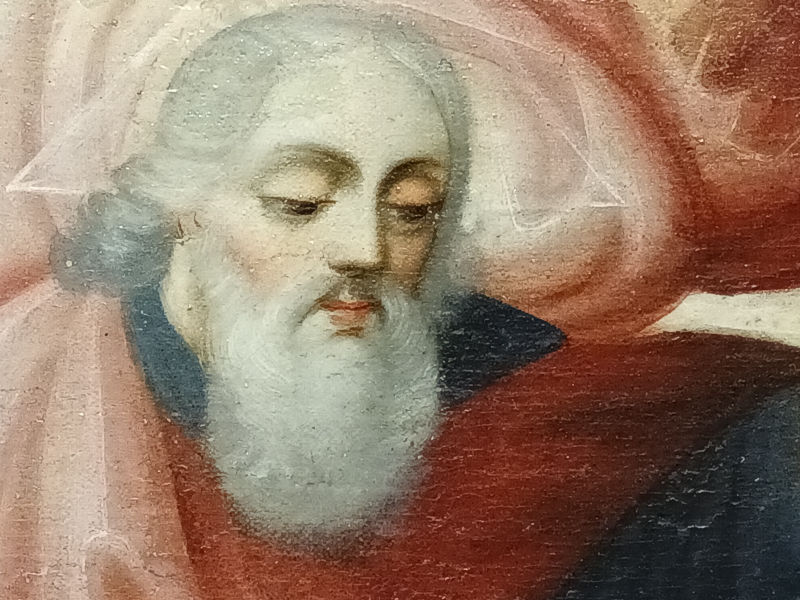
Original, Museum of Pre-Columbian Art of Cusco of Peru. Visited in 2023.
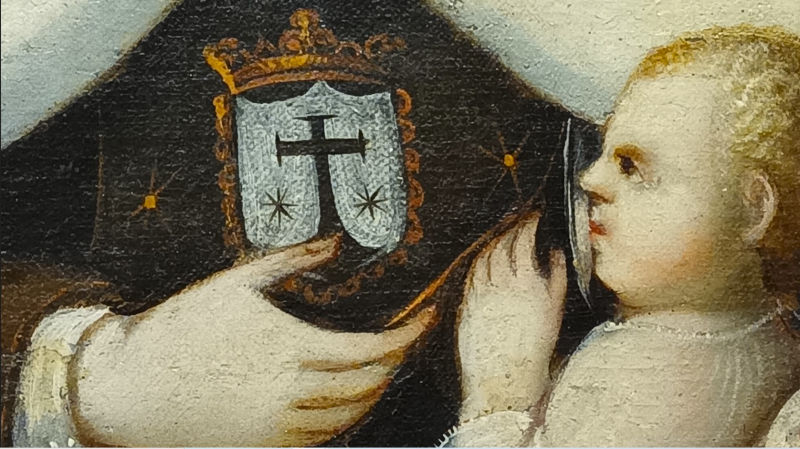 Anónimo cuzqueño, The Virgin of Carmen
Anónimo cuzqueño, The Virgin of Carmen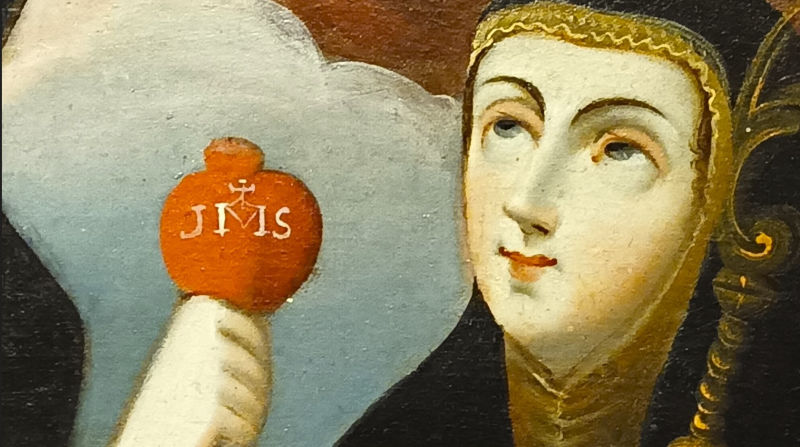 Anónimo cuzqueño, The Virgin of Carmen
Anónimo cuzqueño, The Virgin of Carmen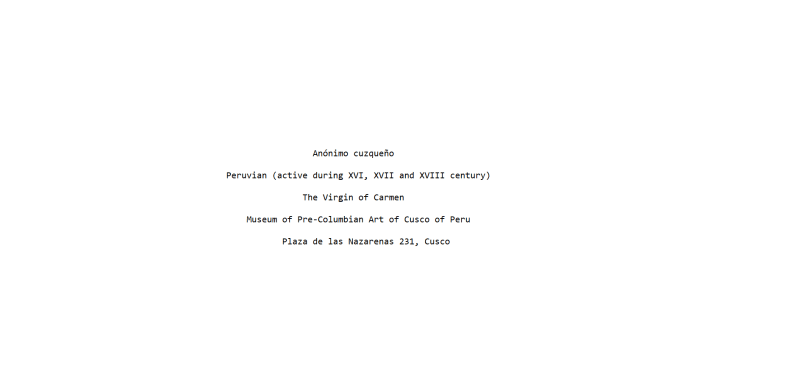 Anónimo cuzqueño, The Virgin of Carmen
Anónimo cuzqueño, The Virgin of Carmen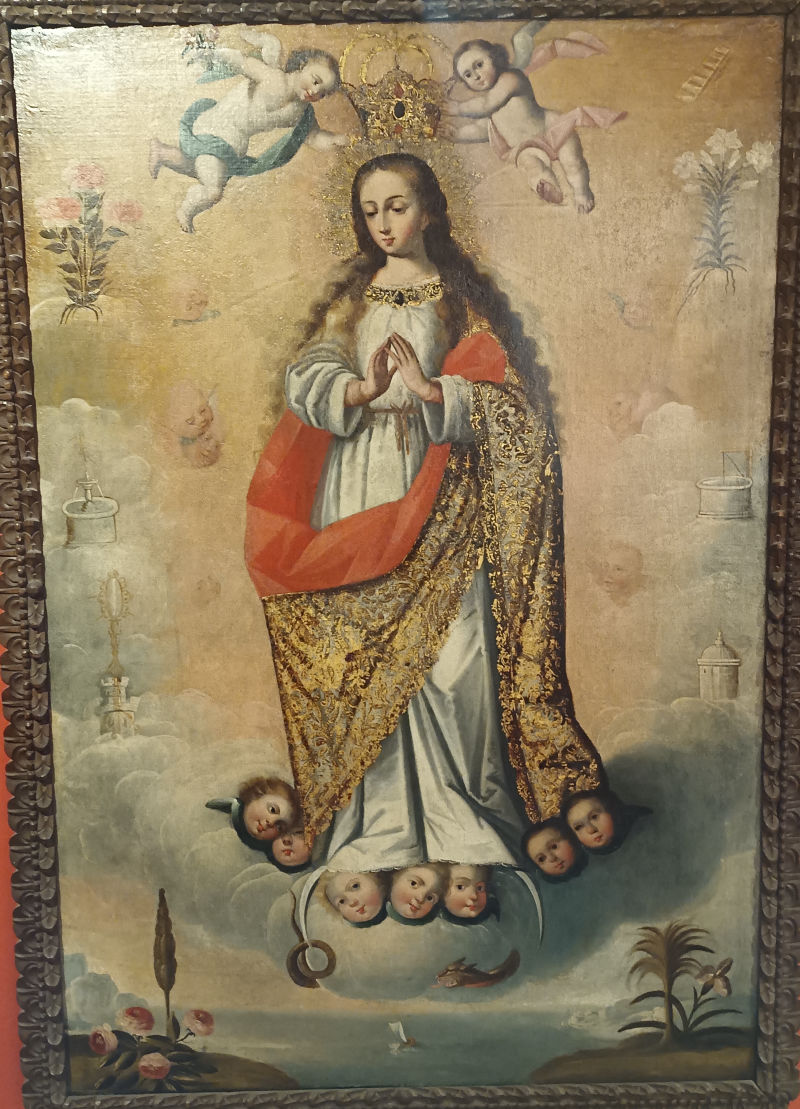 Anónimo cuzqueño, Coronation of the Virgin, c. 18th century
Anónimo cuzqueño, Coronation of the Virgin, c. 18th century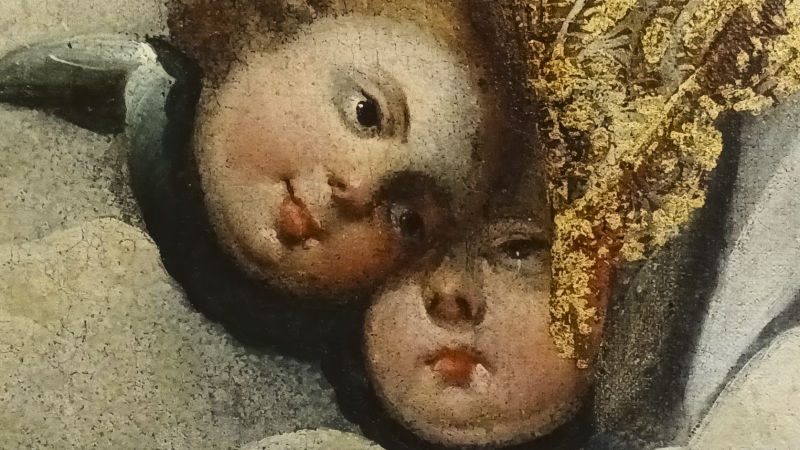
Original, Museum of Pre-Columbian Art of Cusco of Peru. Visited in 2023.
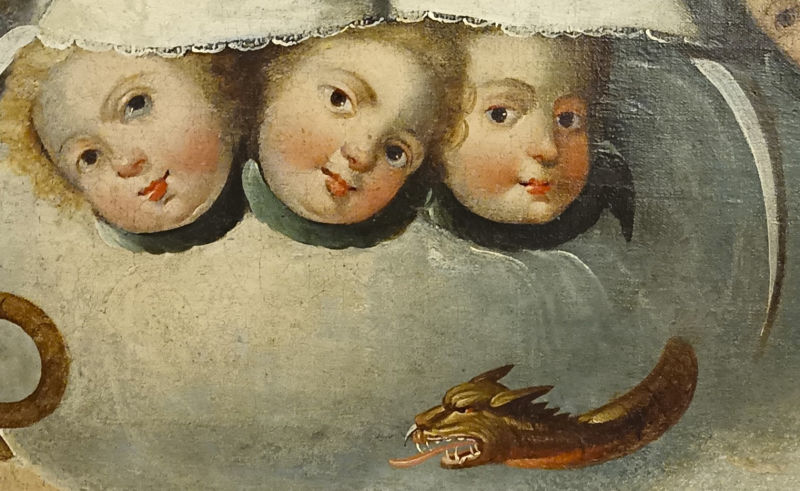 Anónimo cuzqueño, Coronation of the Virgin, c. 18th century
Anónimo cuzqueño, Coronation of the Virgin, c. 18th century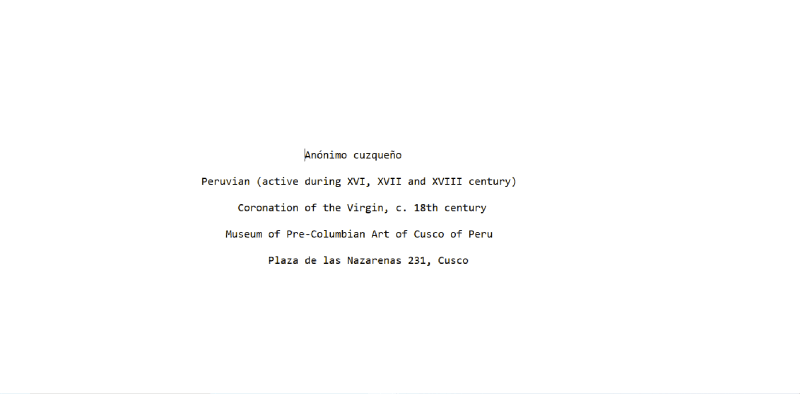 Anónimo cuzqueño, Coronation of the Virgin, c. 18th century
Anónimo cuzqueño, Coronation of the Virgin, c. 18th century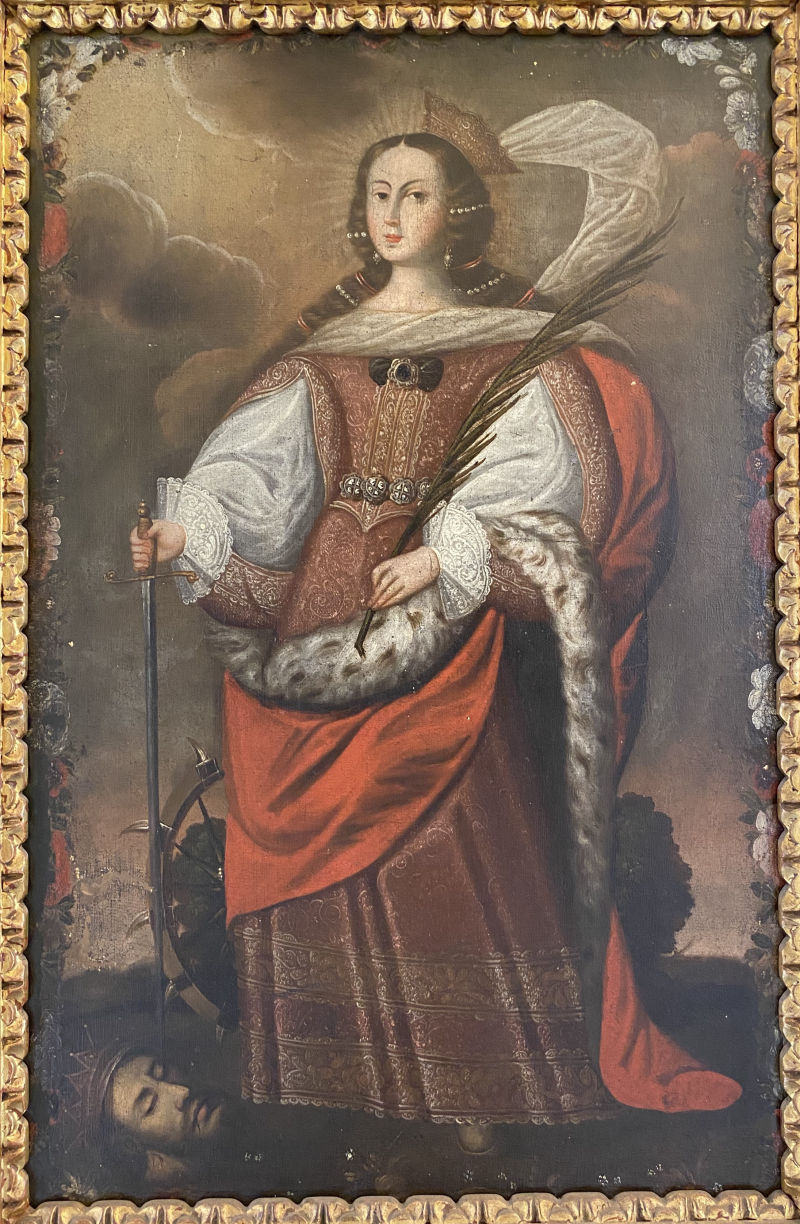 Anónimo cuzqueño, Saint Catherine of Alexandria, Seventeenth century
Anónimo cuzqueño, Saint Catherine of Alexandria, Seventeenth century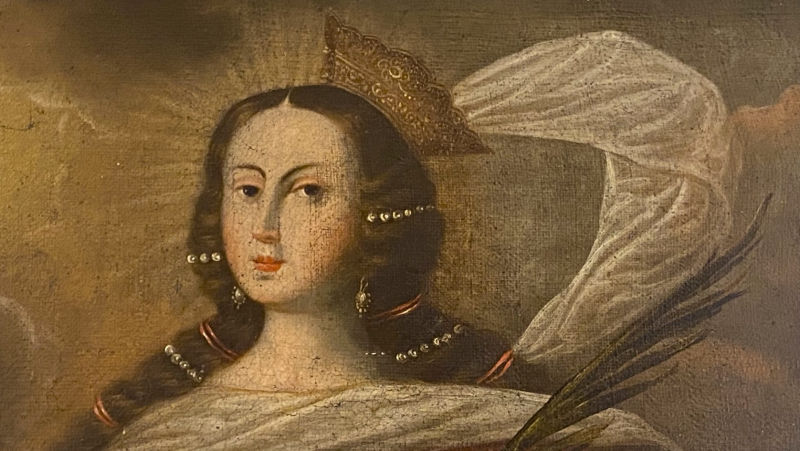 Original, Museo Pedro de Osma, Lima. Visited in 2023.
Original, Museo Pedro de Osma, Lima. Visited in 2023.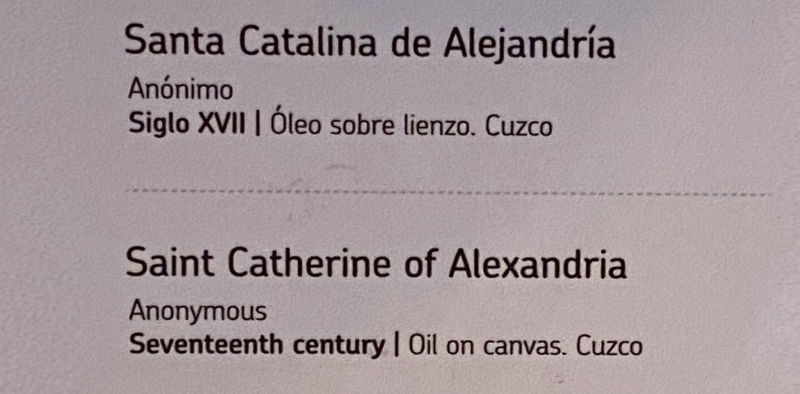 Anónimo cuzqueño, Saint Catherine of Alexandria, Seventeenth century
Anónimo cuzqueño, Saint Catherine of Alexandria, Seventeenth century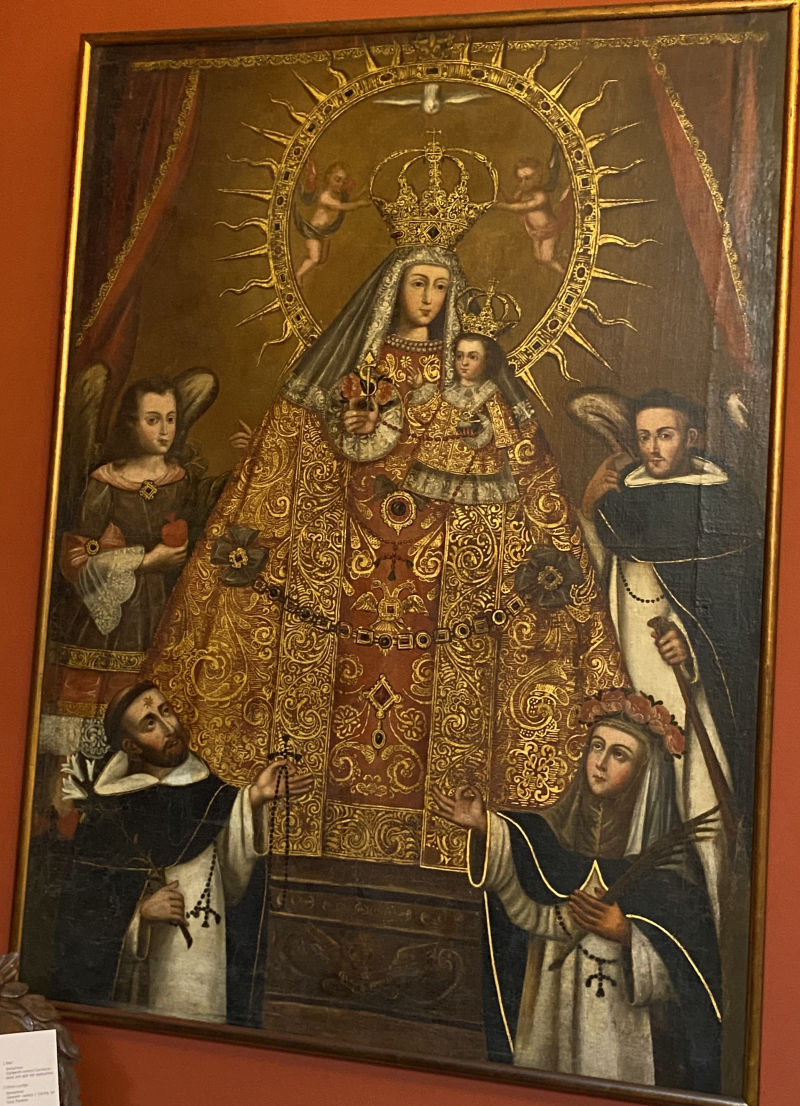 Anónimo cuzqueño, Our lady of the Rosary with Saint and an Angel, XVIII century
Anónimo cuzqueño, Our lady of the Rosary with Saint and an Angel, XVIII century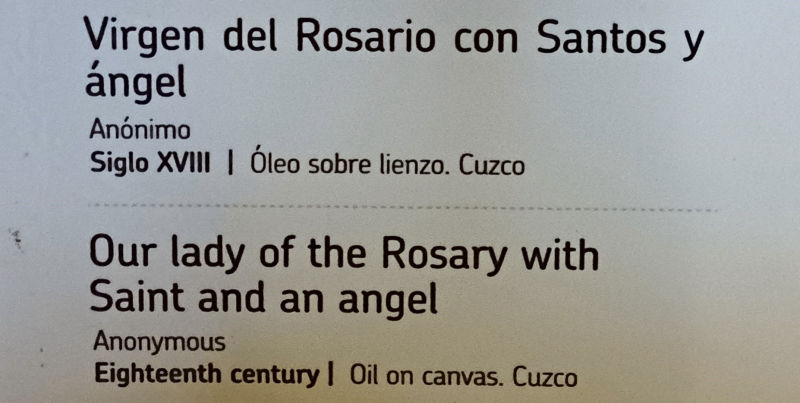 Original, Museo Pedro de Osma, Lima. Visited in 2023.
Original, Museo Pedro de Osma, Lima. Visited in 2023.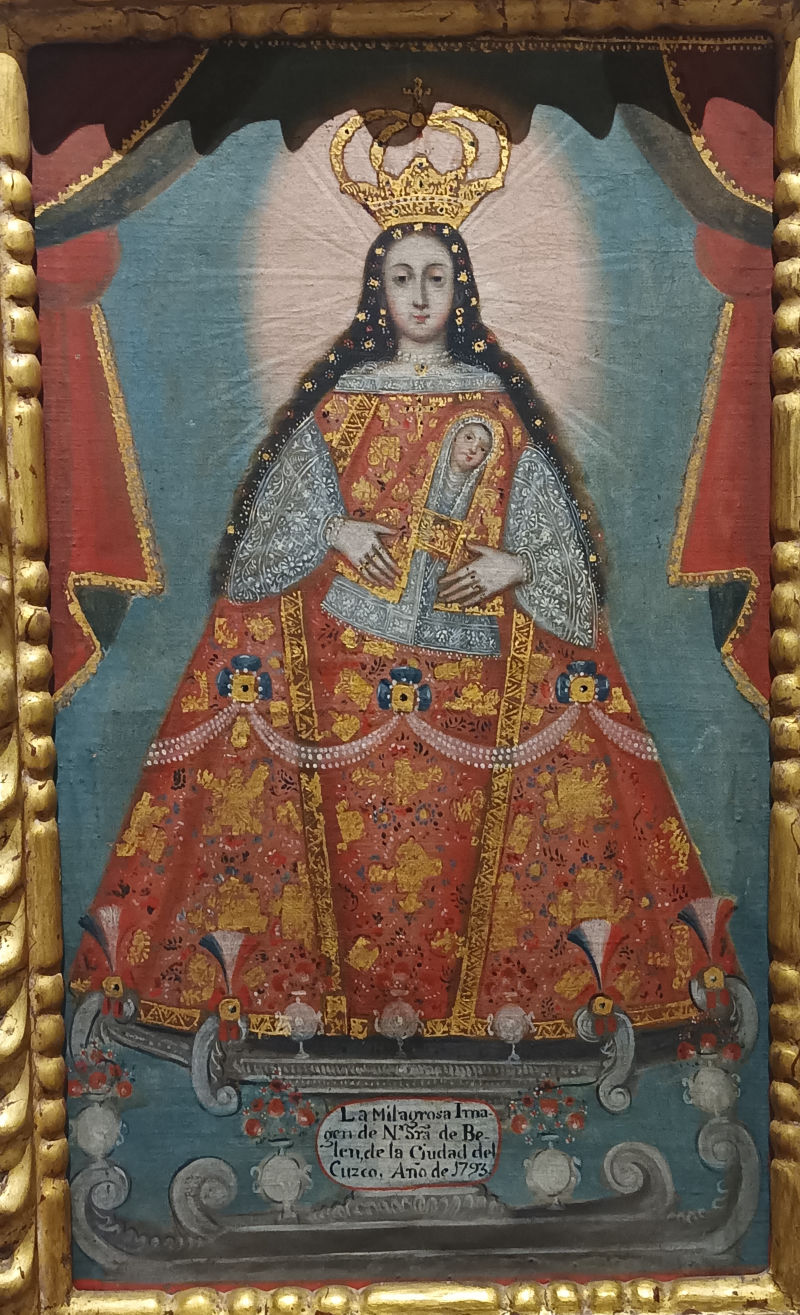 Anónimo cuzqueño, Our lady of Belen
Anónimo cuzqueño, Our lady of Belen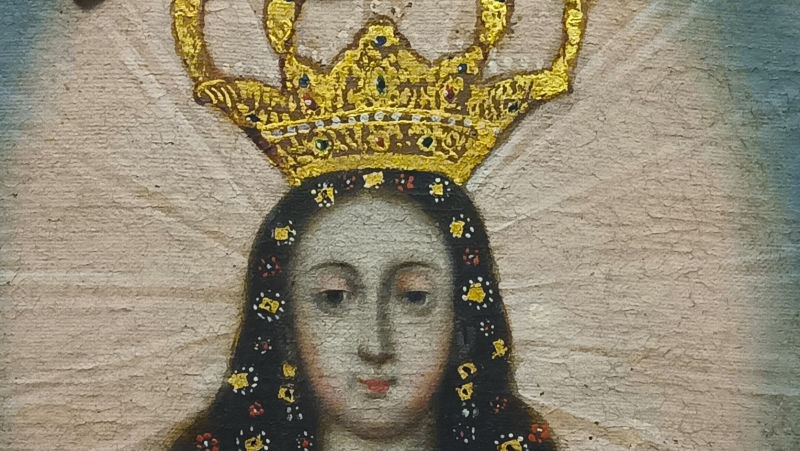 Original, Basilica Cathedral of Lima, Peru. Visited in 2023.
Original, Basilica Cathedral of Lima, Peru. Visited in 2023.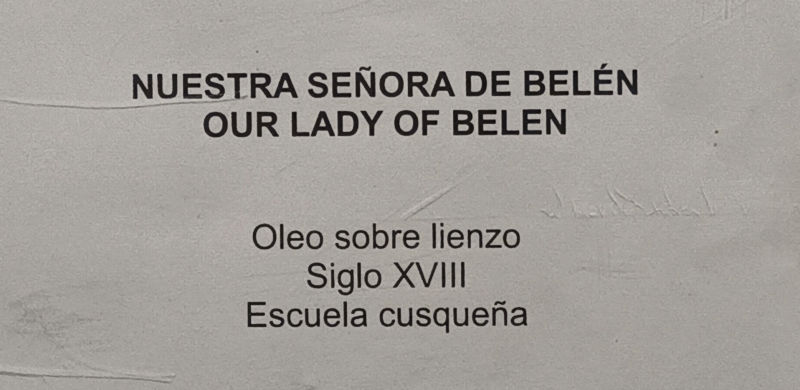 Anónimo cuzqueño, Our lady of Belen
Anónimo cuzqueño, Our lady of Belen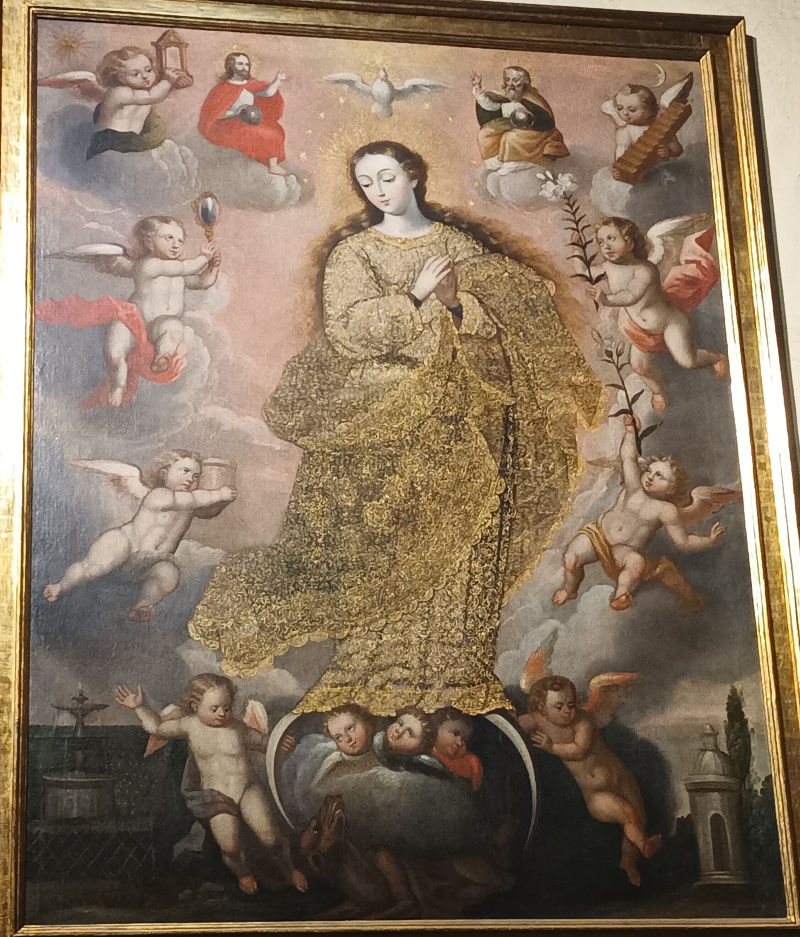 Anónimo cuzqueño, The Immaculate Conception of Virgin Mary
Anónimo cuzqueño, The Immaculate Conception of Virgin Mary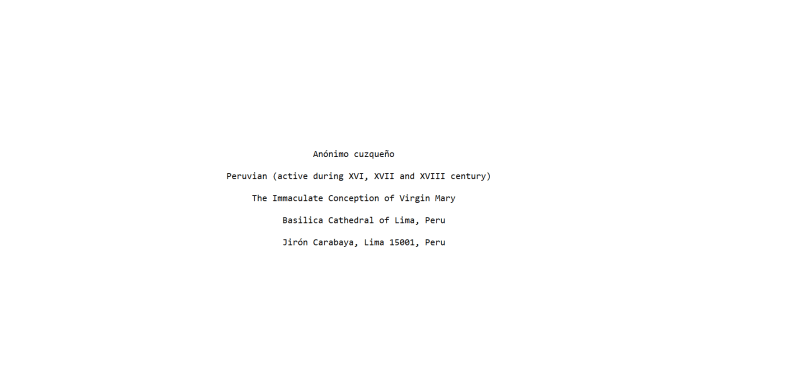 Original, Basilica Cathedral of Lima, Peru. Visited in 2023.
Original, Basilica Cathedral of Lima, Peru. Visited in 2023.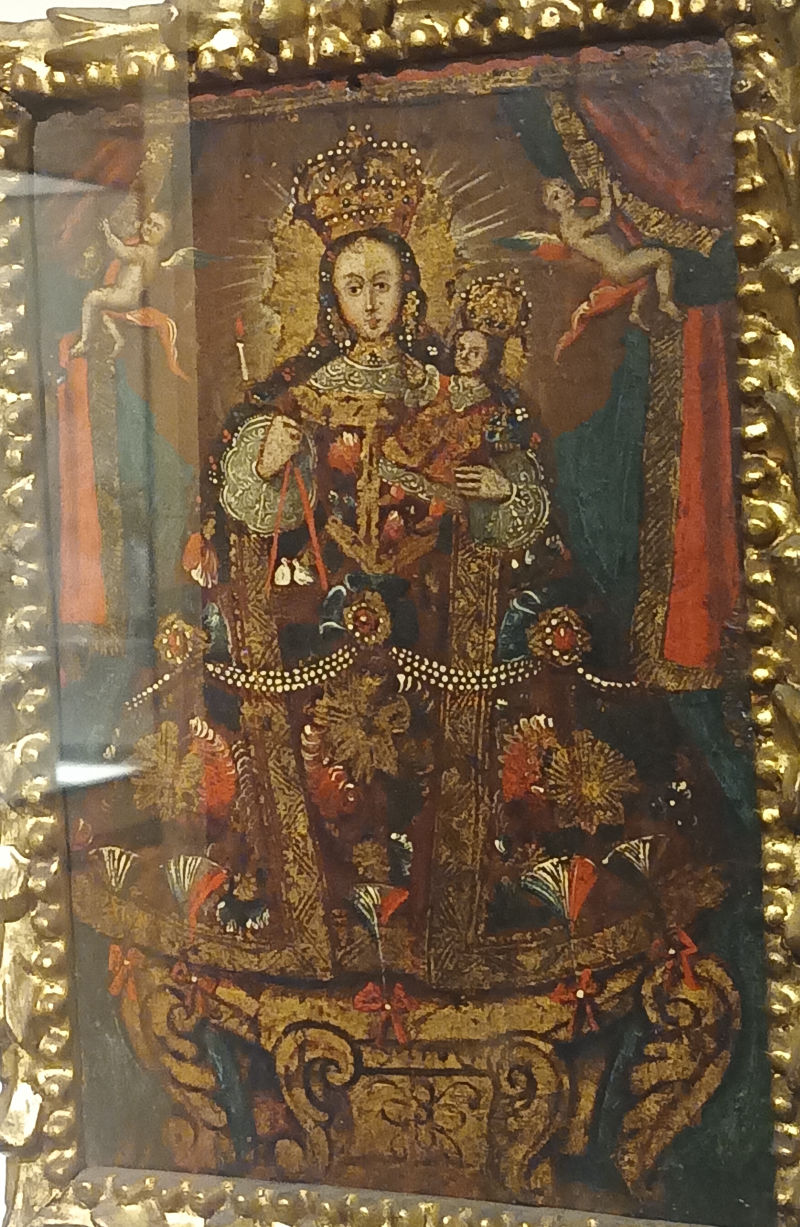 Anónimo cuzqueño, Virgin of Candlemass, Eighteenth century
Anónimo cuzqueño, Virgin of Candlemass, Eighteenth century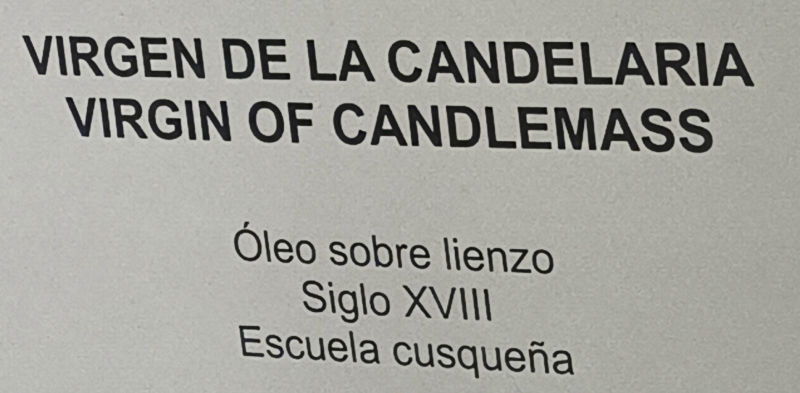 Original, Basilica Cathedral of Lima, Peru. Visited in 2023.
Original, Basilica Cathedral of Lima, Peru. Visited in 2023.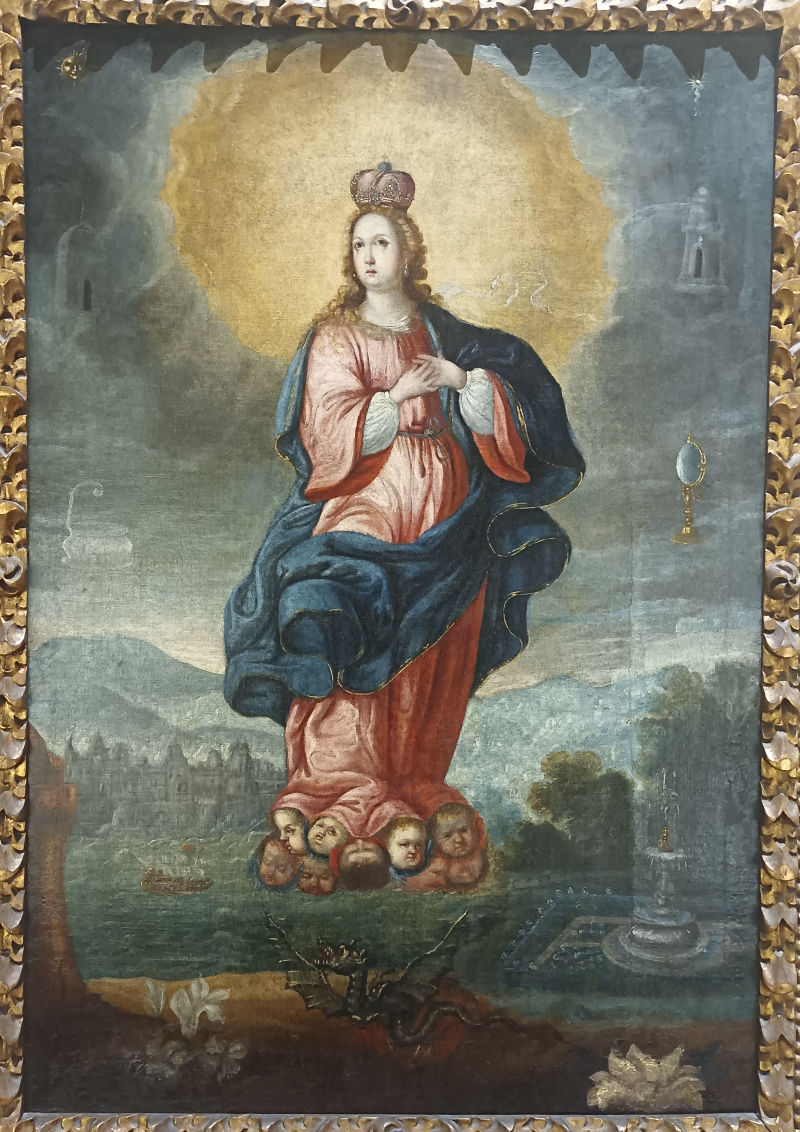 Anónimo cuzqueño, Our Lady of the Good Air, Eighteenth century
Anónimo cuzqueño, Our Lady of the Good Air, Eighteenth century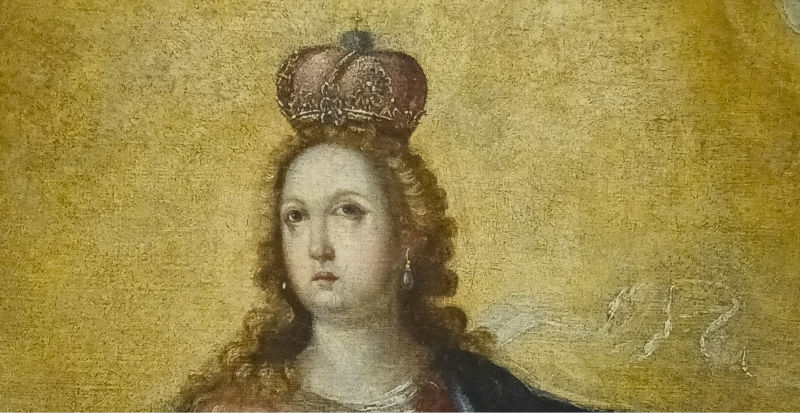 Original, Basilica Cathedral of Lima, Peru. Visited in 2023.
Original, Basilica Cathedral of Lima, Peru. Visited in 2023.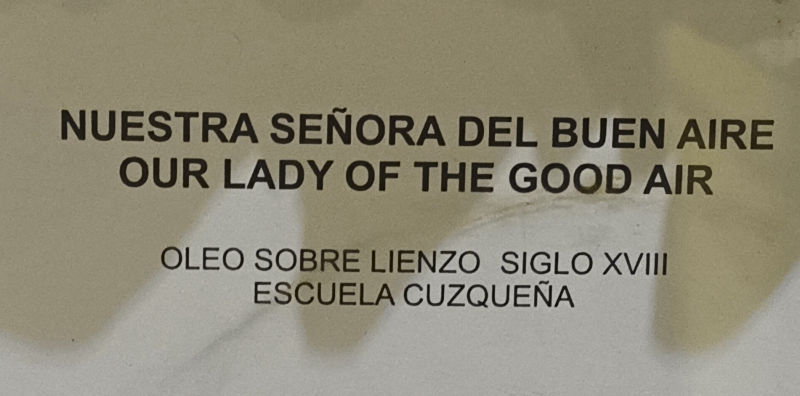 Anónimo cuzqueño, Our Lady of the Good Air, Eighteenth century
Anónimo cuzqueño, Our Lady of the Good Air, Eighteenth century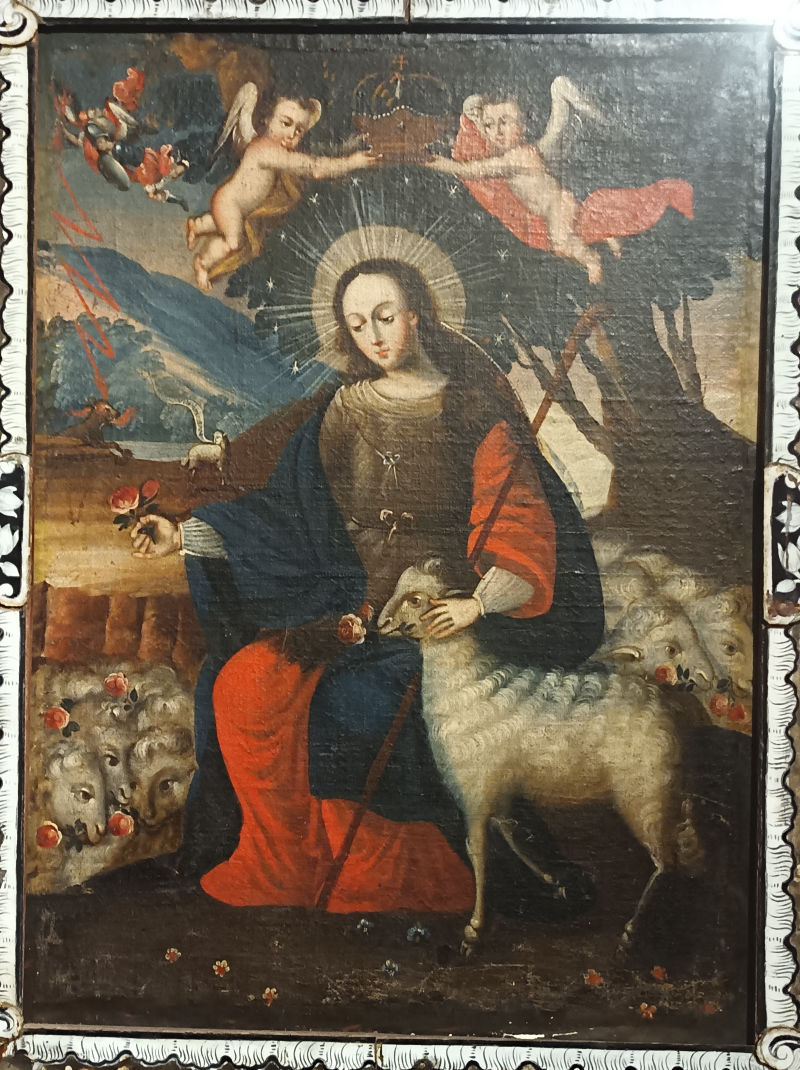 Anónimo cuzqueño, The Divine Shepherdess, Eighteenth century
Anónimo cuzqueño, The Divine Shepherdess, Eighteenth century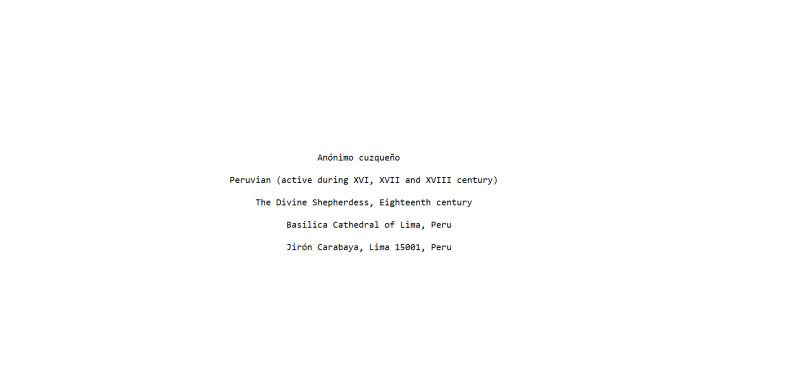 Original, Basilica Cathedral of Lima, Peru. Visited in 2023.
Original, Basilica Cathedral of Lima, Peru. Visited in 2023.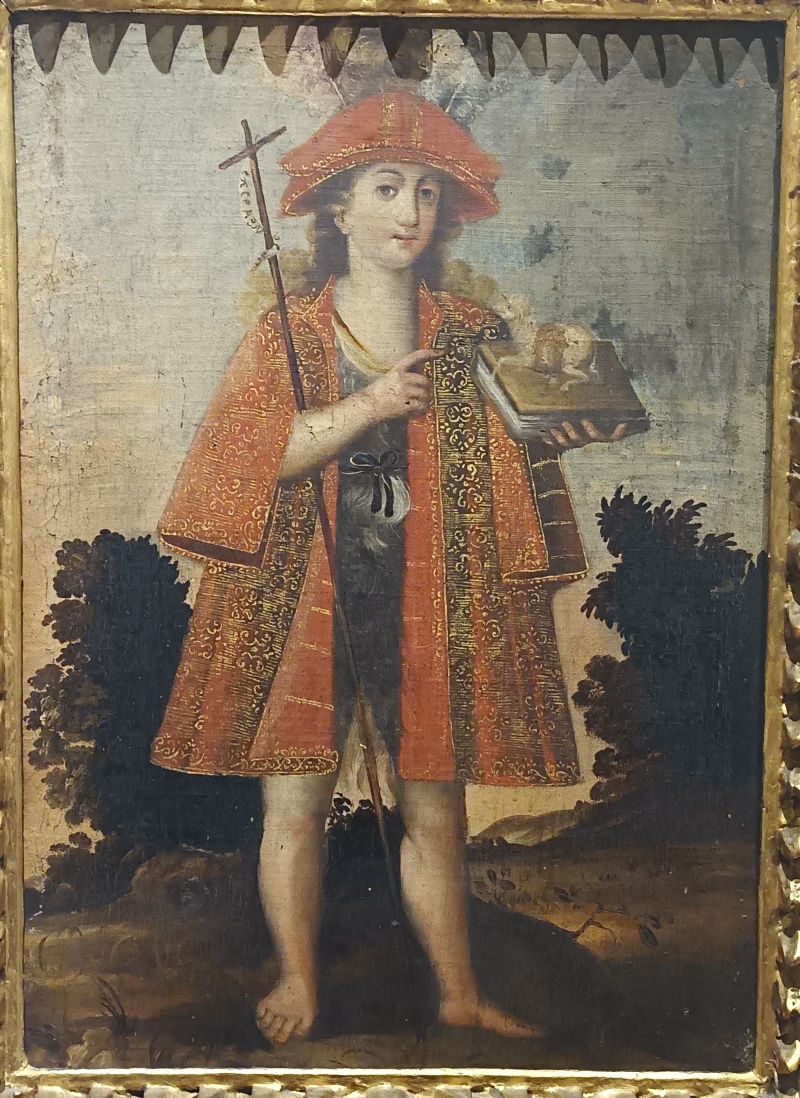 Anónimo cuzqueño, Saint John de Baptist (The Child), Eighteenth century
Anónimo cuzqueño, Saint John de Baptist (The Child), Eighteenth century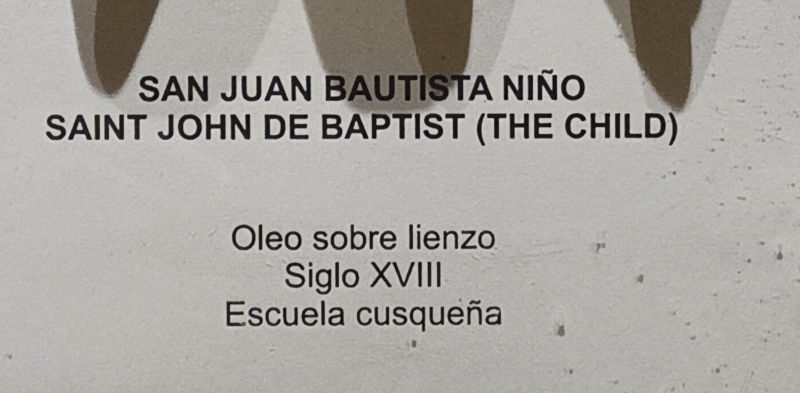 Original, Basilica Cathedral of Lima, Peru. Visited in 2023.
Original, Basilica Cathedral of Lima, Peru. Visited in 2023.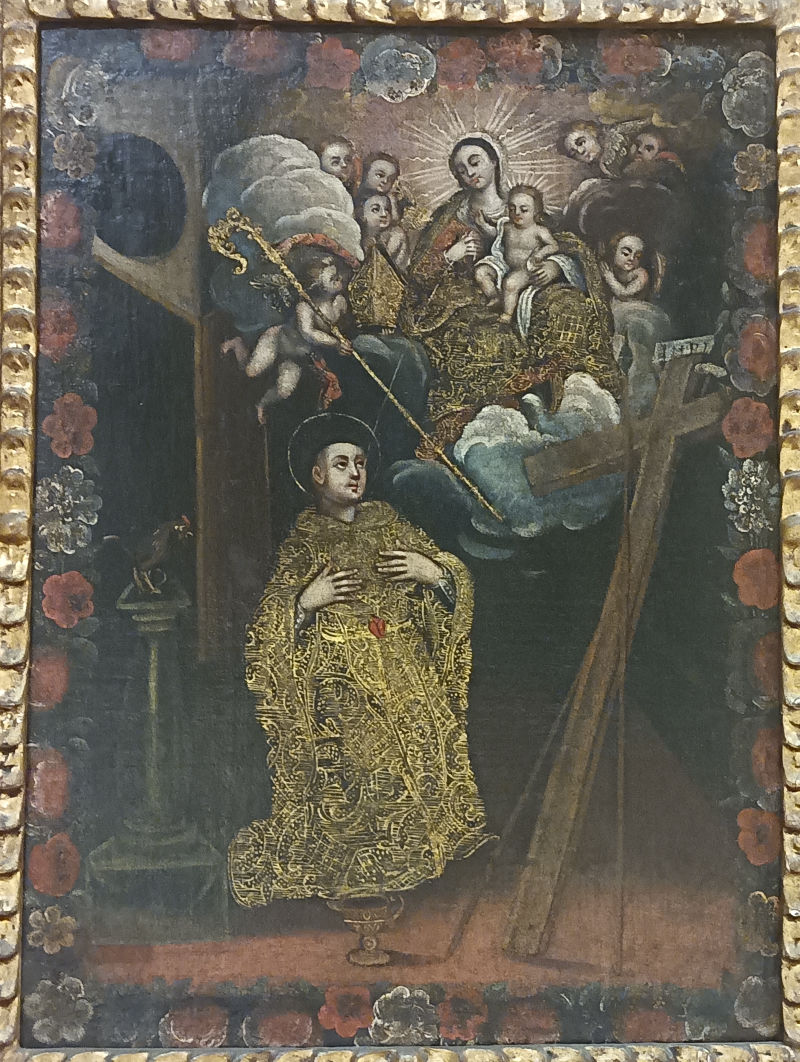 Anónimo cuzqueño, Saint Bernardo de Clarabal, Eighteenth century
Anónimo cuzqueño, Saint Bernardo de Clarabal, Eighteenth century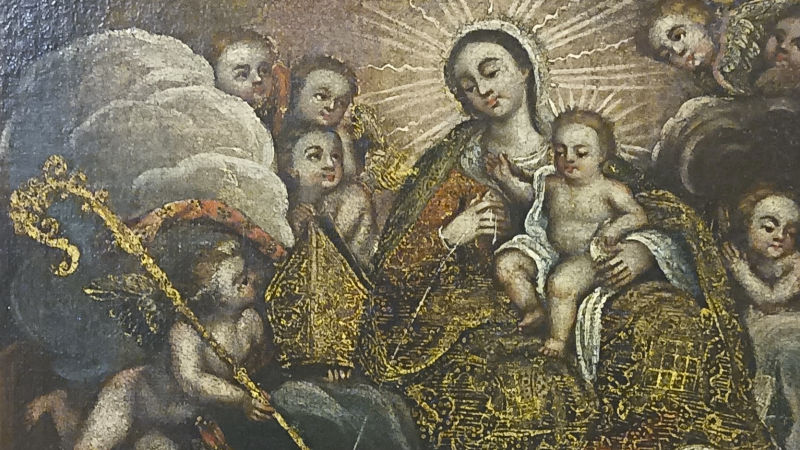 Original, Basilica Cathedral of Lima, Peru. Visited in 2023.
Original, Basilica Cathedral of Lima, Peru. Visited in 2023.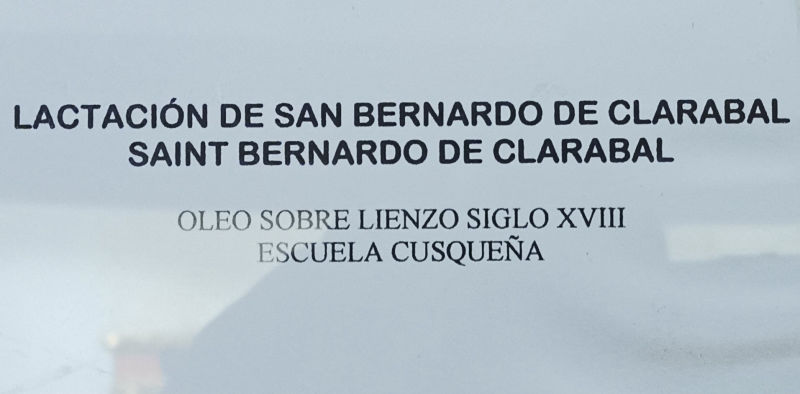 Anónimo cuzqueño, Saint Bernardo de Clarabal, Eighteenth century
Anónimo cuzqueño, Saint Bernardo de Clarabal, Eighteenth century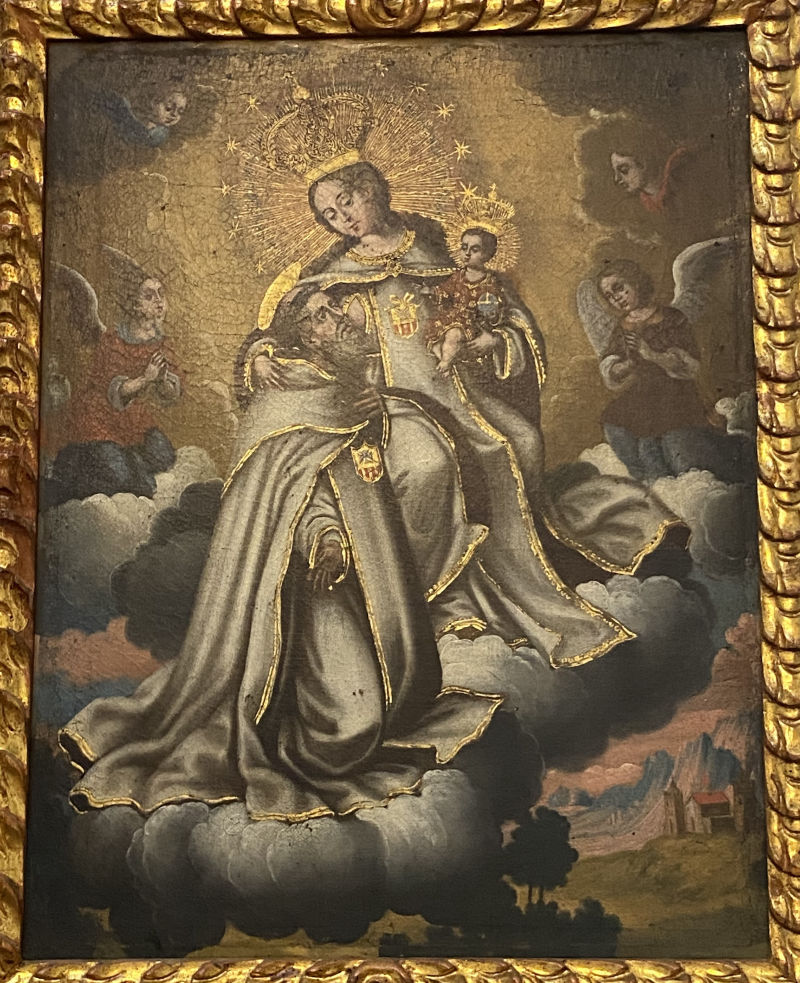 Anónimo cuzqueño, Lady of Mercy with Saint Peter Nolasco, Eighteenth century
Anónimo cuzqueño, Lady of Mercy with Saint Peter Nolasco, Eighteenth century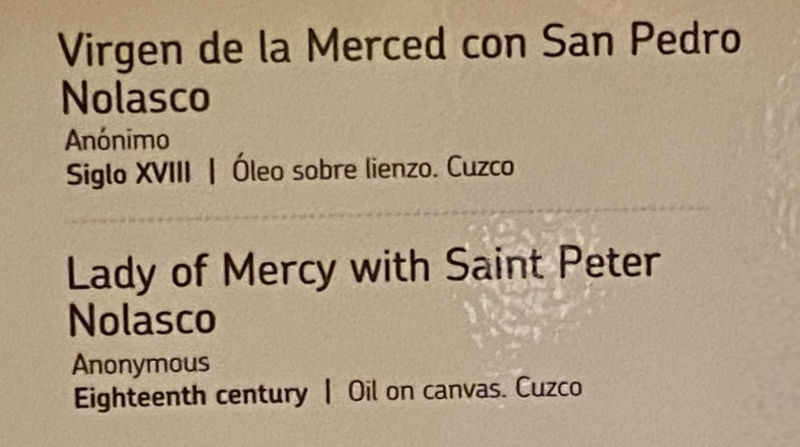 Original, Museo Pedro de Osma, Lima. Visited in 2023.
Original, Museo Pedro de Osma, Lima. Visited in 2023.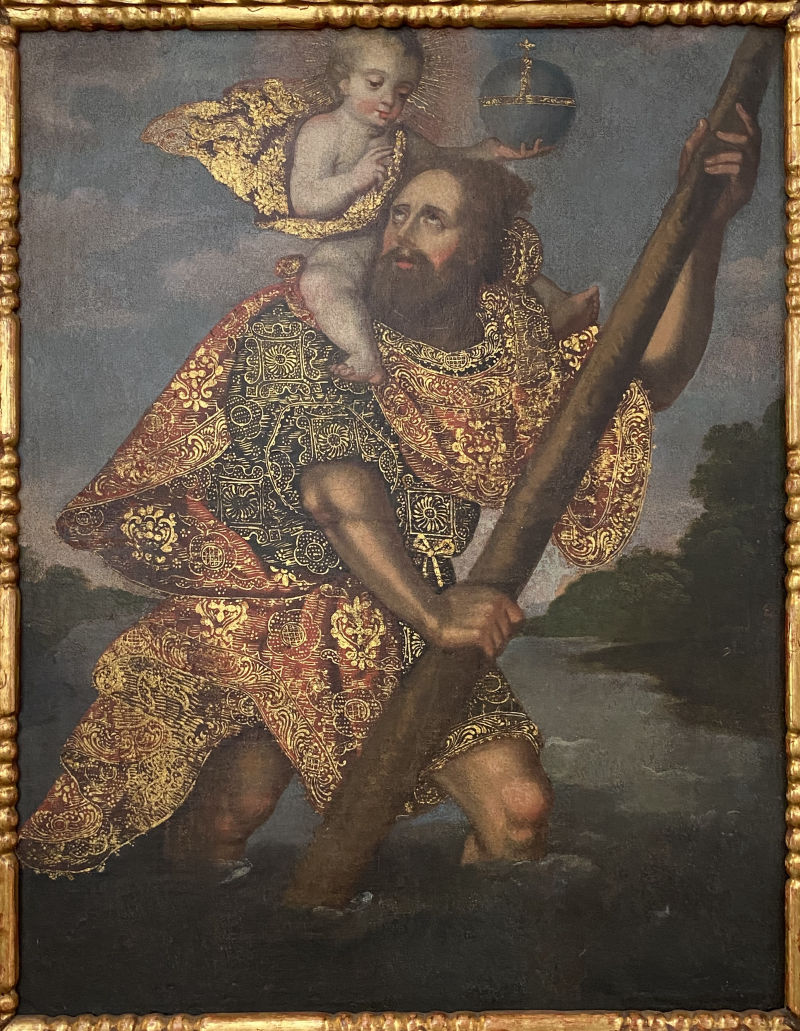 Anónimo cuzqueño, Saint Christopher, 18th century
Anónimo cuzqueño, Saint Christopher, 18th century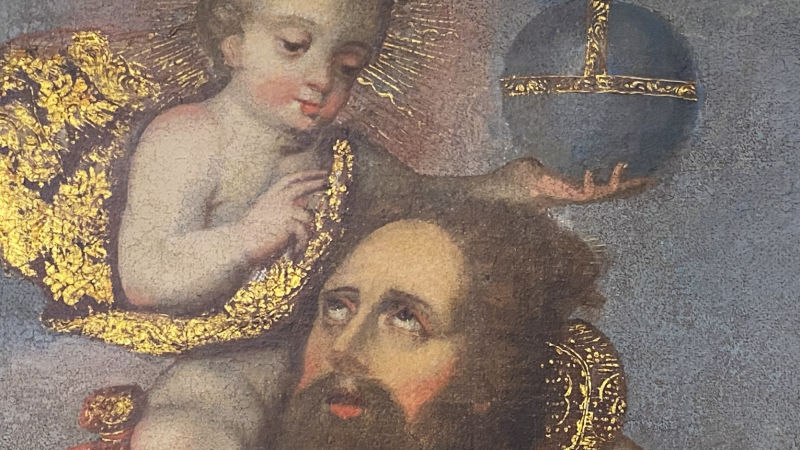
Original, Museo Pedro de Osma, Lima. Visited in 2023.
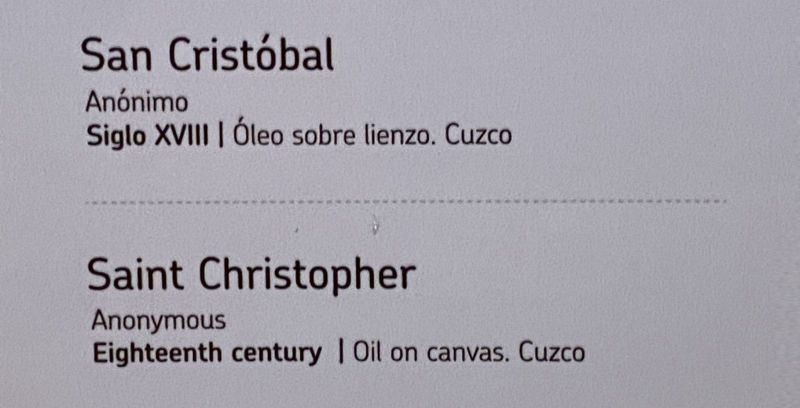 Anónimo cuzqueño, Saint Christopher, 18th century
Anónimo cuzqueño, Saint Christopher, 18th century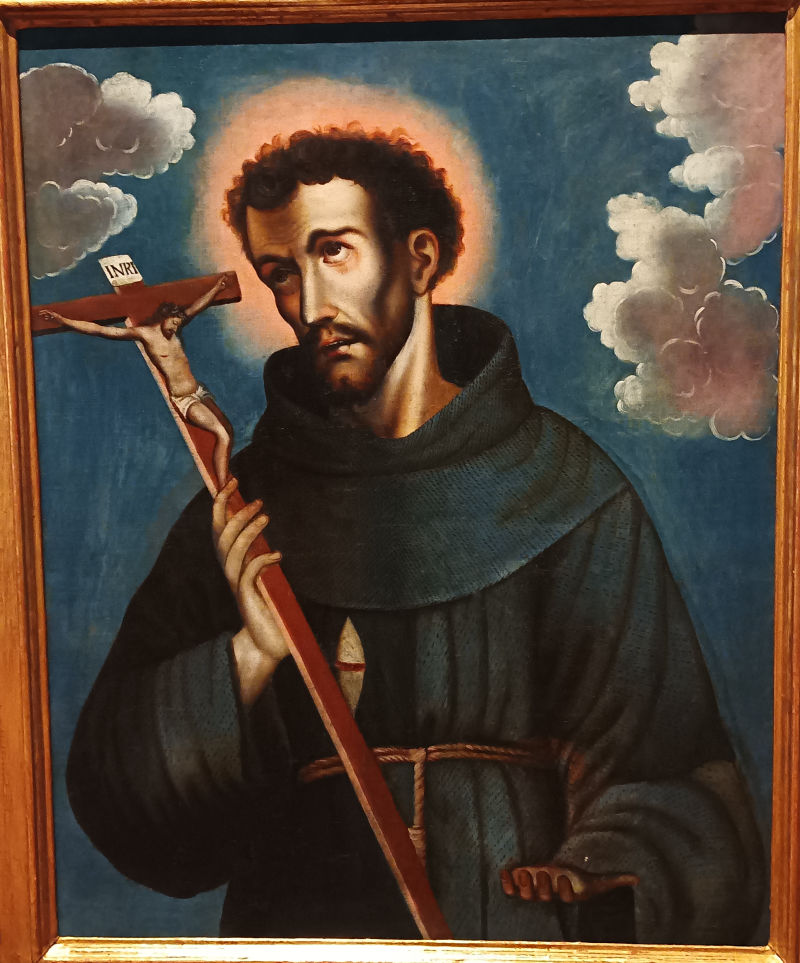 Anónimo cuzqueño, Saint Francis of Assisi in Prayer, ca. 1630-1650
Anónimo cuzqueño, Saint Francis of Assisi in Prayer, ca. 1630-1650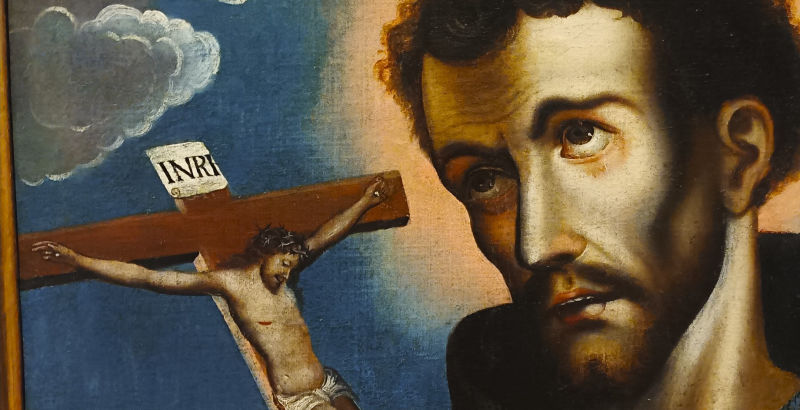
Original, Museo de Arte de Lima, Peru. Visited in 2023.
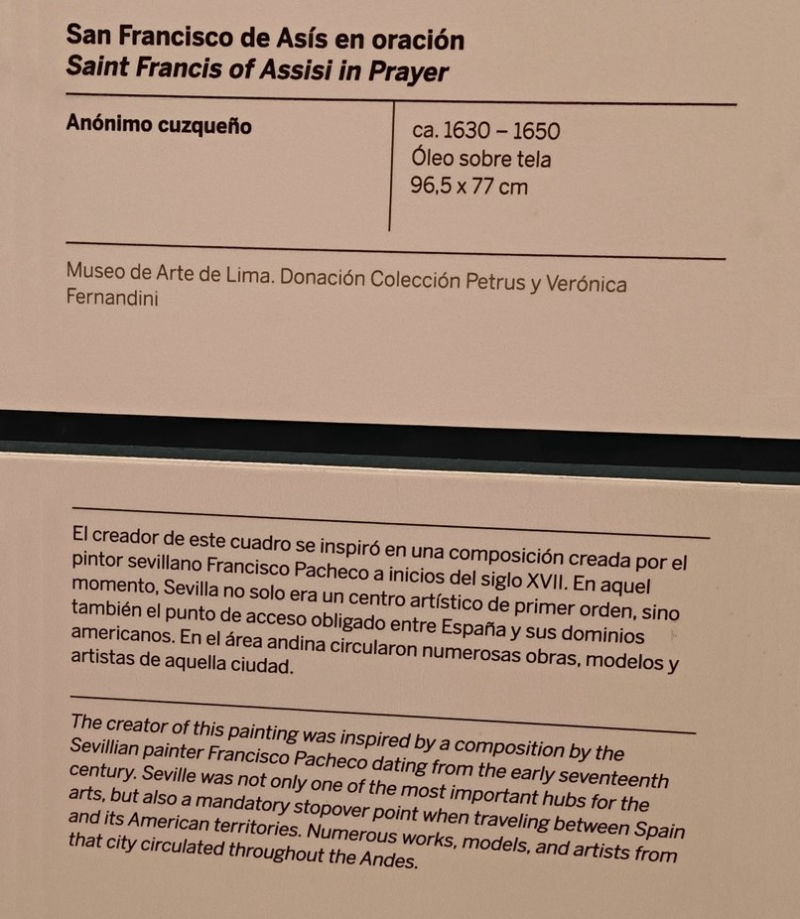 Anónimo cuzqueño, Saint Francis of Assisi in Prayer, ca. 1630-1650
Anónimo cuzqueño, Saint Francis of Assisi in Prayer, ca. 1630-1650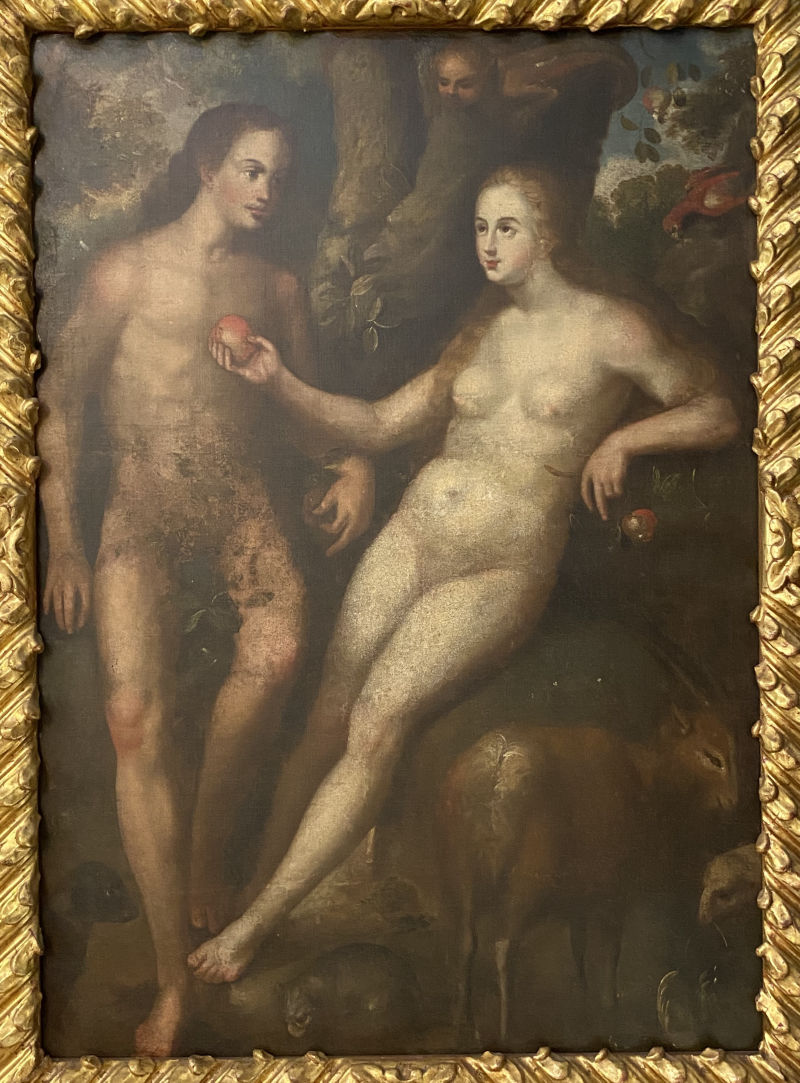 Anónimo cuzqueño, Adam and Eve, 17th century
Anónimo cuzqueño, Adam and Eve, 17th century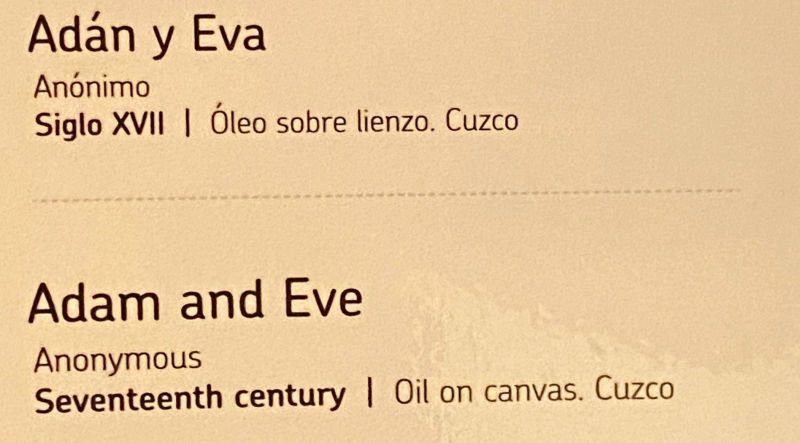
Original, Museo Pedro de Osma, Lima. Visited in 2023.
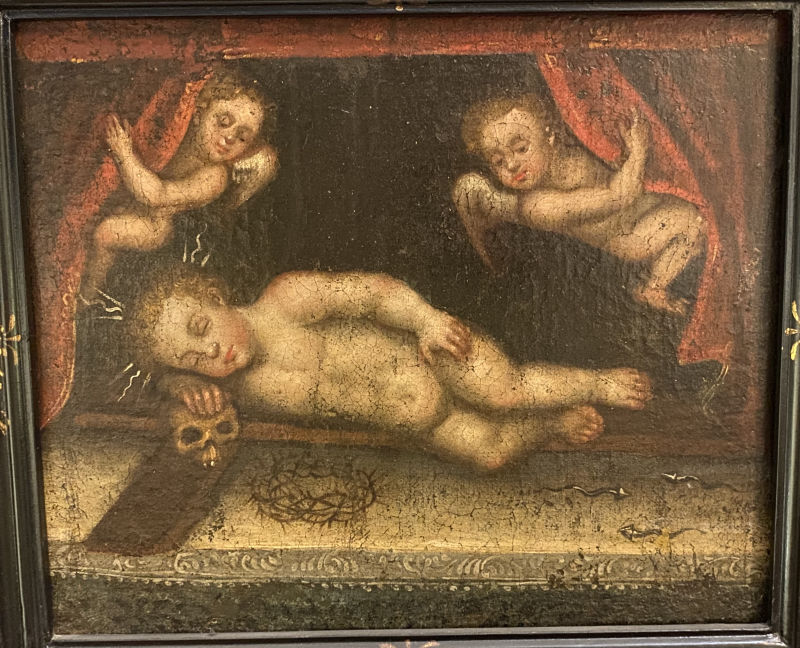 Anónimo cuzqueño Peruvian, Premonition of Christ`s Passion, 18th century
Anónimo cuzqueño Peruvian, Premonition of Christ`s Passion, 18th century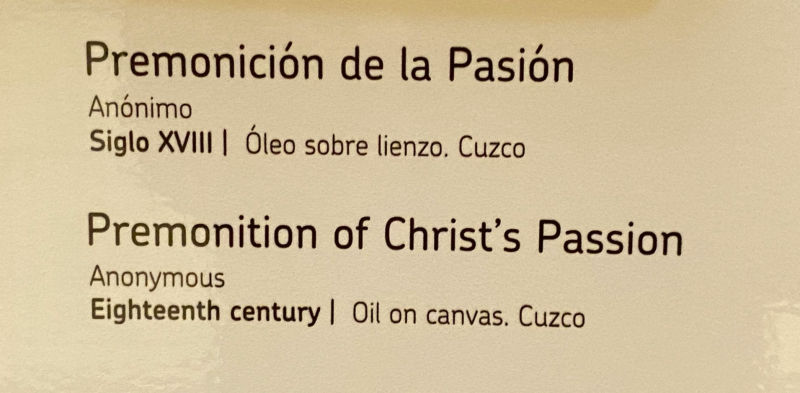 Original, Museo Pedro de Osma, Lima. Visited in 2023.
Original, Museo Pedro de Osma, Lima. Visited in 2023.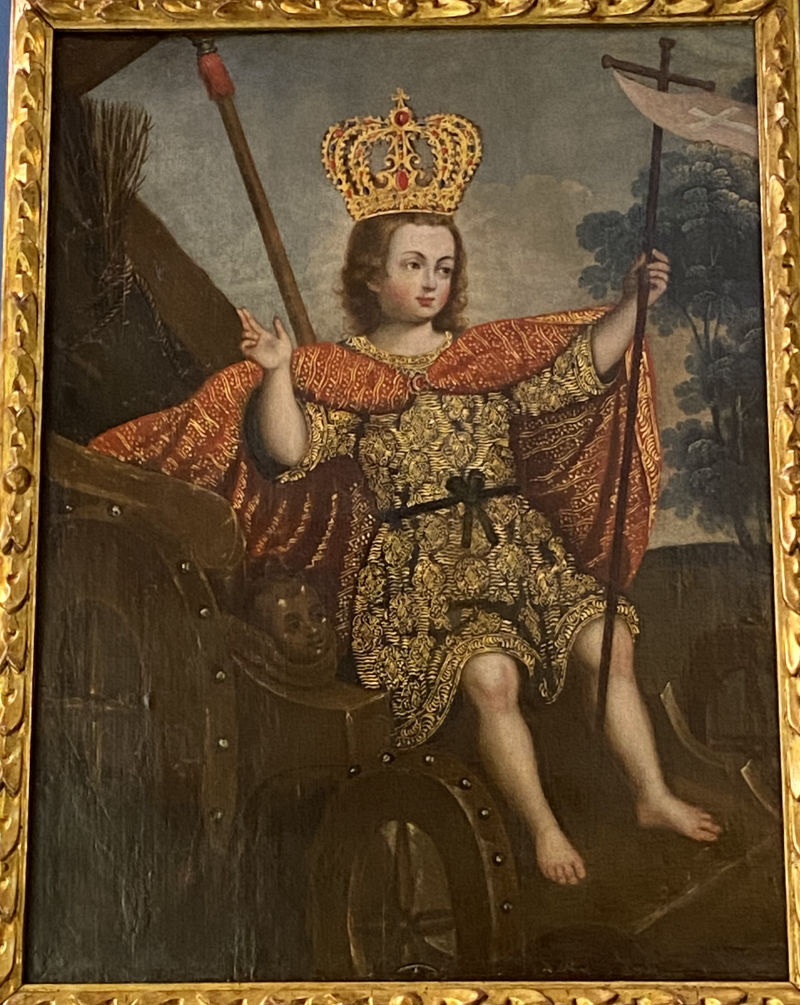 Anónimo cuzqueño, Baby Jesus Triumphant, 18th century
Anónimo cuzqueño, Baby Jesus Triumphant, 18th century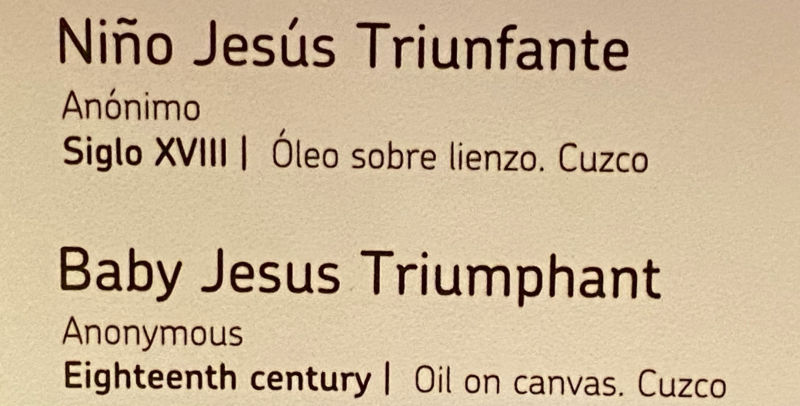 Original, Museo Pedro de Osma, Lima. Visited in 2023.
Original, Museo Pedro de Osma, Lima. Visited in 2023.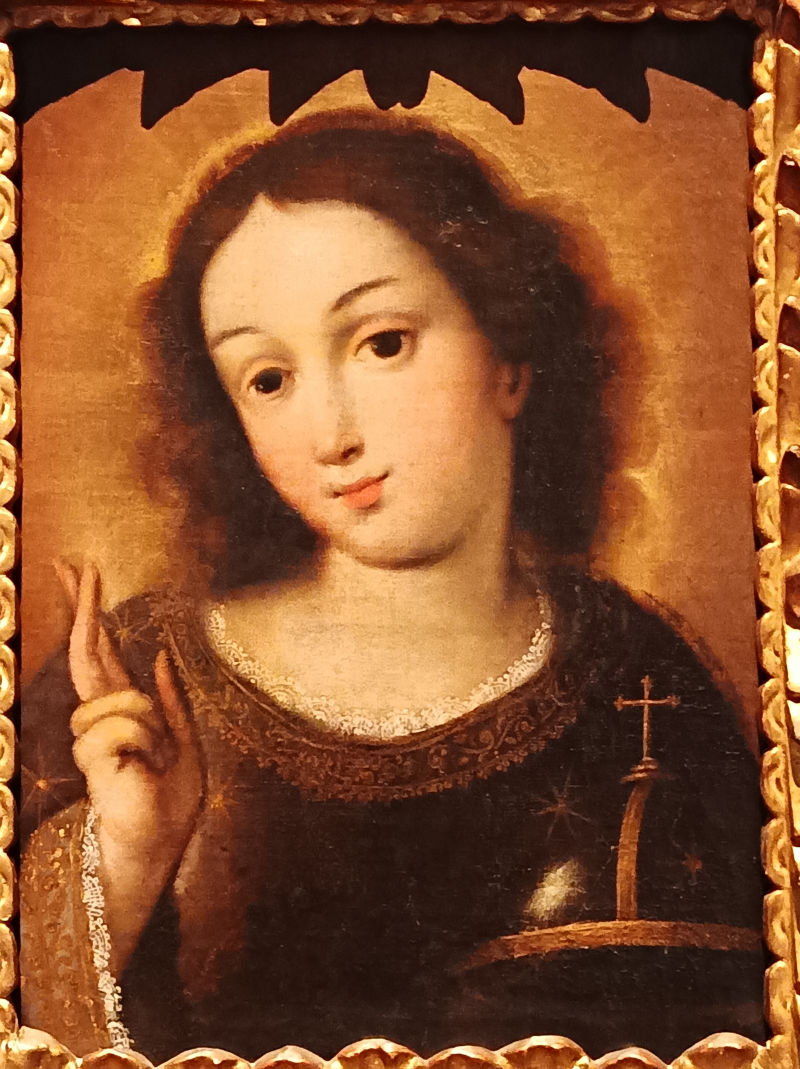 Anónimo cuzqueño, Jesus, Savior of the World, ca. 1660-1680
Anónimo cuzqueño, Jesus, Savior of the World, ca. 1660-1680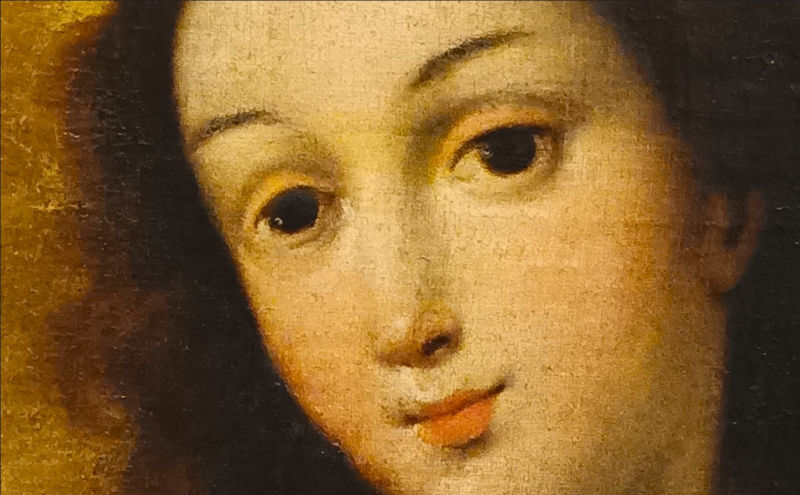
Original, Museo de Arte de Lima, Peru. Visited in 2023.
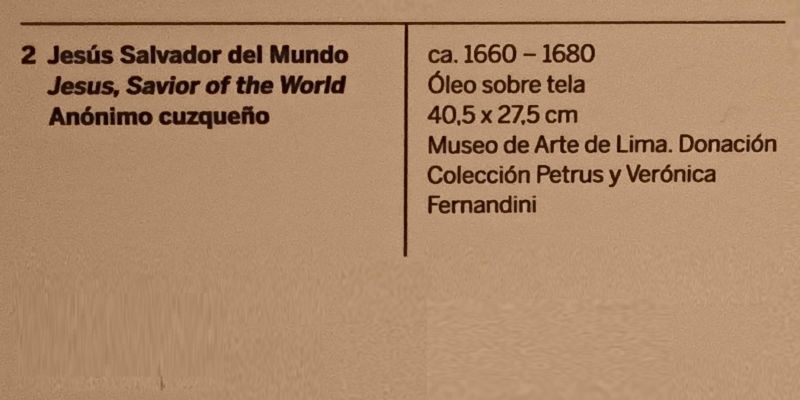 Anónimo cuzqueño, Jesus, Savior of the World, ca. 1660-1680
Anónimo cuzqueño, Jesus, Savior of the World, ca. 1660-1680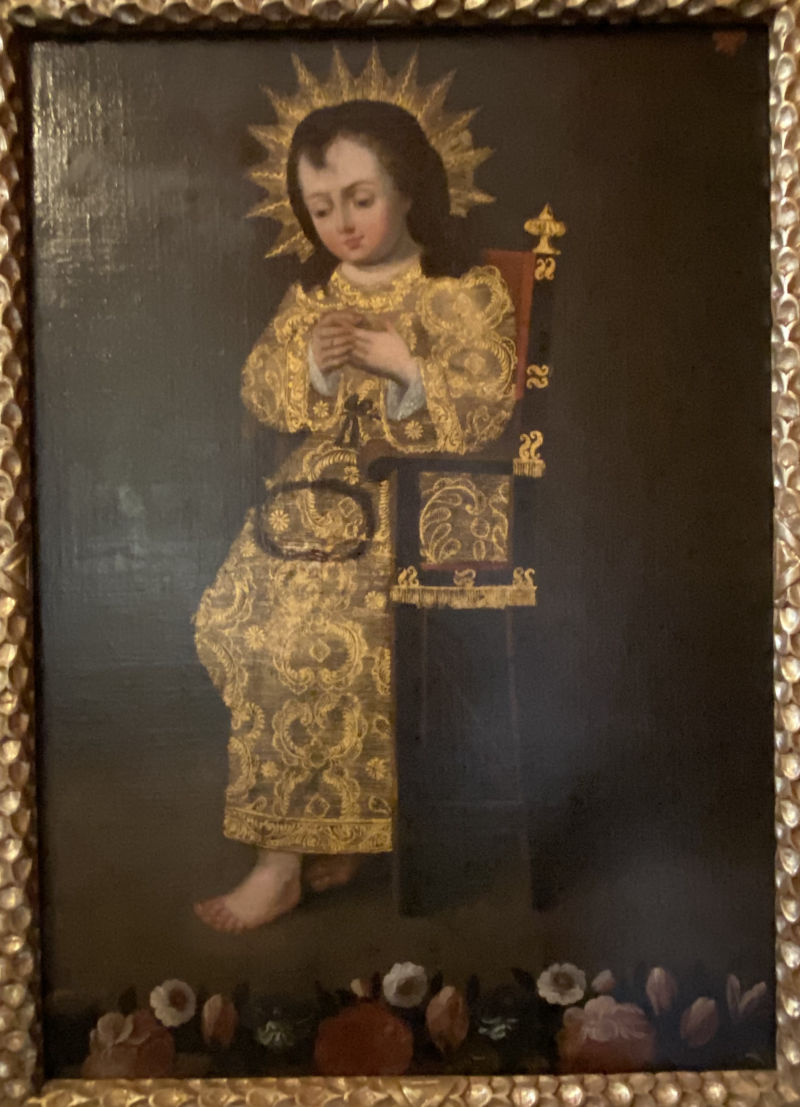 Anónimo cuzqueño, Premonition of Christ`s Passion, Eighteenth century
Anónimo cuzqueño, Premonition of Christ`s Passion, Eighteenth century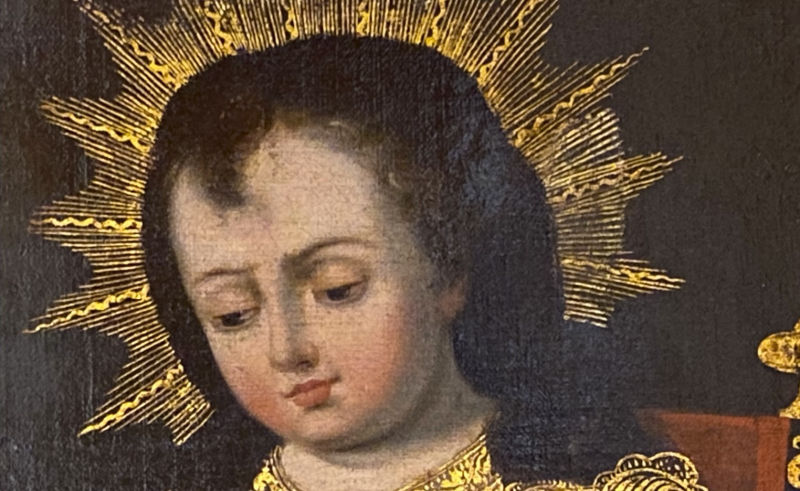 Original, Museo Pedro de Osma, Lima. Visited in 2023.
Original, Museo Pedro de Osma, Lima. Visited in 2023.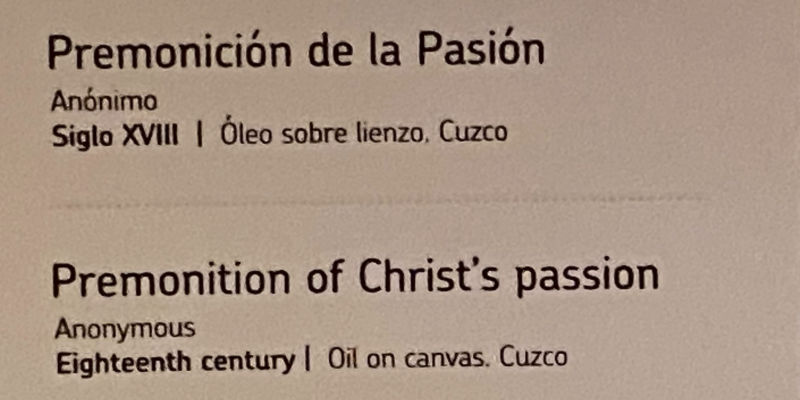 Anónimo cuzqueño, Premonition of Christ`s Passion, Eighteenth century
Anónimo cuzqueño, Premonition of Christ`s Passion, Eighteenth century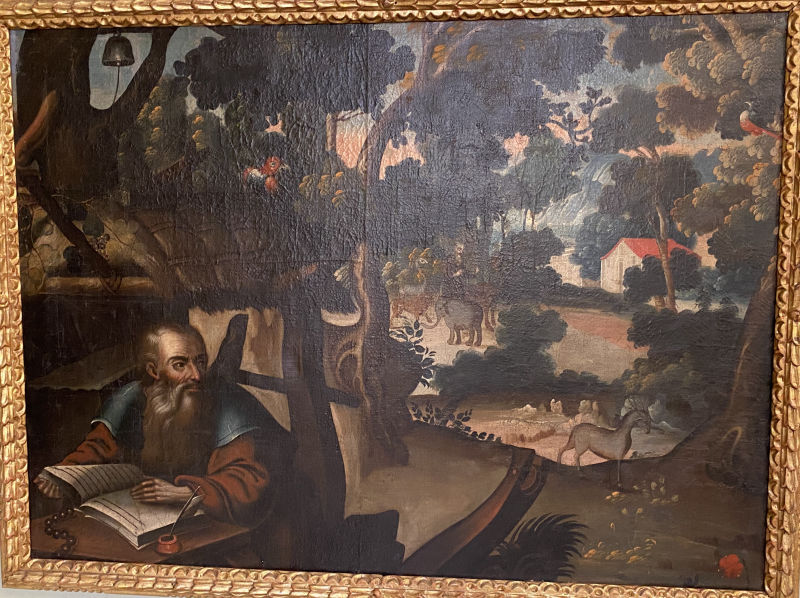 Anónimo cuzqueño, St. Hermit, Eighteenth century
Anónimo cuzqueño, St. Hermit, Eighteenth century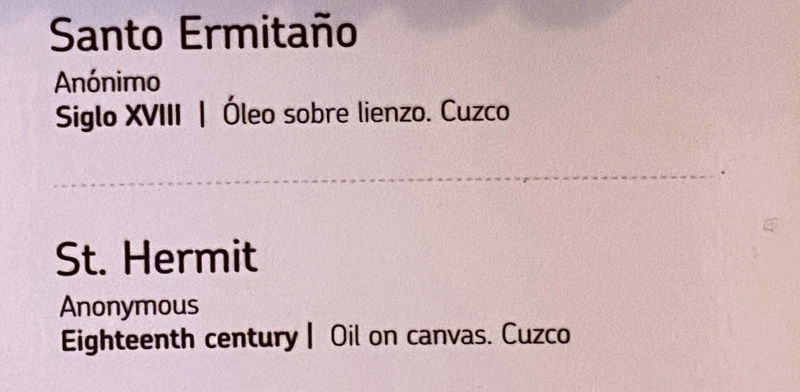 Original, Museo Pedro de Osma, Lima. Visited in 2023.
Original, Museo Pedro de Osma, Lima. Visited in 2023.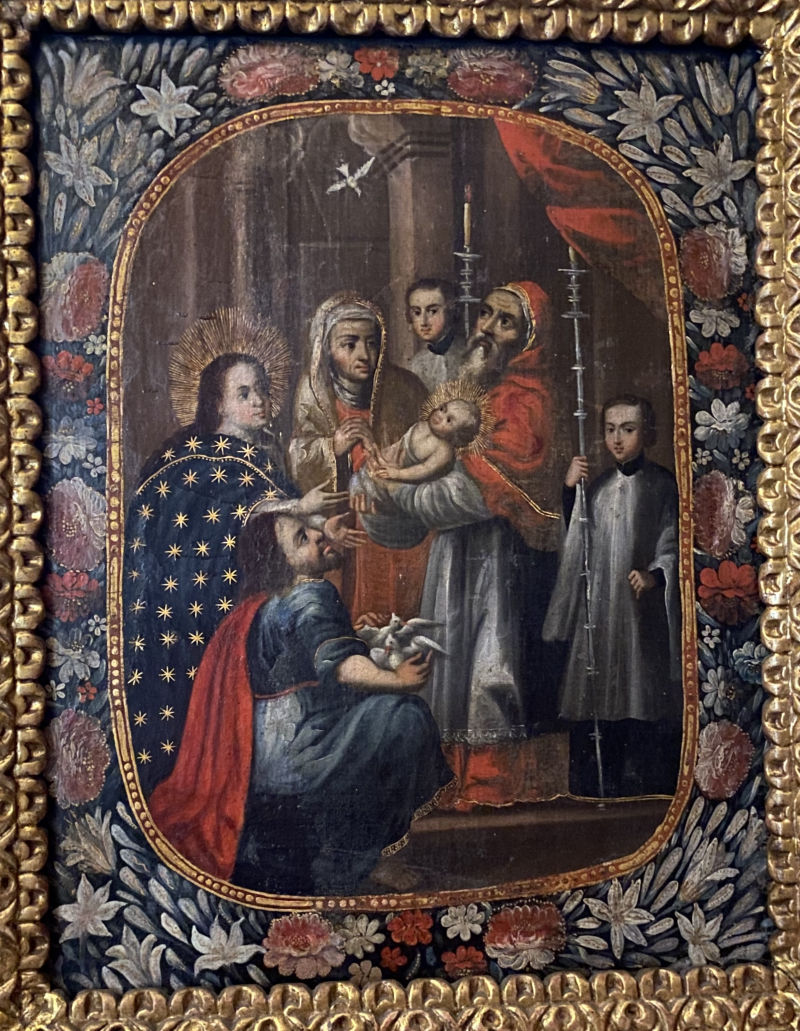 Anónimo cuzqueño, Presentation of the Child to the Temple, Eighteenth century
Anónimo cuzqueño, Presentation of the Child to the Temple, Eighteenth century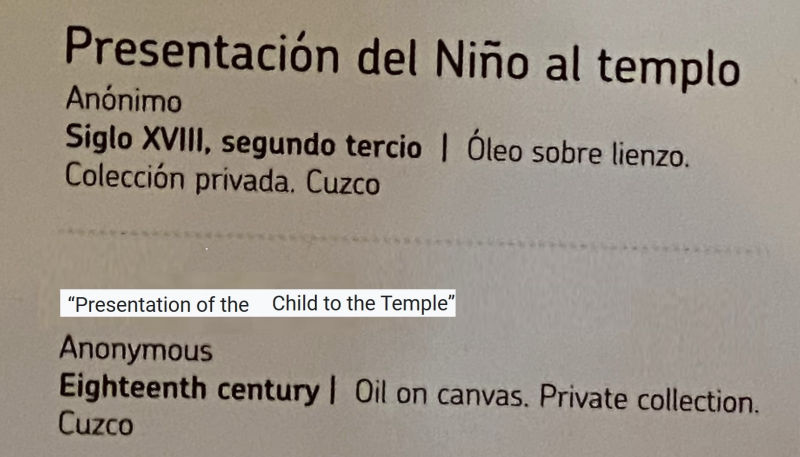 Original, Museo Pedro de Osma, Lima. Visited in 2023.
Original, Museo Pedro de Osma, Lima. Visited in 2023.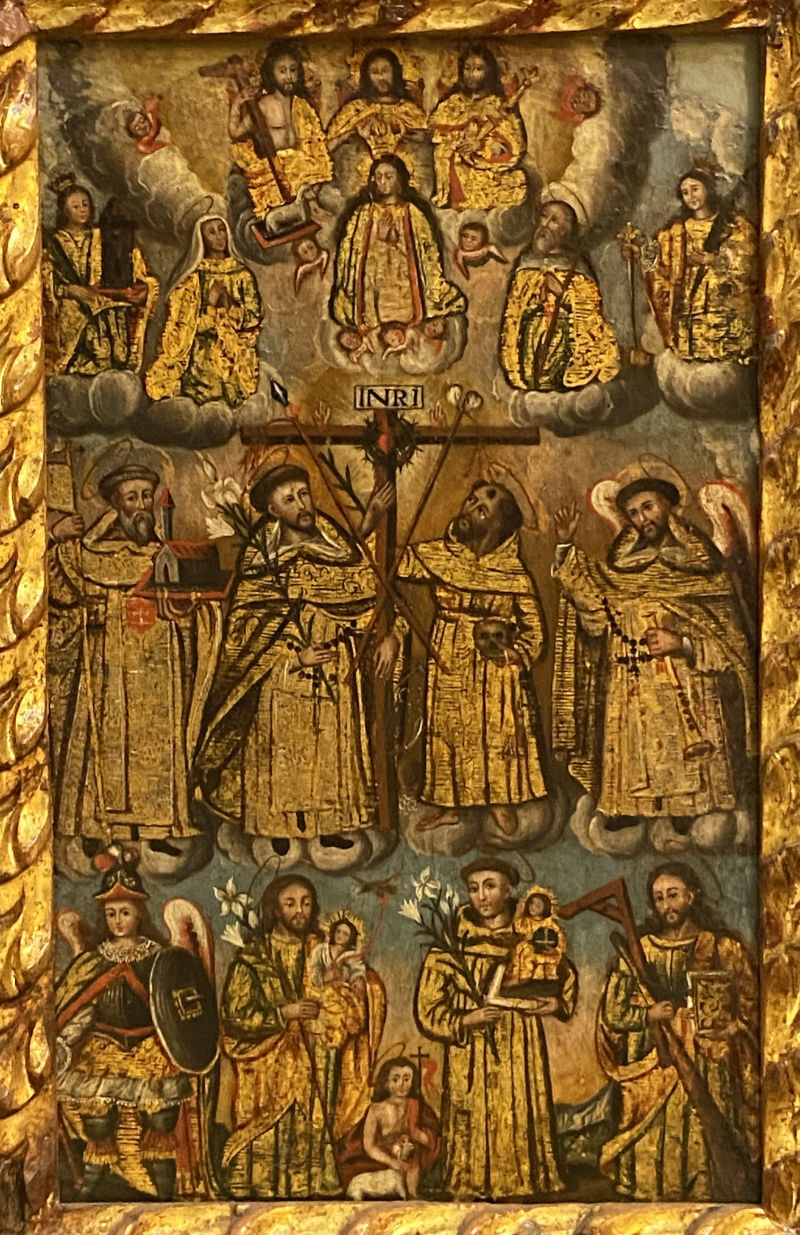 Anónimo cuzqueño, The Cross of the Passion with Saints, XVIII century
Anónimo cuzqueño, The Cross of the Passion with Saints, XVIII century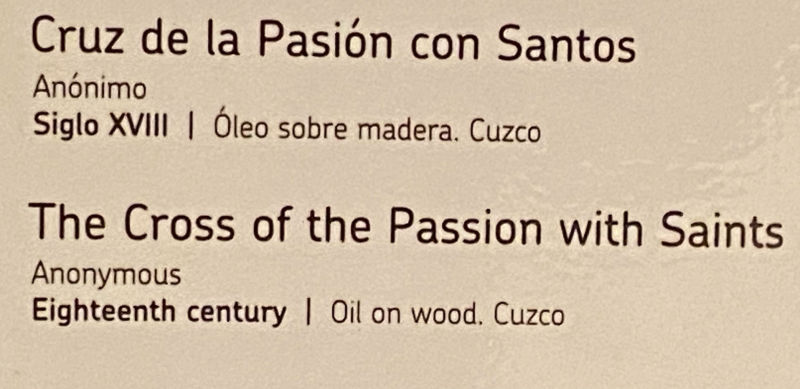 Original, Museo Pedro de Osma, Lima. Visited in 2023.
Original, Museo Pedro de Osma, Lima. Visited in 2023.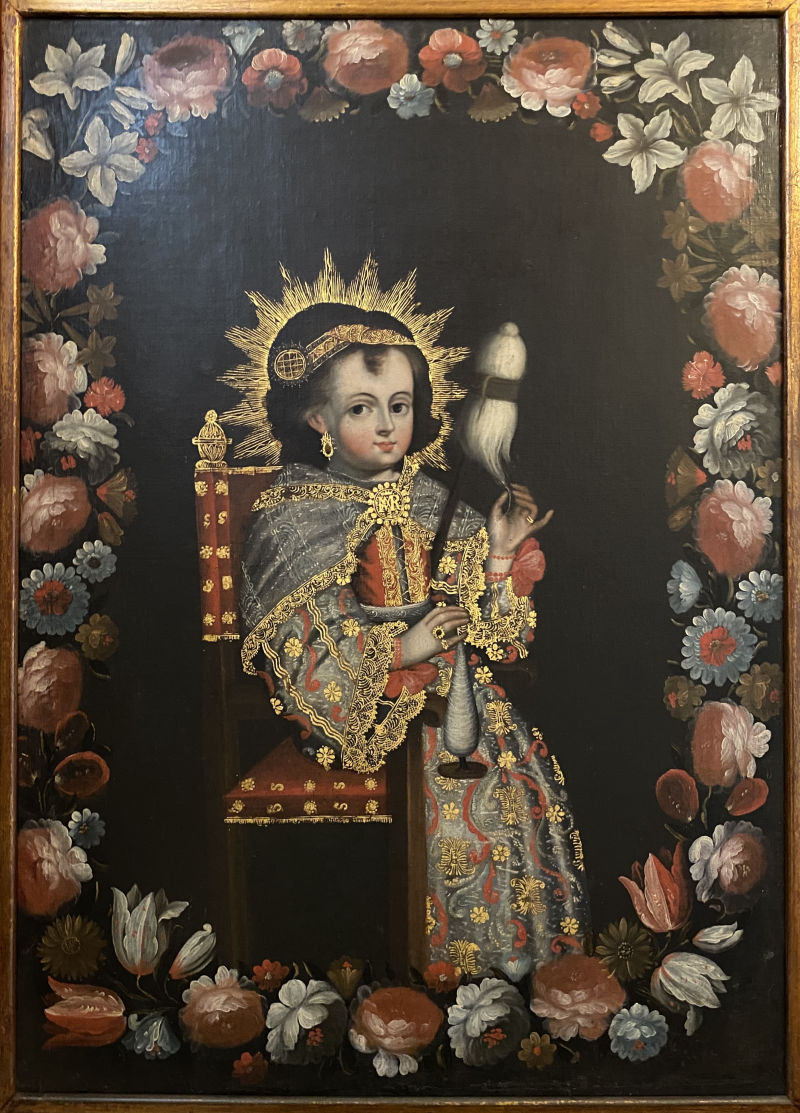 Anónimo cuzqueño, Girl Virgin weaving, Second third of the Eighteenth century
Anónimo cuzqueño, Girl Virgin weaving, Second third of the Eighteenth century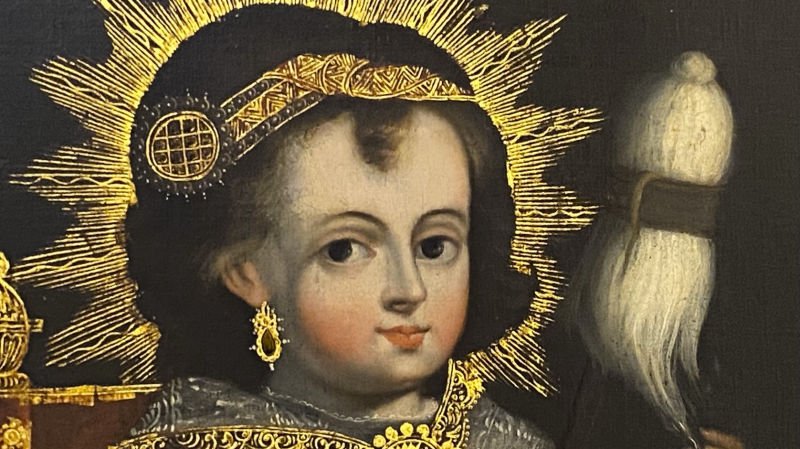 Original, Museo Pedro de Osma, Lima. Visited in 2023.
Original, Museo Pedro de Osma, Lima. Visited in 2023.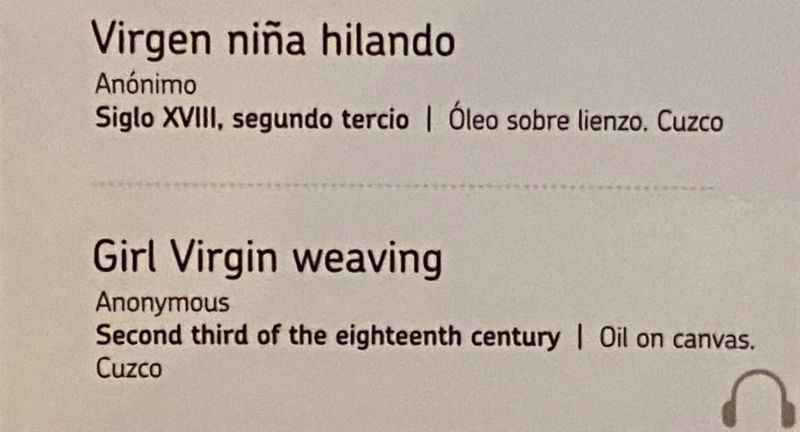 Anónimo cuzqueño, Girl Virgin weaving, Second third of the Eighteenth century
Anónimo cuzqueño, Girl Virgin weaving, Second third of the Eighteenth century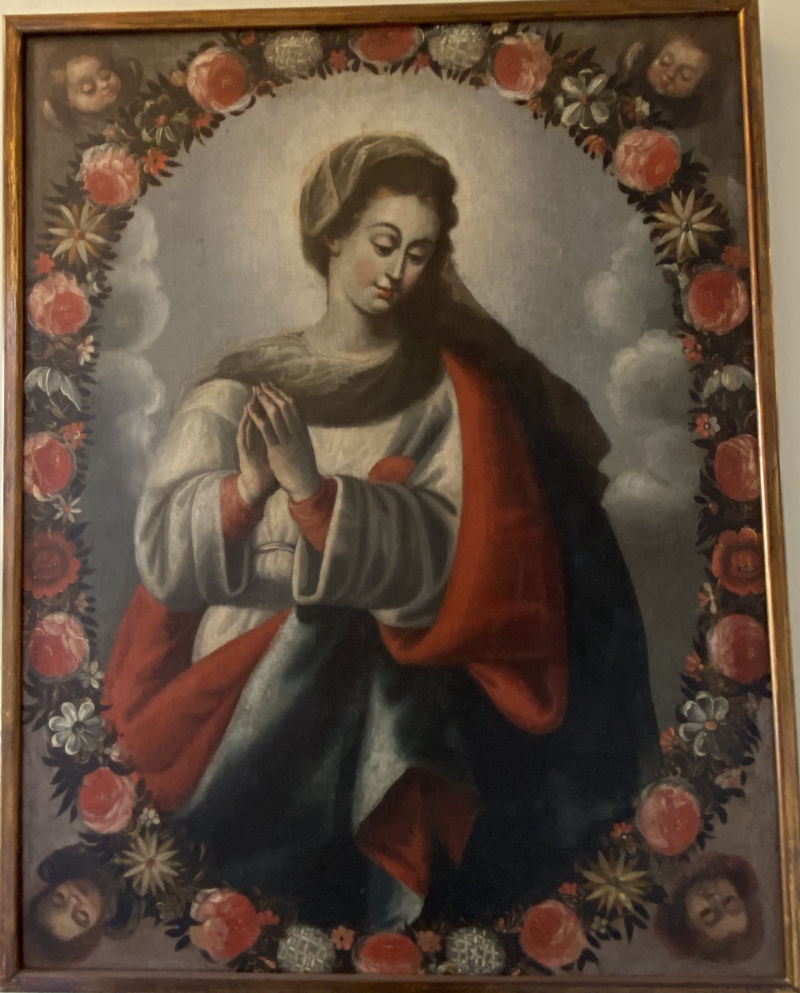 Anónimo cuzqueño, Immaculate Conception, 17th century
Anónimo cuzqueño, Immaculate Conception, 17th century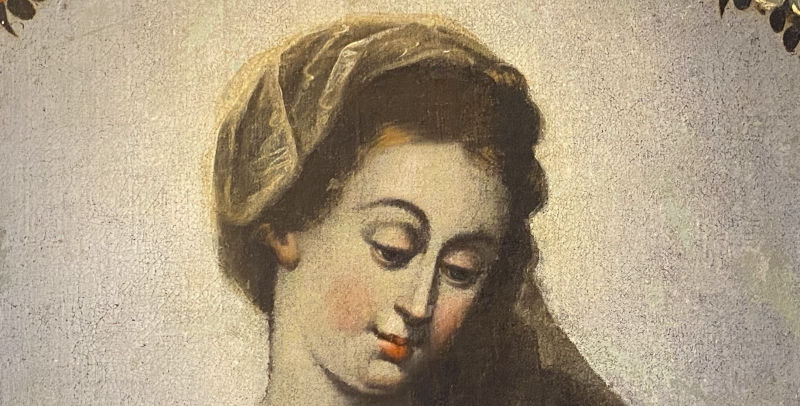 Original, Museo Pedro de Osma, Lima. Visited in 2023.
Original, Museo Pedro de Osma, Lima. Visited in 2023.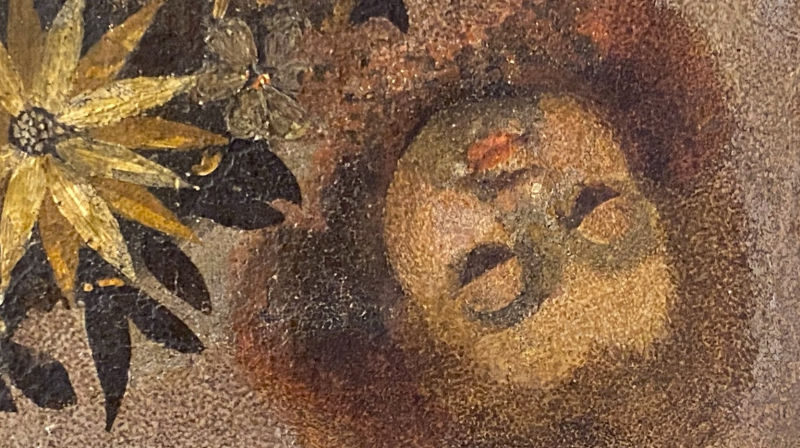 Anónimo cuzqueño, Immaculate Conception, 17th century
Anónimo cuzqueño, Immaculate Conception, 17th century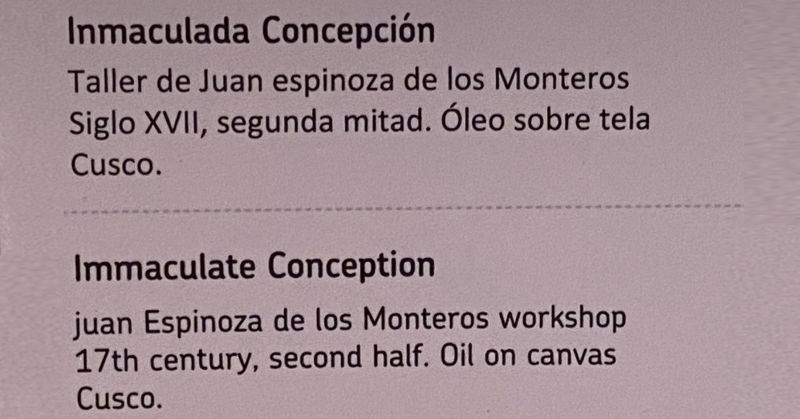 Anónimo cuzqueño, Immaculate Conception, 17th century
Anónimo cuzqueño, Immaculate Conception, 17th century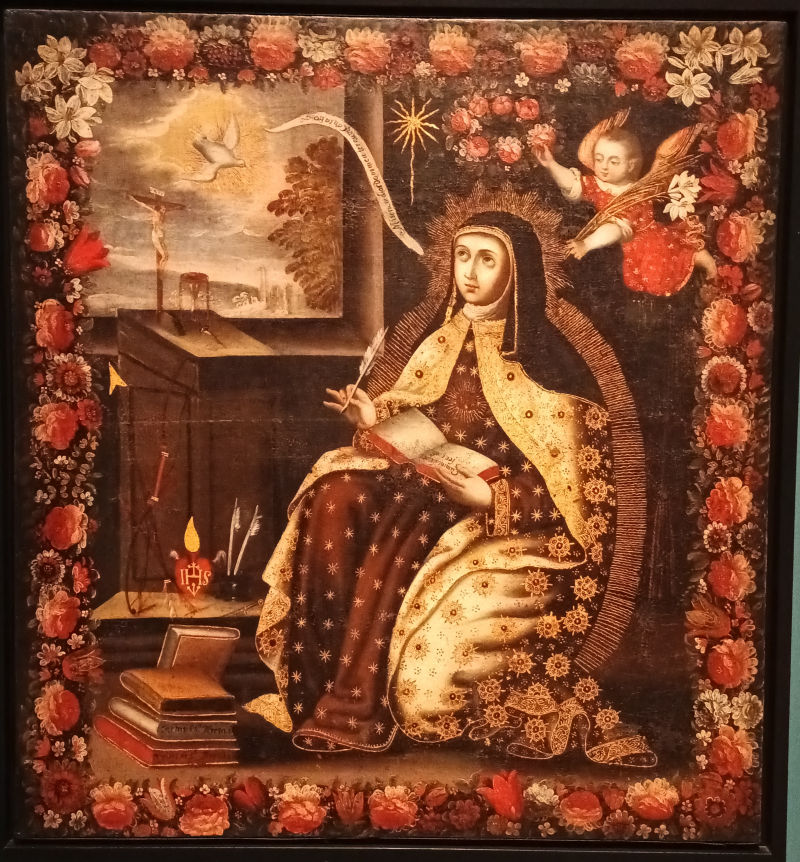 Anónimo cuzqueño, Saint Teresa of Jesus, ca. 1700-1730
Anónimo cuzqueño, Saint Teresa of Jesus, ca. 1700-1730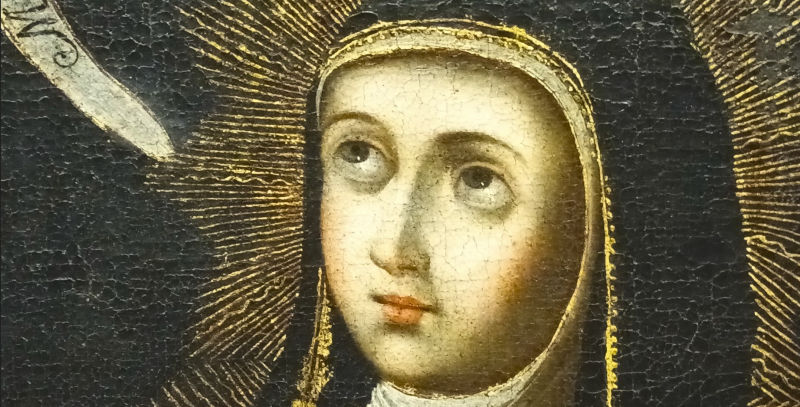
Original, Museo de Arte de Lima, Peru. Visited in 2023.
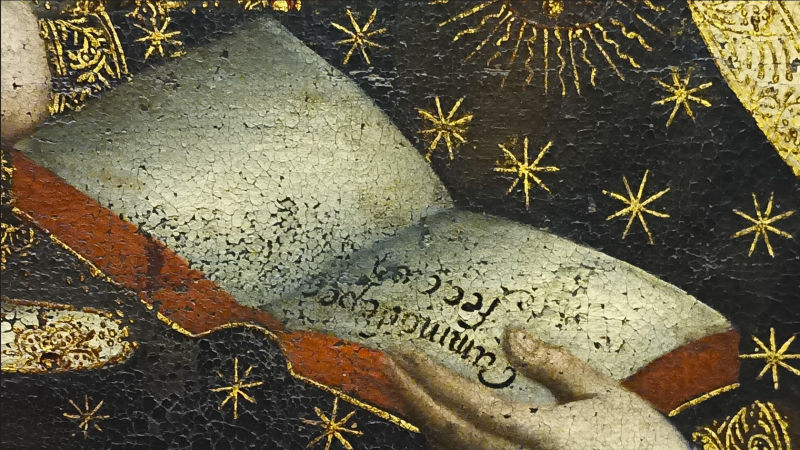 Anónimo cuzqueño, Saint Teresa of Jesus, ca. 1700-1730
Anónimo cuzqueño, Saint Teresa of Jesus, ca. 1700-1730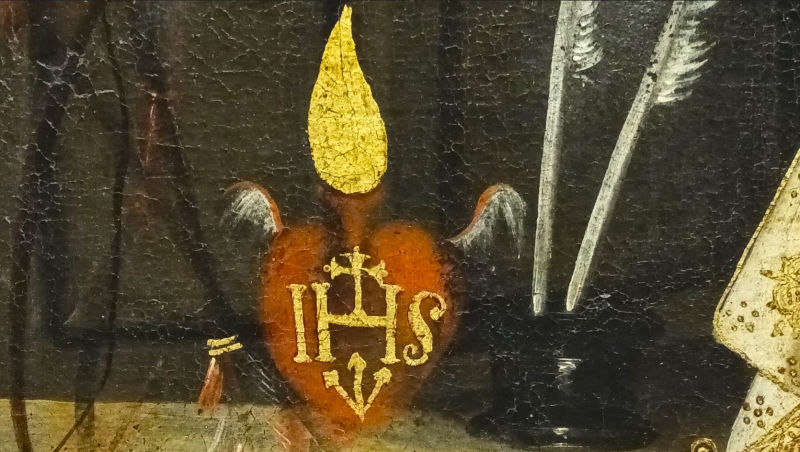 Anónimo cuzqueño, Saint Teresa of Jesus, ca. 1700-1730
Anónimo cuzqueño, Saint Teresa of Jesus, ca. 1700-1730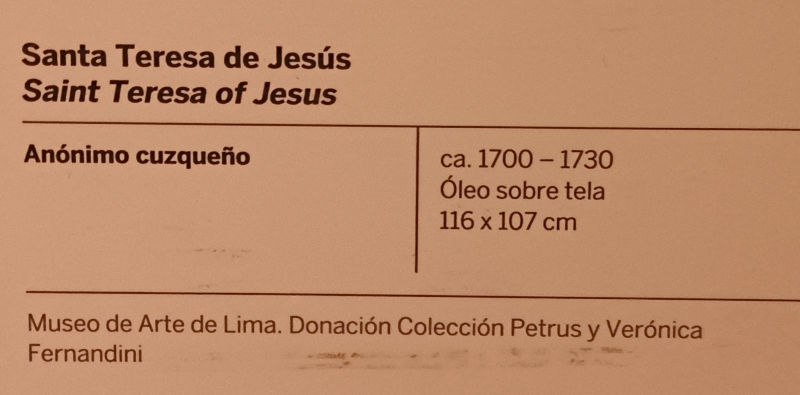 Anónimo cuzqueño, Saint Teresa of Jesus, ca. 1700-1730
Anónimo cuzqueño, Saint Teresa of Jesus, ca. 1700-1730